
 his section is devoted to puzzles having similar pieces which must be re-arranged, or permuted,
often as groups,
in order to progress from a randomized (mixed or scrambled) state to a solved state.
This group forms a sub-class of the Sequential Movement puzzles.
The "Twisty Polyhedra" comprise a large and growing sub-class.
Many of these puzzles are mass-produced (or hand-crafted modifications to a mass-produced puzzle),
colorful, and made of plastic.
Every puzzler knows about Rubik's Cube, the quintessential representative of this group.
These puzzles are in the form of a Platonic or an Archimedean solid, "sliced" along various planes to permit
certain axes of rotation of pieces or groups of pieces.
They contain clever internal mechanisms
which keep the moving pieces coherent.
(You can see many patents showing the mechanisms at
Joshua Bell's site.)
A lot of group-theory mathematics applies to this category.
Useful sequences of moves are known as "operators" or "algorithms."
his section is devoted to puzzles having similar pieces which must be re-arranged, or permuted,
often as groups,
in order to progress from a randomized (mixed or scrambled) state to a solved state.
This group forms a sub-class of the Sequential Movement puzzles.
The "Twisty Polyhedra" comprise a large and growing sub-class.
Many of these puzzles are mass-produced (or hand-crafted modifications to a mass-produced puzzle),
colorful, and made of plastic.
Every puzzler knows about Rubik's Cube, the quintessential representative of this group.
These puzzles are in the form of a Platonic or an Archimedean solid, "sliced" along various planes to permit
certain axes of rotation of pieces or groups of pieces.
They contain clever internal mechanisms
which keep the moving pieces coherent.
(You can see many patents showing the mechanisms at
Joshua Bell's site.)
A lot of group-theory mathematics applies to this category.
Useful sequences of moves are known as "operators" or "algorithms."
The illustration below shows many (not all!) of the twisty polyhedra (and some non-polyhedral) puzzles that are now or have in the past been mass-produced and commercially available.
Starting in 2010, a new wave of twisty puzzles hit the market, and many custom designs made it into mass production. More continue to arrive and it is impossible to keep up. Some puzzles are members of a series exploring variations on a theme - e.g. the "Planets" series of Crazy cubes and dodecahedrons, various bandaged cubes, and the "Bermuda" cubes - I have not attempted to show all the series members. Also, there are many different brands and types of the conventional face-turning cubes, including speed cubes, which often turn better than the Rubik's brand version. Usually the mechanical differences are not apparent in photos. I have also not attempted to show the many shape extensions of the FT cubes, including the "Crystal" shapes, nor all the 2x2x2 heads and objects. Newcomers to twisty collecting have asked for a short list of essential puzzles, and many TP forum members have provided guidance. In the illustration below, I have identified 10 fundamental puzzles most collectors feel every twisty collection should contain. Based on collating various folks' recommendations, I have also identified a further 33 puzzles to extend a good collection. Of course, you eventually have to have them all, right?


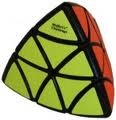
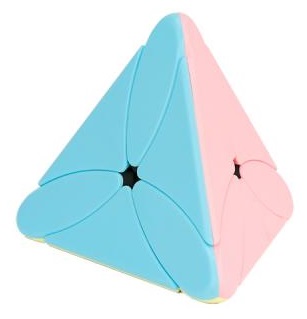
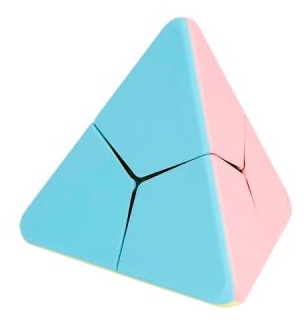
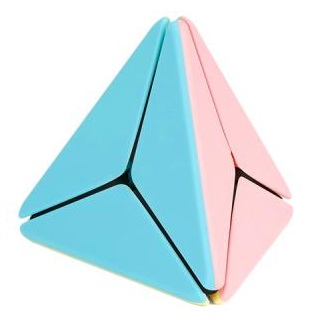

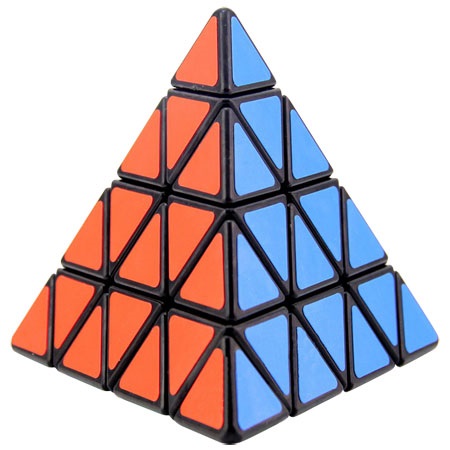

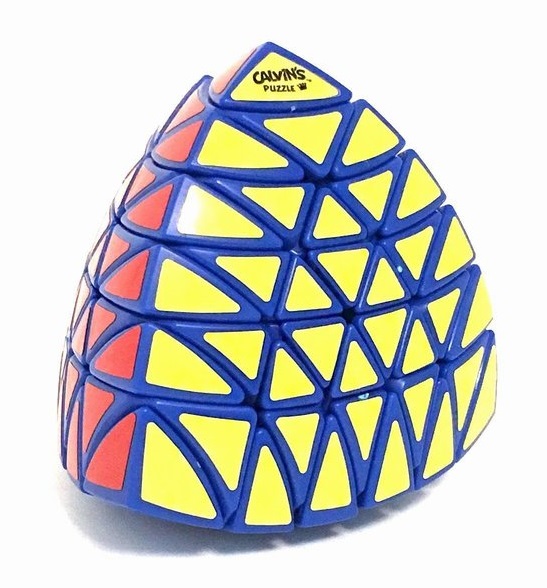
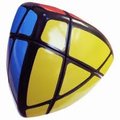
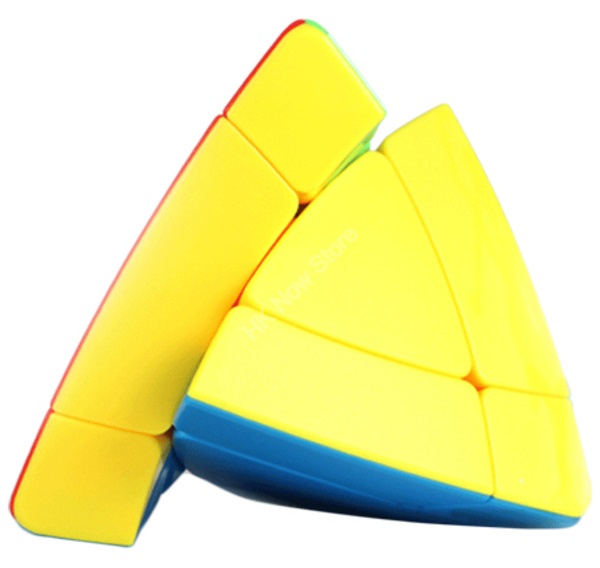

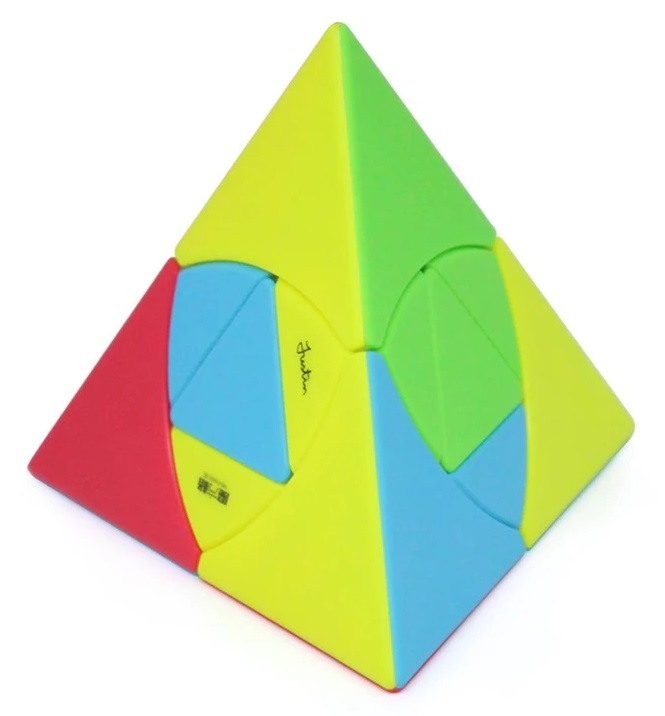
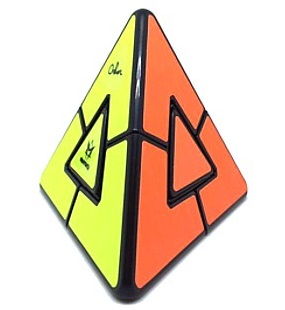
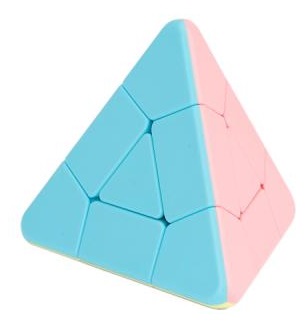
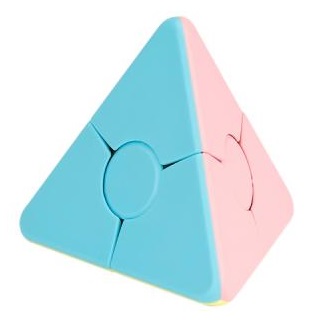
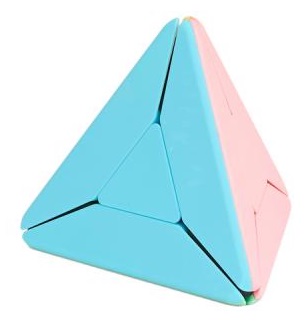

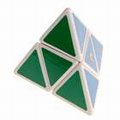

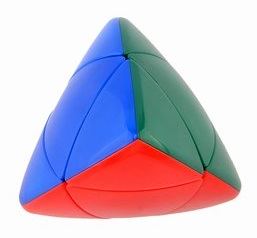
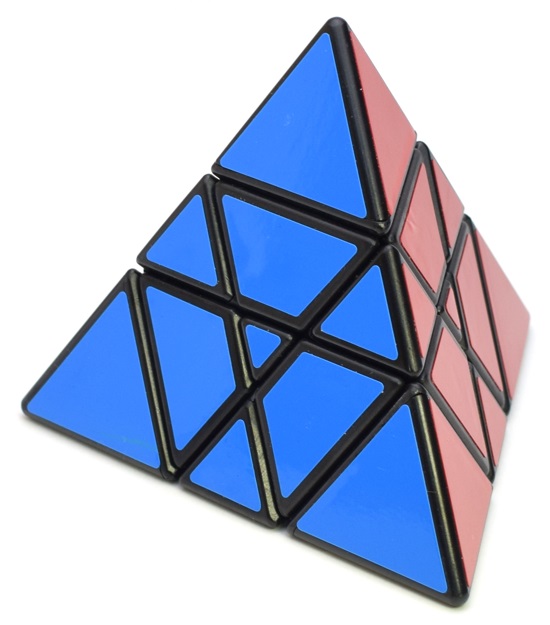

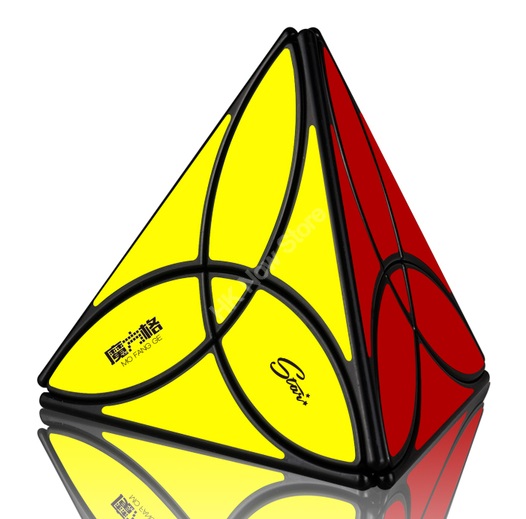
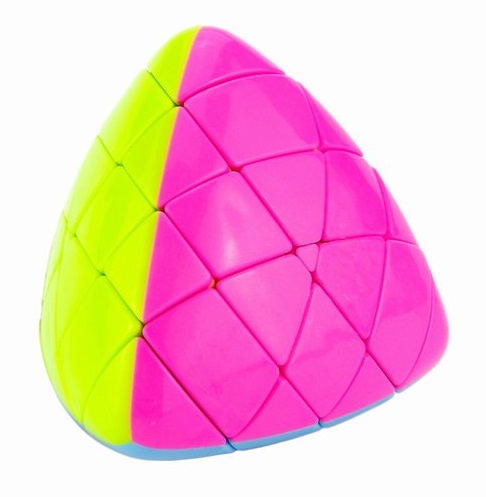

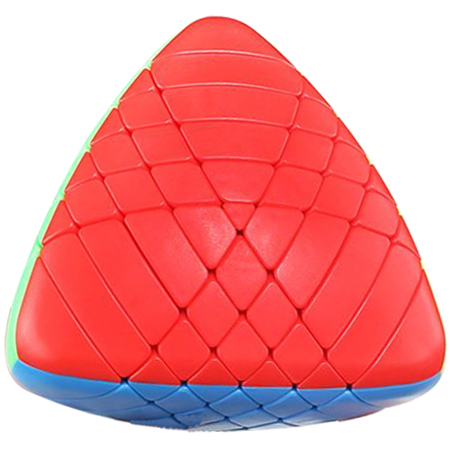
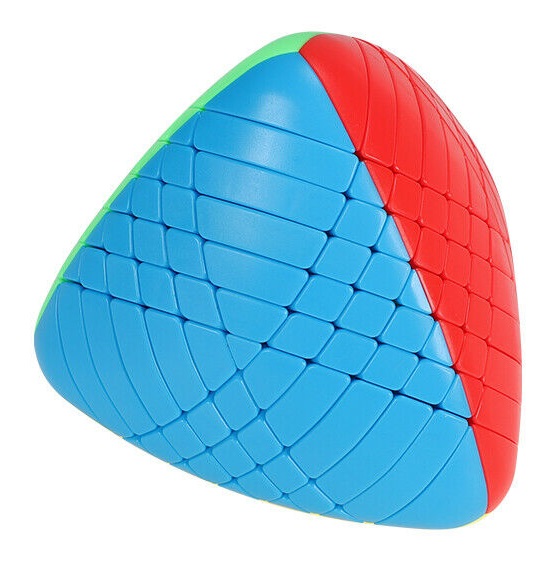
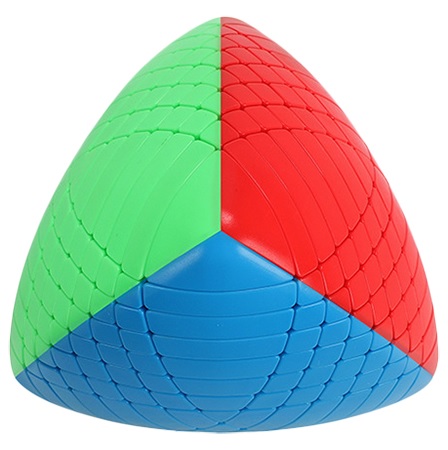





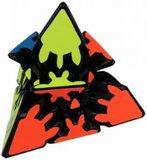
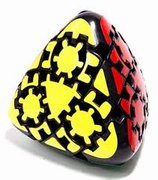
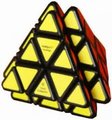
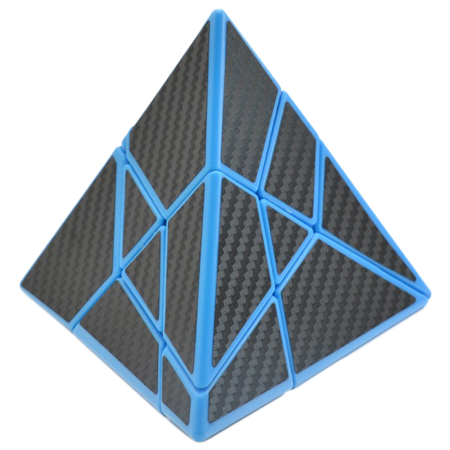
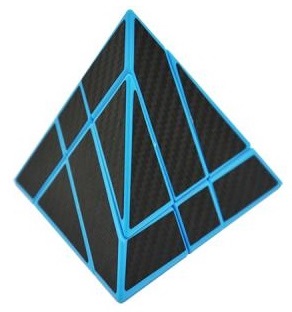
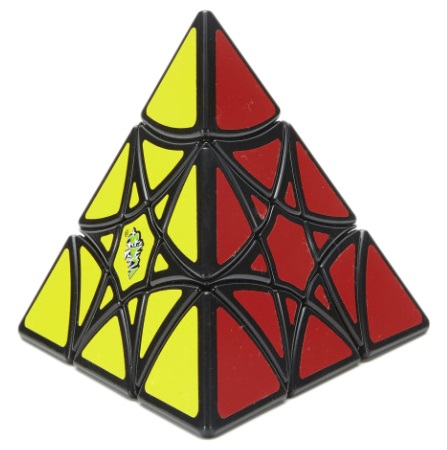
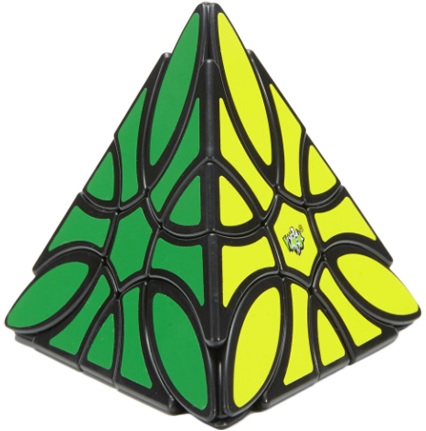
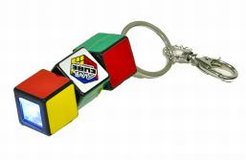
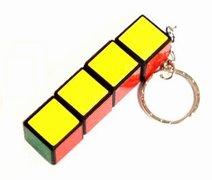
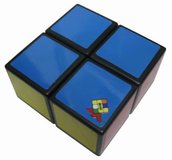
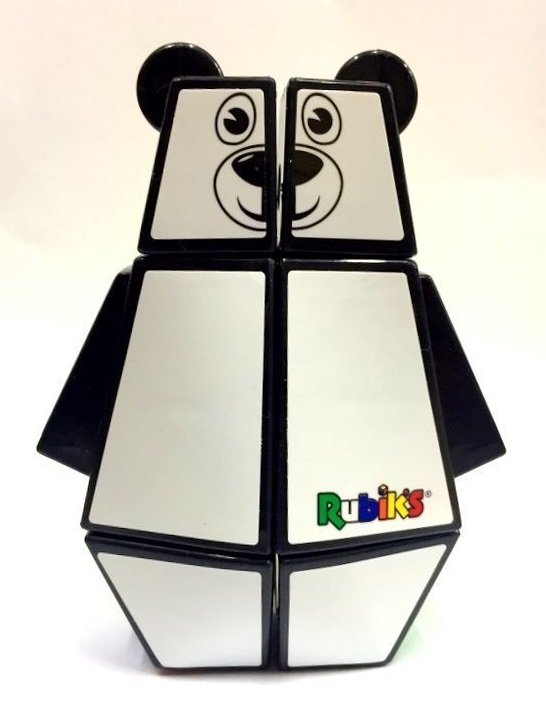
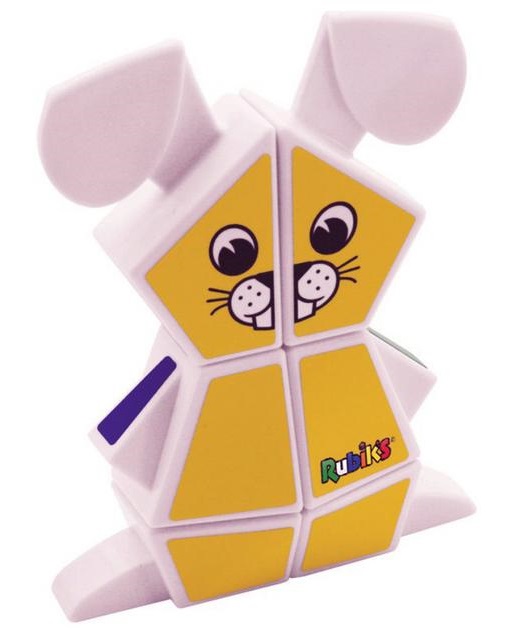

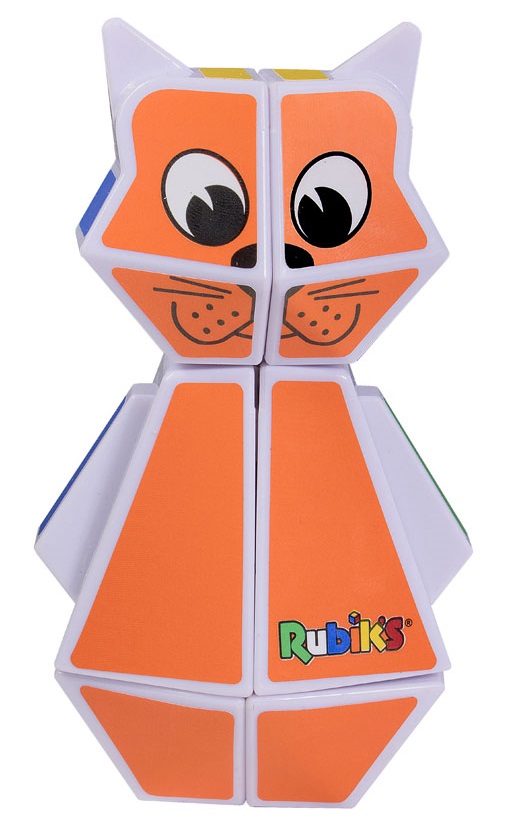
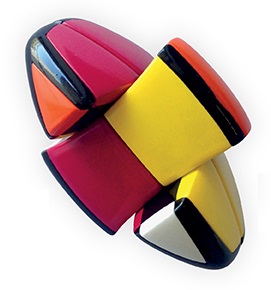
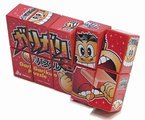
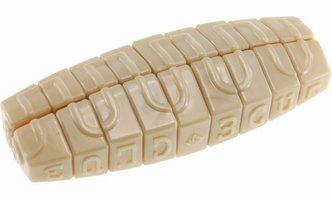
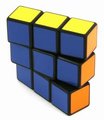
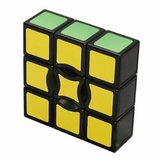
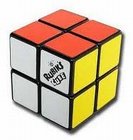
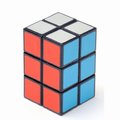
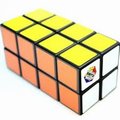
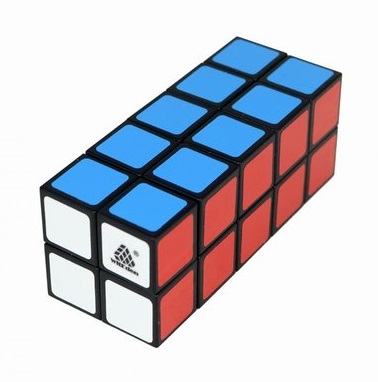

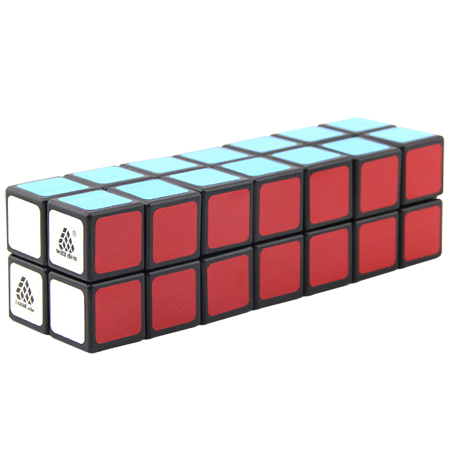


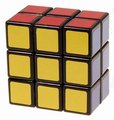
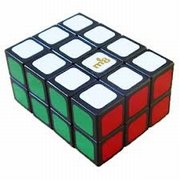
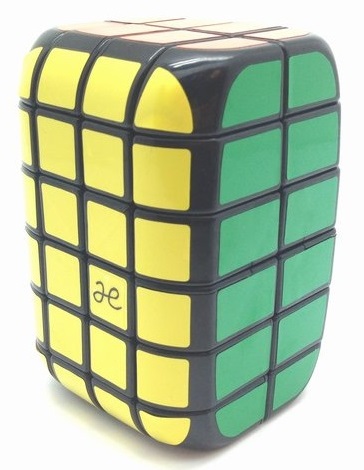

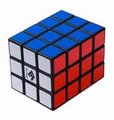
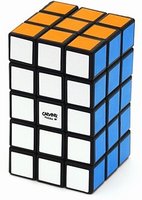


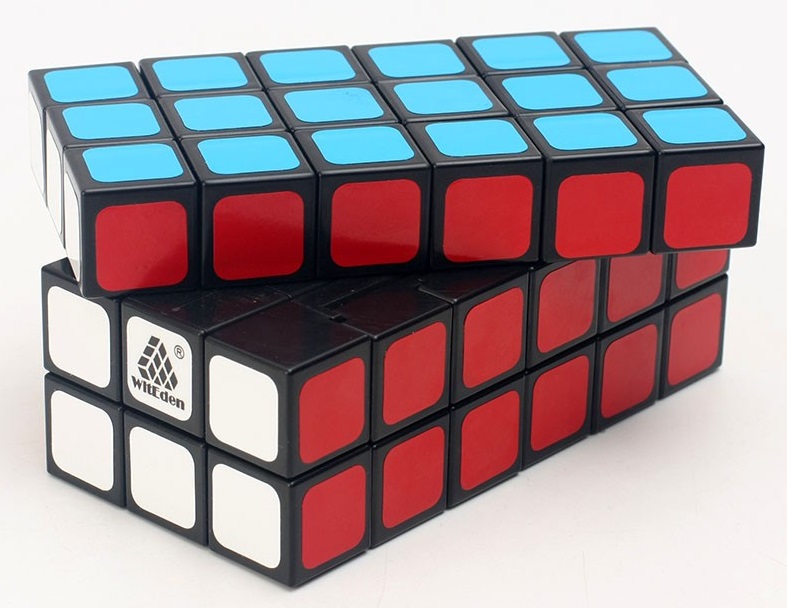
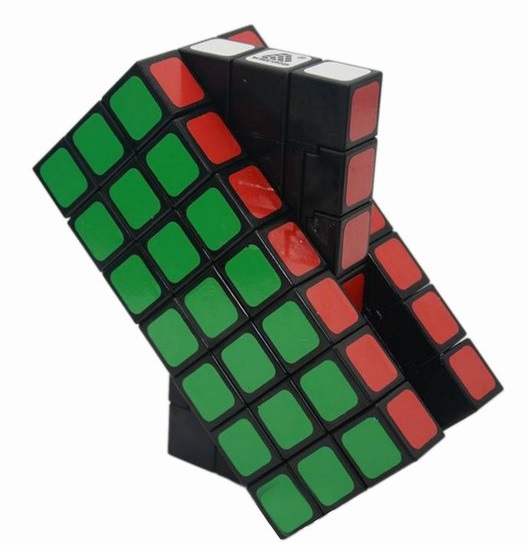
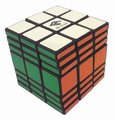
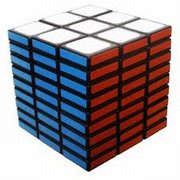
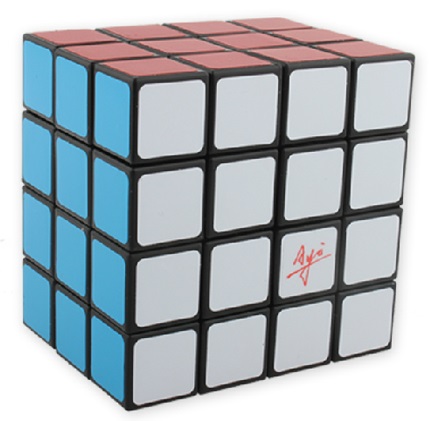


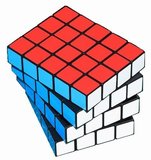
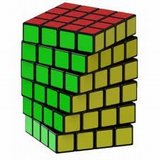
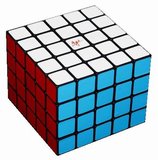



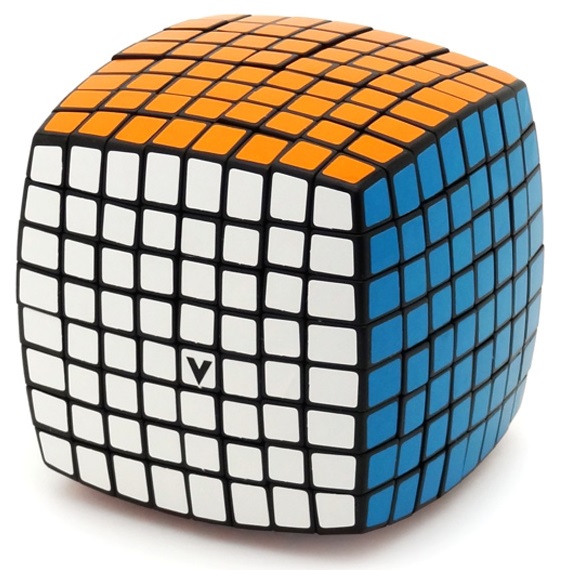
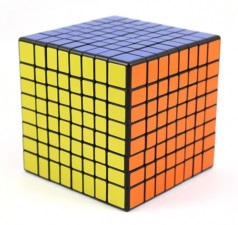
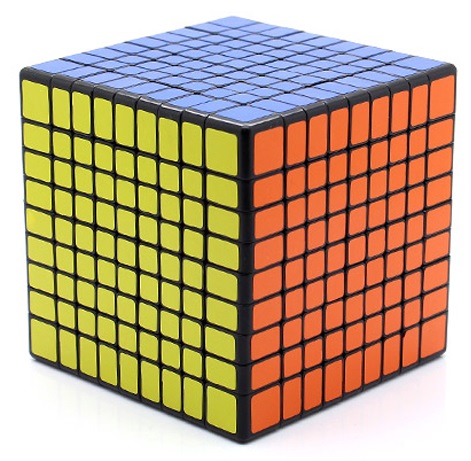
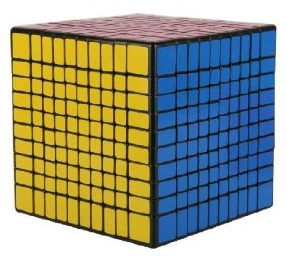
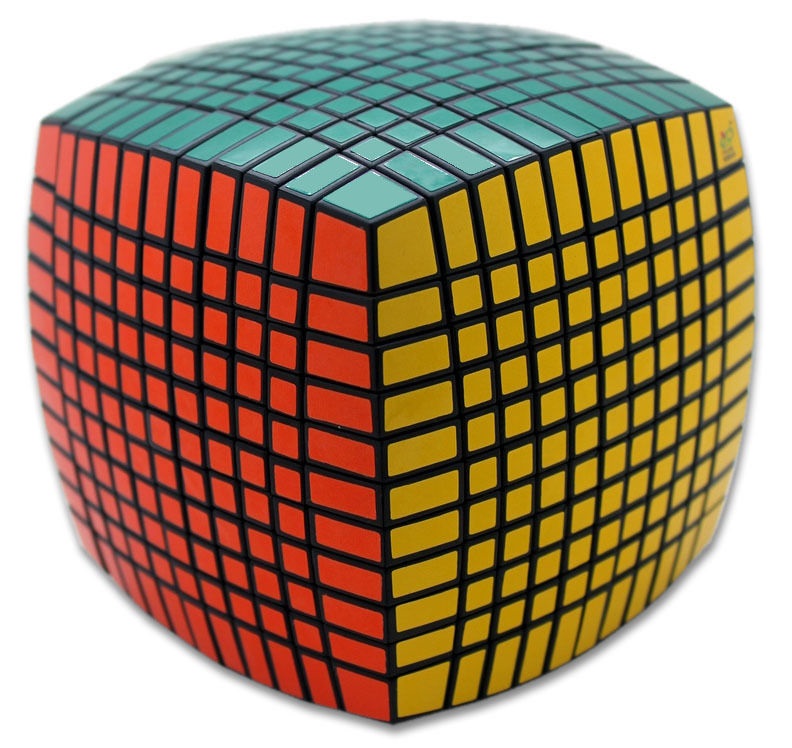
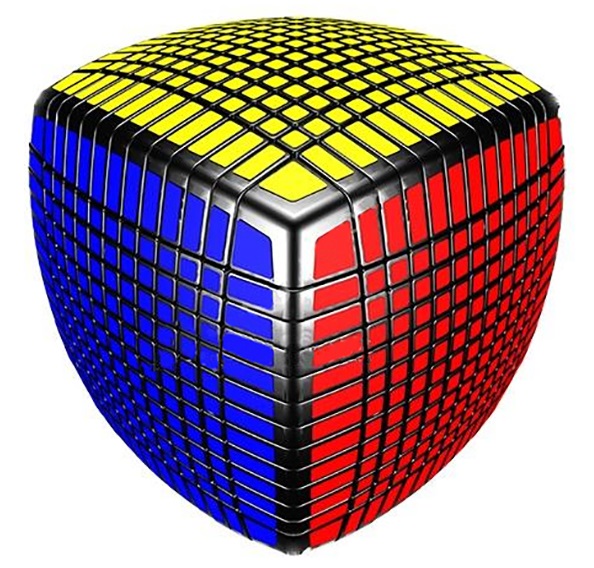

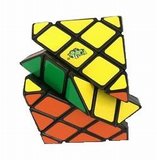
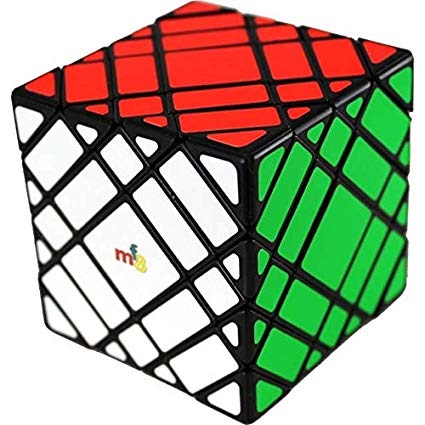
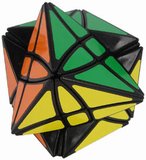

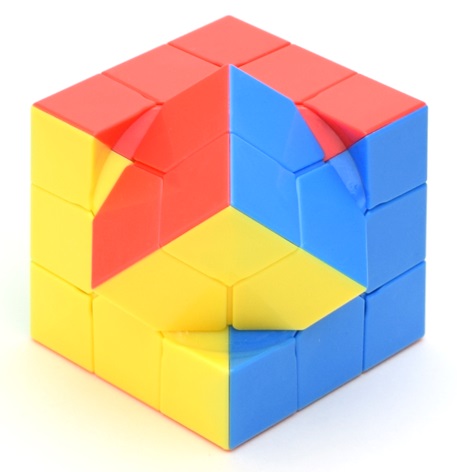
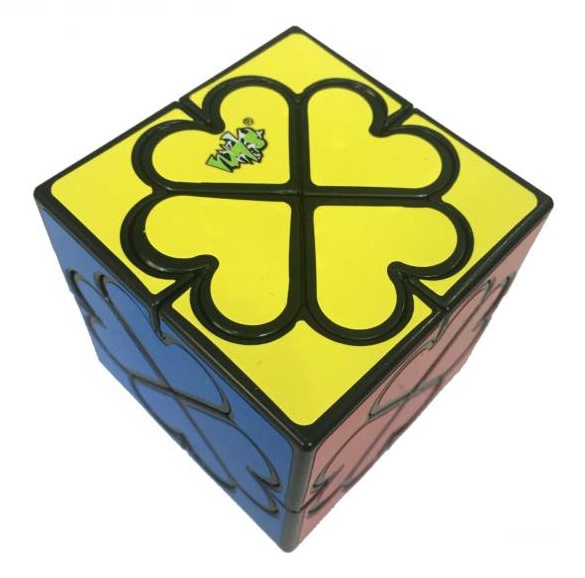
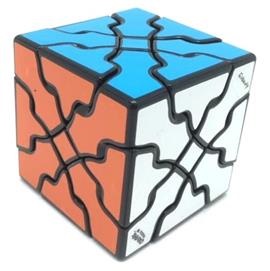
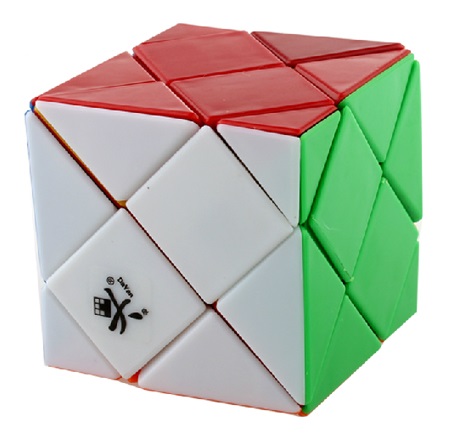
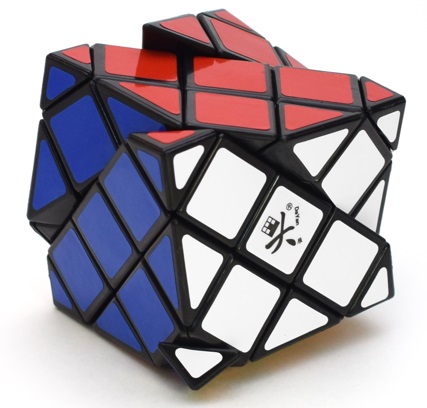
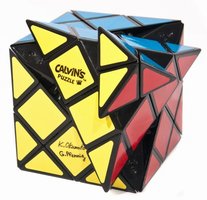

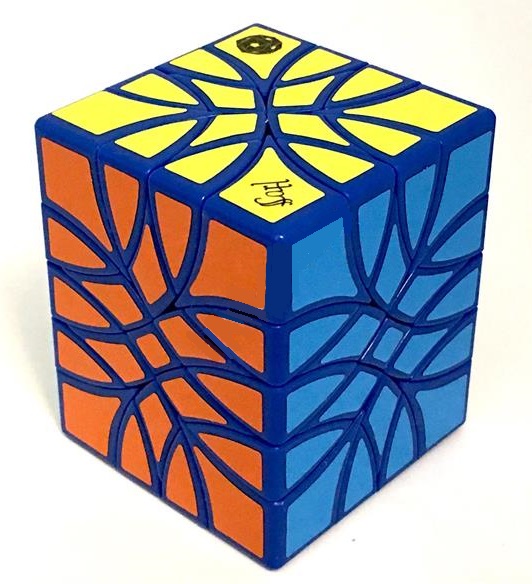
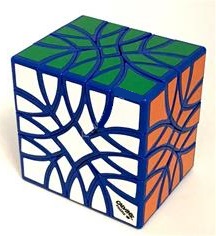
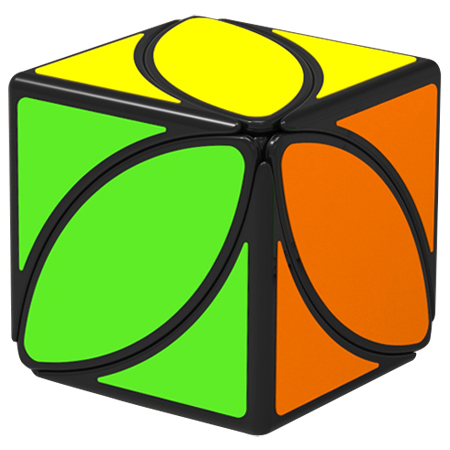



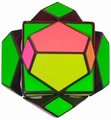
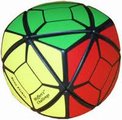
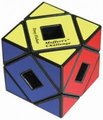
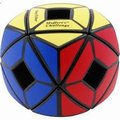
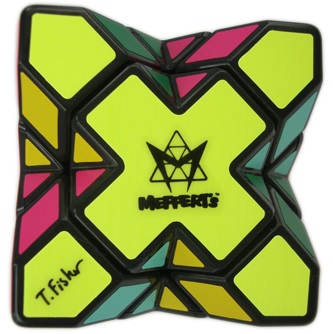
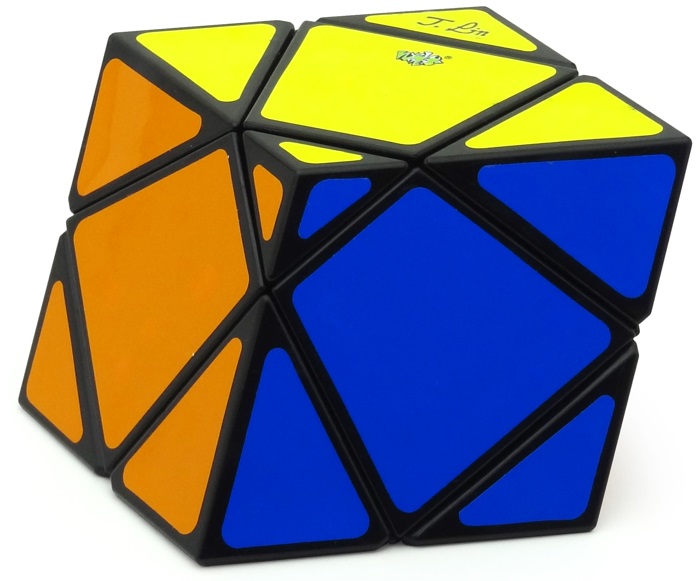
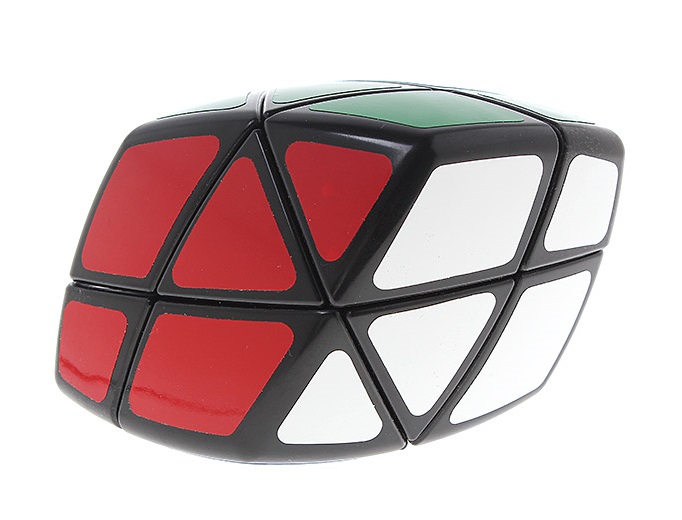
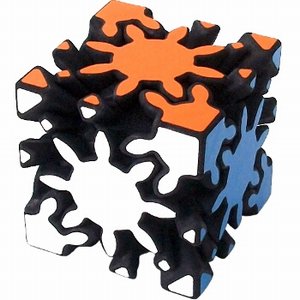
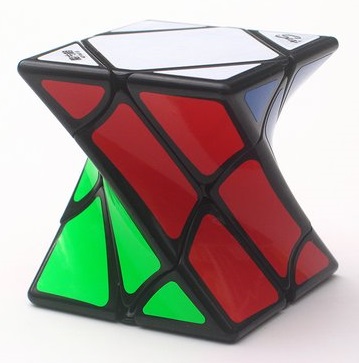

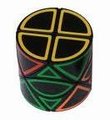
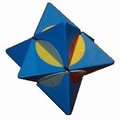
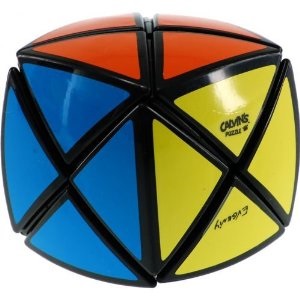
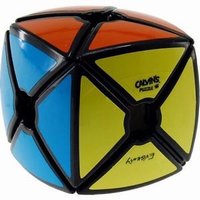

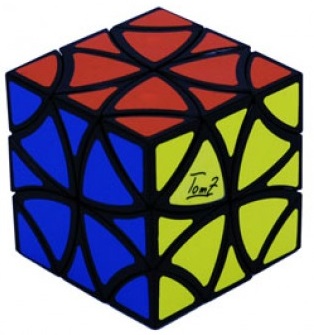
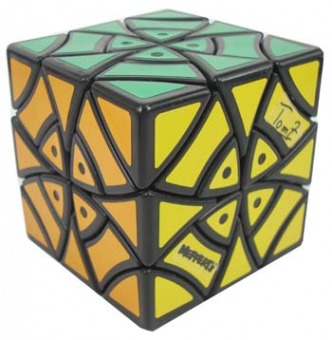

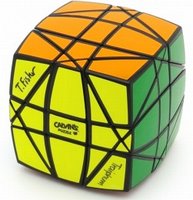
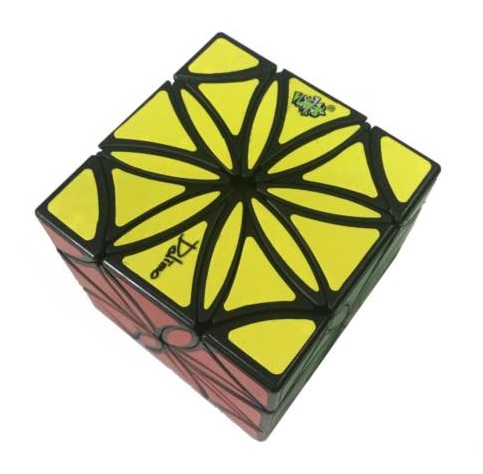
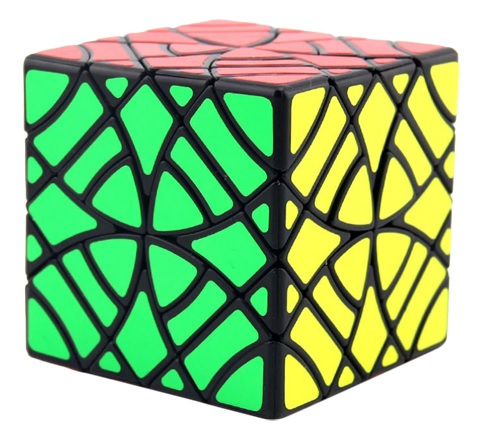
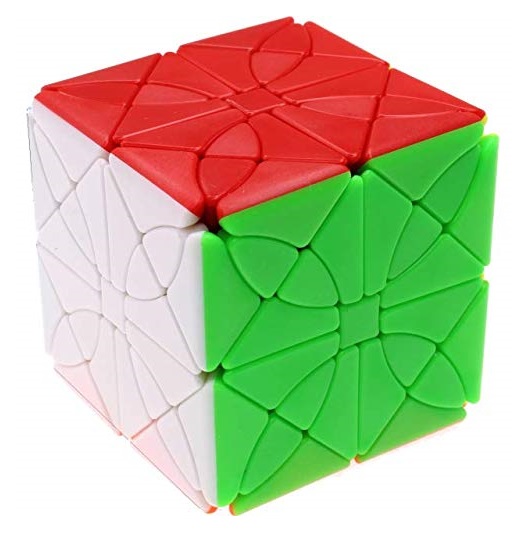
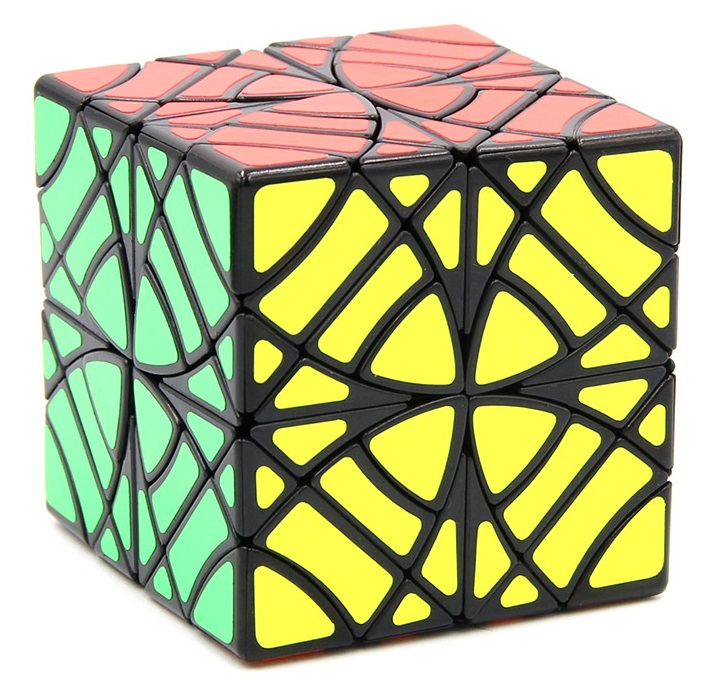

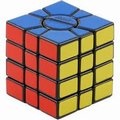
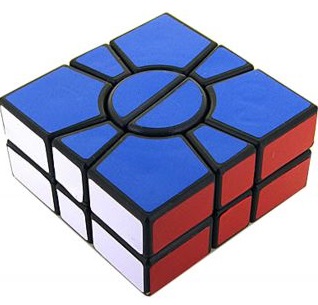
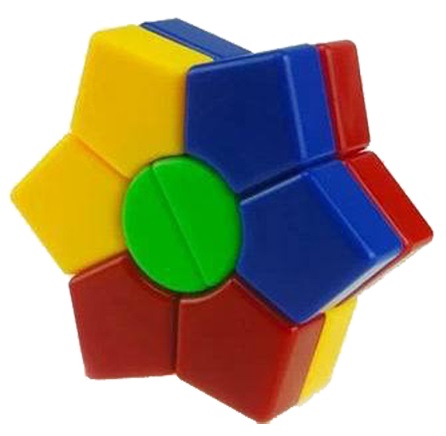
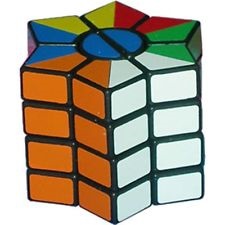
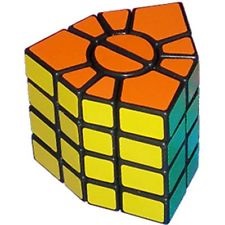

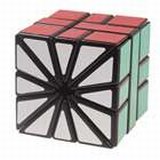

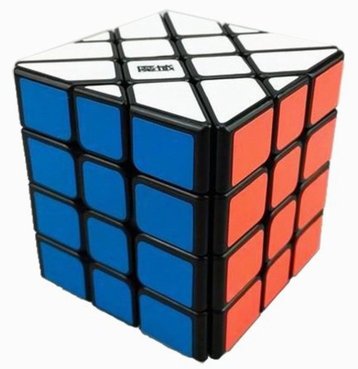
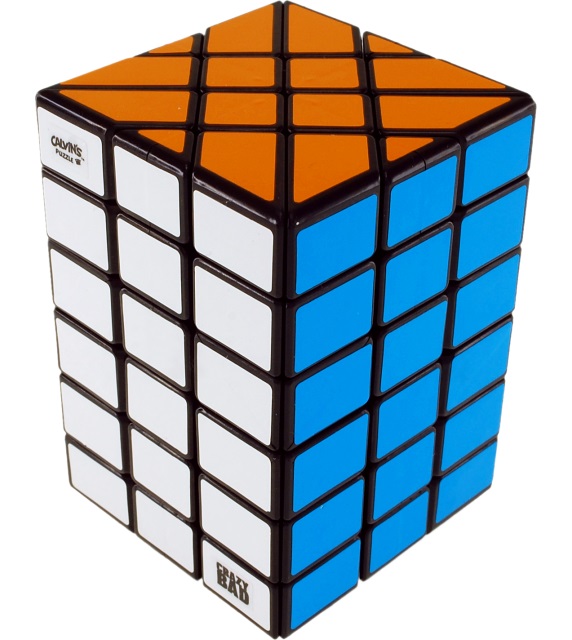





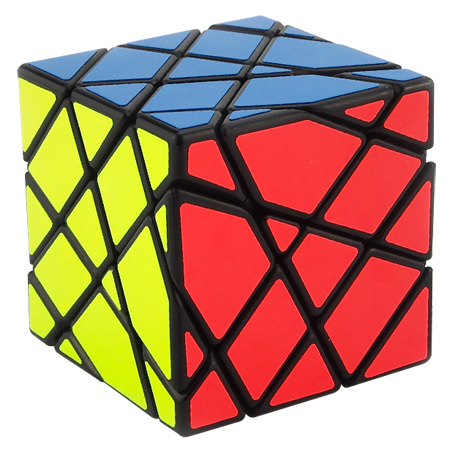
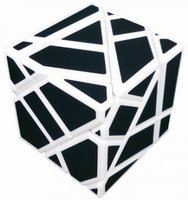
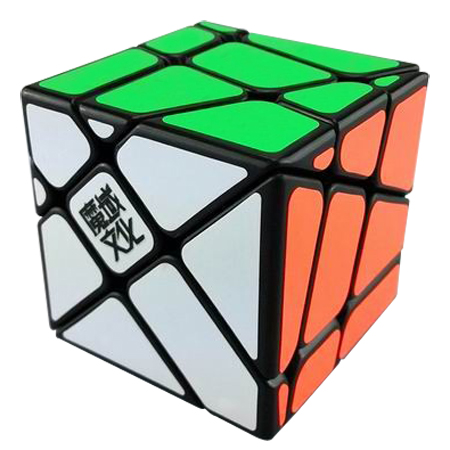

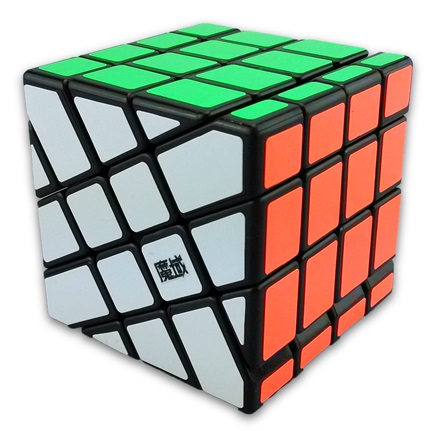
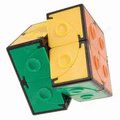
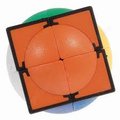
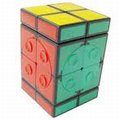
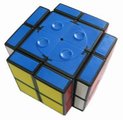
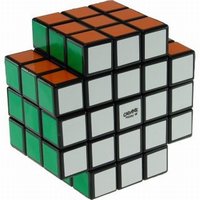
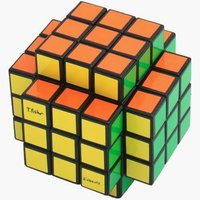

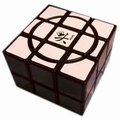
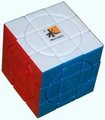
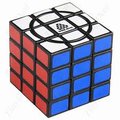
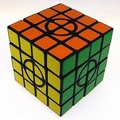
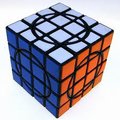
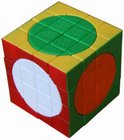




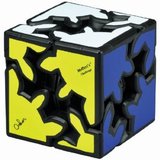
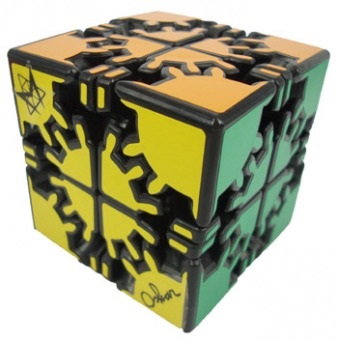

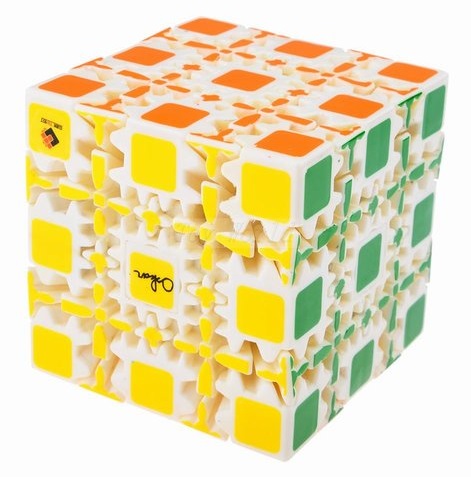
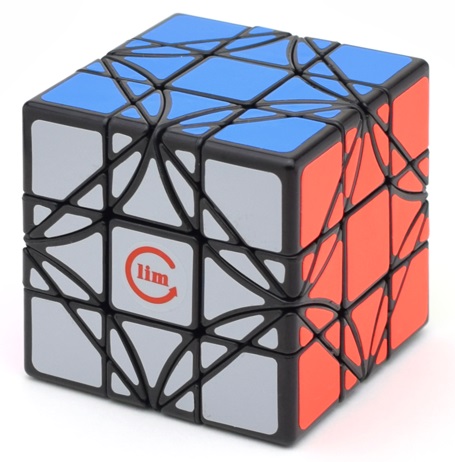
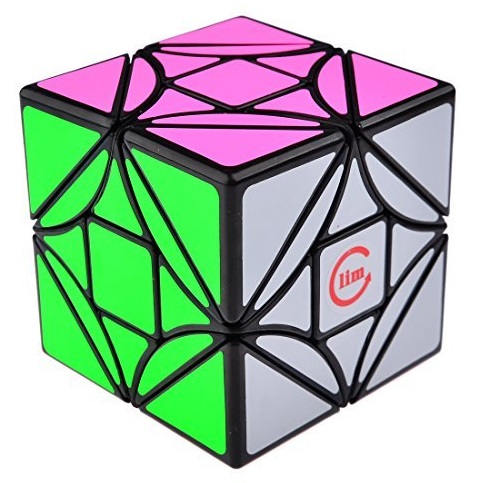
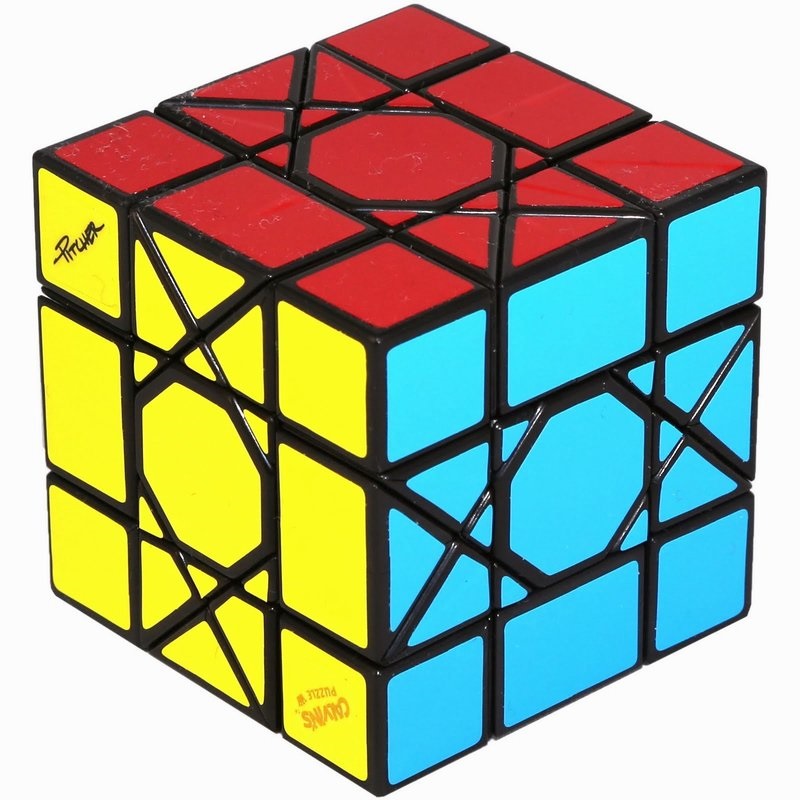


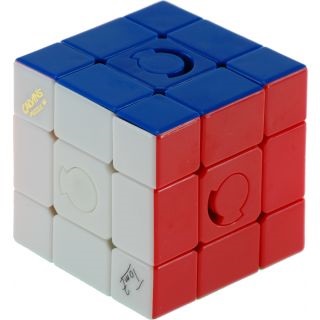

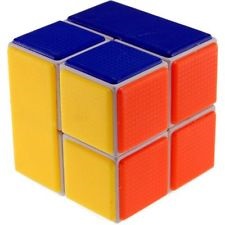
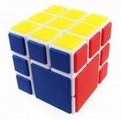
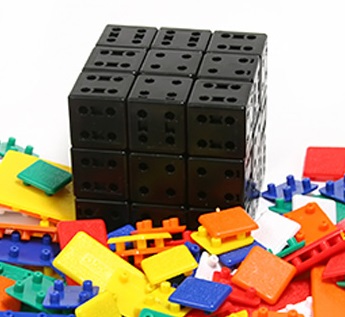
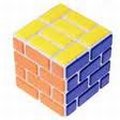
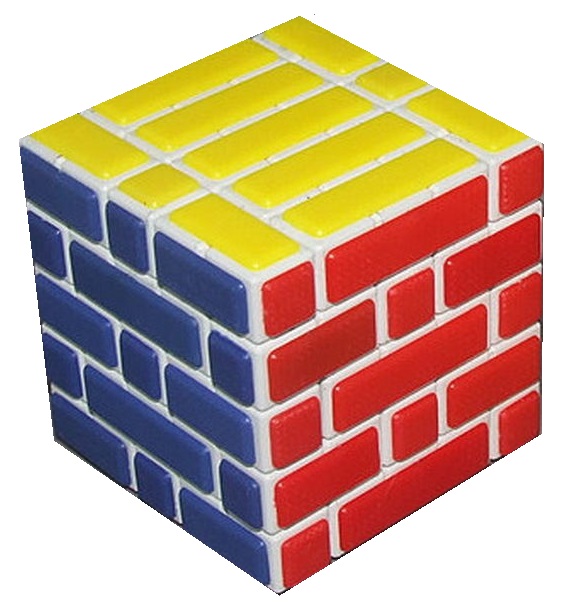
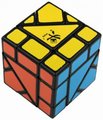

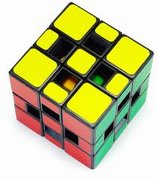
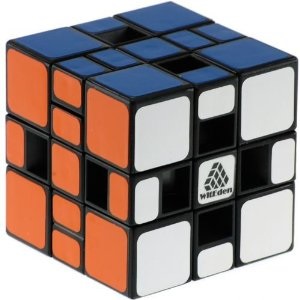
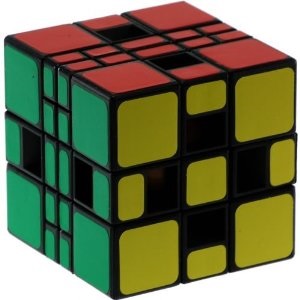
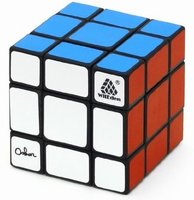
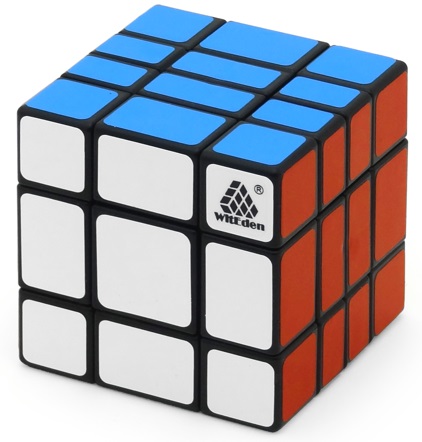
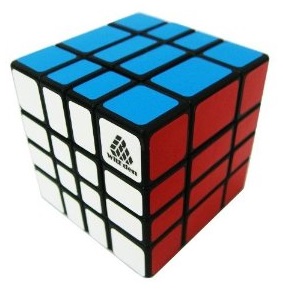

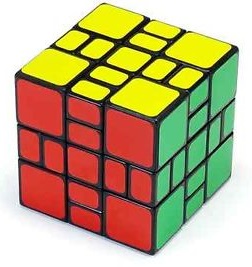
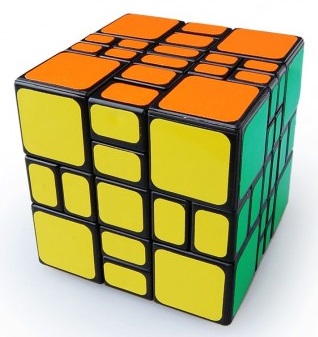
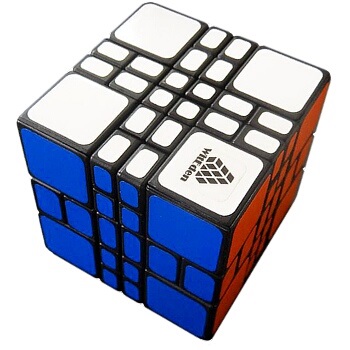
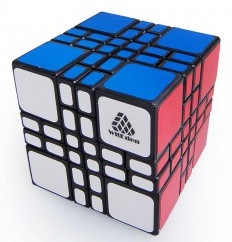
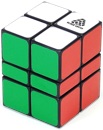
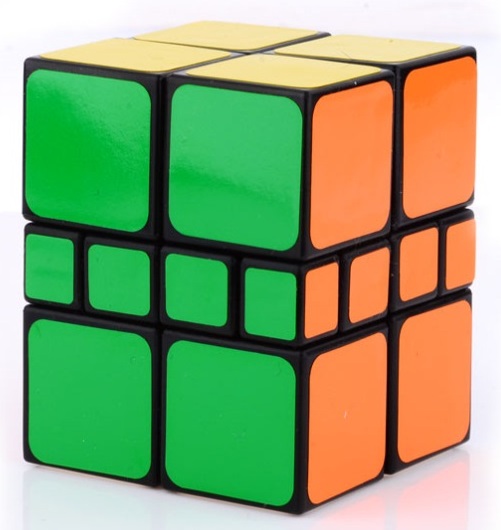
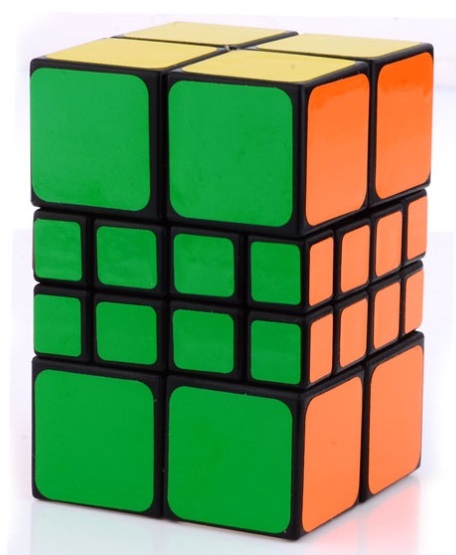

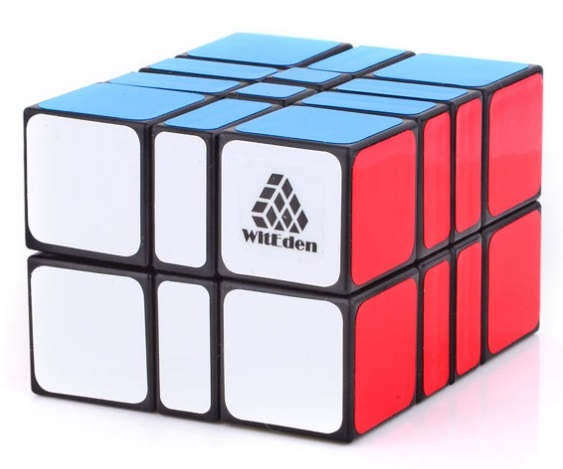
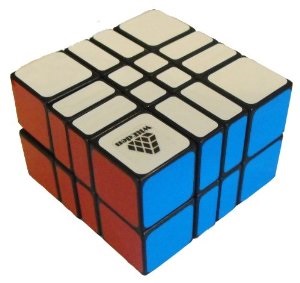

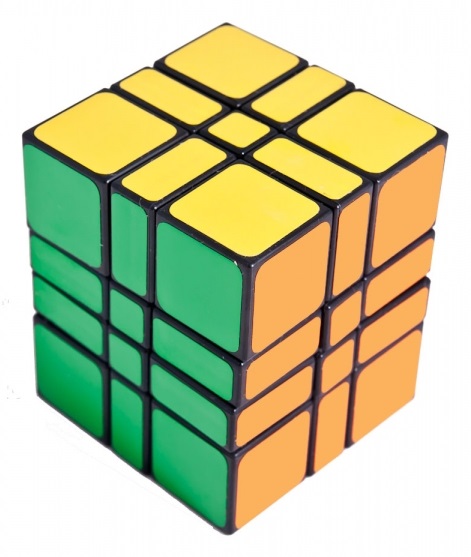
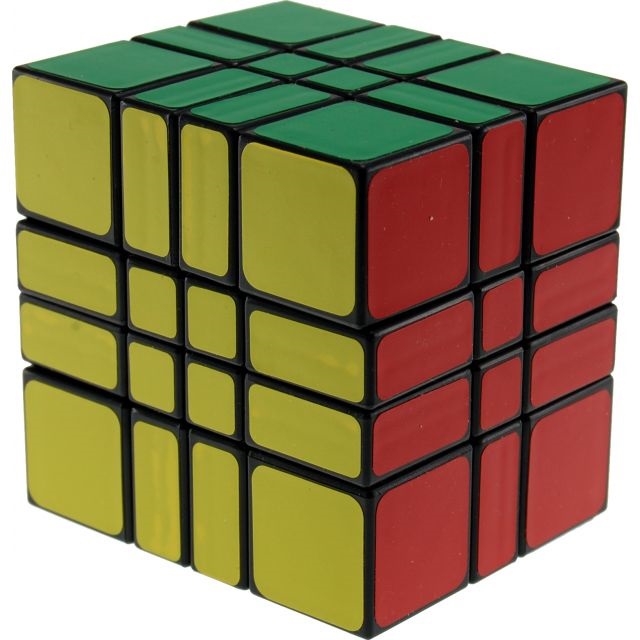
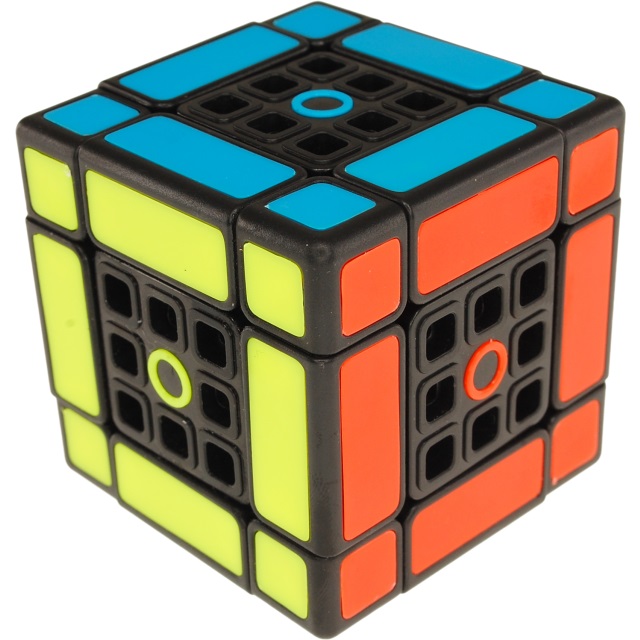
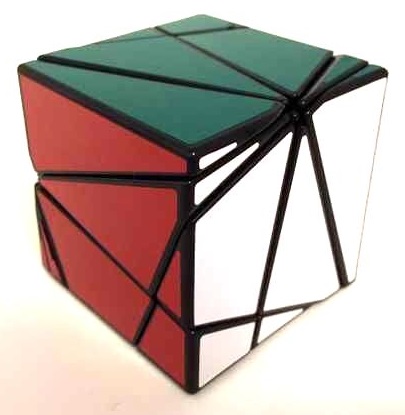
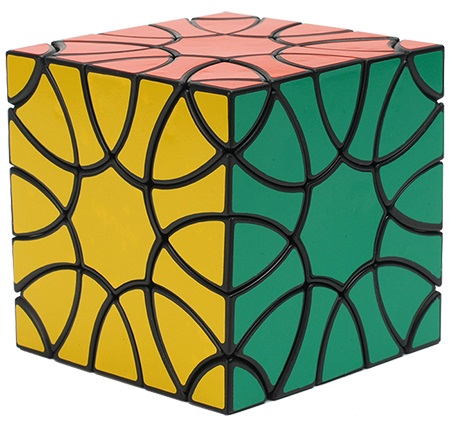
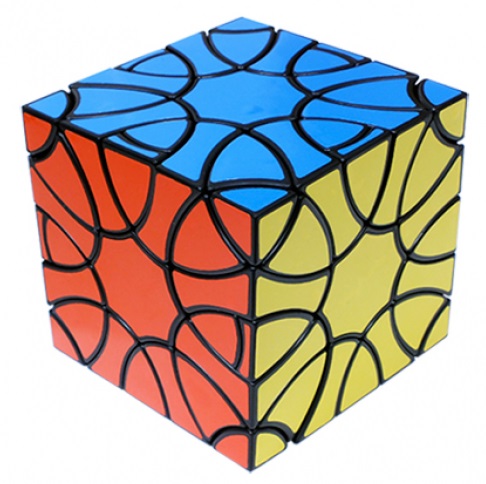
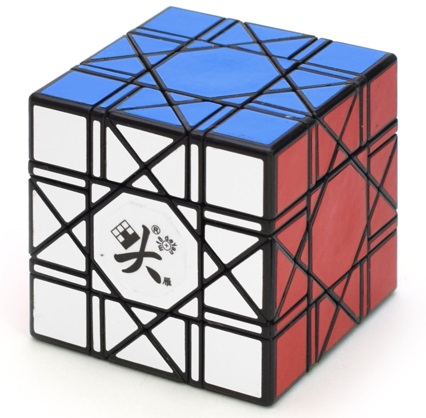

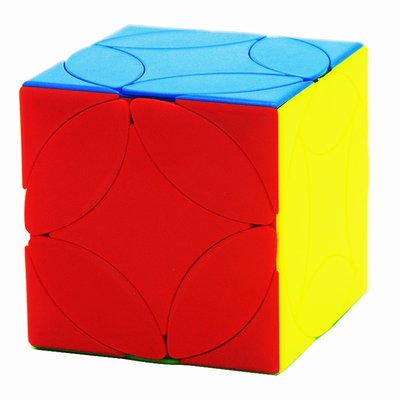
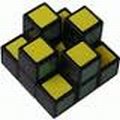

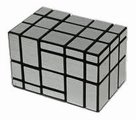
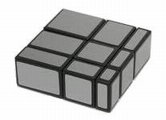
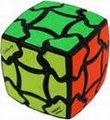



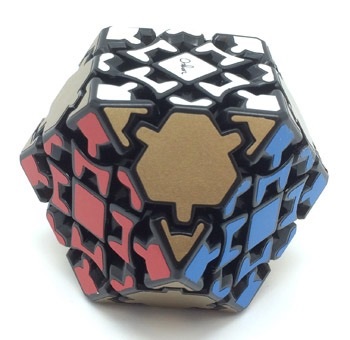
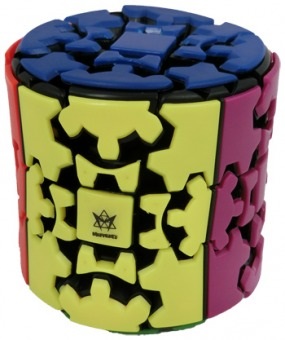












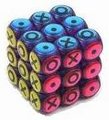
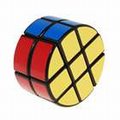
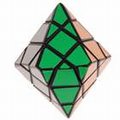

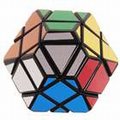
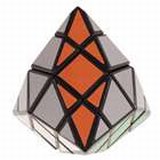
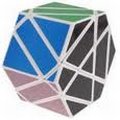
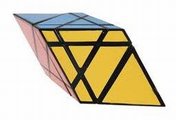
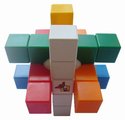


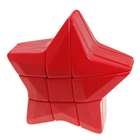
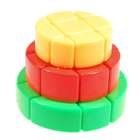
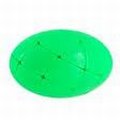
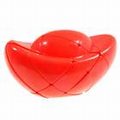

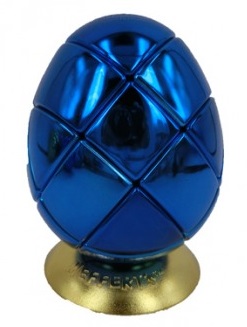

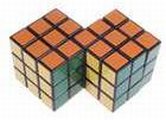
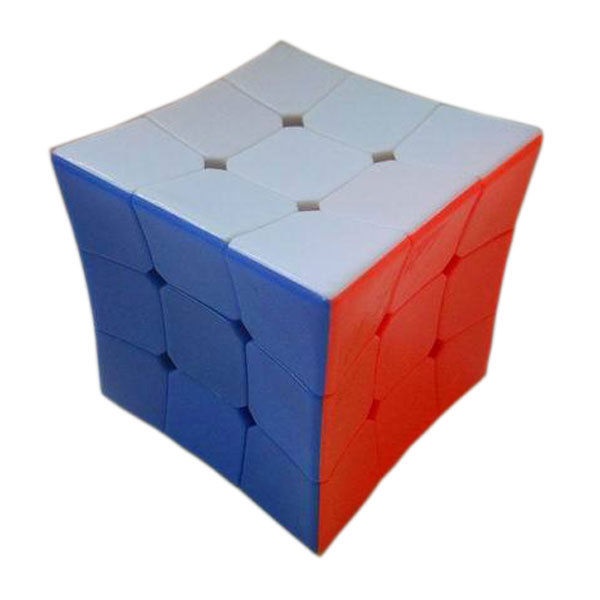
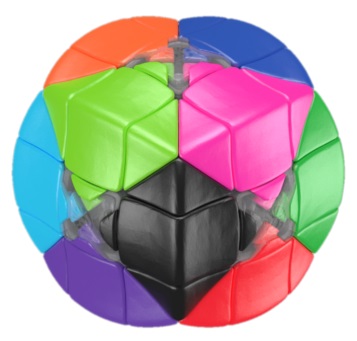
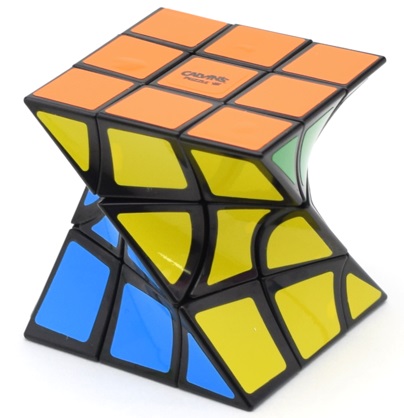
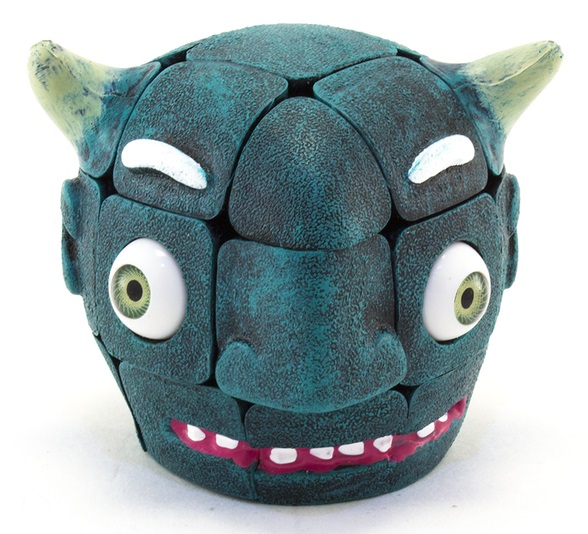

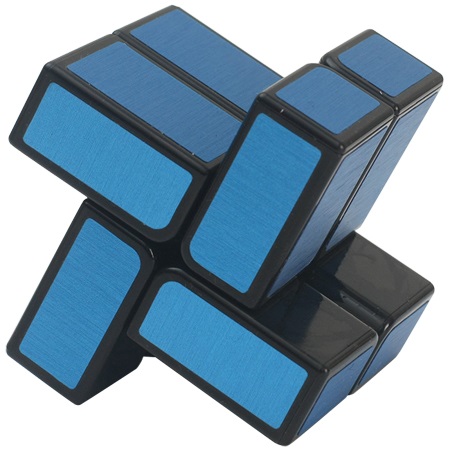
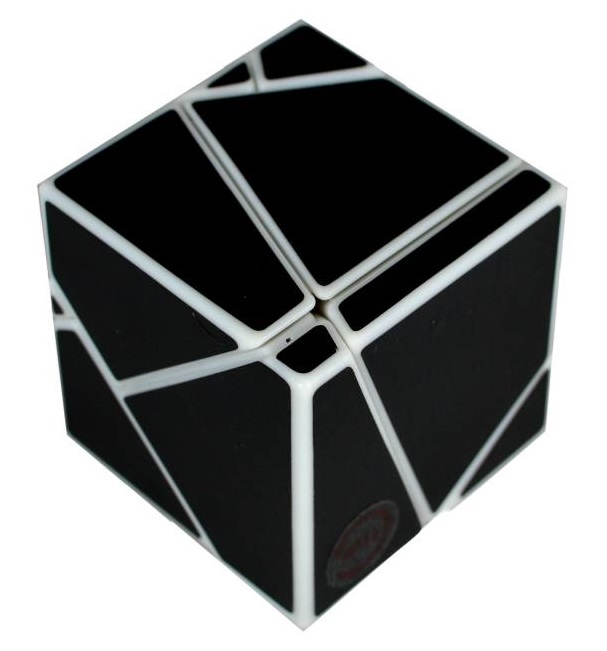



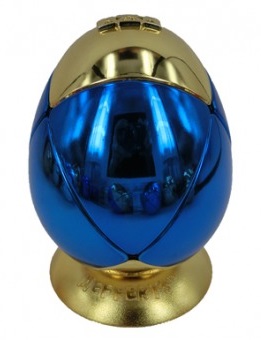




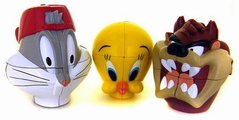
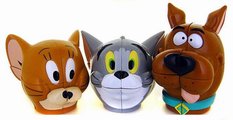
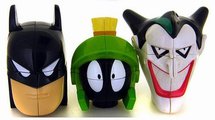
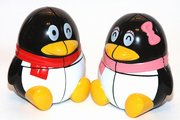
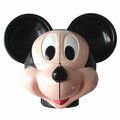
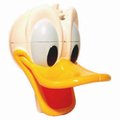
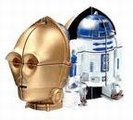
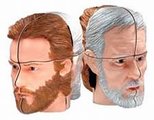
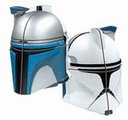


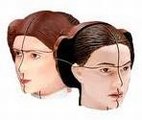
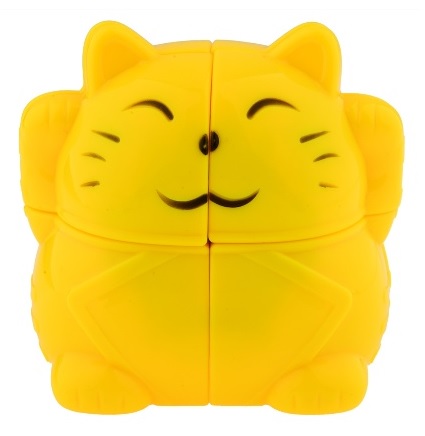
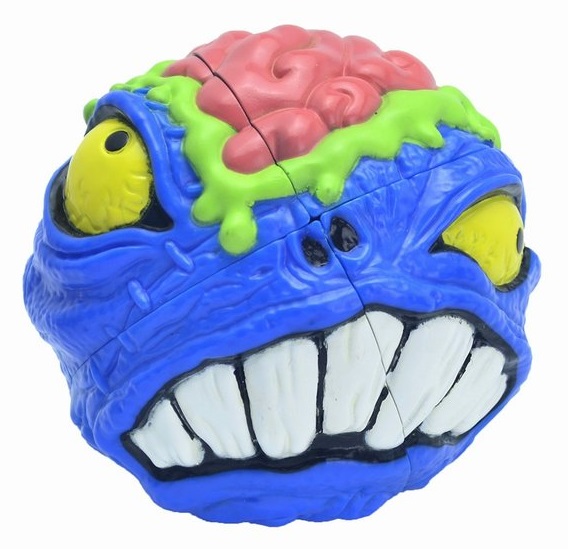
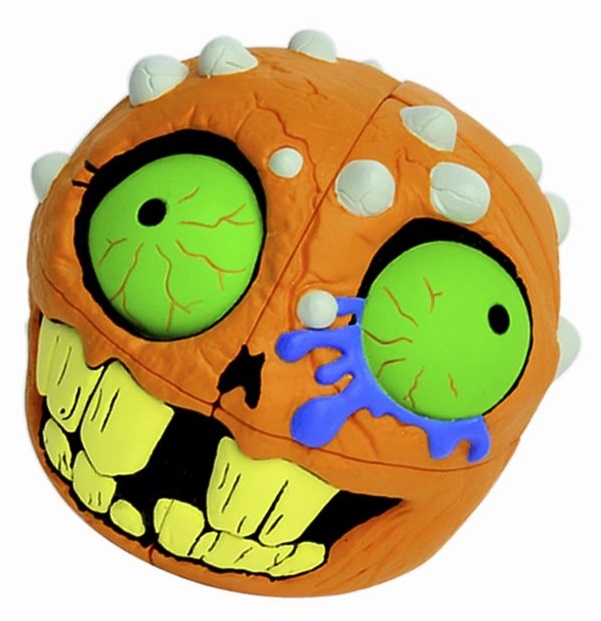
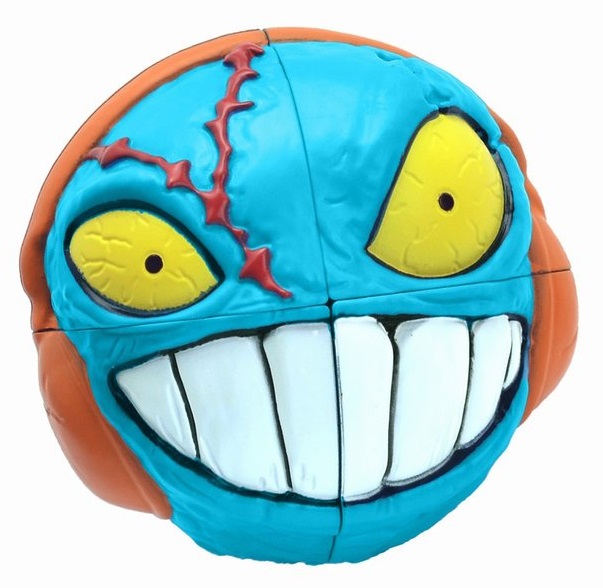
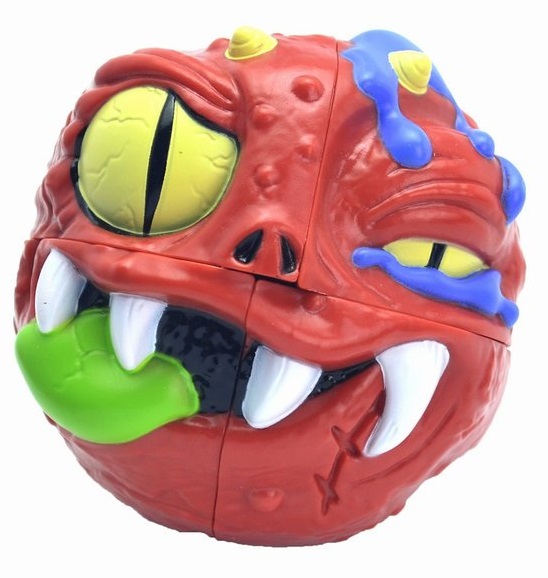

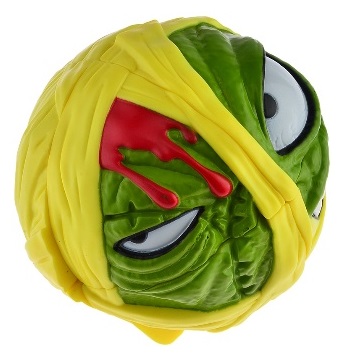
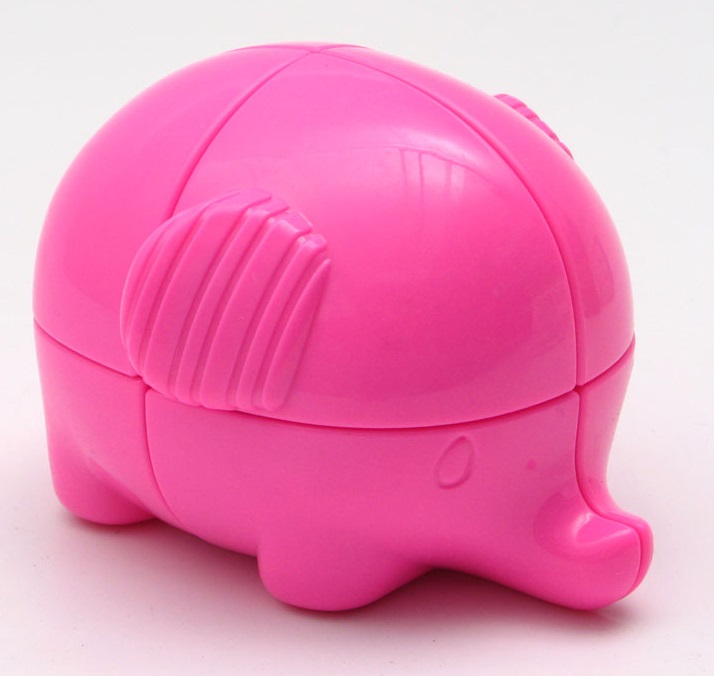
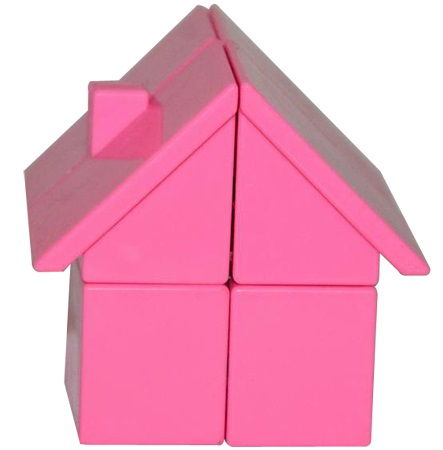
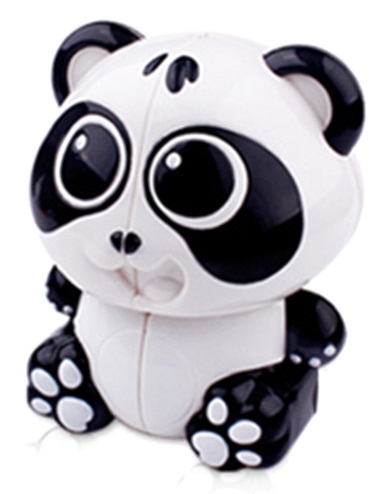
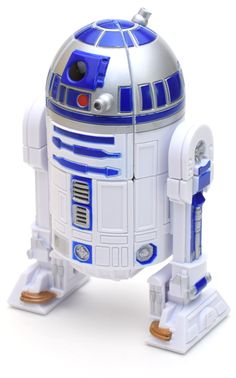
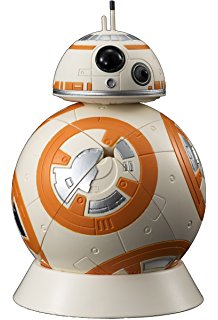




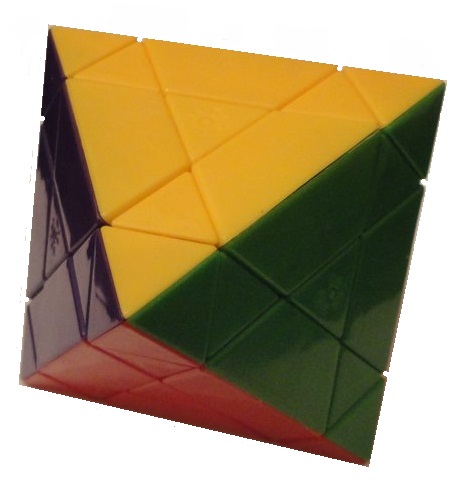

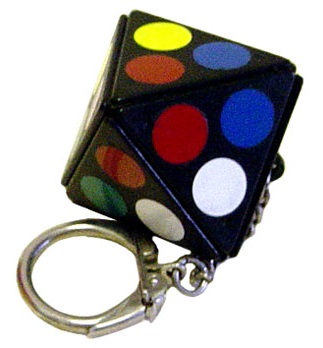



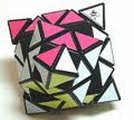

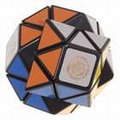

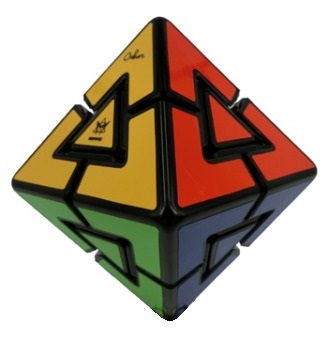
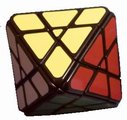
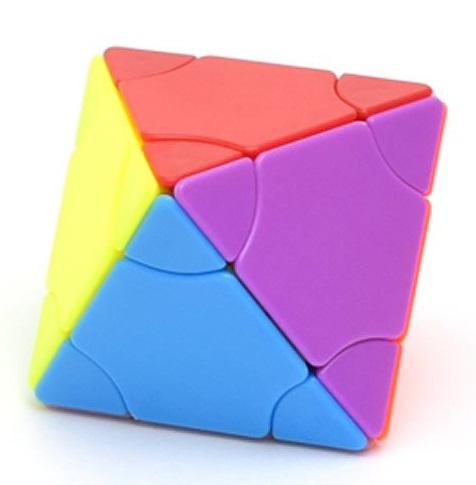

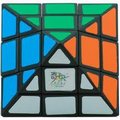
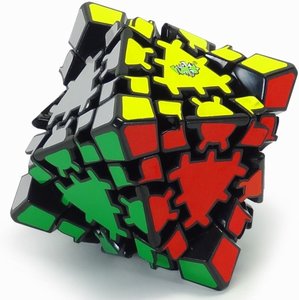
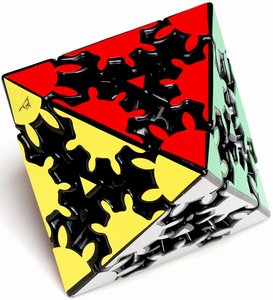
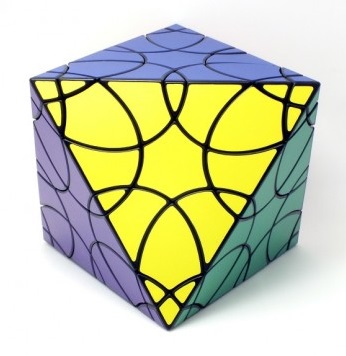
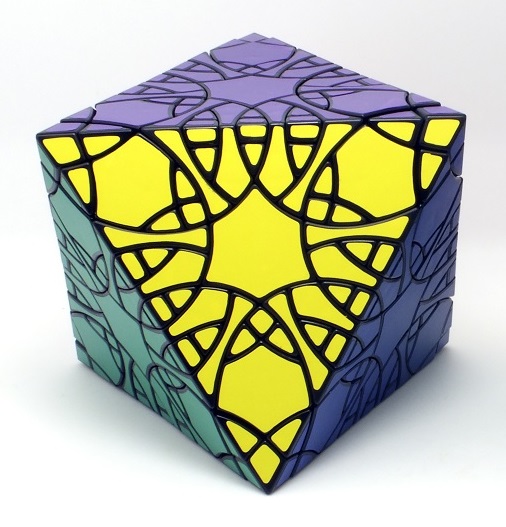
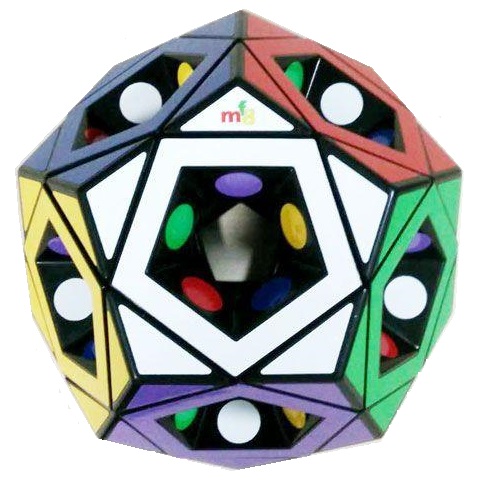
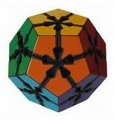
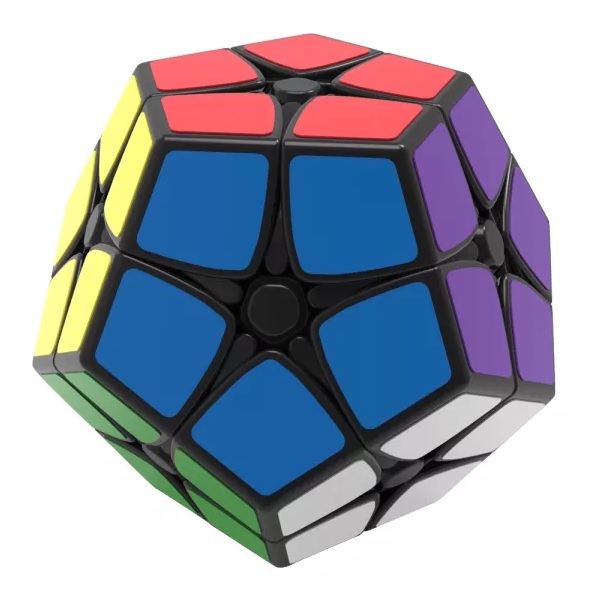

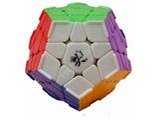
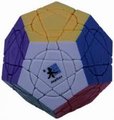
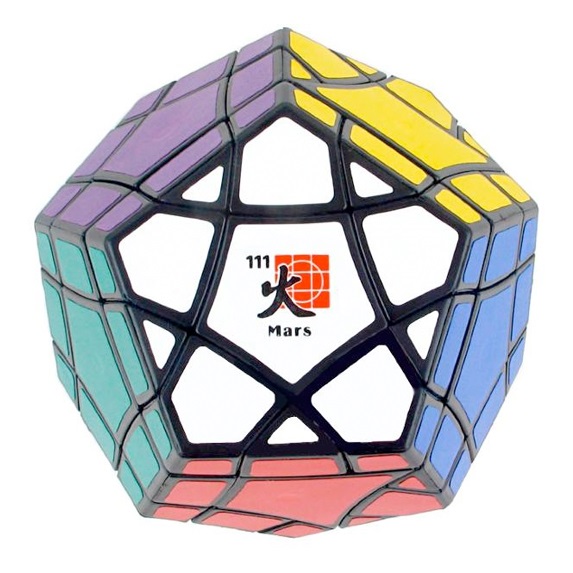

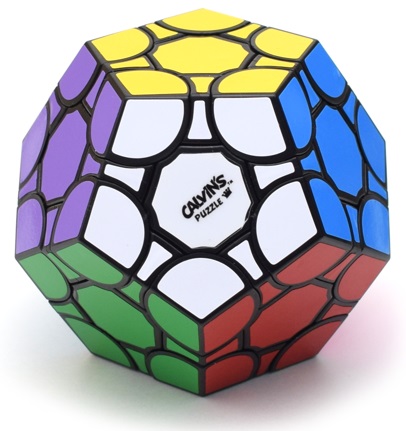


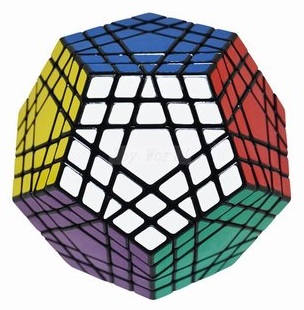
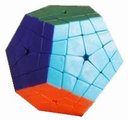

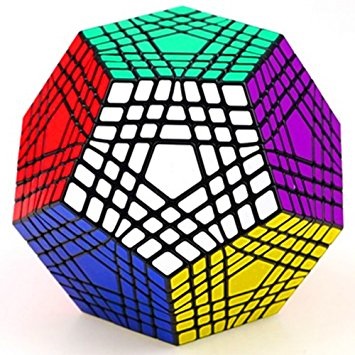
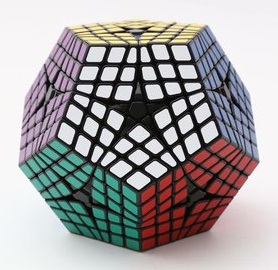
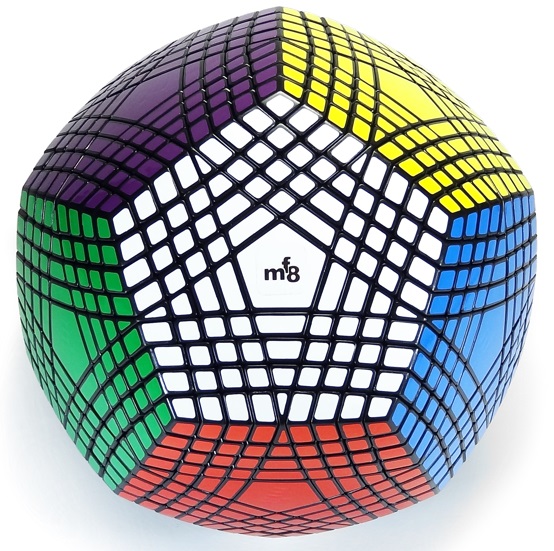
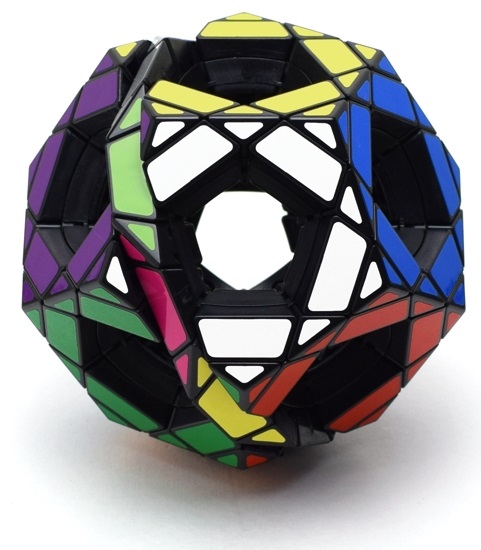
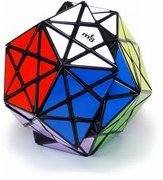
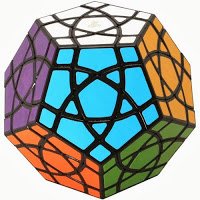

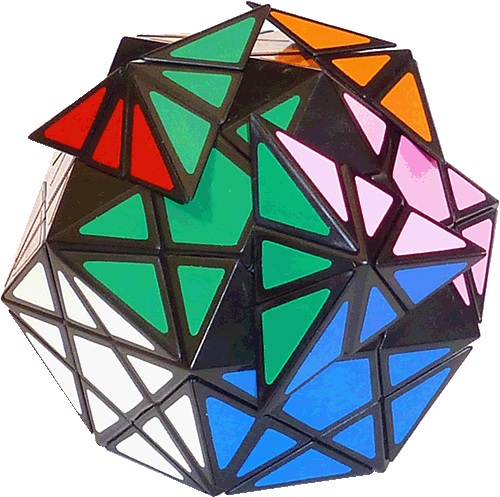
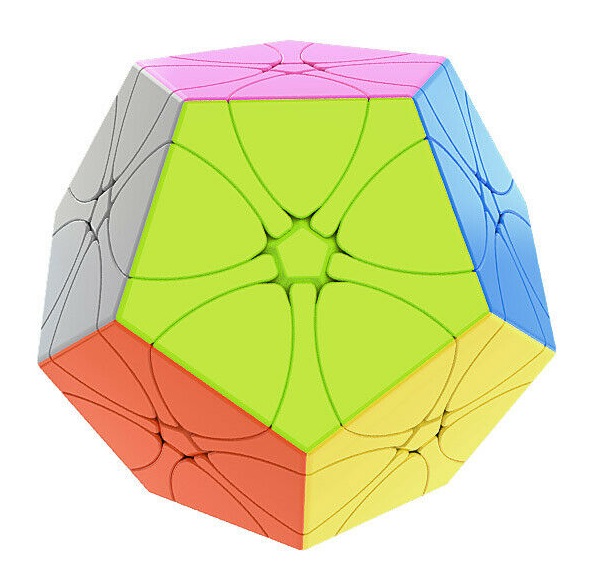
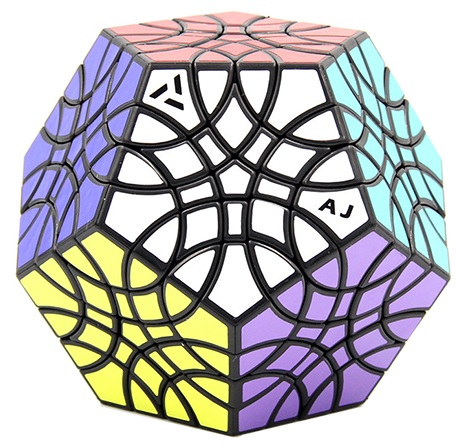
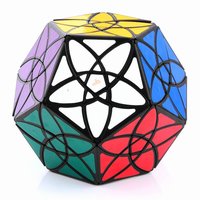
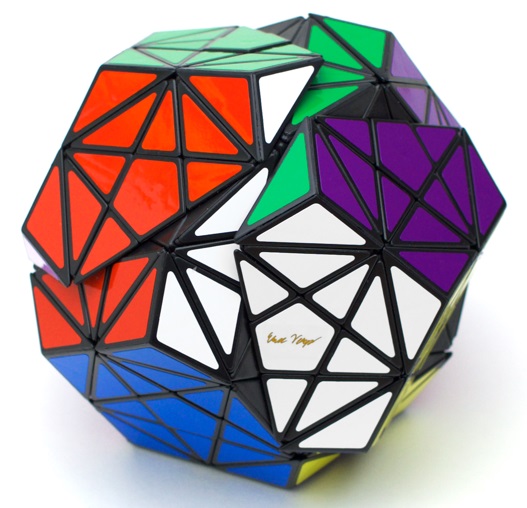
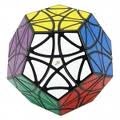
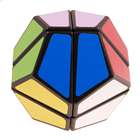

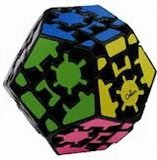
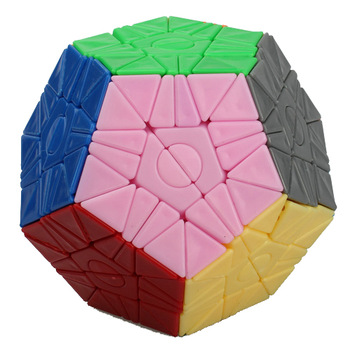
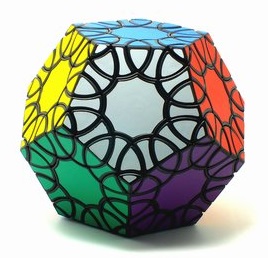
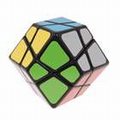

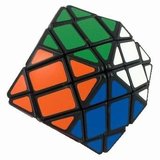
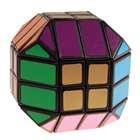
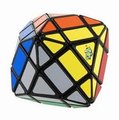

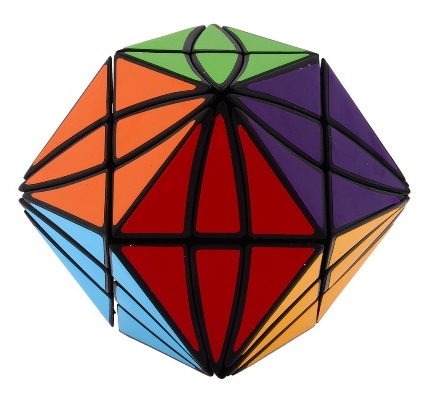
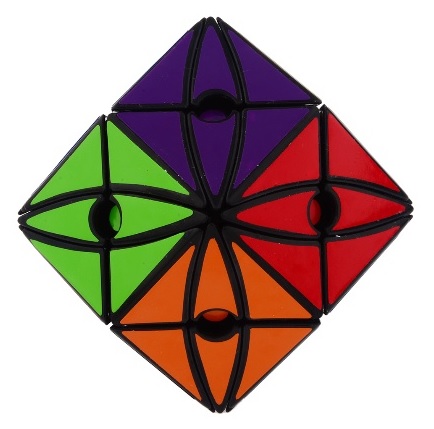
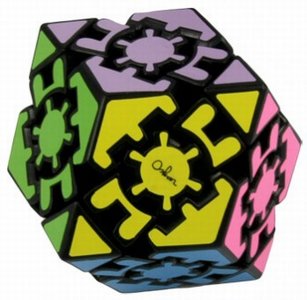
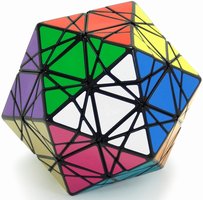
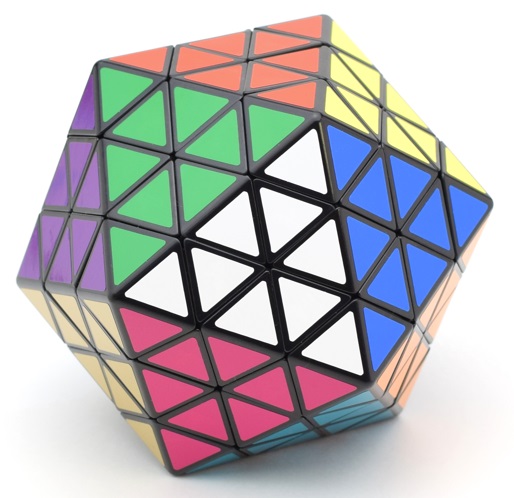



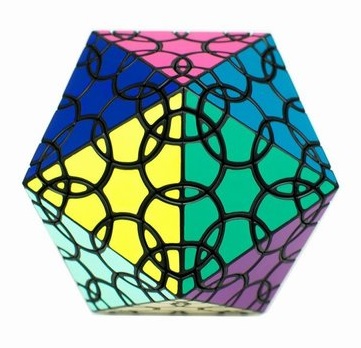

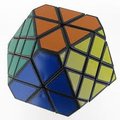
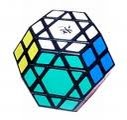
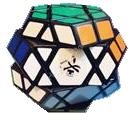

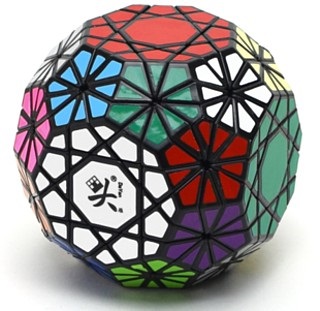
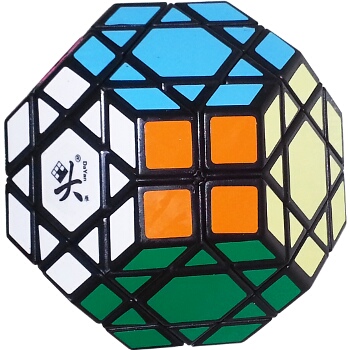
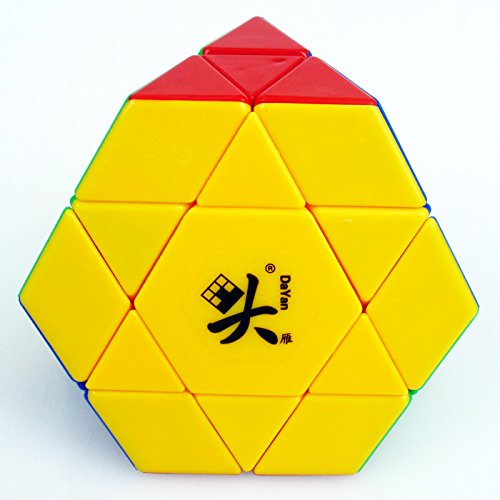

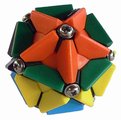
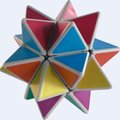
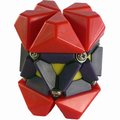

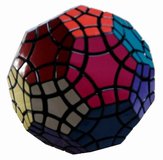

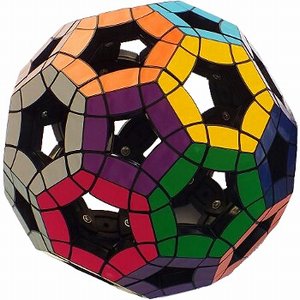
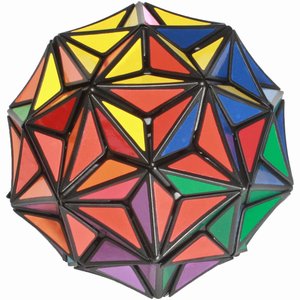
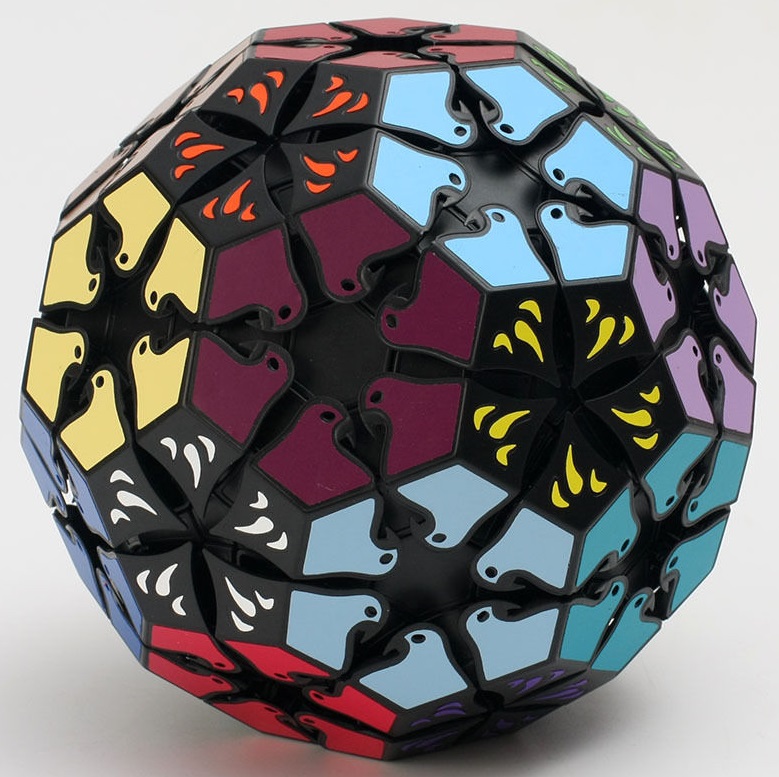
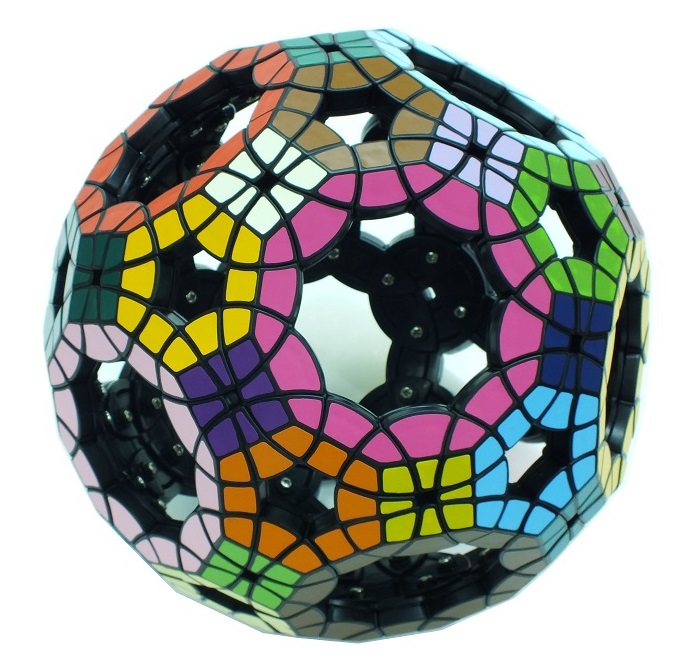



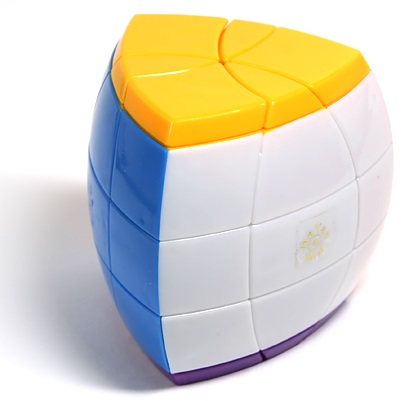
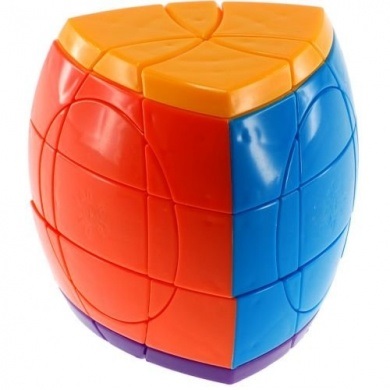
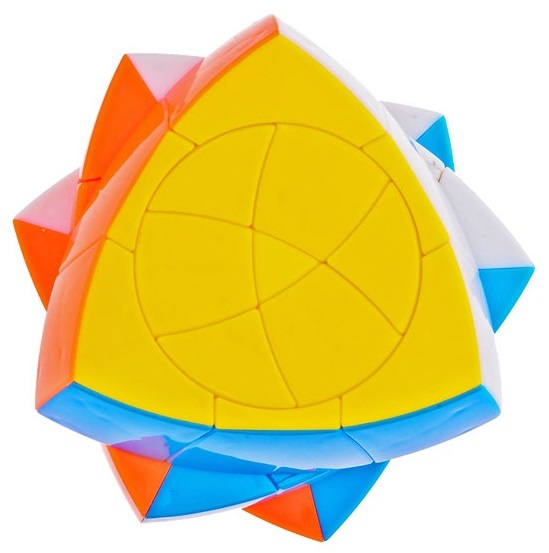
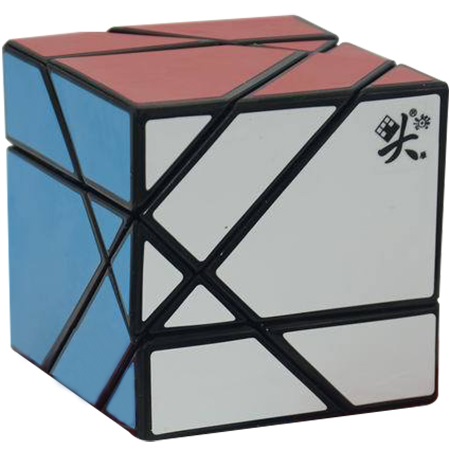
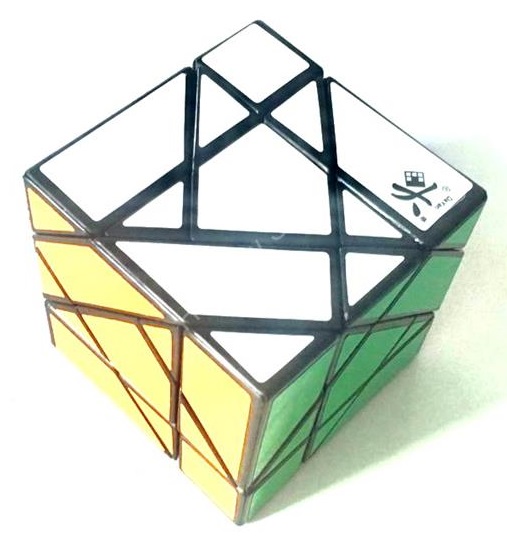

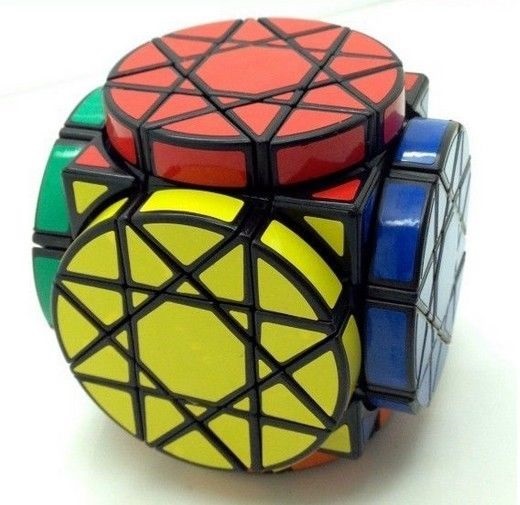
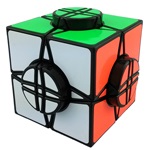
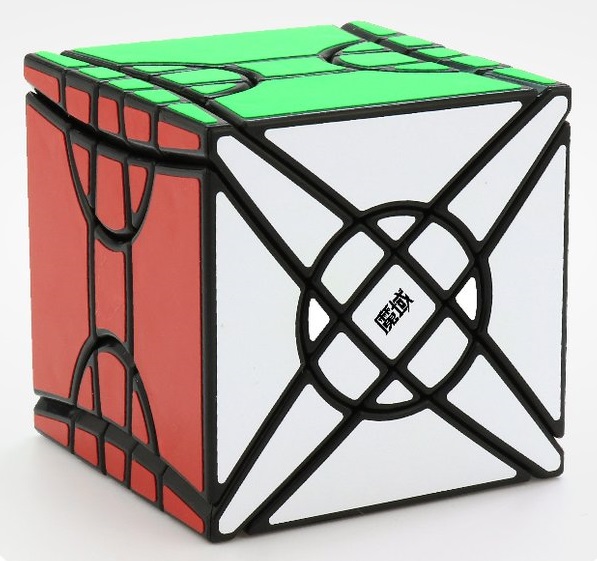
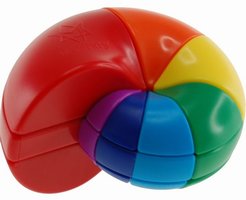
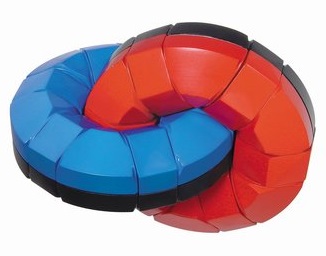
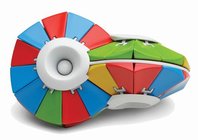
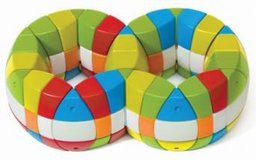
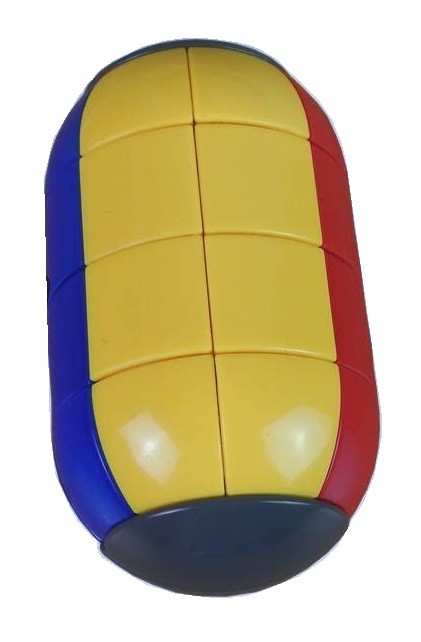







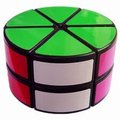
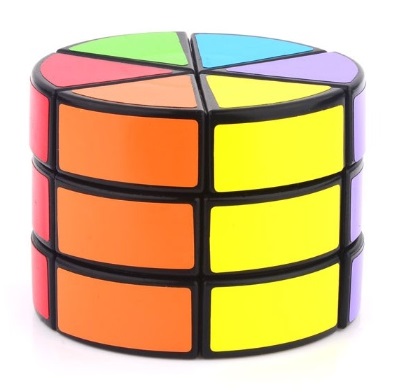

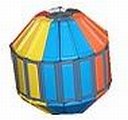
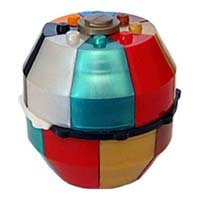
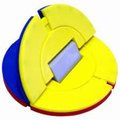

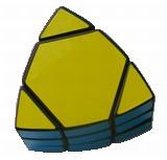

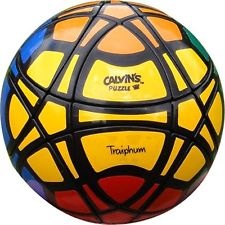

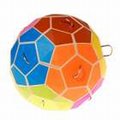



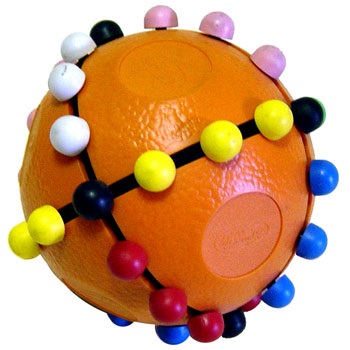







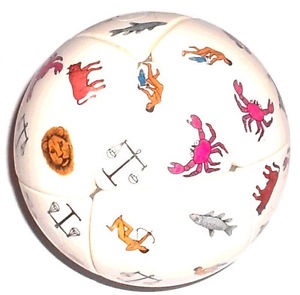

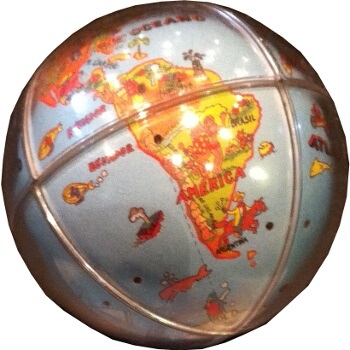







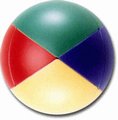
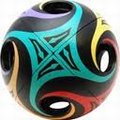
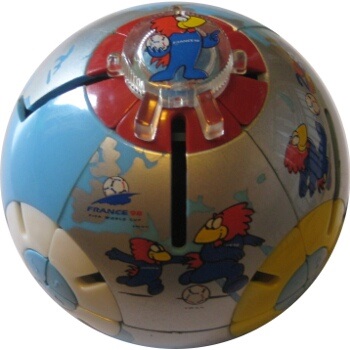
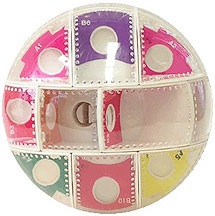
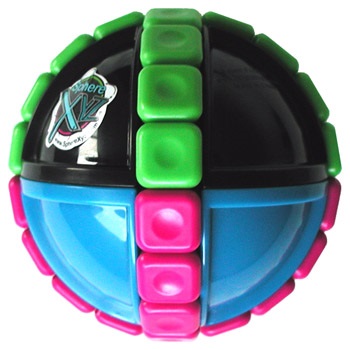
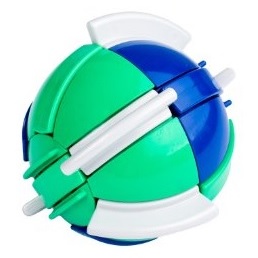







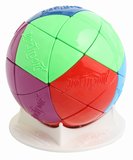
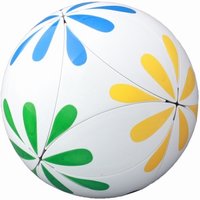
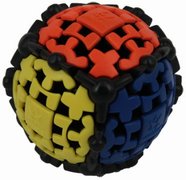







|
|














Tri-color Cube |

Fisher's Cube |

Fourth Dimension |
 - all features present
- all features present
 - this is what is typically referred to as an "edges-only" cube
even though technically that's inaccurate (4x4x4 also shown)
- this is what is typically referred to as an "edges-only" cube
even though technically that's inaccurate (4x4x4 also shown)
 - by simply shaving down and blacking out the corners
- by simply shaving down and blacking out the corners

 - by simply shaving down and blacking out the edges - the "Corners Cube"
- by simply shaving down and blacking out the edges - the "Corners Cube"
 - taking this to its extreme, we end up with Oskar van Deventer's "Gerardo's Cube"
- taking this to its extreme, we end up with Oskar van Deventer's "Gerardo's Cube"

 - a "babyface" cube - each face can be turned (oriented) in place, colored to make an
edgematching challenge (4x4x4 Babyface also shown)
- a "babyface" cube - each face can be turned (oriented) in place, colored to make an
edgematching challenge (4x4x4 Babyface also shown)
 - Oskar van Deventer has created the
PantaCube,
which has only five of six faces but allows those five faces to be permuted.
- Oskar van Deventer has created the
PantaCube,
which has only five of six faces but allows those five faces to be permuted.
 Eliminate the core, as in the Void or Holey Cube
Eliminate the core, as in the Void or Holey Cube Hide the faces using overlapping, as in the "Brilicube"
Hide the faces using overlapping, as in the "Brilicube" Using a Void Cube, cutting down and hiding the corners, then extending the edges to overlap them - this has been mass-produced.
Using a Void Cube, cutting down and hiding the corners, then extending the edges to overlap them - this has been mass-produced. Extending edge plates to overlap hidden face centers and corners, so the cuts make a big X on each side
(4x4x4 version also shown)
Extending edge plates to overlap hidden face centers and corners, so the cuts make a big X on each side
(4x4x4 version also shown) - true corners-only - since any size cube has only eight corner pieces, this boils down to the basic 2x2x2
- true corners-only - since any size cube has only eight corner pieces, this boils down to the basic 2x2x2
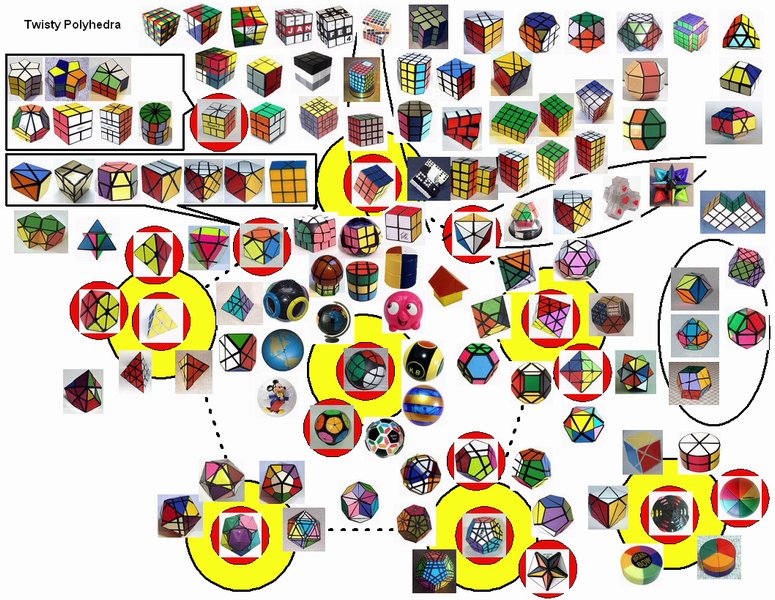
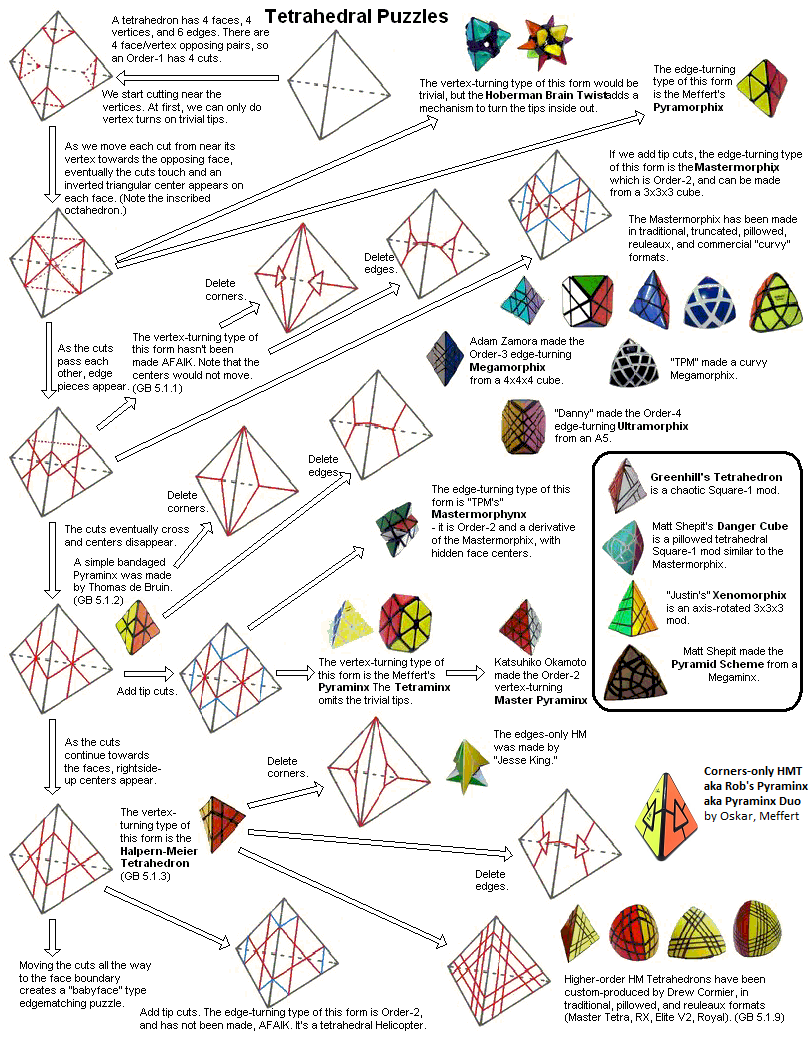
Here is a new chart updated as of Feb. 2020:
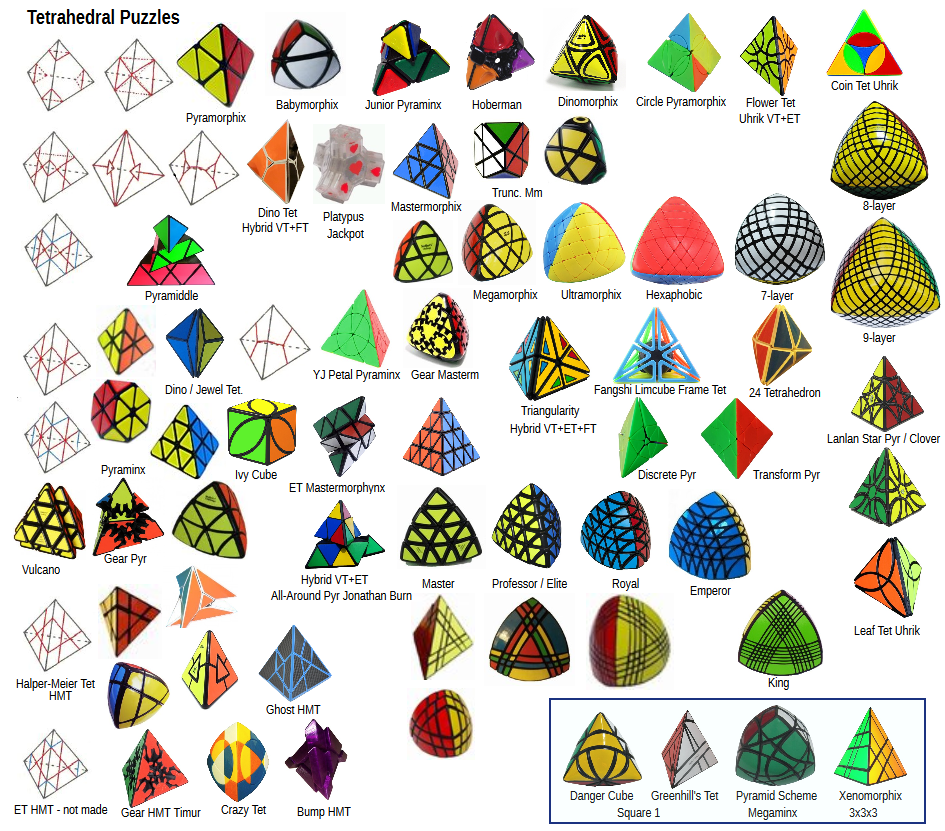
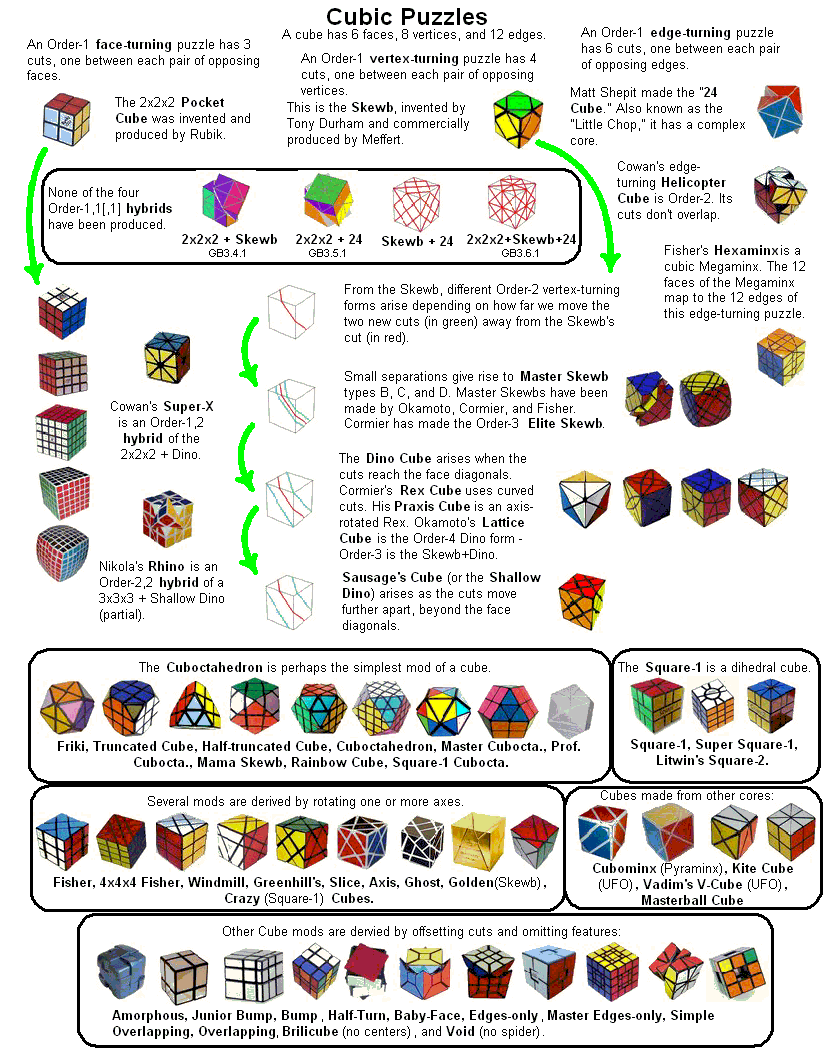
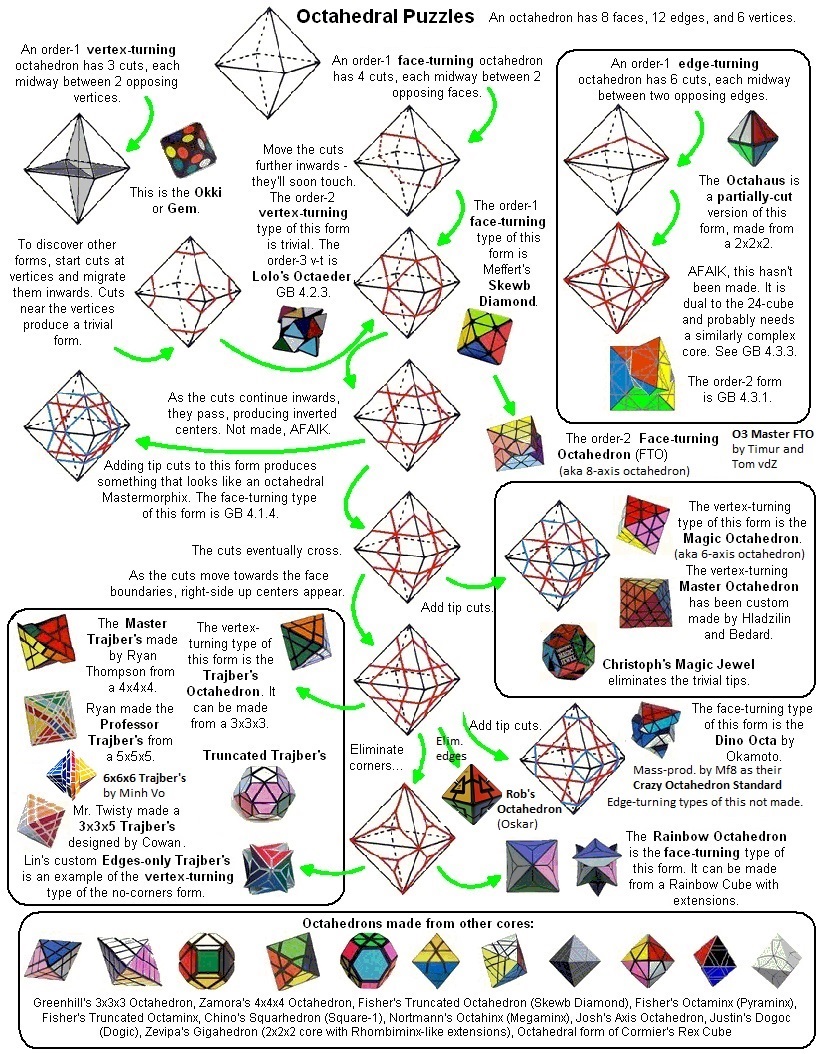
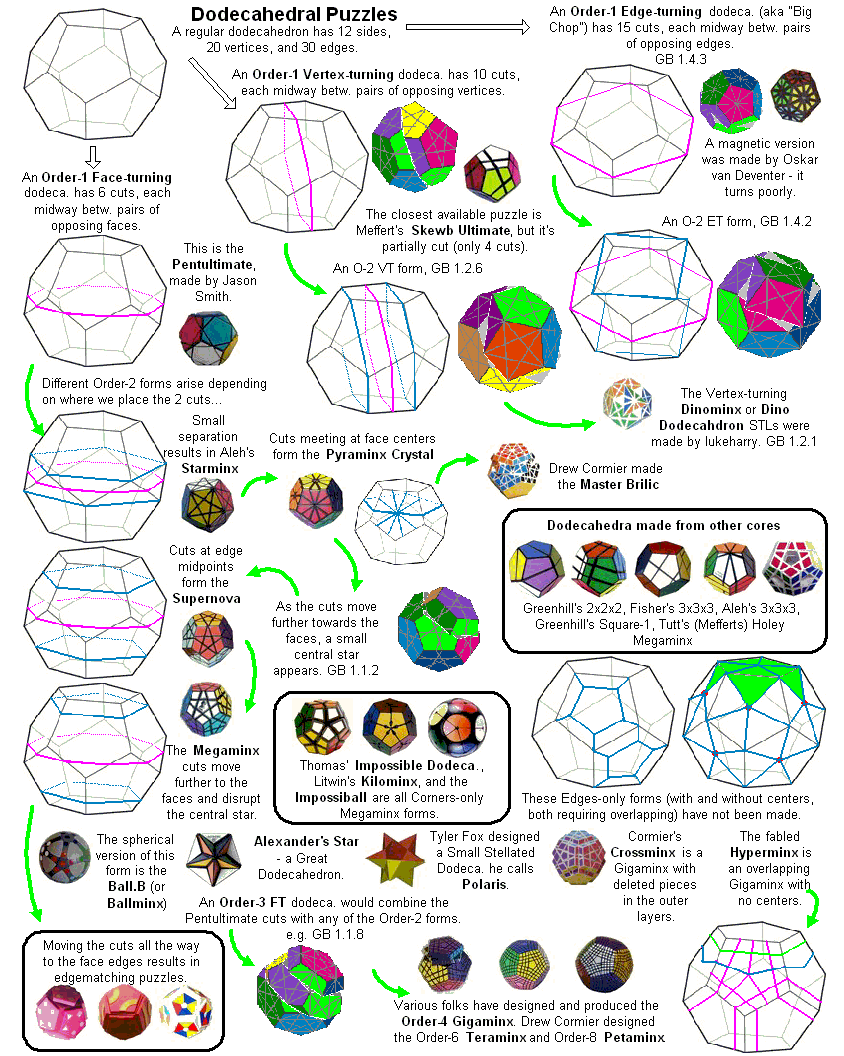
| F/V | E | ||||
| O1 | O2 | O3+ | O1 | O2 | O3+ |




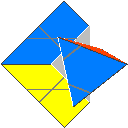

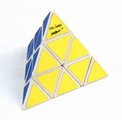
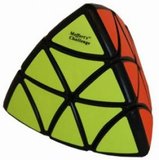







|






|


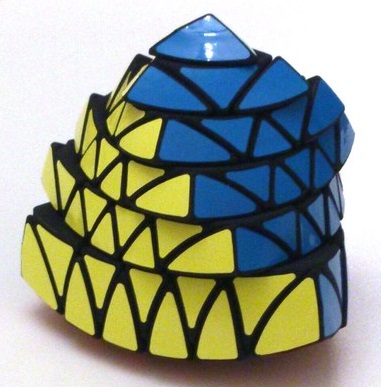

|


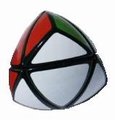
|

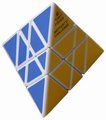
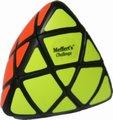

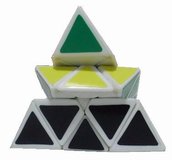

|



|
| Face/Vertex-turning Order 1 | |||||
 ==>
==>
 Move cuts from tips inwards until they touch,
forming inverted triangles on faces...
Move cuts from tips inwards until they touch,
forming inverted triangles on faces...
|
|||||
|
Space Pyramid

|
Space Pyramid Just trivial tips. "Junior Pyraminx" [T]; "Mini Pyraminx" [T] |
||||
|
Hoberman Brain Twist



|
Hoberman Brain Twist From a company not known for twisty puzzles. A unique take on what would otherwise be a trivial vertex-turning tetrahedron - the tips invert and you can turn the whole puzzle kind of "inside-out." This idea has not been used on any other twisty AFAIK. | ||||
|
Continue moving the cuts from the vertices towards the opposite faces -
three different basic forms result... (All can have tip cuts, which result in either trivial tips on vertex-turning forms, or edge-turning O2 forms.)
|
|||||


GB 5.1.1 - Pyramiddle - Justin

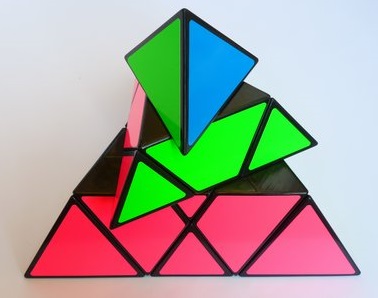
|
The first of these is GB 5.1.1. It has stationary centers. TP member Justin built one and calls it Pyramiddle. [T] | ||||

 Pyraminx - GB 5.1.2 - Meffert
Pyraminx - GB 5.1.2 - Meffert

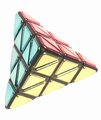

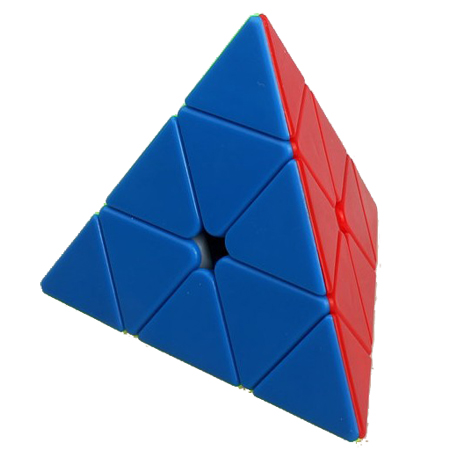
|
9.3*105 = 933,120 (not including trivial tips);
The Pyraminx
7.6*107 = 75,582,720 (with tips) - Uwe Meffert - 4-armed spider An original issued by Tomy, loose and in package, a Meffert's 25th Anniversary version, and Meffert's New Pyraminx, in black. Also a QiYi stickerless Pyraminx. The Pyraminx is not deep-cut. |
||||
|
|
|||||
|
Special Edition Pyraminx designed by Sam Baron for the Louvre
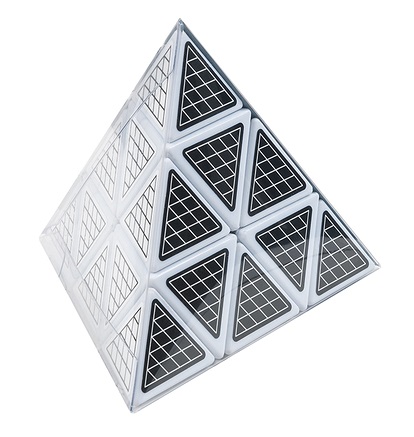
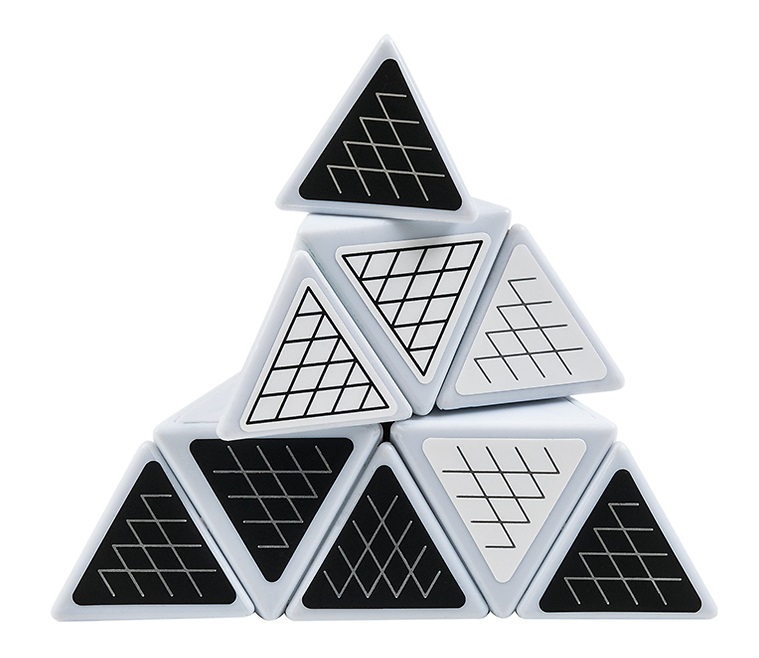

|
Ligne Pyramide Pei -
This special edition Pyraminx designed by Sam Baron for the Louvre is decorated to evoke the famous and controversial glass Pyramid installed in the courtyard of the Louvre by the architect I. M. Pei. Purchased in the Louvre gift shop. Here is the view from inside the Pei Pyramide looking out...
|
||||
|
Pyraminx Deluxe
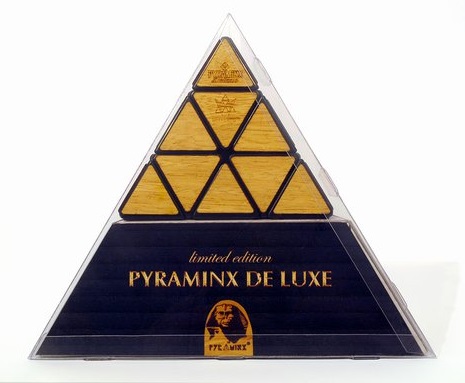
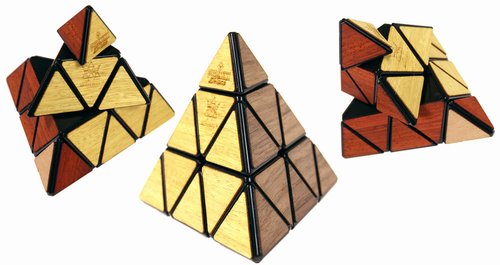
|
Pyraminx Deluxe Limited Edition - issued by Recent Toys
This version has wood-grain tiles. |
||||
|
Pyraminx 50th Anniversary Crystal Edition
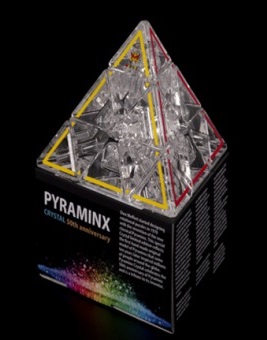

|
50th Anniversary Crystal Pyraminx | ||||
|
Bandaged Pyraminx

|
The tetrahedral version without trivial tip cuts is the
Bandaged Pyraminx, built by Thomas de Bruin
[T]
I don't have this. |
||||
|
Tetraminx (Pyraminx sans trivial tips)

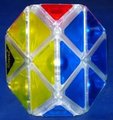
|
Tetraminx
(A Snub Pyraminx - same as Pyraminx with trivial tips removed.) Mefferts version, and transparent version from Smaz. |
||||
|
Round Pyraminx / Penrose Pyraminx - Mason Hynds - Yuxin
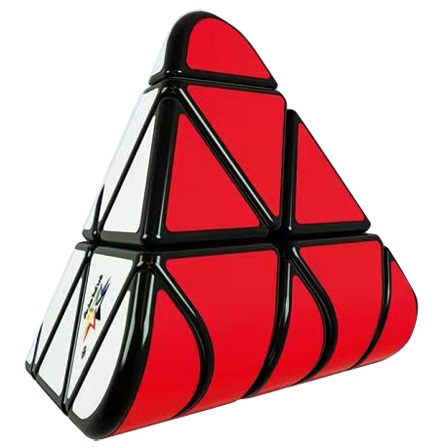
|
Round Pyraminx / Penrose Pyraminx - Mason Hynds - Yuxin
Some states look like parity, but remember the small rounded edge pieces are symmetric. Solves like the Pyraminx. |
||||
|
Cubominx (Tony Fisher)/ Eye-Skewb (Eitan Cher)



|
A Pyraminx/Tetraminx (or Skewb) can be modded to a Cubominx [T] [T] [T] [Y] which is kind of a "half-Skewb" - curvy cuts give Eitan's Eye-Skewb [T] | ||||
|
Ivy Cube

|
Eitan's Eye-Skewb
[T]
has been mass-produced by QiYi and released as the Ivy Cube
It is a variation of the Cubominx designed by Tony Fisher [Y] which was based on a Pyraminx. |
||||
|
|||||
|
Six Spot Cube - David Pitcher - QiYi

|
Six Spot Cube - designed by David Pitcher, produced by QiYi
A variant of the Ivy Cube with circles rather than petals/eyes. |
||||
|
Yeet Ball - YongJun
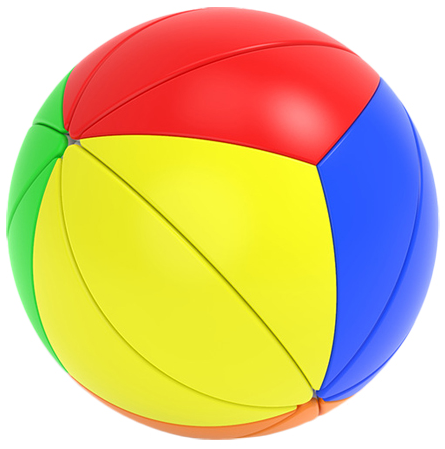
|
YongJun Yeet Ball (this is a spherical version of the Ivy Cube / Eye Skewb) | ||||
|
Unicorn Cube - Moyu
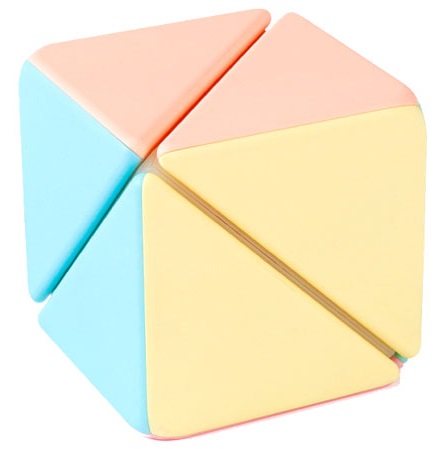
|
Unicorn Cube - Moyu
This is a trivial "puzzle" - essentially a face-center-less (eyeless?) version of the Ivy Cube. The same set of only four corners that can turn, but no face centers to permute. To solve, just align the turning corners to render each face monochromatic. |
||||
|
Jewel Tetrahedron - Grigorusha (Edges-only Pyraminx)
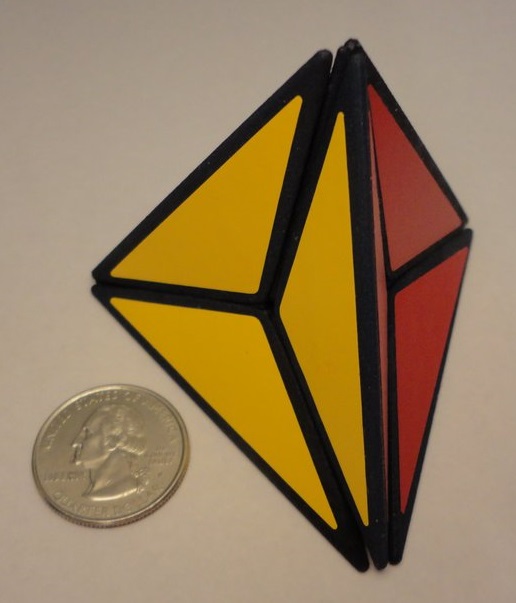
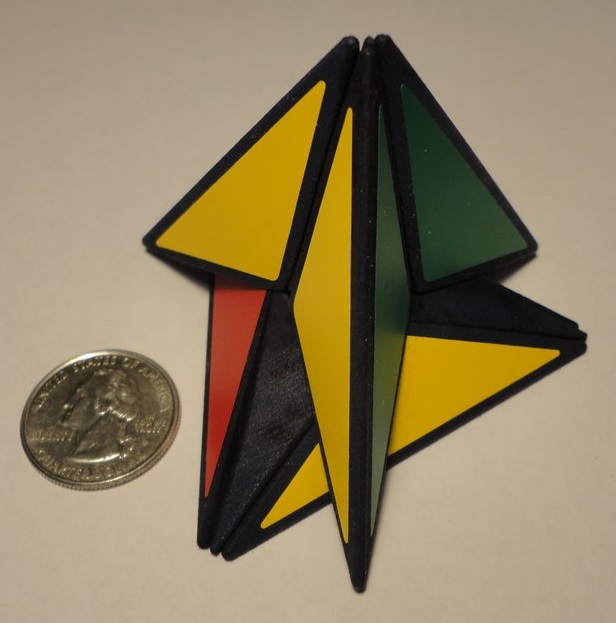
|
Jewel Tetrahedron - Grigorusha (Edges-only Pyraminx)
This can get to a state with only a single edge flipped. |
||||


Halpern-Meier Tetrahedron - GB 5.1.3 - Matt Davis

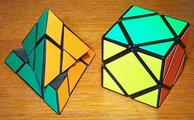
|
3.7*106 3,732,480 - Ben Halpern, Kersten Meier
This version of the order-1 tetrahedron is called
Halpern's Tetrahedron
or the Halpern-Meier Tetrahedron.
The HMT is deep-cut - all cuts go through its center. This was produced commercially but that vintage version is very rare. I have a custom-built example made by Matt Davis from cast pieces and a Skewb keychain core. Also shown is a comparison with a Skewb. |
||||
|
Halpern-Meier Tetrahedron (HMT) / Flat Jing's Pyraminx - Meffert
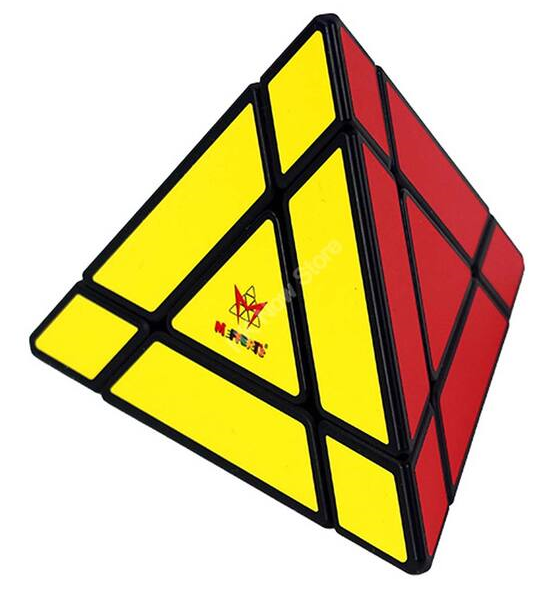
|
Meffert's Flat Jing's Pyraminx (HMT) | ||||
|
Jing's Pyraminx - GB 5.1.3 - Meffert
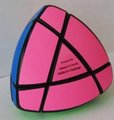
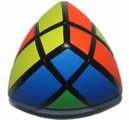
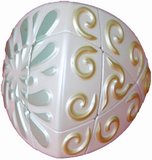
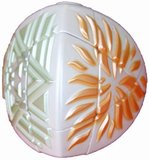
|
Meffert produced a Reuleaux version of the HMT, designed by Adam Cowan. They call it Jing's Pyraminx. It is fairly large. Also shown is the Jade Club Pyraminx, which is smaller than the custom HMT. | ||||
|
|
|||||
|
Halpern-Meier Tetrahedron (HMT) - Shengshou

|
Pillowed Halpern-Meier Tetrahedron (HMT) - Shengshou
aka 7-Segment Pyraminx If you missed out on Jing's Pyraminx from Meffert, now you may be able to find a pillowed HMT from Shengshou. |
||||
|
Duomo Cube - Halpern-Meier Tetrahedron (HMT) - Justin Eplett / QiYi

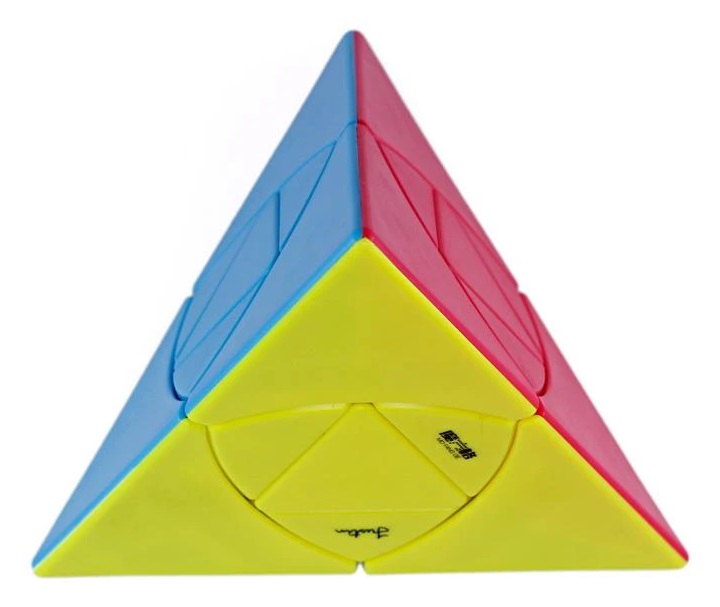
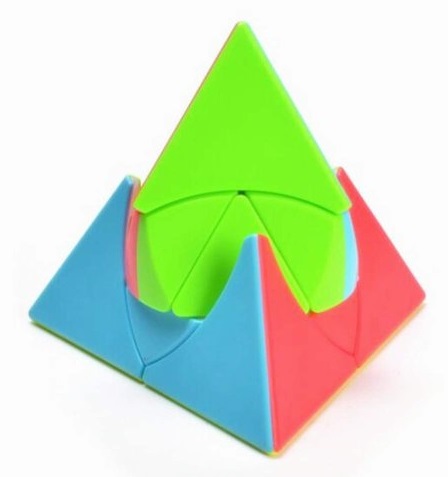

|
Duomo Cube - a visually striking, but functionally identical version of the Halpern-Meier Tetrahedron (HMT) - designed back in 2014 by Justin Eplett [T] [T], mass-produced by QiYi | ||||
|
Edgeless HMT - Rob's Pyraminx - Pyraminx Duo

|
I am honored that the multi-talented Dutch puzzlist Oskar van Deventer [W] [S] has named one of his puzzle designs after me - Rob's Pyraminx. [T] Oskar named this previously unrealized (AFAIK) design after noticing it in my "family tree" chart of tetrahedral twisty puzzles. Meffert's has mass-produced Rob's Pyraminx - for commercial release it is called the Pyraminx Duo. The Pyraminx Duo is arguably the simplest non-trivial twisty puzzle - it is easy to solve intuitively and makes a fun gift for folks who normally wouldn't consider themselves avid puzzlers. If you would never even think of attempting a Rubik's Cube, don't worry - you can solve this! With its intriguing geometric shape, it looks great, too, and would be equally at home on an executive's desk or a teen's bookshelf. Oscar Roth Andersen has even devised a game that can be played with the Pyraminx Duo! | ||||
|
|
|||||
|
Cornerless HMT

|
The HMT has been made in cornerless form, by "jesseking."
Also by "kwsjack054"
[T]
See the MoYu Windmill Pyramid below for a mass-produced version. |
||||
|
Cornerless HMT / Ivy Mastermorphix - QiYi
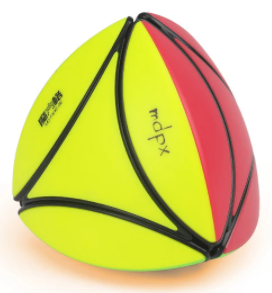
|
QiYi Ivy Mastermorphix - this puzzle is isomorphic to a cornerless (edges-only with face centers) HMT.
Vertex turns are equivalent to opposite face turns but in this puzzle it feels more natural to turn a face rather than a vertex. |
||||
|
Magical Pyramid Puzzle Series - MoYu
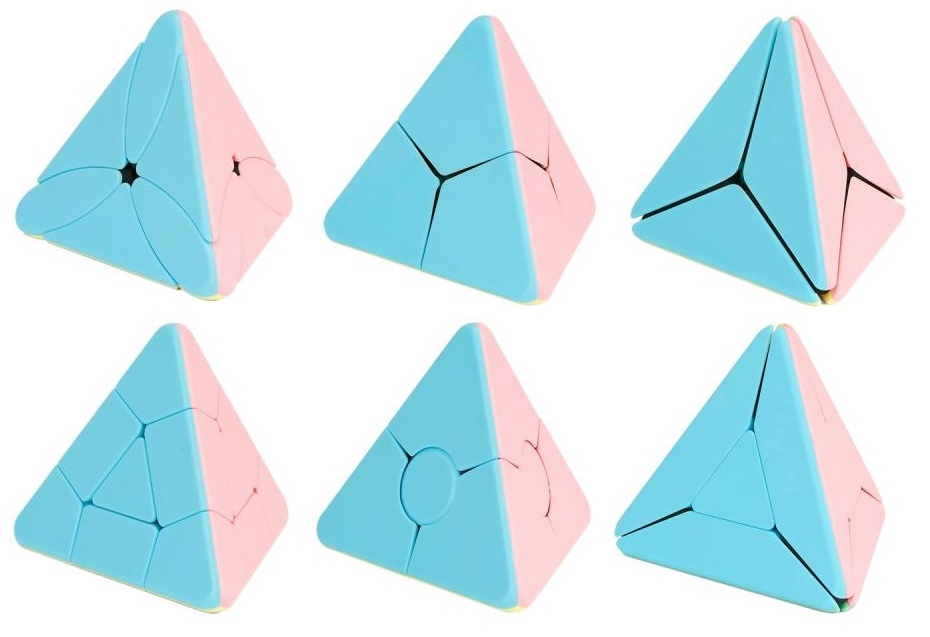
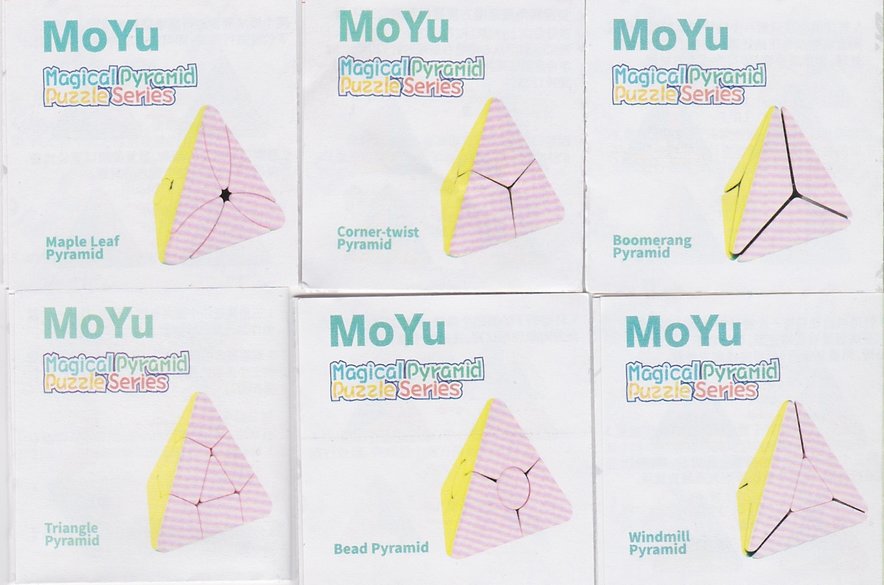
|
Magical Pyramid Puzzle Series - MoYu
MoYu produced this set of six variations on the vertex/face-turning tetrahedron. I have arranged them in this 2-row by 3-column grid to show the relationships.
The first row contains variations on the Pyraminx - the puzzle in the first column, which MoYu calls the "Maple Leaf Pyramid" is like the Pyraminx without the trivial tips - there are corner pieces and edge pieces - but as in the Pyraminx, this entire row lacks centers.
Note that the Maple Leaf Pyramid resembles the edge-turning Clover Pyraminx mass-produced by QiYi, though it lacks that puzzle's small face centers.
The second row contains variations on the HMT - the puzzle in the first column, which MoYu calls the "Triangle Pyramid" - is equal to the HMT, having (right-side-up) centers, corners, and edges, all of which move as expected. The second column contains the respective edgeless variants, and the third column contains the respective cornerless variants. The "Corner-twist Pyramid" had been shown in my family chart of tetrahedral puzzles but AFAIK had never been produced (it is trivial to solve). The "Boomerang Pyramid" is equivalent to Grigorusha's custom Jewel Tetrahedron. The "Bead Pyramid" is equivalent to Oskar's "Rob's Pyraminx" / Pyraminx Duo. The "Windmill Pyramid" is equivalent to the custom Cornerless HMT shown above, and I am happy to finally have this mass-produced version. |
||||
|
Void HMT
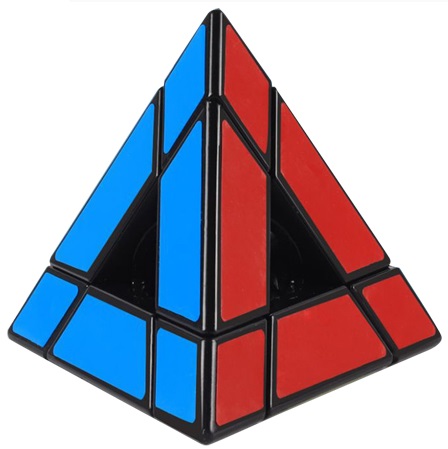
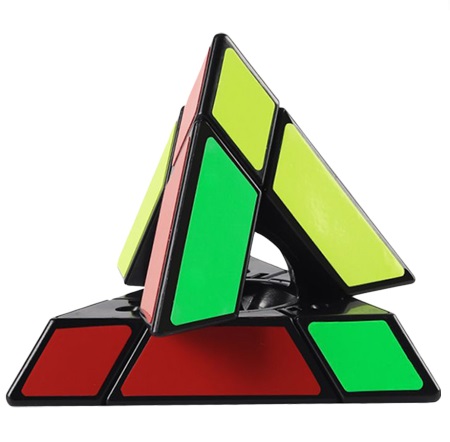
|
Sengso Void Pyramid (Void HMT)
A high quality puzzle - I really like this one. Since the face centers are missing, it solves like the Pyraminx. |
||||
|
Bump/Mirror HMT
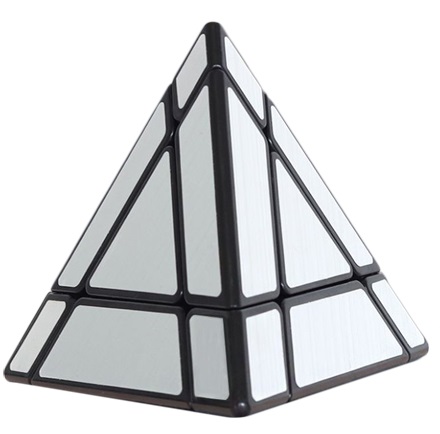
|
Sengso Mirror Pyramid (Bump HMT) | ||||
|
24 Tetrahedron (magnetic) - Tanner Frisby

|
24 Tetrahedron
6 Cuts - every edge is bisected - each cut is a plane that goes through the midpoint of an edge and coincides with the opposite edge. A turn moves half the puzzle. Magnetic version by Tanner Frisby [T] Claus Wernicke built one based on the 24 Cube by Matt Shepit. [T] |
||||
|
24 Tetrahedron (Chromium mech.) - James Li
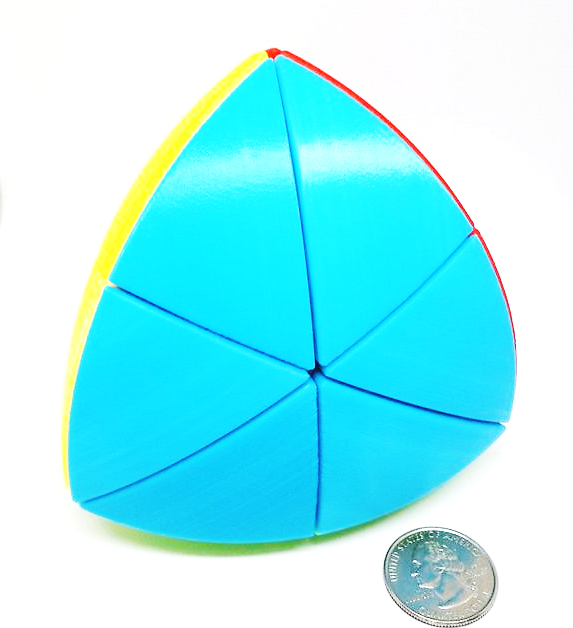
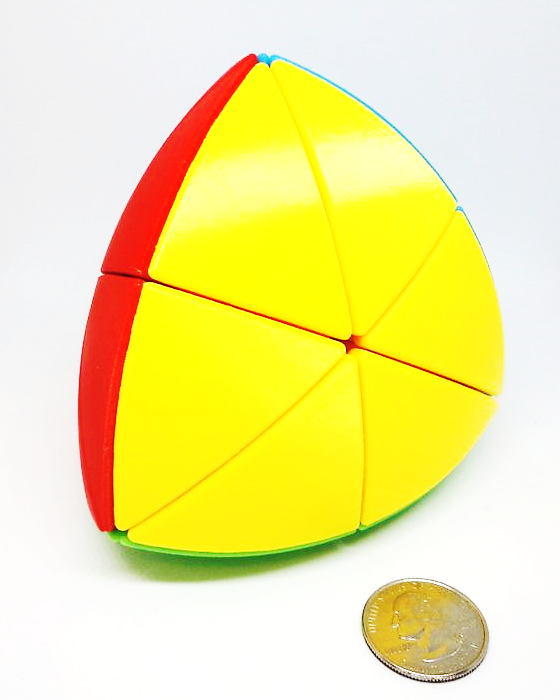

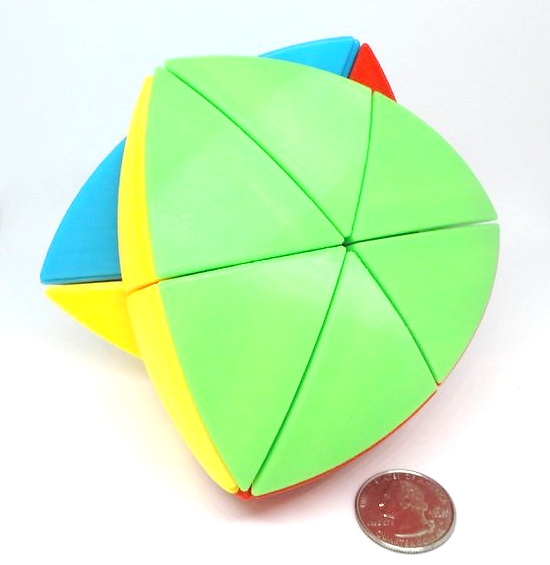
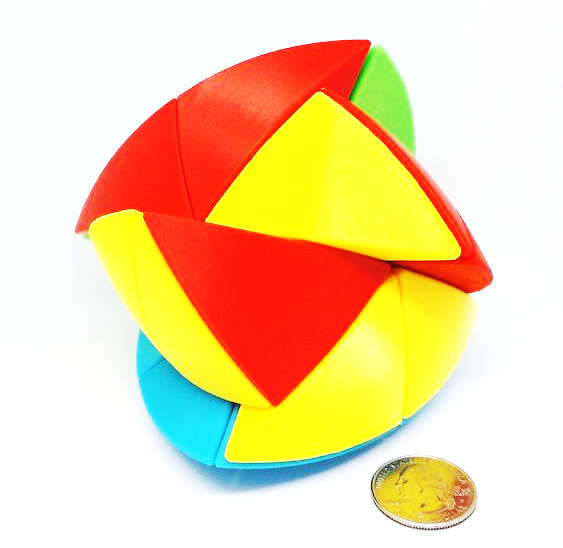
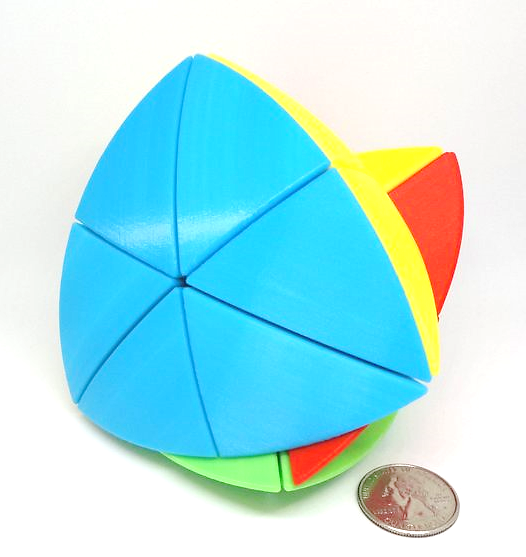
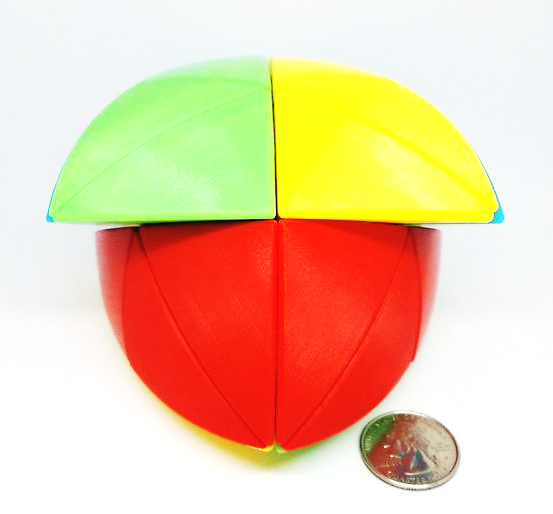
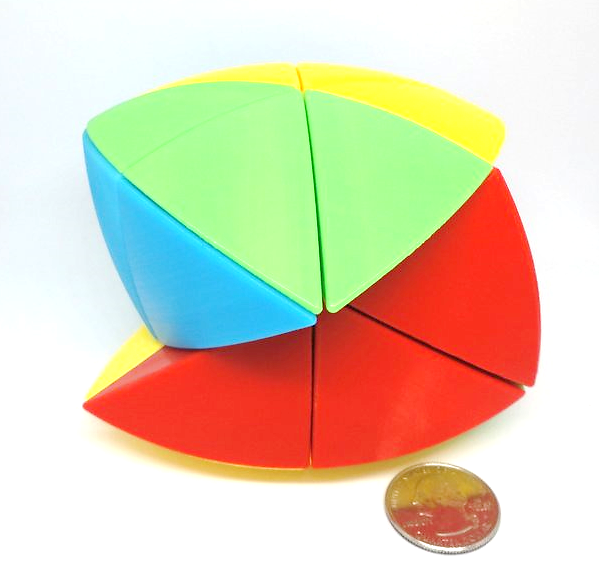
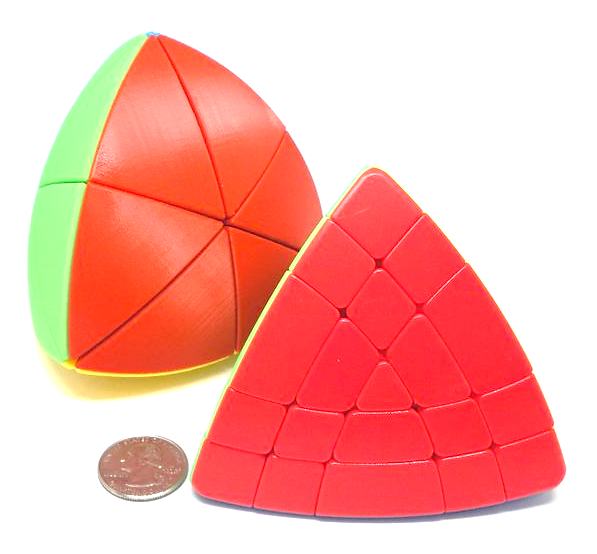
|
24 Tetrahedron (Chromium mech.) - James Li
6 Cuts - every edge is bisected - each cut is a plane that goes through the midpoint of an edge and coincides with the opposite edge. A turn moves half the puzzle. Shown with the Sengso Master HMT. |
||||
| Face/Vertex-turning Order 2 | |||||
|
Master Pyraminx - GB 5.1.4 - Evbatyrov / Cowan / Meffert

|
2.2*1014 positions ignoring trivial tips.
The Master Pyraminx, issued by Mefferts
Designed by Timur Evbatyrov and Adam Cowan Another great design mass produced beautifully by Meffert! For the longest time, Meffert could not find a way to produce the next higher order relations to his Pyraminx. Early custom puzzles made by Japanese modder Katsuhiko Okamoto [T], while clever and beautiful, were considered too fragile for the mass market. Back in late 2008 Cowan pioneered the use of the reuleaux tetrahedron to solve some of the design issues: wikipedia, [T], and Timur Evbatyrov was the first to offer a reasonably priced master pyraminx via his shapeways shop. |
||||
|
Shim's Master Pyraminx - Timur Evbatyrov
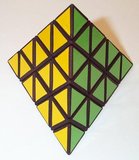
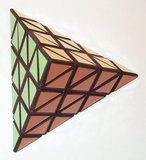
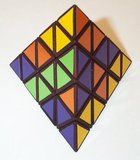
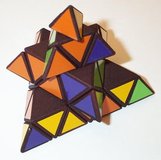
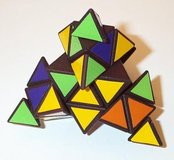
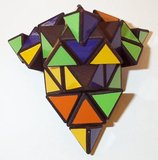
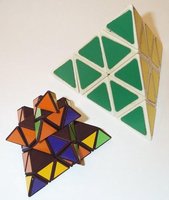
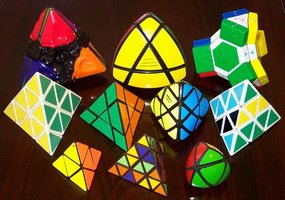
|
I dyed, assembled, and stickered my Shim's Master Pyraminx. I really like this puzzle! It was designed by Timur Evbatyrov and is available on Shapeways. Two photos show relative size - a comparison with an original Tomy Pyraminx, and a group photo including various tetrahedral twisty puzzles. The group photo includes, left to right, row by row from the top: the Hoberman BrainTwist, Meffert's Jing's Pyraminx (designed by Adam Cowan), Meffert's NGP (Platypus), Tomy Pyraminx, a custom Halpern-Meier Tetrahedron (keychain Skewb core) made by Matt Davis, Meffert's Pyramorphinx (a curvy Mastermorphix), Traiphum Prungtaengkit's (Traiphumi's) Mastermorphynx (a custom-made edge-turning Pyraminx), a keychain Meffert's Pyramorphi[n]x, Shim's Master Pyraminx, and a reuleaux Babymorphix custom-made by Taylor Howell. | ||||
|
Shengshou 4-layer / Master Pyraminx - GB 5.1.4
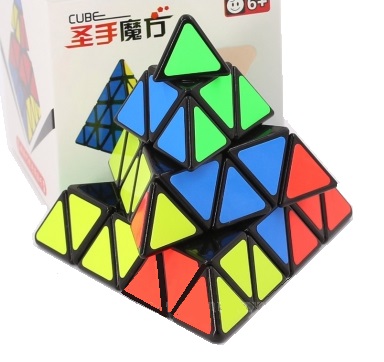

|
Master Pyraminx from Shengshou | ||||
|
QiYi 4-layer / Master Pyraminx - GB 5.1.4
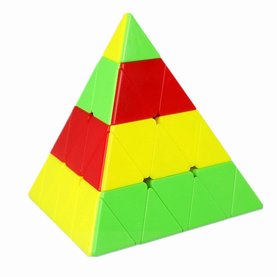
|
Master Pyraminx from QiYi - stickerless version | ||||
|
Confusion Pyramid / Hyper HMT (Fourth Magic Tower) - Sengso
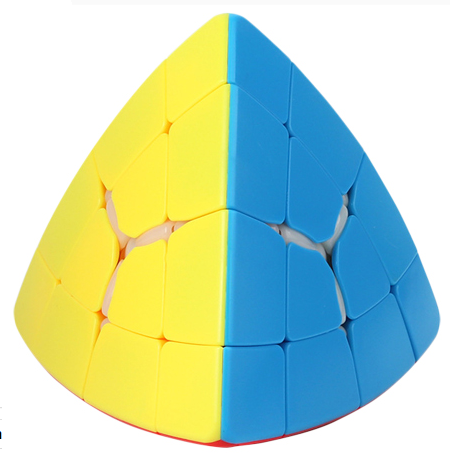
|
A pillowed order-2 HMT that slots in before the true Master Tetrahedron / RX, has been mass-produced by Sengso / Shengshou - they call it the "Fourth Magic Tower."
I think of it as a "Hyper HMT."
It deletes face centers and the inner and outer edges that abut them, very similar in principle to how the Hyperminx (commercially sold as the Master Kilominx and slotting in before the Gigaminx) also deletes centers and two layers of abutting edges. Mentioned by TP member Cow7 in 2010 [T]. Realized by TP member Muffet, who called it "Confusion Pyramid" in 2012 [T]. Mass-produced by Sengso in 2021. |
||||
|
Master Tetrahedron / Master HMT


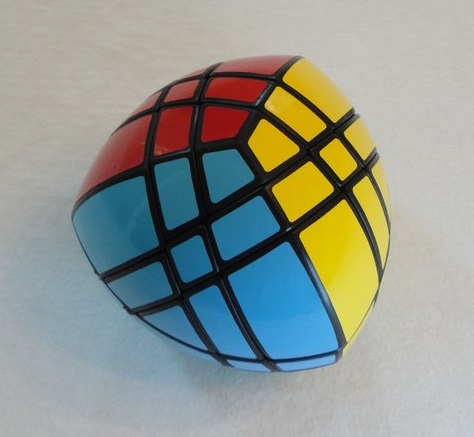
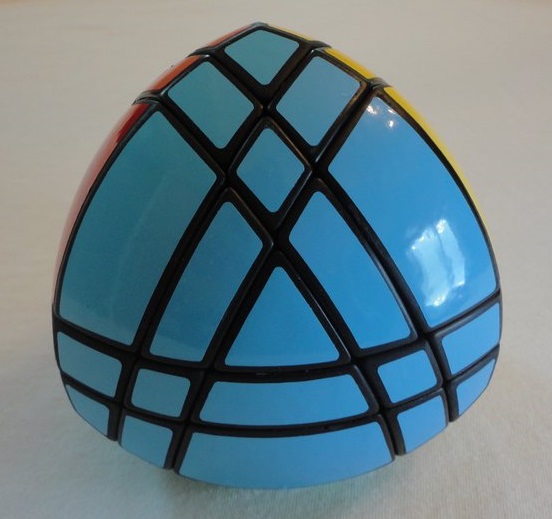
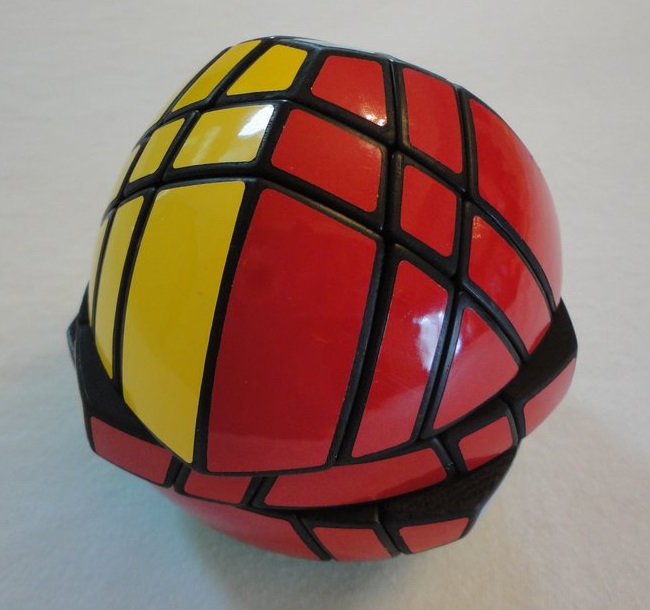
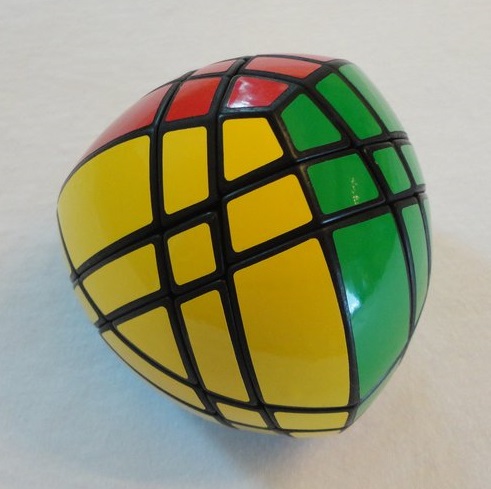

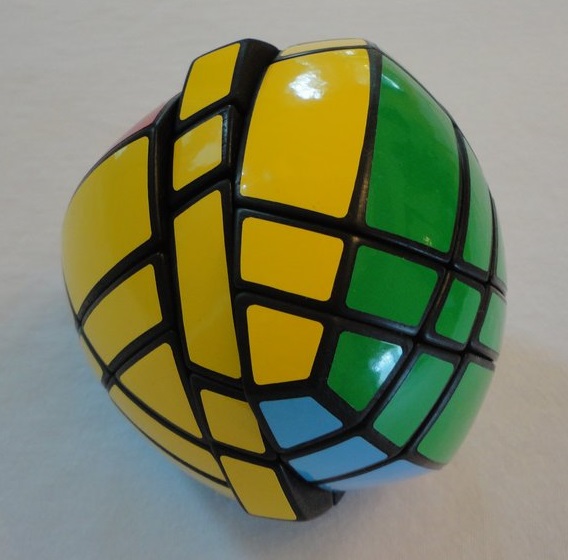
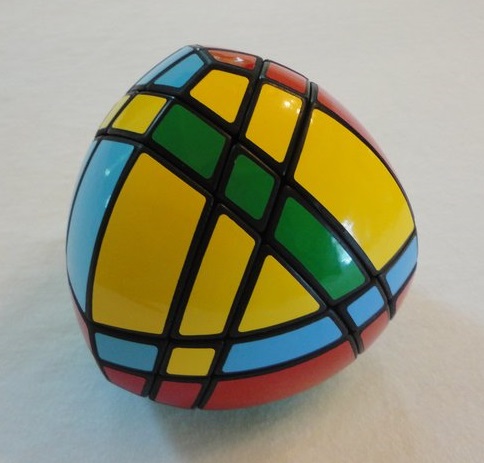
|
The order-2 HMT is called a Master Tetrahedron.
First made by Drew Cormier
[T]
[T].
Drew also made a pillowed version he called the RX. I obtained a Reuleaux Master Tetrahedron made by Hung Nguyen (cublem). |
||||
|
Master Tetrahedron / Master HMT

|
A pillowed order-2 HMT / Master Tetrahedron / RX has been mass-produced by Sengso / Shengshou - they call it the "Fifth Magic Tower." | ||||
| Face/Vertex-turning Order 3+ | |||||
|
Professor Pyraminx - GB 5.1.10 - Timur Evbatyrov / Meffert
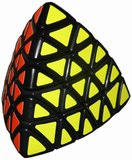
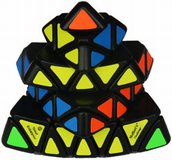
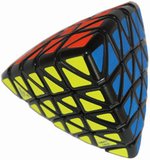
|
The Professor Pyraminx, issued by Mefferts
Designed by Timur Evbatyrov Yet another great design from Timur, mass produced beautifully by Meffert! I love this puzzle! |
||||
|
Elite Hyper HMT (Sixth Magic Tower) - Sengso
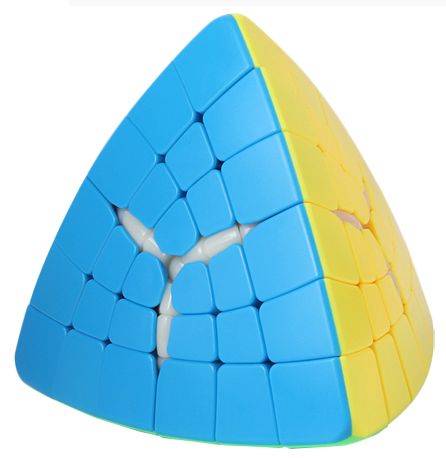
|
This order-3 variation of the HMT relates to the order-3 Elite HMT below in the same way that the order-2 "Hyper HMT" (Fourth Magic Tower) relates to the order-2 Master HMT.
It deletes face centers and the inner and outer edges that abut them. This has been mass-produced by Sengso / Shengshou - they call it the "Sixth Magic Tower." I think of it as an "Elite Hyper HMT." |
||||
|
Elite Tetrahedron / Elite HMT - Chris Hemerich
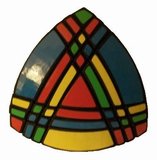
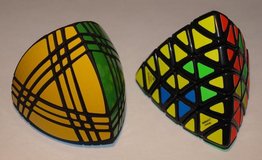
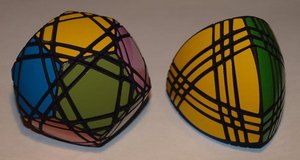
|
Elite Tetrahedron The Elite Tetrahedron was first made by Drew Cormier [T] [T] [T] This pillowed version was made for me by Chris Hemerich [T] [T] [S] [Y] The Elite Tetrahedron is also shown in comparison to Meffert's Professor Pyraminx and Vergo's Master Pentultimate. | ||||
|
Elite Tetrahedron / Elite HMT (Seventh Magic Tower) - Sengso
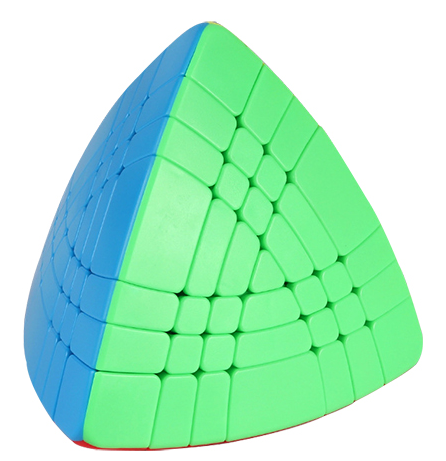
|
A mass-produced order-3 HMT from Sengso / Shengshou | ||||
|
Order-4 Pyraminx / Royal Pyraminx - Timur Evbatyrov

|
The Royal Pyraminx
Designed by Timur Evbatyrov Originally custom 3D-printed, now mass-produced by Calvin's Puzzle I got a blue collector's edition. |
||||
|
Order-4 HMT / Royal Tetrahedron - Drew Cormier

|
The order-4 HMT is Drew's Royal Tetrahedron. [T] | ||||
|
Order-5 Pyraminx / Emperor Pyraminx - Timur Evbatyrov
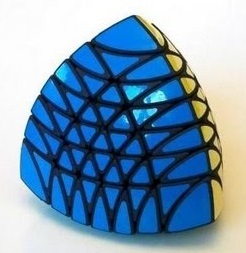
|
Timur's order-5 Pyraminx.
Available for $320 at Evgeniy Grigoriev's Etsy shop. Also at Timur's Shapeways shop. [T] |
||||
|
Order-6 HMT - Gregoire Pfennig
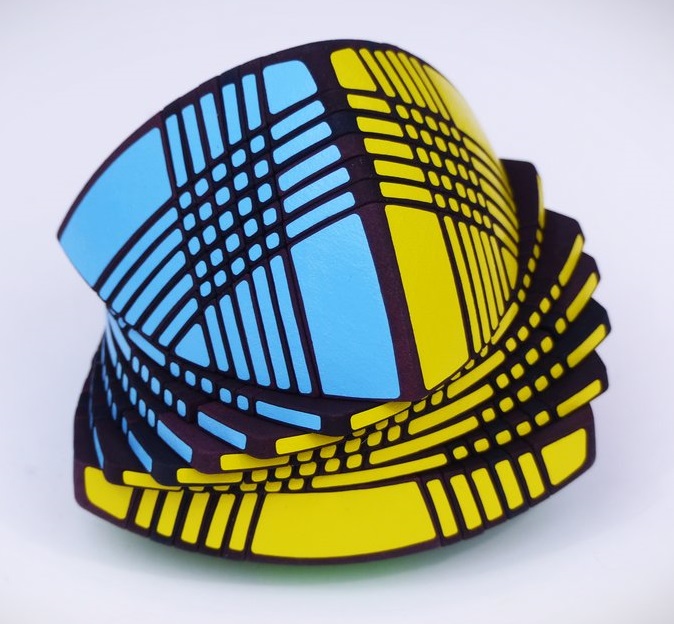
|
Greg's order-6 HMT. [T] | ||||
Edge-turning Order 1

|
|||||
|
Pyramorphix / Pyramorphinx / Ruby's Triangle / Figurenmatch

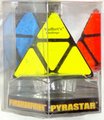


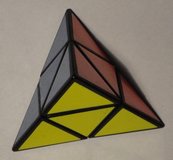
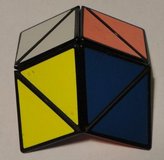
|
136,080 - Rubik, Barry Lockwood
Pyramorphix aka Pyramorphinx, with various clones
Also the East German FigurenMatch Jaap's page This can be solved in the same way as a 2x2x2. |
||||
|
Babymorphix - Taylor Howell

|
The Babymorphix is a Reuleaux Pyramorphix, custom-made by Taylor Howell. | ||||
|
Shengshou 2x2 Mastermorphix (Babymorphix)

|
A mass-produced Shengshou 2x2 Mastermorphix (Babymorphix). | ||||
Edge-turning Order 2

|
|||||
|
Mastermorphix - GB 5.2.3
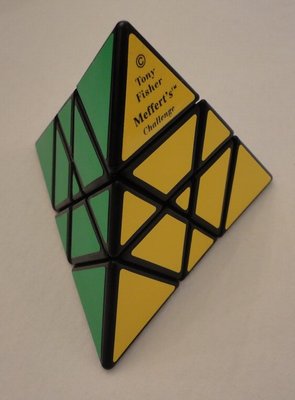
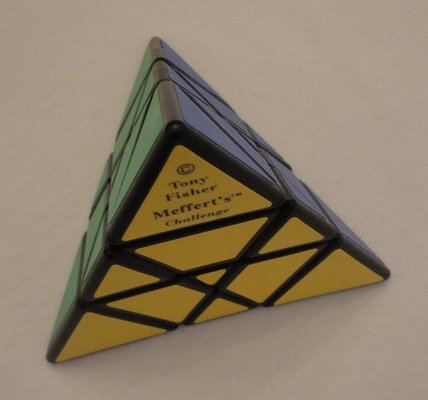


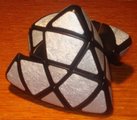
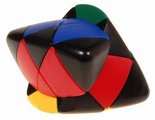
|
Mastermorphix This is a 3x3x3 mod. Center orientations matter. Back in 2005, these were not mass-produced, and hand-made custom versions could sell for over $100. Traditional version designed by Tony Fisher, produced in China, offered with official Fisher stickers by Meffert's - black and white versions. Meffert's "Master Pyramorphinx" (the "curvy" version). Also known as a "Rice Dumpling" (stickerless). | ||||
|
Reuleaux Leaf Tetrahedron - Cornerless Mastermorphix - Uhrik

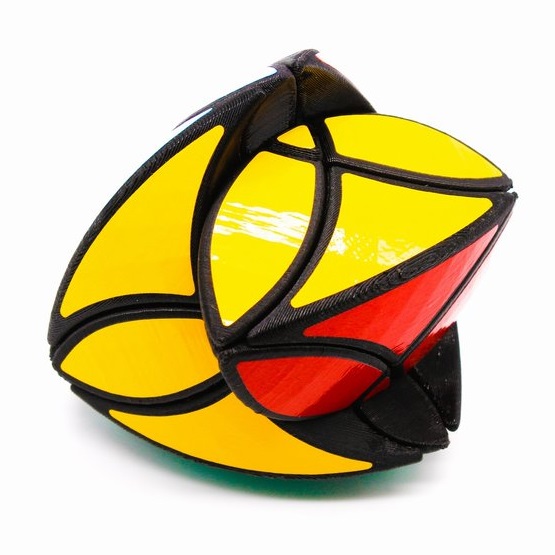
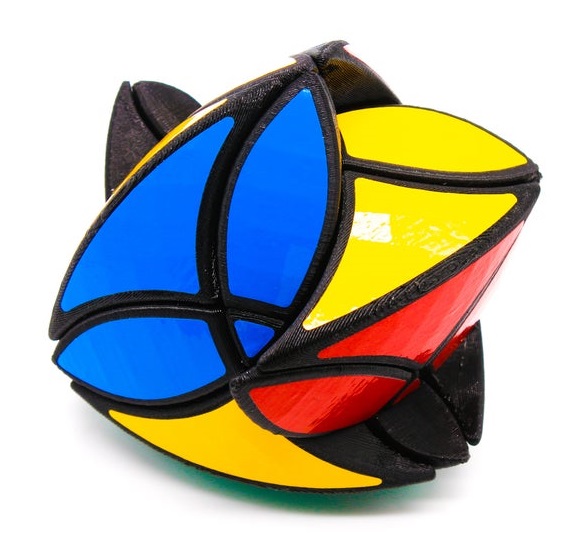
|
Reuleaux Leaf Tetrahedron - designed and 3D printed by Kevin and Jenna Uhrik
See their Etsy shop The Puzzle Artists. This is effectively a cornerless Mastermorphix, but the curved cuts allow jumbling-like moves. NOTE that Qiyi offers a mass-produced non-curved version they call the Clover Pyraminx for about $12. |
||||
|
Clover Pyraminx - QiYi

|
Clover Pyraminx - QiYi | ||||
Edge-turning Order 2

|
|||||
|
Mastermorphynx - GB 5.2.1 - Traiphum Prungtaengkit
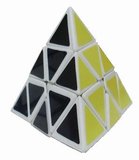

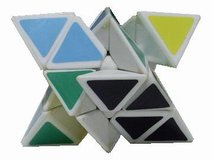


|
From Traiphum Prungtaengkit, of Thailand, an Edge-turning Pyraminx!
He calls it a Mastermorphynx.
[T]
Also shown compared to a curvy Mastermorphix and a Pyraminx. |
||||
Edge-turning Order 2

|
|||||
|
Edge-turning HMT (No name.)

|
An edge-turning HMT. Not made AFAIK. | ||||
| Edge-turning Order 3+ | |||||
|
Megamorphix


|
The Megamorphix. Based on a 4x4x4 cube. Made by Adam Zamora [T], Apollo [T], Curvy Megamorphix by Traiphum [T] | ||||
|
Megamorphix (4-Layer Mastermorphix)

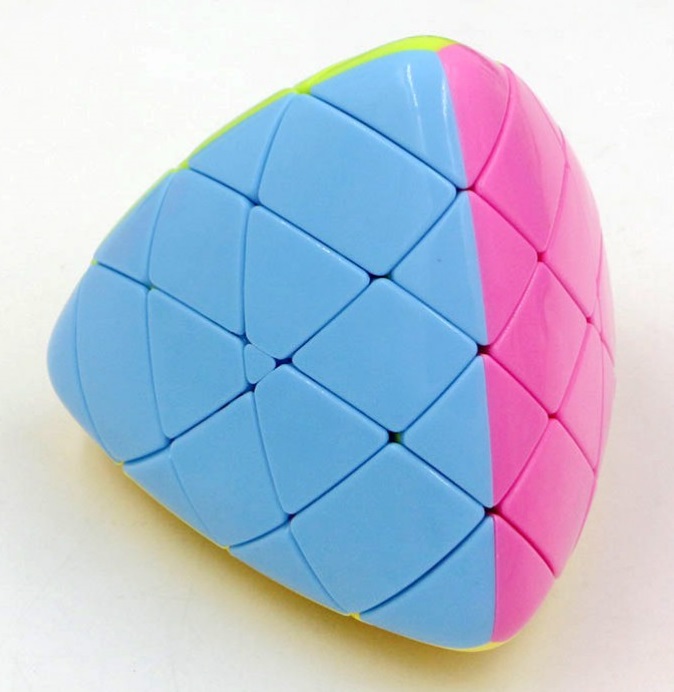
|
Megamorphix (Stickerless version) - released by Moyu | ||||
|
Centerless Megamorphix - GB 5.2.4

|
A Centerless Megamorphix. | ||||
|
Ultramorphix

|
Ultramorphix - based on a 5x5x5 cube. Made by Danny [T], Traiphum [T], judochiou625 [T] Traiphum has made many orders of curvy morphix [T] - 6x6x6 "HexaPhobic" [T]; 7x7x7 [T] | ||||
|
Shengshou / Sengso 5-Layer Mastermorphix - Ultramorphix

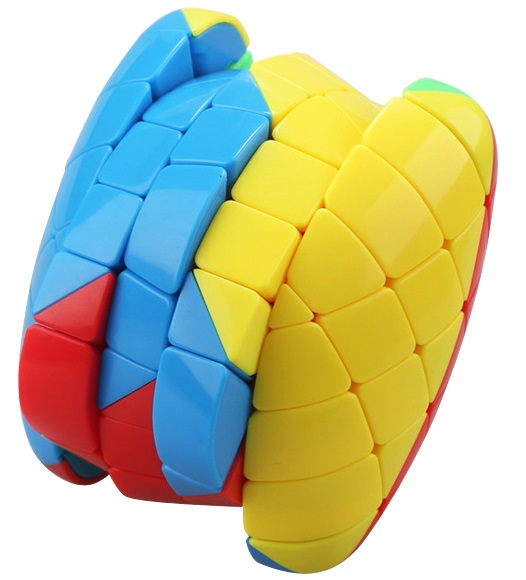
|
A mass-produced Ultramorphix - the 5-Layer Mastermorphix by Shengshou / Sengso. Stickerless version. | ||||
|
Shengshou / Sengso 6-Layer Mastermorphix - Hexaphobic

|
A mass-produced "Hexaphobic" - the 6-Layer Mastermorphix by Shengshou / Sengso. Stickerless version. | ||||
|
Shengshou / Sengso 7-Layer Mastermorphix

|
A mass-produced 7-Layer Mastermorphix by Shengshou / Sengso. Stickerless version. | ||||
|
Shengshou / Sengso 8-Layer Mastermorphix

|
A mass-produced 8-Layer Mastermorphix by Shengshou / Sengso. Stickerless version. | ||||
|
Shengshou / Sengso 9-Layer Mastermorphix

|
A mass-produced 9-Layer Mastermorphix by Shengshou / Sengso. Stickerless version. | ||||
|
Shengshou / Sengso 10-Layer Mastermorphix
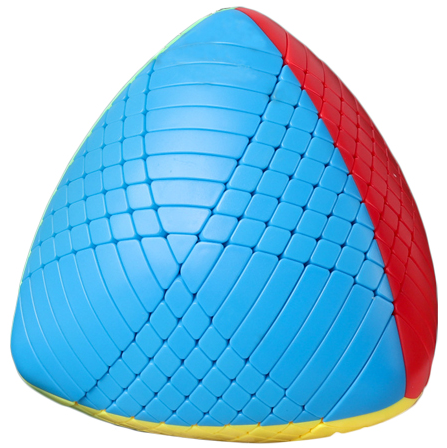
|
A mass-produced 10-Layer Mastermorphix by Shengshou / Sengso. Stickerless version. | ||||
| Hybrid | |||||
|
Combominx

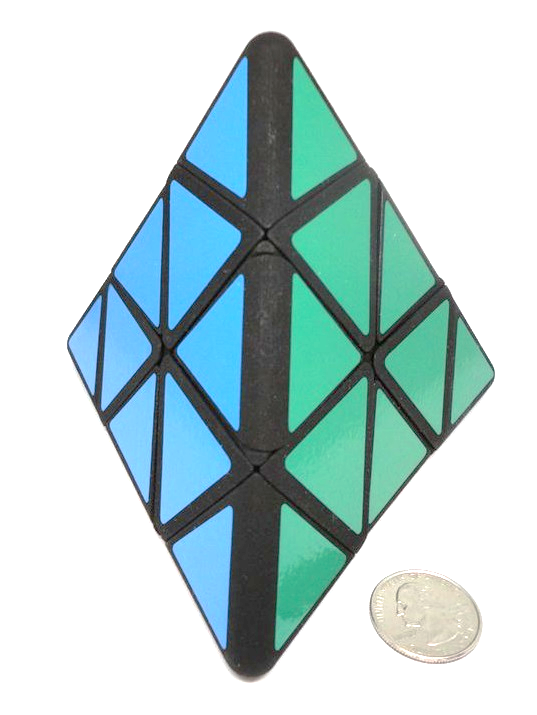
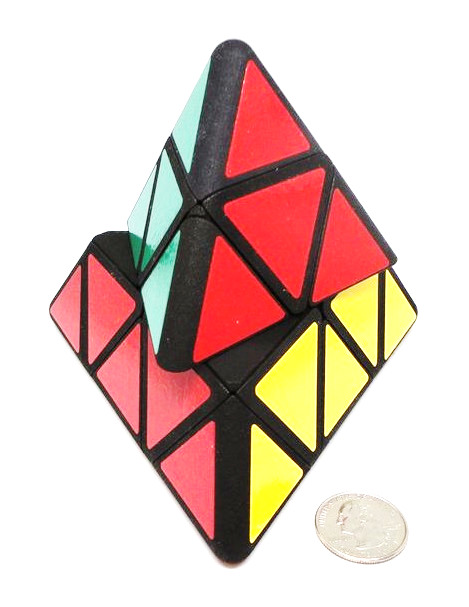
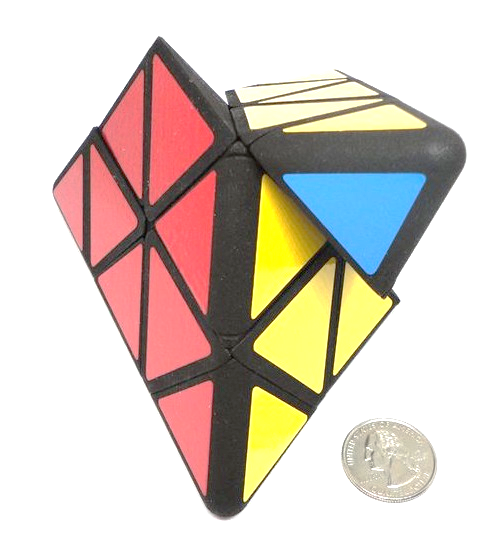
|
Combominx - a custom 3D-printed twisty puzzle designed and made by Ben Streeter.
[T]
It is a tetrahedral puzzle similar in appearance to the traditional Pyraminx - it allows vertex turns but the trivial tips do not turn. It also allows edge turns! Successive edge turns allow shapeshifting, and Pyraminx/vertex turns work in the shapeshifted form. This puzzle is fairly large, but needs to be in order to accommodate the necessary mechanism - even at this scale, the arms anchoring the tips are very thin. It turns well and smoothly, without lockups, and is very stable - I love it! Ben posts as benpuzzles - check out the benpuzzles YouTube channel, and Ben's i.materialise shop. Having some time ago acquired a custom edge-turning (only) Pyraminx, called the Mastermorphynx, made for me by Traiphum Prungtaengkit, of Thailand, I knew I had to add Ben's hybrid to my twisty zoo! |
||||
| Geared | |||||
|
Gear Pyraminx - Timur - Meffert

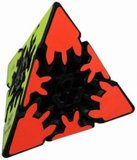
|
Gear Pyraminx - from Meffert's, design by Timur Evbatyrov
(I have black and white versions.) Also a Series II in black. |
||||
|
Gear Mastermorphix

|
A Gear Mastermorphix | ||||
| Circle / Crazy | |||||
|
Crazy Tetrahedron - Mf8 / DaYan
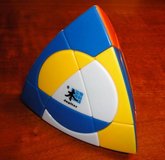
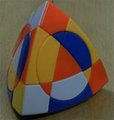
|
Mf8 DaYan Crazy Tetrahedron (Jupiter)
also Standard version (all circles turn with opposite vertex). There are several versions. |
||||
|
Petal Pyramid - Yongjun
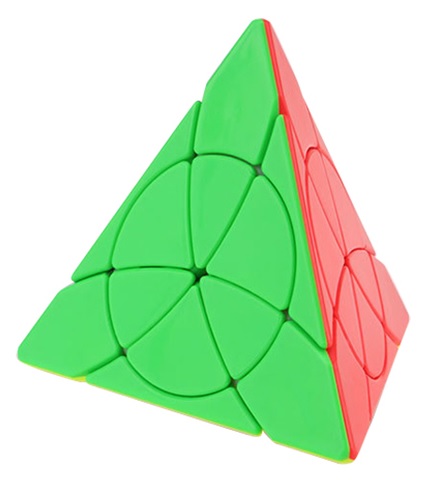

|
Petal Pyramid - Yongjun
Vertex/face turning like the Pryaminx, but without trivial tips. The face disks rotate in place, mixing "tip segments" and "edge segments" among their own kind. |
||||
|
|||||
|
Coin Tetrahedron (Coin Pyramid / Coin Pyraminx) - QiYi

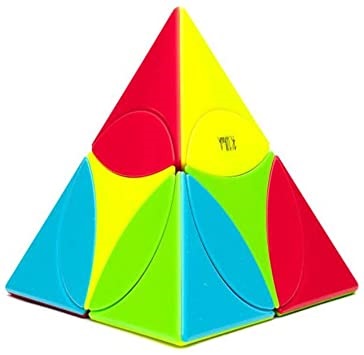
|
Coin Tetrahedron (Coin Pyramid / Coin Pyraminx) - QiYi
The face disks rotate in place, mixing the oval segments on a face. When the face discs with their three oval segments are properly aligned, the vertices can be turned, each permuting three oval segments. This puzzle is very easy to solve. |
||||
| Related | |||||
|
Starburst

|
The Starburst has been mass produced, but was also a common custom mod of a Pyramorphix - Just add tetrahedrons to the "empty" triangular faces (they do not rotate in place). | ||||
|
Vulcano / Trignis - Timur / Meffert
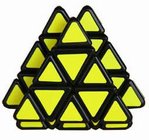
|
From Meffert's, the Vulcano (aka Trignis) designed by Timur Evbatyrov. | ||||
|
Dinomorphix - Traiphum
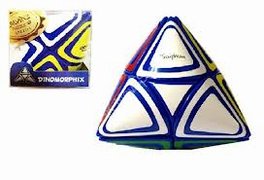
|
Dinomorphix - designed by Traiphumi, produced by Calvin Fan [T] [T] A hybrid face-turning and vertex-turning puzzle - each of the four faces turns like a Babyface puzzle. In addition, each of the four vertices can turn, like the trivial-tipped puzzles with this cut pattern, but since the faces also turn, the corners are tri-partite, making them non-trivial. Fun fact: I helped Triaphum choose the name for this puzzle! | ||||
|
Platypus / Jackpot / NGP (New Generation Puzzle) - Meffert
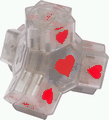
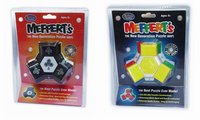
|
Mefferts Jackpot and NGP. Designed by Yusuf Seyhan. Patented back in 2003. Same turning regime as Triaphum's Dinomorphix - the faces turn, and the tripartite tips turn. Issued prior to the Dinomorphix. However, unlike the Dinomorphix, there are hexagonal face-centers and the tips have triangular faces - both of which show orientation that can matter. There are several variations and knock-offs. [W] [W] [W] [W] Jaap says these are related to the Dino Cube, which is very easy to solve. Jaap's page. | ||||
|
Ghost Pyraminx - Lefun

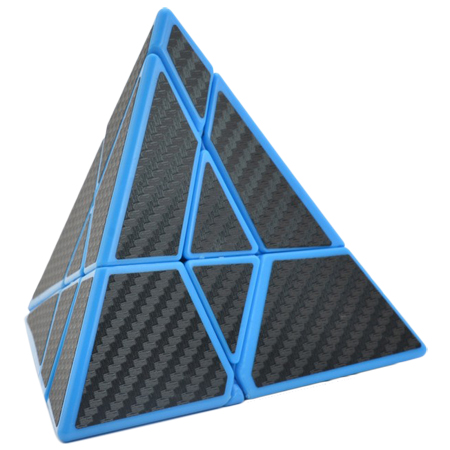
|
Ghost Pyraminx - Lefun
Actually this is a Ghost HMT. |
||||
|
Gemini Pyraminx (Binary Star Pyraminx) - Lefun

|
Gemini Pyraminx (Binary Star Pyraminx) - Lefun | ||||
|
Star Pyraminx - Lanlan

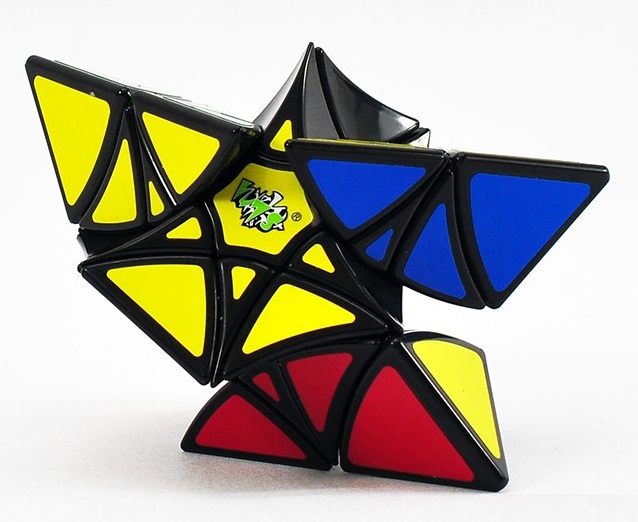
|
Star Pyraminx - Lanlan | ||||
|
Curvy Clover Pyraminx - Lanlan

|
Curvy Clover Pyraminx - Lanlan | ||||
| F | V | E | ||||||
| O1 | O2 | O3+ | O1 | O2 | O3+ | O1 | O2 | O3+ |


|


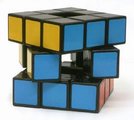




|










|
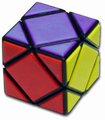
|









|

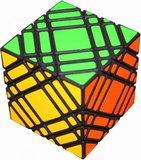

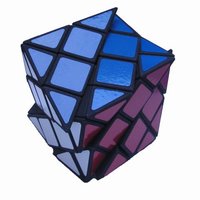

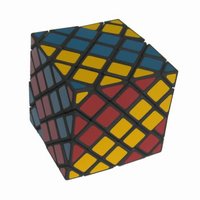
|

|

|
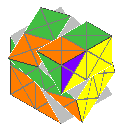
|
| Face-turning Order 1 | |||||||||||||||||||
|
Rubik's 2x2x2 Pocket Cube - GB 3.1.1

|
3.7*106 = 3,674,160 - Erno Rubik; 6-armed spider.
Rubik's Pocket Cube
Jaap's page
Solve using a subset of the 3x3x3 algs.
Algs to finish bottom corners
(begin by positioning 2 or 4): Swap adjacent front bottom corners: {R'D' R F} D {F'R' D R} D2 Swap front left bottom diagonally: {R'D' R F} D2 {F'R' D R} D Leave front left, turn other 3 CCW: R' D' R D' - R' D2 R D2 CW (inverse of above): D2 R' D2 R - D R' D R |
||||||||||||||||||
|
Various 2x2x2 Cubes

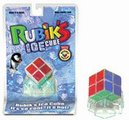
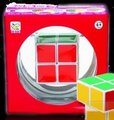

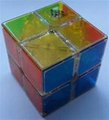
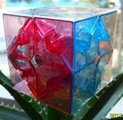
Rubik's Pocket Cube, Studio Mini Cube, Ice Cube, Yuxin 2x2x2, V-Cube V-2, New Spring clear (with transparent stickers), and a version with interior tinted pieces 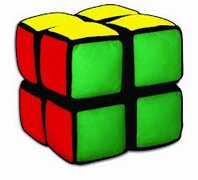
Rubik's Soft Cube A fully functional 2x2x2, about 4" on a side, with fabric-covered soft cubies. |
|||||||||||||||||||
|
Bump Cube Jr.

|
Asymmetric spacing of cuts results in the Bump Cube Jr. made by Thomas [T] | ||||||||||||||||||
|
2x2x2 Mirror Blocks
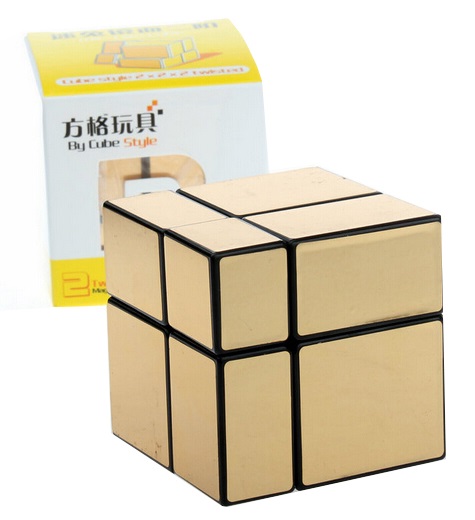
|
A mass-produced 2x2x2 Mirror Blocks Cube | ||||||||||||||||||
|
2x2x2 Ghost Cube
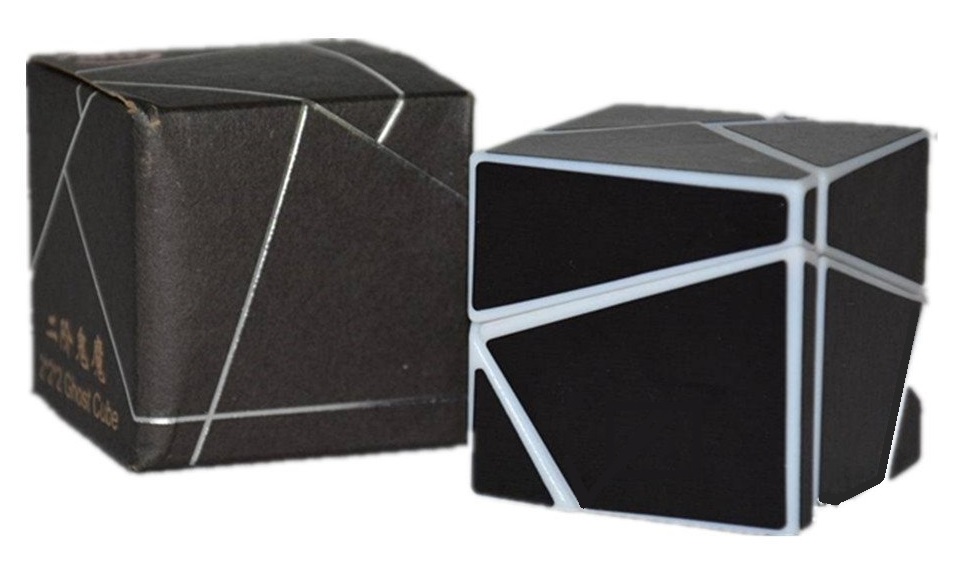


|
Ghost Cube 2x2x2
produced by Lim Cube |
||||||||||||||||||
|
Os Cube
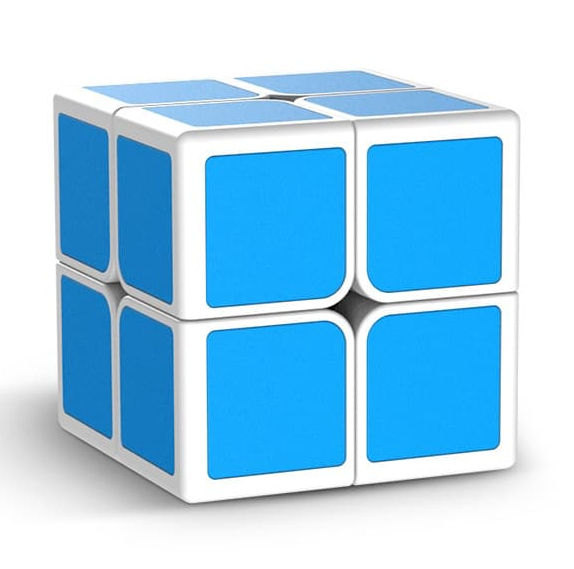

|
Os Cube - a clever 2x2x2 variant designed by Ilya Osipov, produced by QiYi.
A face turn causes internal magnetic components to either retract or extrude some facelets on the cubies. The goal is either to achieve the state where all facelets are retracted, or where all are extruded. A novel mechanism that secured this puzzle a "Top Ten Vote Getters" award in the 2021 IPP Nob Yoshigahara Puzzle Design Competition. |
||||||||||||||||||
| Face-turning Order 2 | |||||||||||||||||||
|
The 3x3x3 Cube
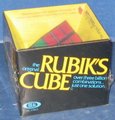
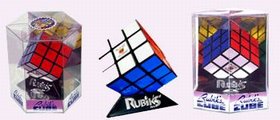
|
4.325*1019 - Erno Rubik - 6-armed spider -
BE887875
3x3x3
Rubik's Cube |
||||||||||||||||||
|
Solving the 3x3x3
20 moves suffice!
In August of 2010,
Morley Davidson, John Dethridge, Herbert Kociemba, and Tomas Rokicki proved that every scrambled position of
Rubik's Cube can be solved in 20 moves or less. (Finding those 20 moves, however, can be quite a challenge!)
Read more at
www.cube20.org.
In January of 1995, Michael Reid proved that the "Superflip" position (corners correct, all edges placed but flipped)
requires 20 moves, so 20 was known to be a minimum.
See the
Speedsolving.com Wiki.
Also see Ed Karrels' page. I learned using a layer-by-layer (LBL) method:
Start in FD matching F: D L D' L' - D' F' D F Start in LD matching L: D' F' D F - D L D' L' Step 5: permute D corners: (begin by positioning 2 or 4): Swap adjacent FD corners: { R'D' R F } D {F' R' D R} D2 Swap front right down diagonally: {R'D' R F} D2 {F'R' D R} D' Step 6: orient D corners: Leave front left, turn other 3 CCW: R' D' R D' - R' D2 R D2 CW (inverse of above): D2 R' D2 R - D R' D R Step 7: permute D edges: If an edge is already in position, hold it in DF. clockwise (viewed from bottom) 3-cycle of DL->DR->DB: L'R - F - LR' - D2 - L'R - F - LR' aka, where ( means L'R, and ) means LR': (F)D2(F) counterclockwise: (F')D2(F')
You can always use the 3-cycle repeatedly, but here are a couple of shortcuts:
Zperm - swap DF-DL and DR-DB:
(M = middle vertical layer, same dir. as L) M'D' M2D' M2D' M'D2 M2D Hperm - swap DF-DB and DR-DL: M2D' M2D2 M2D' M2 Step 8: orient last edges: Flip FU and FR in place:R'D'L' { U' F' U F'} L D R { U F U' F } Flip FU and FD in place: { U' F' U F' } L D R { U F U' F } R'D'L' Flip all four D edges in place: (F2) D2 (F) D2 (F2) D' Here are some extra algs: Superflip (every edge flipped in place) algs - see Michael Reid's page, Walter Randelshofer. Here is one: U R2 F B R B2 R U2 L B2 R U' D' R2 F R' L B2 U2 F2 Here is the checkerboard pattern: U2 D2 F2 B2 R2 L2 Other patterns: Michael Reid. "Six Spot" - U D' R L' F B' U D' Cube in cube - F L F U' R U F2 L2 U' L' B D' B' L2 U
|
|||||||||||||||||||
|
Various Rubik-brand 3x3x3 Cubes

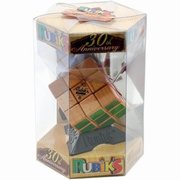
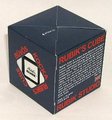



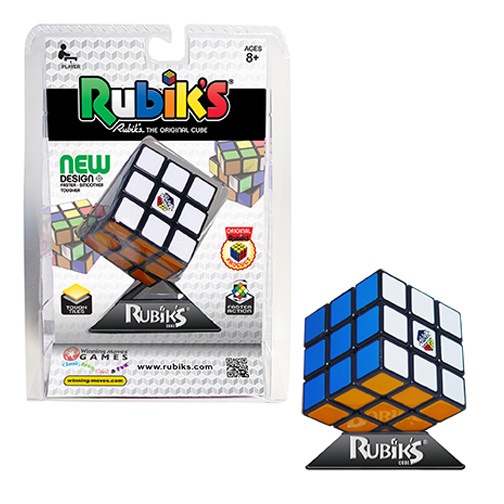
|
|||||||||||||||||||
|
Various 3x3x3 Speedcubes
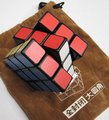
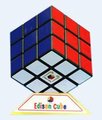



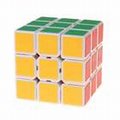
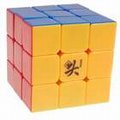
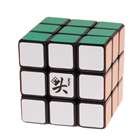
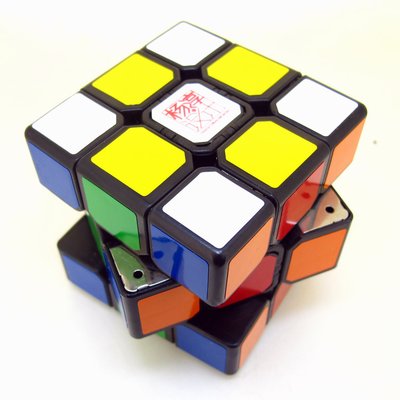
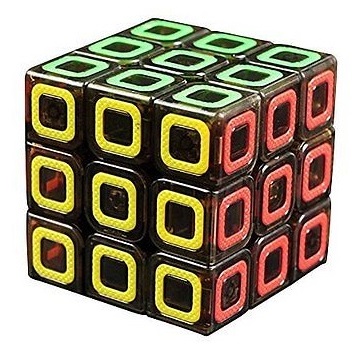

|
|||||||||||||||||||
|
|||||||||||||||||||
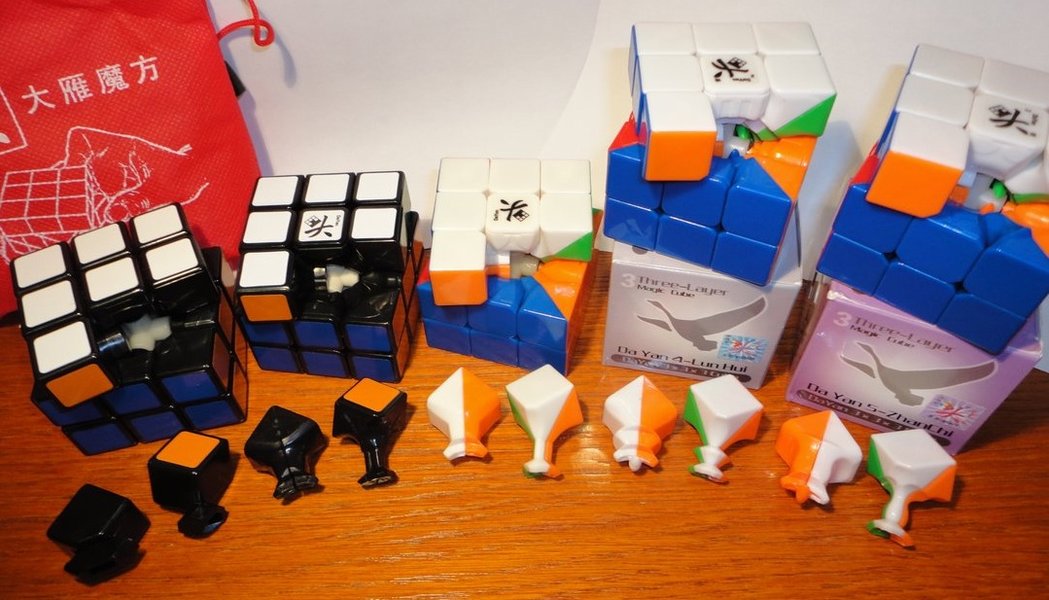 The Chinese twisty puzzle company DaYan has offered a series of five 3x3x3 cubes,
each with a different internal design.
The Chinese twisty puzzle company DaYan has offered a series of five 3x3x3 cubes,
each with a different internal design.
I took this comparison photo showing an edge piece and corner piece from each, to help keep them straight. From left to right: 1 Tai Yan (Big Goose); 2 GuHong; 3 Ling Yun; 4 Lun Hui; 5 ZhanChi. My current favorite is the DaYan 4 Lun Hui. |
|||||||||||||||||||
| Face-turning Order 2 with Feature Modifications (not Shapemods) | |||||||||||||||||||
|
Bump Cube / Rubik's Mirror Blocks - Hidetoshi Takeji
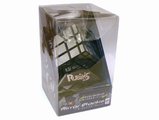
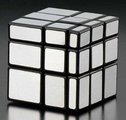
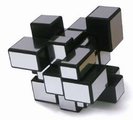
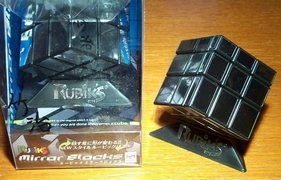
|
Rubik's Mirror Blocks (aka Bump Cube) designed by Hidetoshi Takeji. The Bump Cube was entered in the IPP 2006 Design Competition. The hand-crafted version had been for sale at $320. I got a mass-produced boxed copy signed by Hidetoshi-san. A key innovation and variation on Rubik's theme - in this case, you don't solve by color. Rather, the center has been offset so that every piece's three dimensions differ from every other piece's dimensions. The cube must be solved according to shape! When scrambled, it becomes a bumpy mess that can be very confusing on first encounter. Fortunately, it can be solved using the same algorithms developed for Rubik's Cube. |
||||||||||||||||||
|
Hanzoh aka Half-turn Cube - Oskar van Deventer

|
Hanzoh aka Half-turn Cube produced by Oskar [T], also made by Hidetoshi Takeji [T], based on an idea by Takafumi Haseda | ||||||||||||||||||
|
Void Cube - Katsuhiko Okamoto
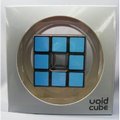

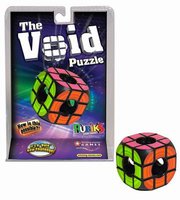
|
1/12 of a normal 33; 3.60*1018 - Katsuhiko Okamoto
The Void Cube, designed by Katsuhiko Okamoto.
Manufactured by Gentosha Toys. Purchased from Torito. Also a more recent Rubik's Void. The Void Cube won the Jury Grand Prize in the IPP 2007 Design Competition. It is kind of an "inside joke" for cube fans who know how the original Rubik's 3x3x3 internal mechanism works by employing a six-armed spider fixed to the centers. The Void cube has no centers and no internal spider! How do the pieces stay together? A design triumph. Spawned other "holey" designs - e.g. the Holey Megaminx, the Holey Skewb. When solving the Void Cube, you might run across a parity problem. To see the internals, see this thread on TwistyPuzzles. |
||||||||||||||||||
|
Edges-only 3x3x3 - Smaz
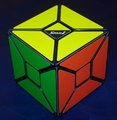
|
An Edges-Only cube from "Smaz." | ||||||||||||||||||
|
Edges-only Void 3x3x3

|
An Edges-Only Void cube. | ||||||||||||||||||
|
Simple Overlapping 3x3x3 - Kevin Phelan
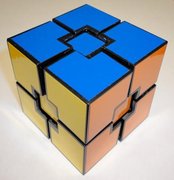
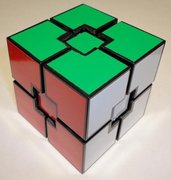
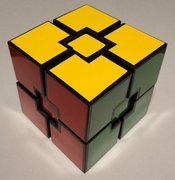
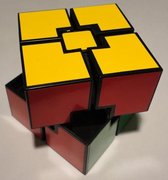
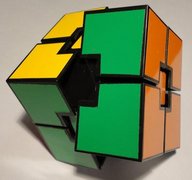

|
I received a pleasant surprise in the post, in the form of this great Simple Overlapping Cube twisty puzzle, cleverly made by TP forum member "Zzupler" (Kevin Phelan, of Ireland) [T], and originally designed by David Calvo [T]. This "corners-only" 3x3x3 is kind of the brother to the "edges-only" 3x3x3 above. It is nicely done and turns very smoothly. Thanks, Kevin! | ||||||||||||||||||
|
Brilicube
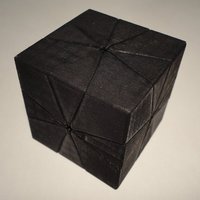

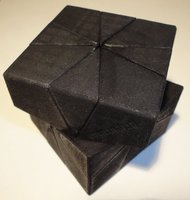

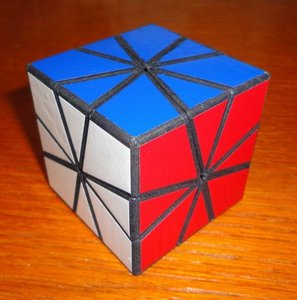
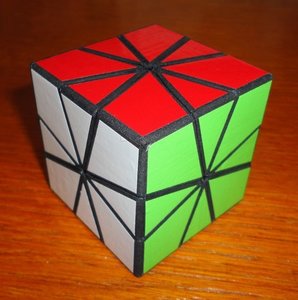
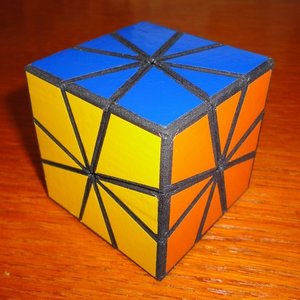
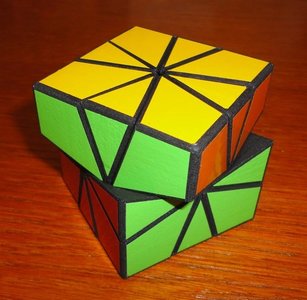
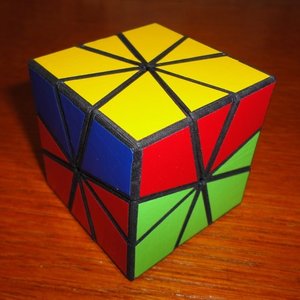
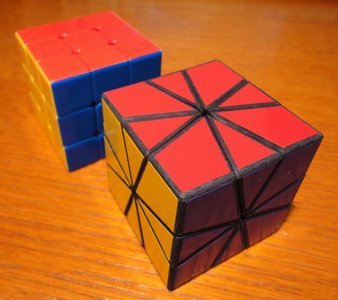
|
The Brilicube.
Originally designed by Aleh Hladzilin.
[T]
It is a 3x3x3 cube with hidden face centers. This version purchased from the Shapeways shop of "grigr." [T] This is the first Shapeways puzzle I got in black strong flexible material. It started very tight and difficult to move, but is better after much wearing of the pieces, and lubrication. |
||||||||||||||||||
| Face-turning Order 3+ | |||||||||||||||||||
|
4x4x4

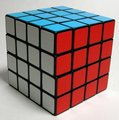
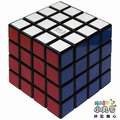
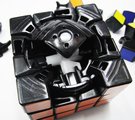
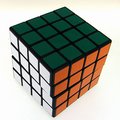
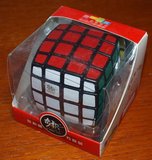
|
7.4*1045 - Peter Sebesteny - grooved sphere
4x4x4
Rubik's Revenge Eastsheen A4 (a different mechanism) Maru 4x4x4 Shengshou 4x4x4 Ghost Hand 4x4x4 QJ Pillowed 4x4x4 Moyu Aosu 4x4x4 stickerless
There are now several 4x4x4 mechanisms available - some of which are superior to the original Revenge,
which is very stiff and
prone to the center stems breaking.
|
||||||||||||||||||
|
Solving the 4x4x4
Method: Reduction to 3x3x3
Steps:
Solve centers - Intuitively -
Pair up edges
When straight across, do:
NOW use 3x3x3 algs for solving steps 3a through 3f.
Use 3x3x3 algs for steps 3g and 3h, too - BUT there may be parity problems.
To swap UF with UB edge pairs:
To flip UF edge pair: If it seems like it's not working, it's probably because you're mistakenly doing D2 (DOWN) rather than B2 (BACK), or R and L rather than r and l! Mind those lower-case inner slice moves! DONE! |
|||||||||||||||||||
|
5x5x5
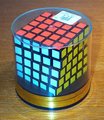
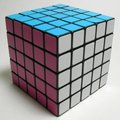
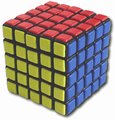
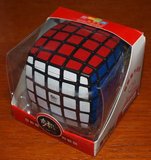
|
2.8*1074 - Udo Krell - 6-armed spider
5x5x5
Rubik's Wahn Professor Cube Eastsheen A5 (a different mechanism) QJ Pillowed 5x5x5 |
||||||||||||||||||
|
6x6x6
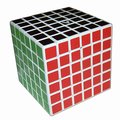
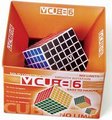
|
1.57*10116 - Panagiotis Verdes
6x6x6
V-Cube 6 from Verdes Innovations. |
||||||||||||||||||
|
7x7x7
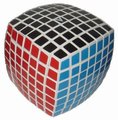

|
1.95*10160 - Panagiotis Verdes
7x7x7
V-Cube 7 from Verdes Innovations. Verdes worked diligently over several years to finally come up with an internal mechanism that would allow cubes beyond 5x5x5 to be made. Prior to their achievement, most assumed this would be impossible due to fundamental geometrical limitations of the spherical cutting patterns employed inside the cube mechanism. Basically, as the cube grew larger to accommodate more edge pieces, some pieces would no longer have any way to connect to the core. Verdes' design ideas are the subject of a key patent. There have been several alleged infringements, coming out of Asia. Verdes has produced a 6x6x6 and 7x7x7, but even though their method allows up to an 11x11x11, only clones exist beyond 7x7x7. You can find 8x8x8, 9x9x9, and 11x11x11 online. They are controversial among collectors because of the perception of disrespect to Verdes. As an exercise in what is possible, Oskar van Deventer produced a 17x17x17 of his own design, called "Over the Top." [Y] [S] [W] |
||||||||||||||||||
| Vertex-turning Order 1 | |||||||||||||||||||
|
Skewb - GB 3.2.1
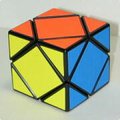

Modern Speed Skewbs 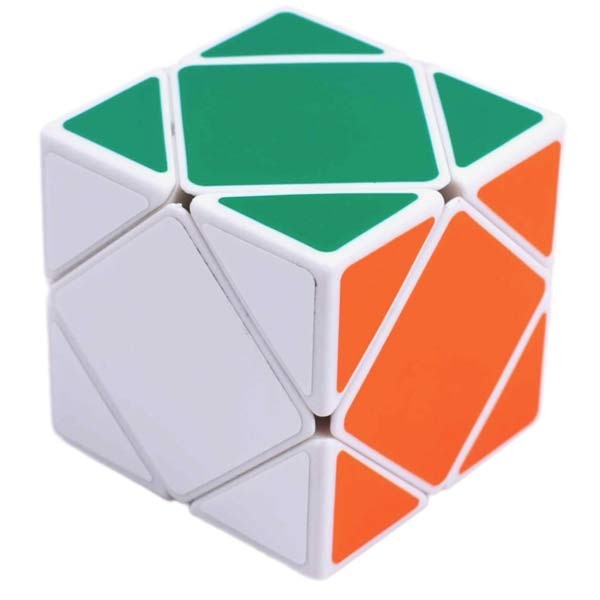
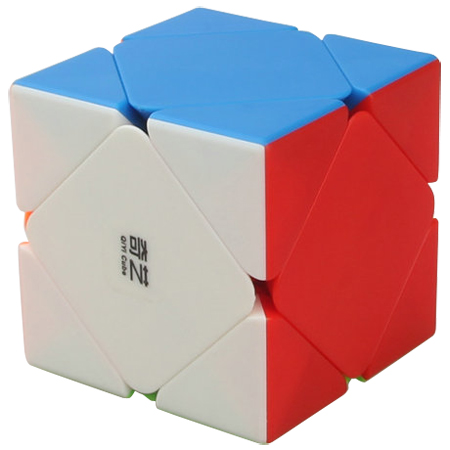
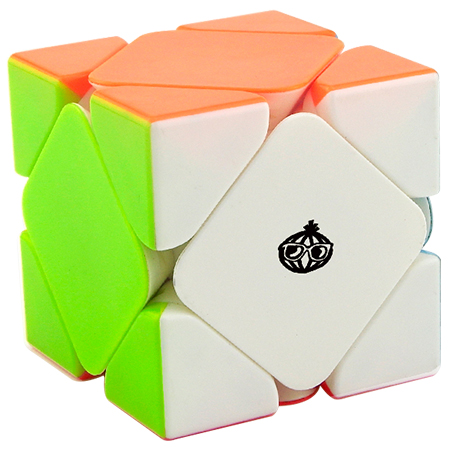
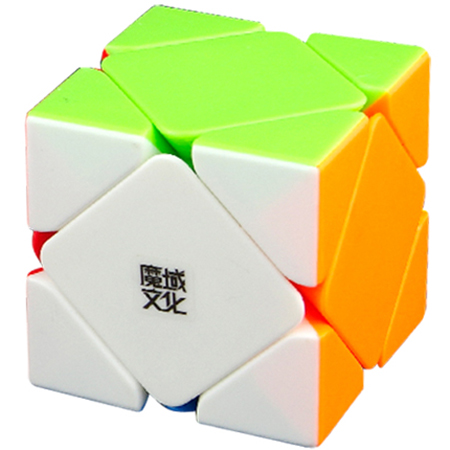
|
3.1*106 = 3,149,280 - Tony Durham
The Skewb - The order-1 vertex-turning cube
(Mefferts stickered and tiled versions)
Modern Speed Skewbs
|
||||||||||||||||||
|
Solving the Skewb
Jaap's page Meffert's solution Hold the Skewb with one face towards you. The upper right corner is R, and the upper left corner is L.
The ONLY algorithm you need is the "Sledgehammer"
(SH)
Also, y2 means spin the whole cube around its vertical axis 180 degrees so its back faces you.
|
|||||||||||||||||||
|
Holey Skewb / Void Skewb
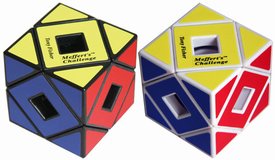

|
Holey Skewb twins from Meffert (designed by Tony Fisher)
Meffert's Pillowed Holey Skewb, in black, from PuzzleMaster |
||||||||||||||||||
|
Double Skewb - Moyu Meilong
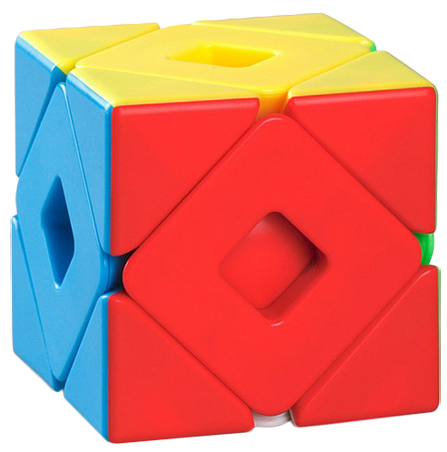
|
Double Skewb - designed by Guan Yang, produced by Moyu Meilong
It may look like the Holey Skewb, but this variant has an internal colored core visible through the face openings, that will turn in conjunction with various Skewb moves, behaving like a Pyraminx. A solved cube must also restore the proper arrangement of the internal colors. |
||||||||||||||||||
|
Asymmetrically cut Skewbs

|
Asymmetric spacing of cuts, or asymmetric cuttings, results in different families of puzzles, such as Okamoto's Offset Skewb. | ||||||||||||||||||
|
Container Cube (Skewb)
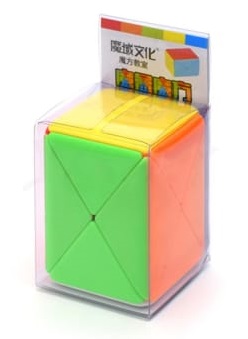


|
Container Cube - originally a custom Skewb mod by Tony Fisher, now mass-produced by Moyu | ||||||||||||||||||
|
Fisher Skewb - Moyu
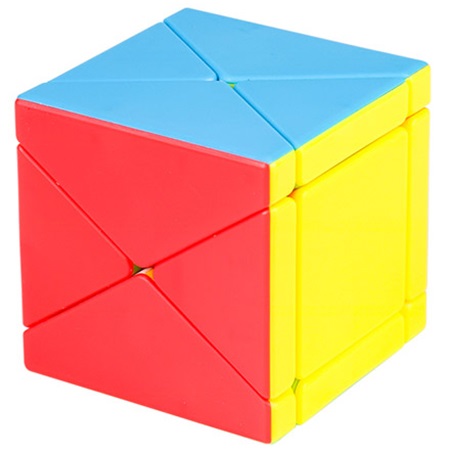
|
Fisher Skewb - Moyu
Designed by Nathan Wilson |
||||||||||||||||||
| Vertex-turning Order 2 | |||||||||||||||||||
|
Just as with the O2 tetrahedral puzzles,
three basic O2 VT forms arise as the two O2 cuts (blue) are moved away from (or toward) the original Skewb cut (red).
In these O2 puzzles, the blue cuts are present but the red Skewb cut is not.
Carl shows the cuts moving inwards from trivial tips, converging on the single skewb cut, which the animation stops before reaching: 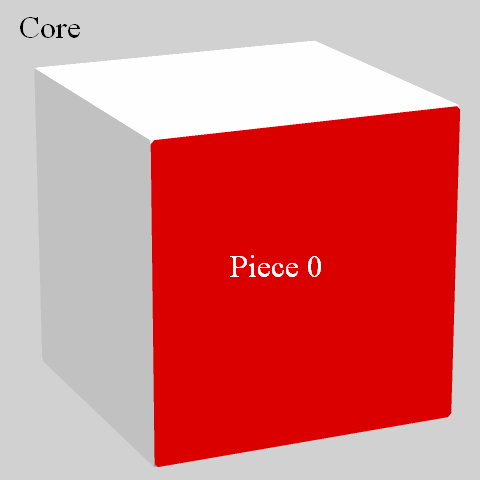
|
|||||||||||||||||||
| Compy Type | |||||||||||||||||||
|
Compy Cube - Jason Smith

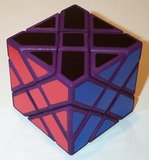
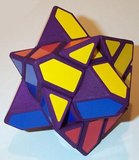
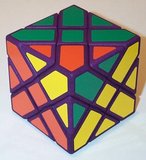
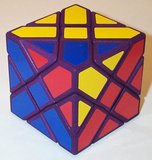
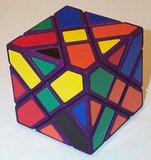
|
I bought one of the large versions of Jason Smith's first run of the Compy Cube. [T] [T] The Compy Cube (aka Shallow Dino, aka Sausage's Cube) is a full custom 3-D print. It is easy to solve intuitively, requiring no memorized algorithms. I dyed my Compy Cube purple, just to be different. | ||||||||||||||||||
|
Curvy Dino

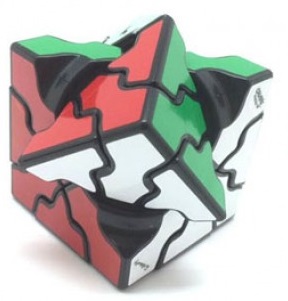
|
Curvy Dino - designed by Evgeniy Grigoriev, issued by Calvin's Puzzle
Same as a Compy Cube. |
||||||||||||||||||
| Dino Type | |||||||||||||||||||
|
Dino Cube - GB 3.2.4
There are four sticker-variations of the original vintage Dino Cube:
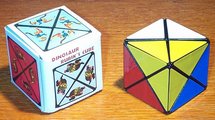
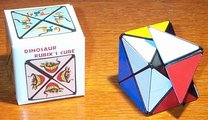
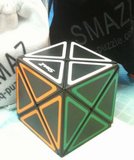
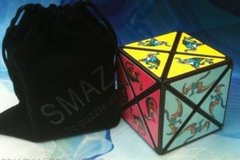
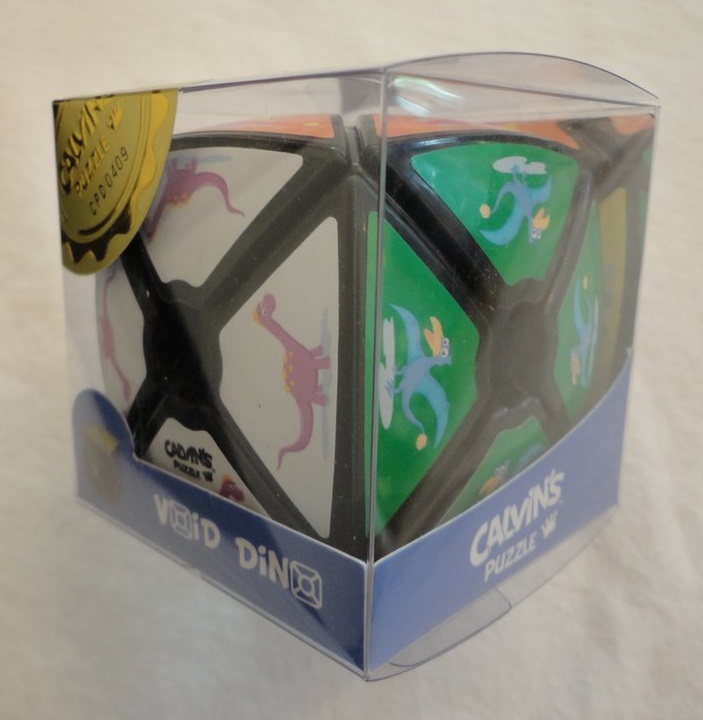
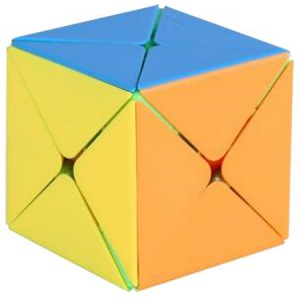
|
James R. Holloway 1995
I have an original boxed four-color version.
(I traded another one to Kevin Uhrik for a Master Octahedron.)
The Dino has been re-issued by Smaz, who provided the version with the attractive hollow stickers.
I also got a version with repro Dino stickers.
U.S. patent 6056290 I got a pillowed void dino cube from Calvin. There are many cheap modern versions available - I got a stickerless Sengso Legend 8 Axis Dino Skewb. |
||||||||||||||||||
|
Rainbow Cube
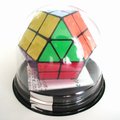
|
2.4*108 = 239,500,800 - Bethel Japan
Rainbow CubeComes in 7-color and 14-color versions. Very easy to solve intuitively. Jaap's page When the Dino Cube became scarce, the Rainbow Cube was a good substitute - they are basically the same puzzle - the Rainbow Cube is a cuboctahedral form of the Dino. A common mod was to transform a Rainbow back into a Dino. Original Bethel Rainbow Cubes are now rare in their own right. |
||||||||||||||||||
|
Dino Cylinder - Smaz
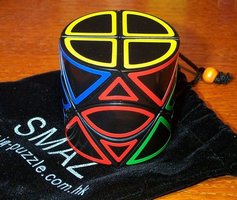
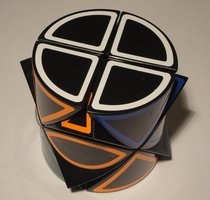
|
Hong Kong puzzle designer and craftsman Smaz has mass-produced his Dino Cylinder design [T] [T]. His original "hollow" stickers make for a beautiful puzzle! It is even shipped in a nice black velour drawstring bag. This puzzle solves like a Dino or Rainbow and is fairly easy. However, unlike the Dino, this puzzle exposes corner pieces each of which can be independently oriented in one of 3 positions. Using the same notation I used for the Mosaic Cube, here is an algorithm to rotate the df corner clockwise by 120 degrees: ur' df' dr' -- df dr ur -- uf df uf' In the second photo, I have applied this to all eight corners. | ||||||||||||||||||
|
Redi Cube - Oskar van Deventer
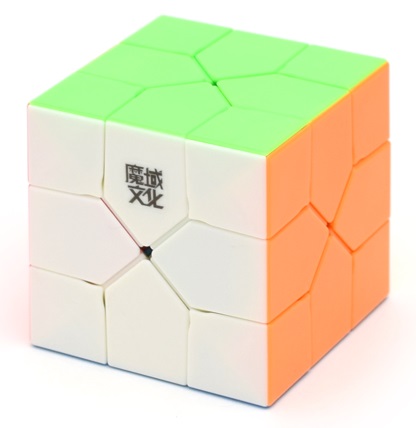

|
The Redi Cube by Oskar van Deventer
Originally a custom 3D print, now mass-produced by Moyu Essentially a Dino with visible corners It is easy to solve intuitively - the only difficult step might be to rotate a single corner 120 degrees. Really this amounts to a 3-cycle on the pieces surrounding that corner - use an edge adjacent to an adjacent corner as a parking place. |
||||||||||||||||||
|
8 Petals Cube - Yuxin

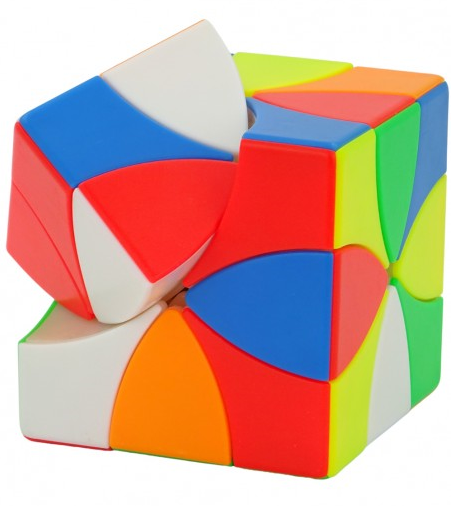
|
8 Petals Cube - Yuxin
Essentially the same as a Redi Cube. |
||||||||||||||||||
|
Honey Copter - Lanlan

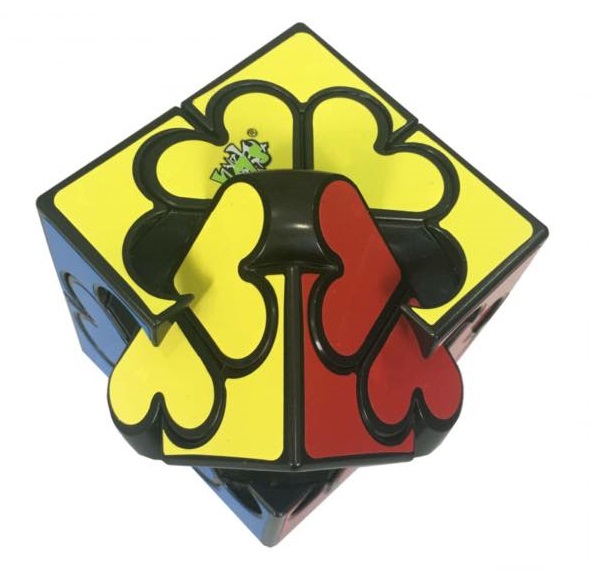
|
Honey Copter - LanLan
Essentially the same as a Redi Cube. |
||||||||||||||||||
|
X-Box Cube - Pitcher
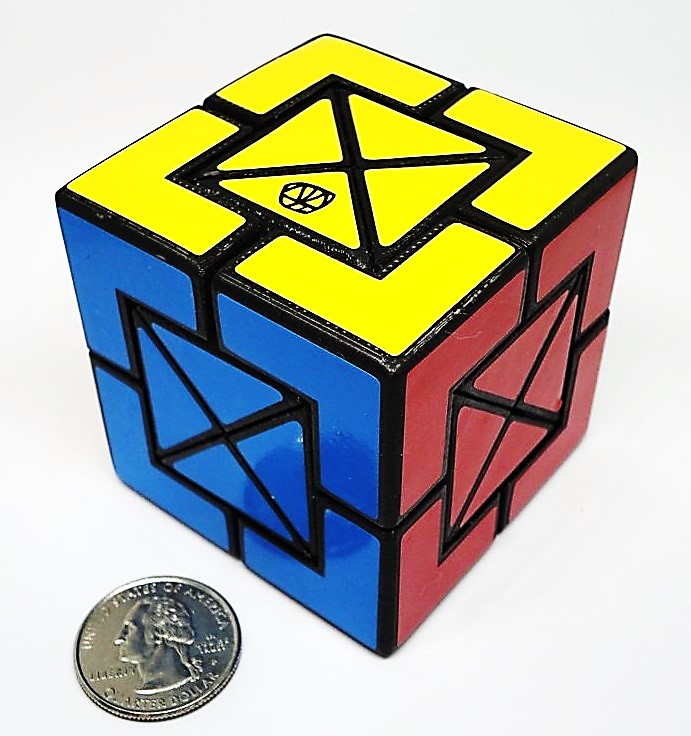
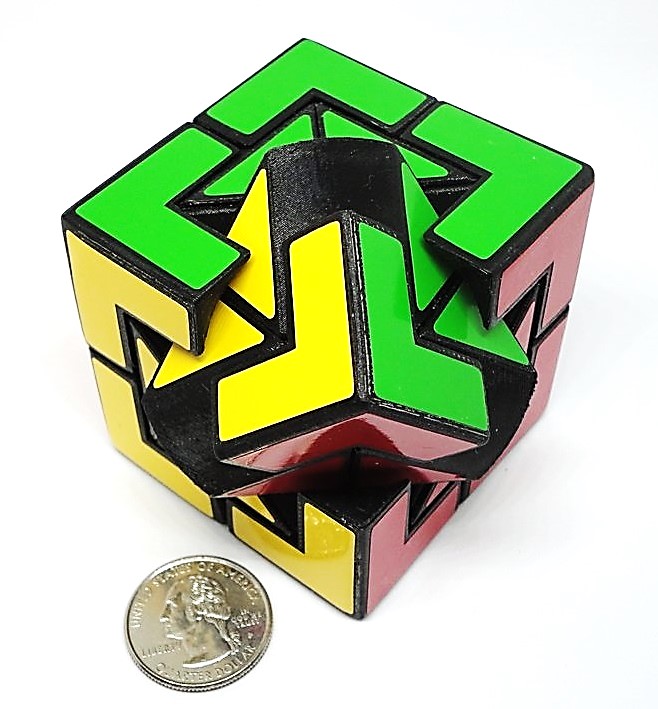

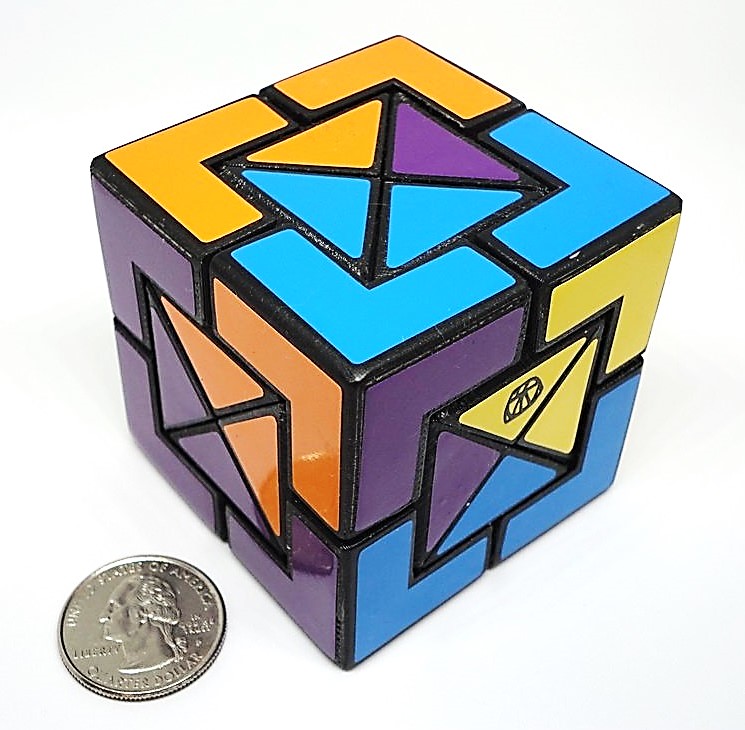
|
X-Box Cube - designed by Dave Pitcher, made by
Chewie's Custom Puzzles
A variant of the vertex-turning Dino Cube, where corners are prominent but as usual do not permute. Simple but I like it. Essentially the same as a Redi Cube, and in turn very similar to the Honey Copter. |
||||||||||||||||||
| Master Skewb Type | |||||||||||||||||||
|
Master Skewb - GB 3.2.2 - LanLan
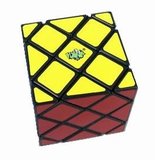


|
Lanlan Master Skewb in black (also have one in white)
This is a relative of the FTO, and the Rex Cube is in turn a relative of this.
Here is a diagram by "Allagem" (Matt Galla)
[T]
showing how the Master Skewb and FTO are similar:

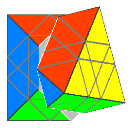
The MS corners have no equivalent on the FTO, but they do have equivalents (the face centers) on GB 4.1.4 [T]. |
||||||||||||||||||
|
Master Skewb - GB 3.2.2 - "Cublem"
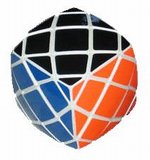
|
A pillowed white Master Skewb made by TP forums member "Cublem" [T] I bought this before the LanLan mass-produced version came out. It wasn't the first or the last time I have bought an expensive hand-made (or 3D printed) puzzle only to see an inexpensive mass-produced version appear later. Most collectors run this risk and accept it. | ||||||||||||||||||
|
Rex Cube - GB 3.2.6 - Drew Cormier


|
Drew Cormier's Rex Cube
[T]
is equivalent to a cornerless Master Skewb [T]. First designed by Drew Cormier back in early 2009 [T] [Y], then produced commercially (without his knowledge) [T]. Now offered via Meffert, with a royalty going to Drew. Drew's Praxis Cube (I don't have) is an "axised" Rex. [T] |
||||||||||||||||||
|
Super Ivy Cube - QiYi
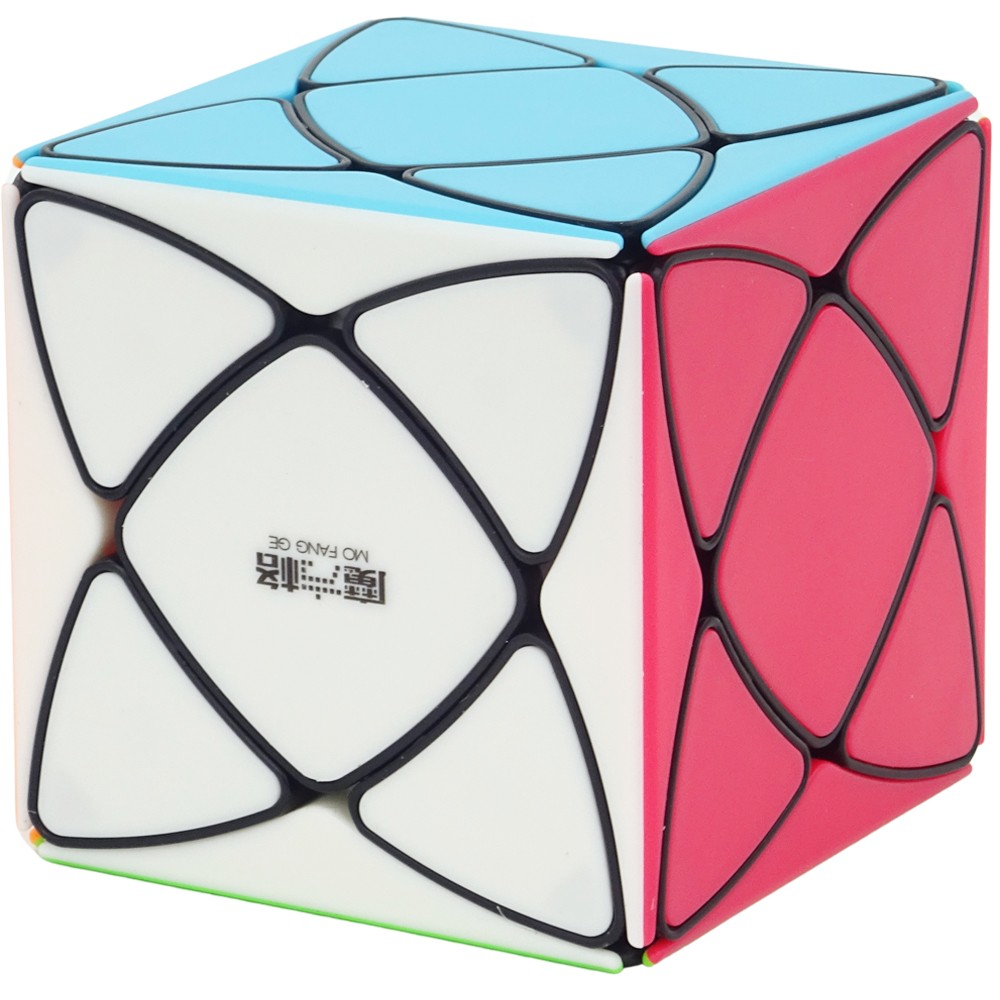
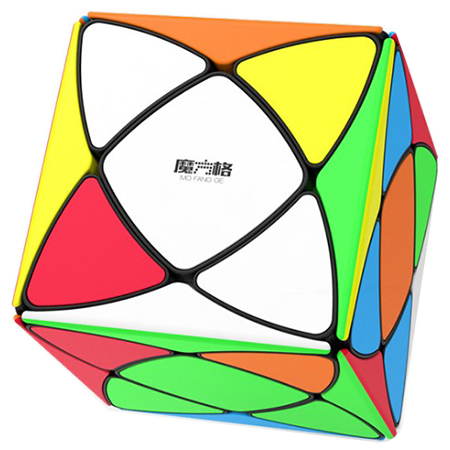
|
Super Ivy Cube - from Qiyi. Equivalent to the Rex Cube. | ||||||||||||||||||
|
|
|||||||||||||||||||
|
Multi Skewb
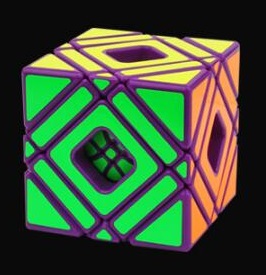

|
Multi Skewb - designed by Gregoire Pfennig, produced by YuXin I got a limited edition purple. |
||||||||||||||||||
| Asymmetric Vertex-turning Order 2 | |||||||||||||||||||
|
Dino Skewb / F-Skewb

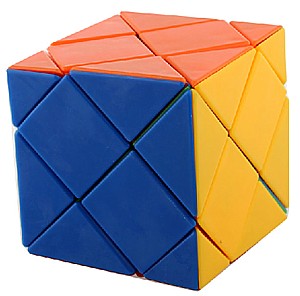
|
Dino Skewb (F-Skewb) - designed by Timur Evbatyrov, produced by DaYan An order-2 vertex-turning, asymmetric puzzle - corners with small tips do Dino turns with their neighboring 3 square face pieces and 3 edge pieces, as well as Skewb-like turns with the further layer that move more than half the cube; corners with large 3-part tips are part of Skewb-like turns only that move less than half the cube. | ||||||||||||||||||
|
DaYan Master F-Skewb

|
DaYan Master F-Skewb (black) | ||||||||||||||||||
| Vertex-turning Order 3 | |||||||||||||||||||
|
The O3 VT combines the Skewb w/ each O2 VT form.
In these O3 puzzles, the blue cuts are present along with the red Skewb cut.
|
|||||||||||||||||||
|
Skewb + Master Skewb
Elite Skewb - GB 3.2.3 - Eric Vergo, Drew Cormier 
|
This is the order-3 vertex-turning cube - GB 3.2.3 - a Skewb combined with a Master Skewb. It is called the "Elite Skewb" (but could also be a "Professor Skewb"). First made by Drew Cormier [T]. Eric Vergo made this Elite Skewb for me [T]. It's instance #1! | ||||||||||||||||||
|
Elite Skewb - Mf8

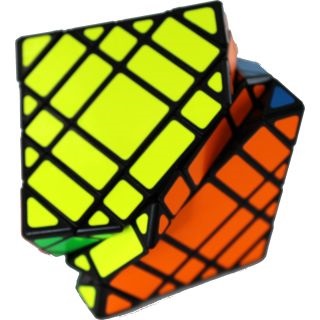
|
Elite Skewb - mass-produced by Mf8 | ||||||||||||||||||
|
Skewb + Dino
Dino Skewb - GB 3.2.5 - Tom van der Zanden 
|
Dino Skewb by TomZ [T] [W] [S] | ||||||||||||||||||
|
Skewb + Compy
Compy Skewb - Tom van der Zanden 
|
TomZ's Compy Skewb [T] [Y] | ||||||||||||||||||
|
Skewb + Compy
Compy Skewb - DaYan 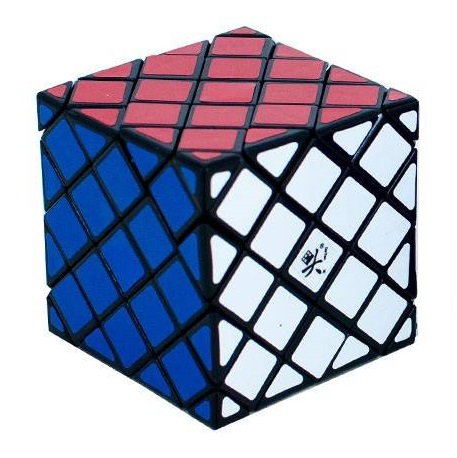
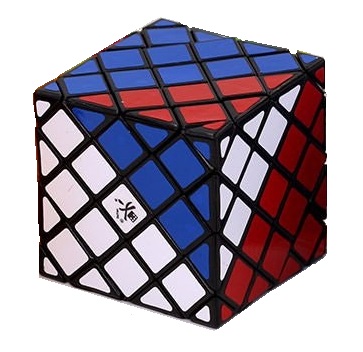
|
DaYan's "7x7" Skewb - aka Compy Skewb
This mass-produced version differs slightly from Tom's version in that here the small corners are trivial and rotate freely. In Tom's version, they are bound to the Skewb rotation, making Tom's version more difficult. The next diagonal cut in from the trivial tip cut is the skewb cut for the opposite corner. This puzzle does not allow the "Lattice Cube" type turns of a corner plus its immediately adjacent face and edge pieces. The next cut is the compy cut. |
||||||||||||||||||
| Vertex-turning Order 4 | |||||||||||||||||||
|
(Order 4) Lattice Cube / Master Dino - GB 3.2.7 - Okamoto, Bedard, Pfennig
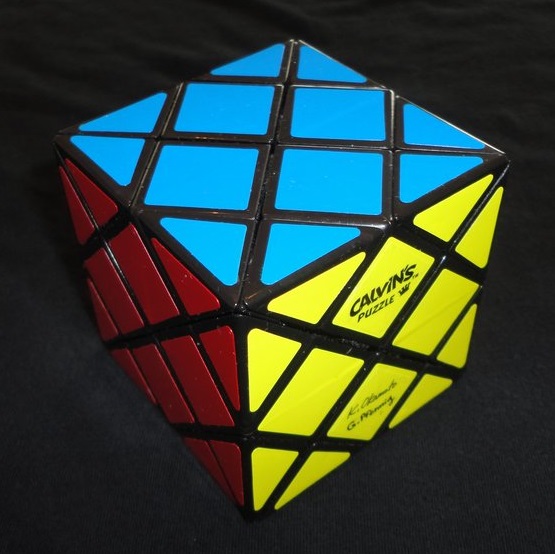
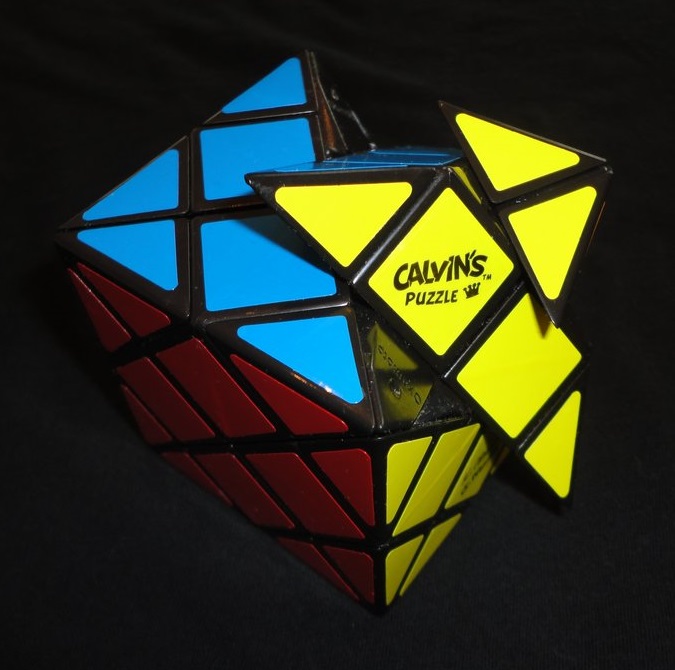
|
GB 3.2.7 is an order 4 vertex-turning cube - a Dino with tri-partite vertices.
Called the Lattice Cube or Master Dino -
originally designed and hand-made by Katsuhiko Okamoto.
Later made by Scott Bedard [T] [Y] and Gregoire Pfennig, now mass-produced by Calvin Fan |
||||||||||||||||||
|
(Order 4) Mosaic Cube (Fadi Cube) - Oskar van Deventer - Meffert
The Mosaic (Fadi) Cube (Meffert/Oskar van Deventer) is a Lattice with visible corners.
|
|||||||||||||||||||
|
Curvy Mosaic - LanLan
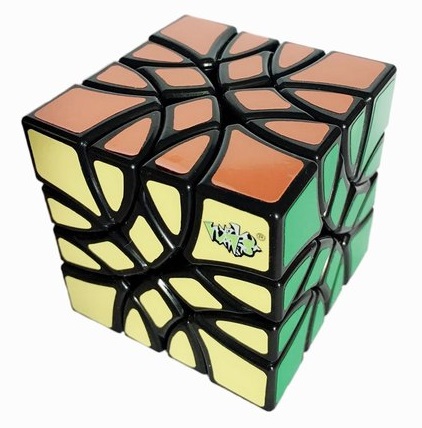
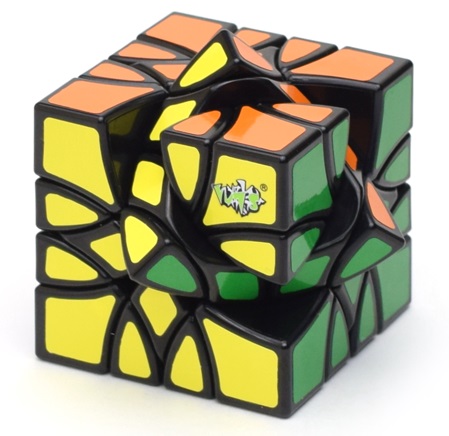
|
Curvy Mosaic - mass-produced by LanLan
Equal to the Mosaic Cube. |
||||||||||||||||||
|
4x4 Curvy Dino Cube - AJ

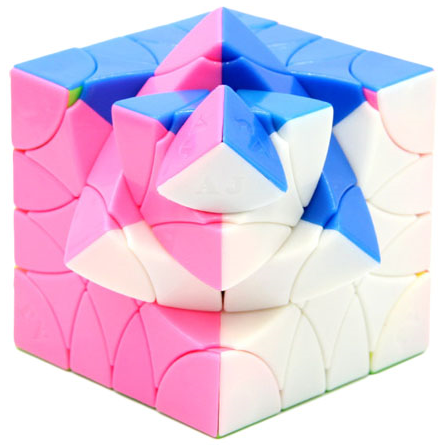
|
4x4 Curvy Dino Cube - AJ
Similar to the Lanlan Curvy Mosaic, but this has independent (trivial) corners and more importantly, tiny triangular pieces between the central teardrops. |
||||||||||||||||||
| Edge-turning Order 1 | |||||||||||||||||||
|
24 Cube / Little Chop - GB 3.3.7 - Matt Shepit
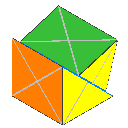

|
24 Cube aka Little Chop - designed and made by Matt Shepit
[T]
[T]
[Y]
also made (from Shepit's design) by Taylor [T], Karl-Heinz Diekmann [Y], Pantazis Houlis [Y] Here we have one of the most elusive puzzles in the twisty zoo - what is known as the "24 Cube" or "Little Chop." [T] [Y] Only a few have been produced, based on a design by Matt Shepit of New Zealand, but AFAIK none turn very smoothly. The design uses what is known as a "shells mechanism" and is very complex. To date AFAIK no-one has produced a viable alternative mechanism for this puzzle, and not for lack of trying. People have cheated by using a steel ball as a core and embedding magnets in the pieces, but such implementations don't work satisfyingly well. [S] |
||||||||||||||||||
|
Chromium Cube - James Li (24 Cube / Little Chop - GB 3.3.7)
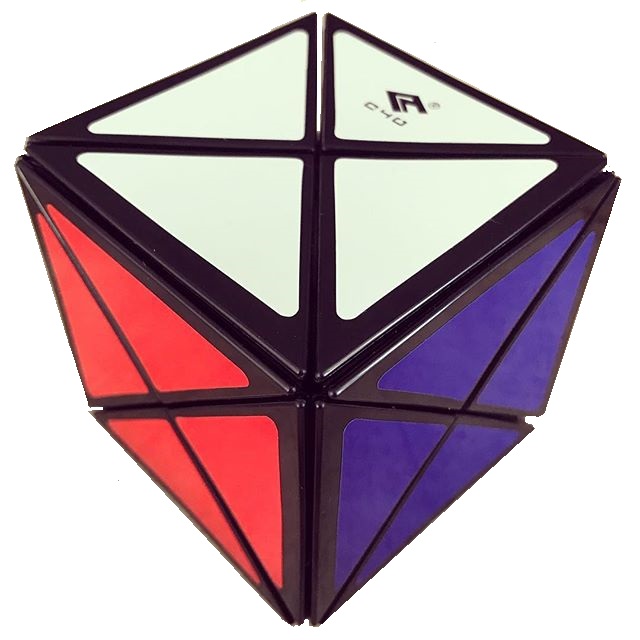
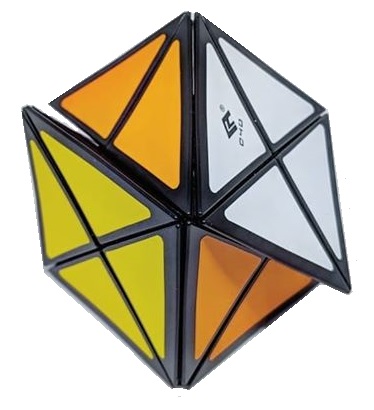
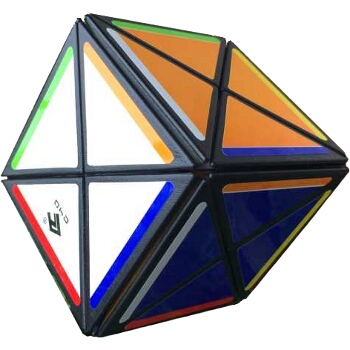
|
Chromium Cube (24 Cube aka Little Chop) - designed by James Li
Mass-produced version - finally! Not perfect - proper turning is difficult - but it is great to have this puzzle made available. A rails mechanism using gravity pins to help prevent internal mis-alignment. I bought two - regular stickers, and super stickers. |
||||||||||||||||||
| Edge-turning Order 2 | |||||||||||||||||||
Here is Carl Hoff's animated "order-2 edge-turning multicube"
[T]
which illustrates nicely how
the spacing of the two cuts between pairs of opposing edges can be varied -
in the Helicopter, the spacing is such that the layers touch but do not overlap.
In 3.3.3 (Drew's Quad-X) the layers overlap and the spacing is symmetric.
More and less overlap is possible, with different pieces [dis-]appearing.
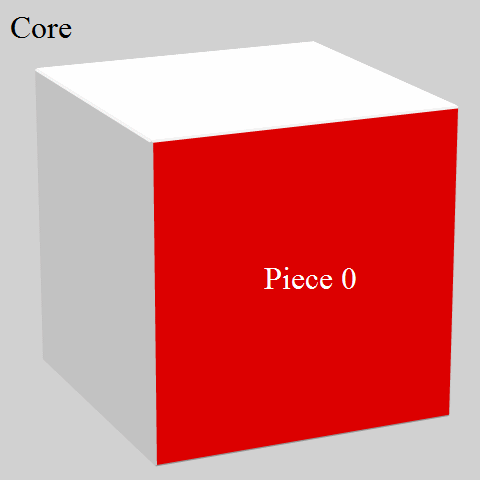
|
|||||||||||||||||||
|
Helicopter Cube - GB 3.3.1 - Okamoto, Cowan
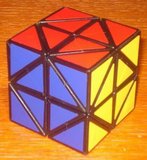
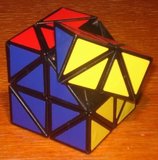
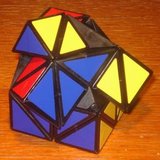
|
I am very pleased to have finally obtained a custom-made Helicopter Cube from Adam! The Helicopter Cube was first discussed in the TwistyPuzzles forums in thread 6253 - a particularly rich thread in which several ideas, including the concept of jumbling as opposed to shape-shifting, were broached. (More discussion on jumbling: 13071, 11126 .) Katsuhiko Okamoto mentions that he had completed his equivalent Bevel Cube the previous month. Robert Webb extrapolates a rhombic dodecahedral puzzle and Matt Shepit hints of its realization - it will be Shepit's Rua. Various folks have discussed their attempts to make their own Helicopter Cubes: 13856, 13520, 12030, 12423, 11679. Helicopter Cube solution | ||||||||||||||||||
|
Helicopter Cube - GB 3.3.1 - Meffert

|
The Helicopter Cube has also been produced commercially. I bought a black one and a white one. | ||||||||||||||||||
|
Helicopter Cuboctahedron - Garrett Ong, Eric Vergo

|
Garrett Ong designed and Eric Vergo made an order-2 vertex-turning cuboctahedron, which is equivalent to a cuboctahedron Helicopter [T]. | ||||||||||||||||||
|
Partially Unbandaged Helicopter Cube - Eric Vergo
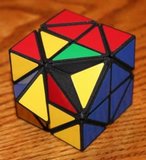
|
A Partially Unbandaged Helicopter Cube designed by Eric Vergo
[S]
-
this is copy number 1, obtained from Eric at NYPP2011.
When a jumbling move is made, a triangular face piece can swap places with a corner - this is not possible on the regular Helicopter Cube. Vergo also made a 2x2x2 + unbandaged heli hybrid [T] |
||||||||||||||||||
|
Curvy Copter - GB 3.3.0 - Tom van der Zanden - Meffert
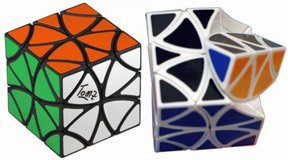
|
Meffert's is offering the mass-produced Curvy Copter created by Tom van der Zanden
[T].
Tom's Curvy Copter has been very popular as a custom-produced 3D printed puzzle
[S],
and is now available at one tenth the price.
I bought the black and white "twins" pair.
The Curvy Copter functions like a Helicopter cube, but it exposes central edge pieces that must be correctly oriented,
making it a more difficult challenge.
Lanlan's version is called the Butterfly cube. |
||||||||||||||||||
|
Curvy Chop - Smaz
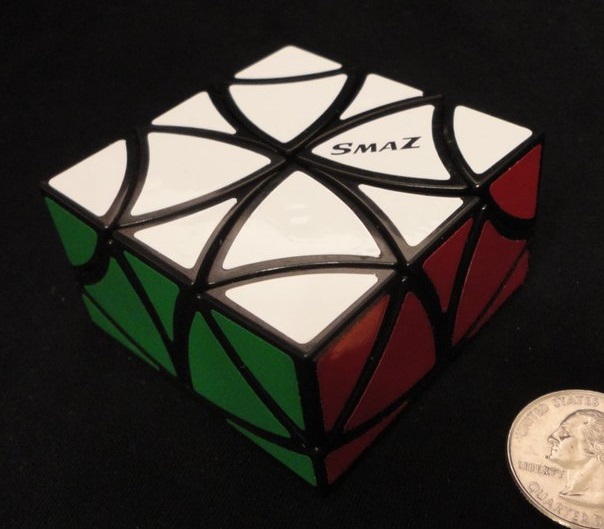
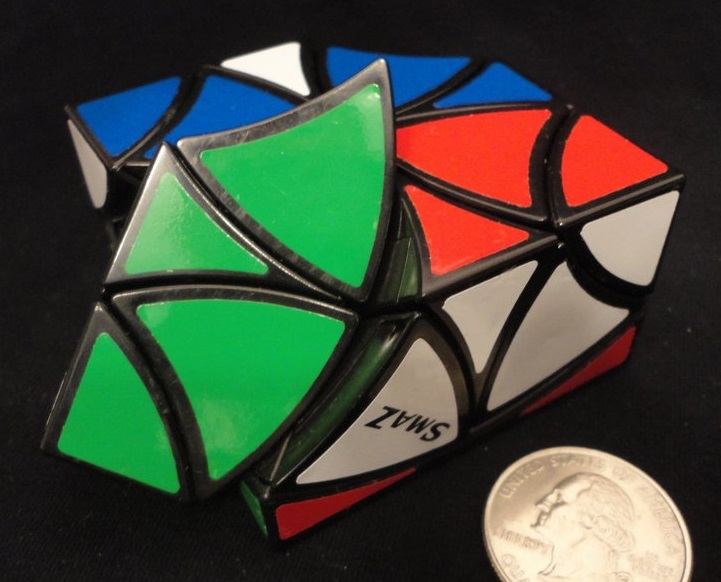
|
The Curvy Chop by Smaz
Half of a curvy copter. |
||||||||||||||||||
|
Clover Cube - QiYi
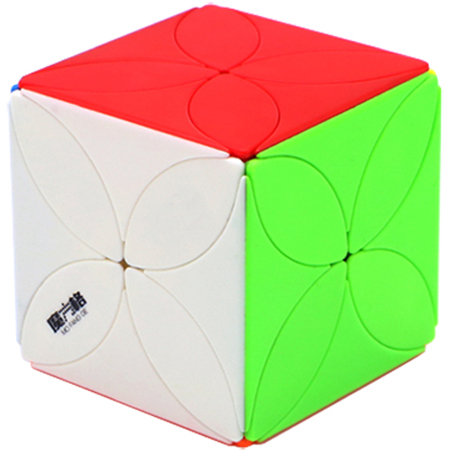
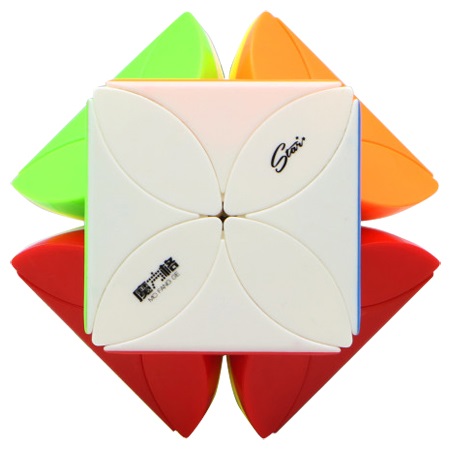

|
QiYi Mofangge Clover Cube (stickerless) - designed by Yukang Wu.
A variant of the Curvy Copter. |
||||||||||||||||||
|
Clover Cube Plus - QiYi
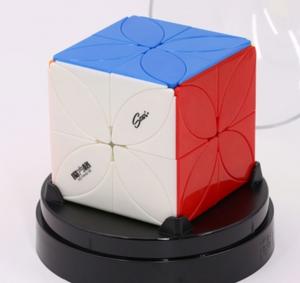
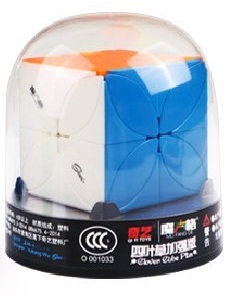
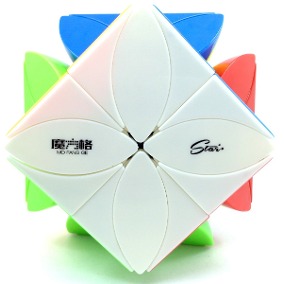
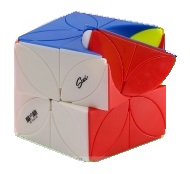
|
QiYi Mofangge Clover Cube Plus (stickerless)
A variant of the Curvy Copter, hybridized with a 2x2x2. |
||||||||||||||||||
|
Curvy Copter Plus - Tom van der Zanden

|
TomZ's Curvy Copter Plus, mass-produced by Meffert [T] [S] has additional cuts that partially unbandage some turns | ||||||||||||||||||
|
Curvy Copter II - GB 3.3.8 - Tom van der Zanden
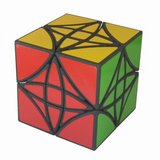
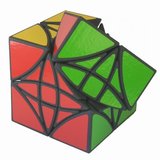
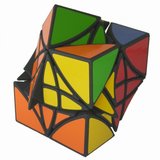
|
Curvy Copter II by Tom van der Zanden [T] [Y] | ||||||||||||||||||
|
Curvy Copter III - Mf8
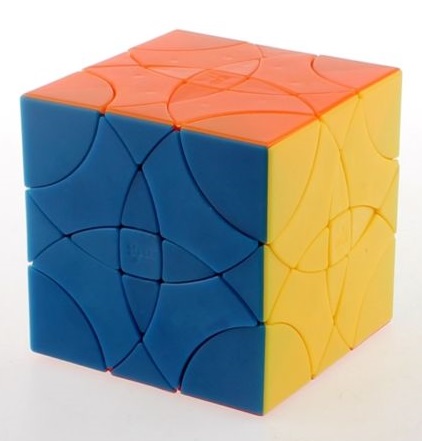
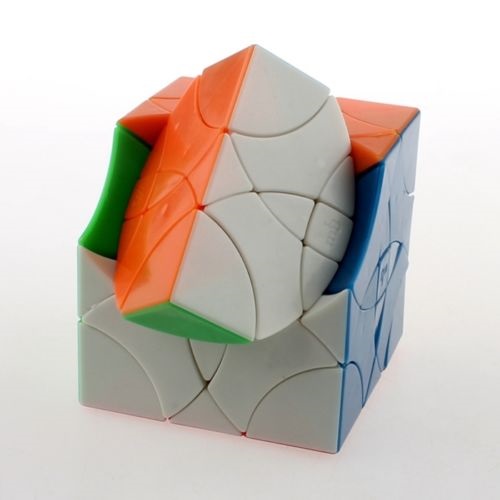
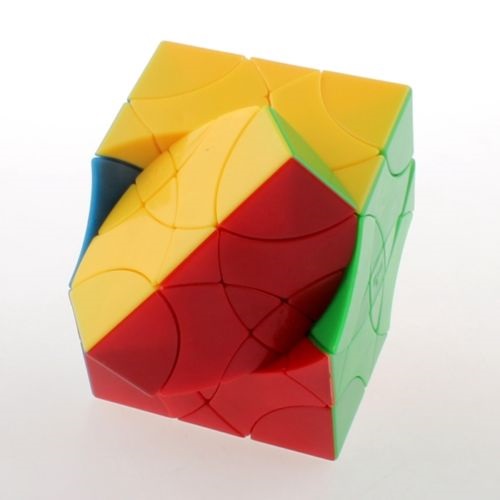
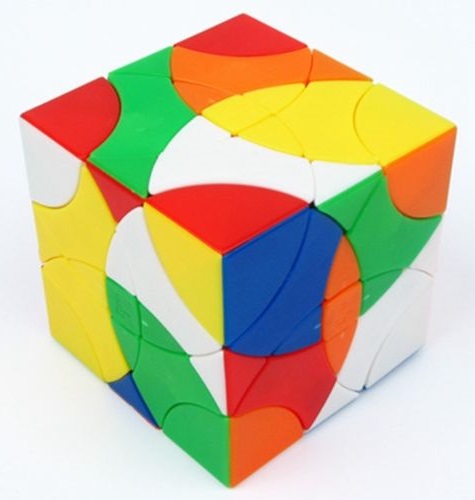
|
Mf8 Curvy Copter III - stickerless version | ||||||||||||||||||
|
Quad-X - GB 3.3.3 - Drew Cormier
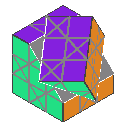

|
Drew's Quad-X [T] [Y] (cubic Rua) | ||||||||||||||||||
|
DeCETH (Deeper Cut Edge-Turning Hexahedron) - Gregoire Pfennig
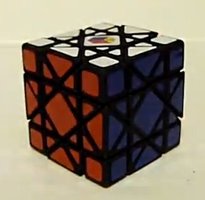
|
DeCETH (Deeper Cut Edge-Turning Hexahedron) - Gregoire Pfennig [T] [Y] Deeper cut than the Quad-X | ||||||||||||||||||
|
Master Little Chop - Ben Streeter
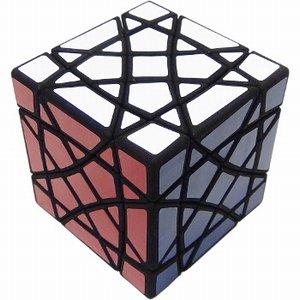
|
Master Little Chop - Ben Streeter [T] [Y] Deeper still than the DeCETH | ||||||||||||||||||
|
Hexaminx - Tony Fisher

|
Fisher's Hexaminx (cubic Megaminx) [T] | ||||||||||||||||||
|
Hexaminx - Pillowed version by Traiphum Prungtaengkit
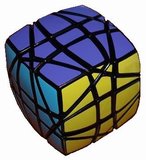
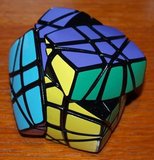
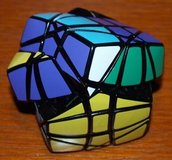
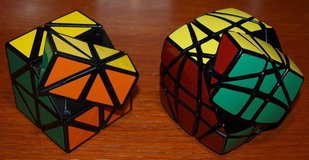
|
Pillowed Hexaminx from
Traiphum Prungtaengkit, of Thailand
[T]
(Shown with Helicopter Cube) I traded this to Kevin Uhrik for a Tutt's Icosaminx. |
||||||||||||||||||
|
Pillowed Hexaminx (mass-produced)
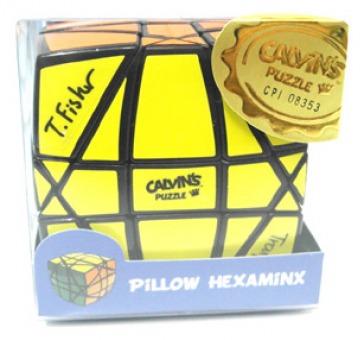
|
A Pillowed Hexaminx - mass-produced by Calvin Fan;
this cubic shapemod of a dodecahedral Megaminx was first designed by Tony Fisher then produced in a beautiful pillowed form by Traiphum Prungtaengkit. |
||||||||||||||||||
|
Mini Hexaminx - Grégoire Pfennig
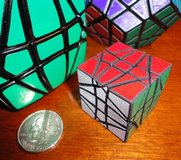

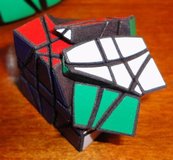
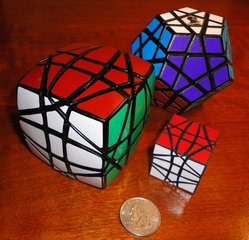
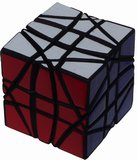

|
Here is a Mini-Hexaminx, designed and made by Grégoire Pfennig, printed by Shapeways.
[T]
[S]
Shown in comparison to a U.S. quarter, a Pillowed Hexaminx hand-made (cast) by Traiphum Prungtaengkit, and a Tomy Megaminx. This small wonder is very stable and usable. I am impressed that something so compact works so well. Nice work, Greg! |
||||||||||||||||||
| Edge-turning Order 3+ | |||||||||||||||||||
|
GB 3.3.12 - 24+Heli

|
O3 would be 3.3.12 24+Heli | ||||||||||||||||||
|
GB 3.3.16
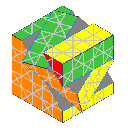
|
O4 3.3.16 | ||||||||||||||||||
|
Eitan's Master Helicopter - Eitan Cher

|
O4 - Eitan's Master Helicopter - his first version was really a Master Curvy Copter [T] [T] Eitan revised the design and also offers a "true" Master Helicopter (no exposed edge centers) [T] [Y] [T] | ||||||||||||||||||
| O1,O1 Hybrids | |||||||||||||||||||
|
GB 3.4.1 - Skewb + 2x2x2 (aka Super-O, SuperZ, Skew-by-2, Skewb-by-2)

|
Attempted by several designers. None worked well enough to be sold, though...
BTW, Noah coined the term "Skew-by-2" but he meant something different:
[T]
- a Simple Overlapping 3x3x3 Cube, with the corner caps modified so the whole thing looks like a Skewb.
It would twist like the SOC, not a Skewb.
"smashy" suggested the same thing and called it "Skewbik's Cube" [T] |
||||||||||||||||||
|
GB 3.4.1 - Skewb + 2x2x2 - Limcube SuperZ
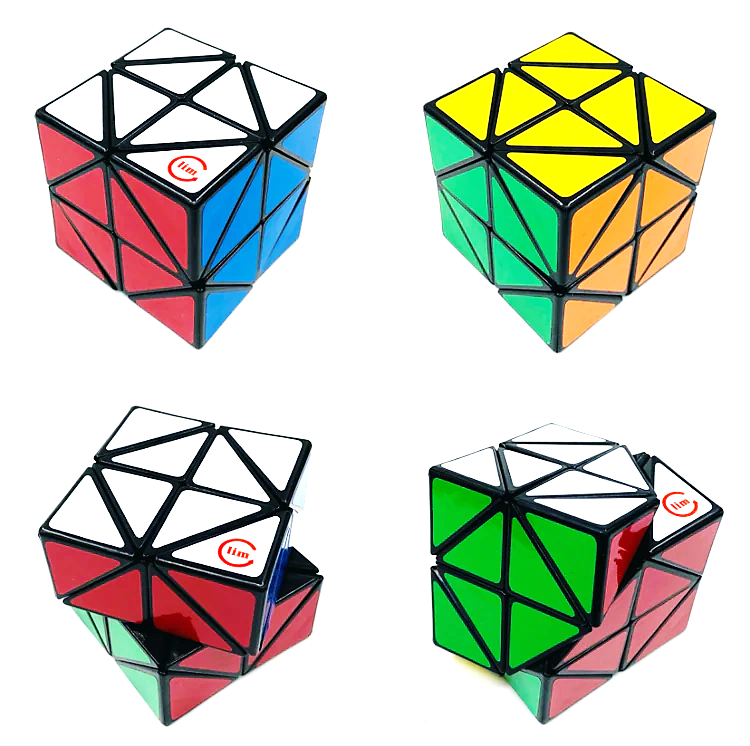
|
SuperZ - a mass-produced 2x2x2 + Skewb by Limcube
Very happy to be able to add a SuperZ to my twisty zoo! The Limcube version catches a lot though and is by no means a speedcube. Limcube also produced a version with internal constraints on the Skewb moves, called WonderZ. |
||||||||||||||||||
|
GB 3.5.1 - 24 + 2x2x2 - 48 Cube
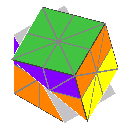
|
A 24 Cube crossed with a 2x2x2
PuzzleMaster6262 attempted one with his "Sand mech"
[T]
[T]
generating some controversy...
[T]
[Y]
[Y]
Cube4You shows a prototype made by James Li, called the Cadmium Cube (Cadmium is atomic numder 48): [Y] |
||||||||||||||||||
|
Skewb+24

|
A 24 Cube crossed with a Skewb - never attempted AFAIK. | ||||||||||||||||||
|
GB 3.7.2 - Skewb + 24 + 2x2x2
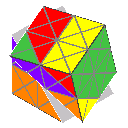
|
A triple cross - 24 Cube crossed with a Skewb and a 2x2x2.
Not made, but explored by Carl [T] |
||||||||||||||||||
| O2,O1 Hybrids | |||||||||||||||||||
Each O2 puzzle can be combined with an O1 puzzle to make a (2,1) hybrid.
O2's can also be combined with O2's to make even more complex hybrids.
And of course O1's can be combined with O3's , etc. ad infinitum (in principle anyway).
And let's not forget combining more than two types together in one puzzle! Yikes!
Hybrids quickly get difficult to categorize, let alone to build.
Also, without the clever use of magnets or detents, the resulting puzzles can be "squishy" -
hard to hold without inadvertently moving something.
In the table below,
the fundamental O1 cubes - the FT 2x2x2 and the VT Skewb - are represented in the rows.
I have left out the row for the 24 Cube.
The fundamental O2 cubes are represented in the five columns.
NOTE that an O1 combined with an O2 of the same turning regime simply gives an O3 of that type -
I have outlined those four puzzles and they are already discussed above.
|
|||||||||||||||||||
|
Master Skewb + 2x2x2 - Hyper X - Gregoire Pfennig
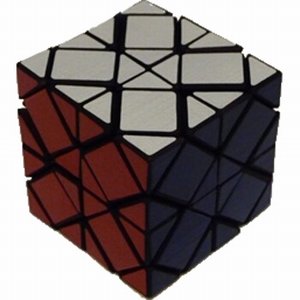
|
Master Skewb + 2x2x2 - Hyper X - Gregoire Pfennig [T] [S] | ||||||||||||||||||
|
Dino + 2x2x2 - GB 3.4.2 - Super-X - Tom van der Zanden
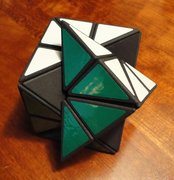
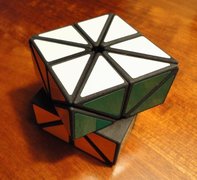

|
In Berlin, I got one of Tom van der Zanden's Super-X cubes
[T]
- the Super-X turns like a Dino plus a 2x2x2.
An early design by Wayne Johnson
[T],
Realized as a full-custom design by Adam Cowan [T] [T] Improved by Drew Cormier, who added magnets to stabilize it [T] [T] [Y] Also made by jesseking from a Rainbow and keychain 2x2x2 [T] Tom's version uses printed-in detents for stability, and having played with different versions, I would venture to say that Tom's is the best to date. Visit Tom's Shapeways shop. |
||||||||||||||||||
|
Helicopter + 2x2x2
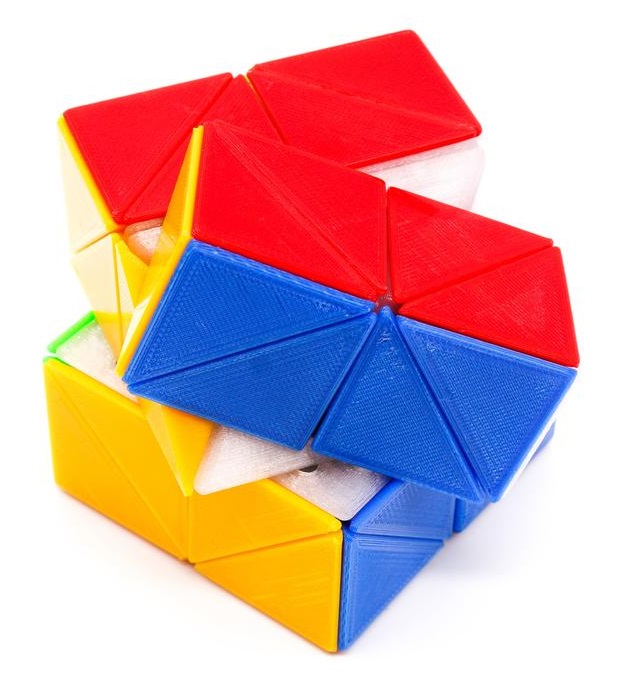
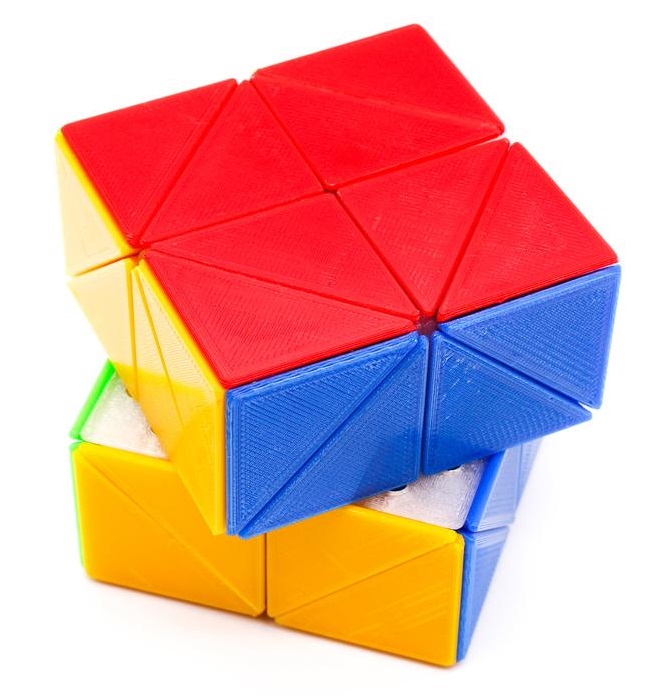
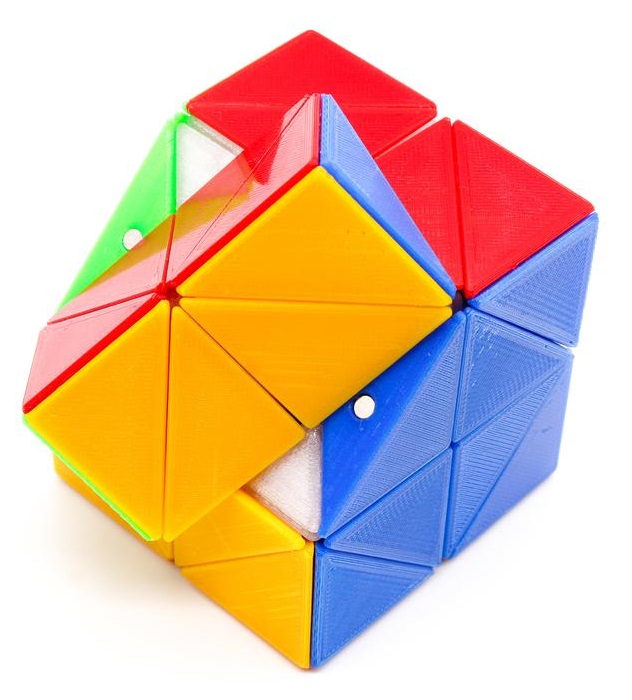
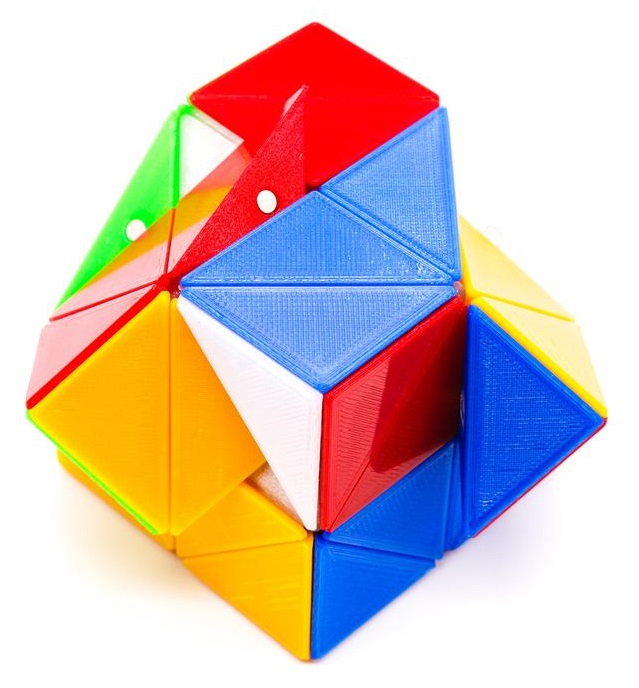
|
Unbandaged Helicopter + 2x2x2 made by Eric Vergo in Jan 2011
[T]
Clay's Combo Copter
[T]
Garrett Ong was working on one
[T]
Also RubixFreakGreg
[T]
[S]
Kevin Uhrik sells a nice version of the Heli + 2x2x2 at his Etsy shop. |
||||||||||||||||||
|
Helicopter + 2x2x2
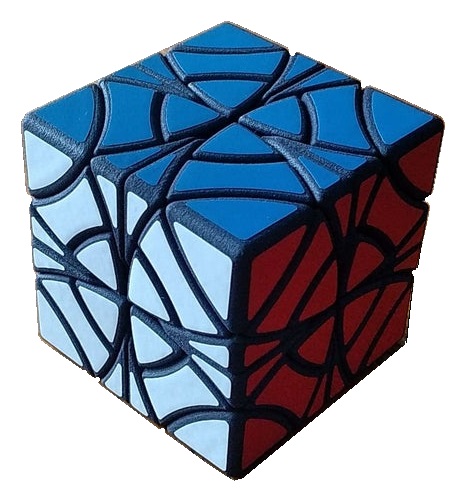
|
Combo Copter Plus by Braden, may be available at grigorusha's Etsy shop | ||||||||||||||||||
| Variations on the theme hybridizing an O1 Skewb with some sort of O2 Helicopter | |||||||||||||||||||
|
Helicopter Skewb - Tom van der Zanden
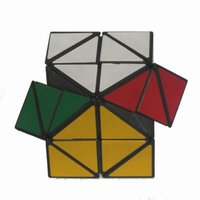
|
Helicopter Skewb - Tom van der Zanden [T] [S] also an unbandaged version [T] [S] "namegoeswhere" also built one [T] [Y] | ||||||||||||||||||
|
Skewby Copter Plus - Mf8

|
Skewby Copter Plus - Mf8
The Curvy Copter Plus (unbandaging cuts), plus Skewb Has corners but no centers. |
||||||||||||||||||
|
Morpho Aureola - FangShi Limcube

|
Morpho Aureola aka Curvy Copter Extreme from FangShi Limcube
The cuts that split the edges allow a partial helicopter turn to be cut by a skewb turn. This has centers but no corners. |
||||||||||||||||||
|
Twins Cube - Mf8

|
Twins Cube from Mf8
Mf8's answer to the Lim Morpho - Mf8 added the cuts that split the edges SuperAntoniovivaldi posted a nice YouTube video comparing the Skewby Copter Plus, the Curvy Copter Extreme, and the Twins Cube. |
||||||||||||||||||
|
Fission Skewb - Limcube
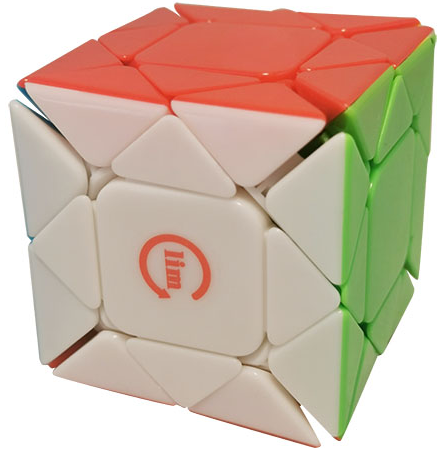
|
Fission Skewb - designed by Guan Yang, produced by Limcube
Combines the Skewb with edge turns but the edge groups do not intersect. Note that although an edge group looks like it only consists of three pieces, the center "edge" piece is actually two pieces, so an edge turn affects four pieces. |
||||||||||||||||||
|
Helicopter + Skewb + 2x2x2
[no image]
|
Helicopter + Skewb + 2x2x2 | ||||||||||||||||||
| Higher Order Hybrids | |||||||||||||||||||
|
Redi 3x3x3 - Eric Vergo
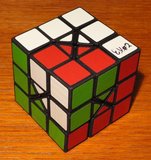
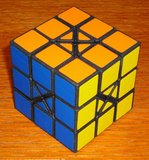
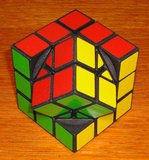
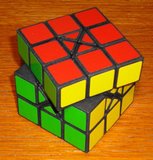
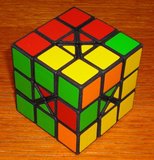
|
Redi 3x3x3 - Eric Vergo
This puzzle turns at its vertices like Oskar van Deventer's Redi Cube, plus like a 3x3x3. Announced on the TwistyPuzzles forums, and available at Eric's Shapeways shop. Very clever, Eric! |
||||||||||||||||||
|
Dreidel Cube

|
Dreidel Cube - an O2,O2 hybrid - designed by Guan Yang issued by Lim Cube Allows face turns like a traditional 3x3x3. In addition, the vertices turn along with the small pieces within the curved cuts surrounding them. A vertex can be turned 120 degrees but also 60 degrees - this aligns the diagonal cuts around the vertex with the normal 3x3x3 cuts and jumbles the small pieces. |
||||||||||||||||||
|
Simple Dreidel Cube

|
Simple Dreidel Cube - an O2,O2 hybrid - designed by Guan Yang issued by Lim Cube The vertices turn along with the small pieces within the curved cuts surrounding them. A vertex can be turned 120 degrees but also 60 degrees - this aligns the diagonal cuts around the vertex with the normal 3x3x3 cuts and jumbles the small pieces. In this case, 3x3 face turns cannot be performed until the vertices are properly aligned. |
||||||||||||||||||
|
Grilles Cube II
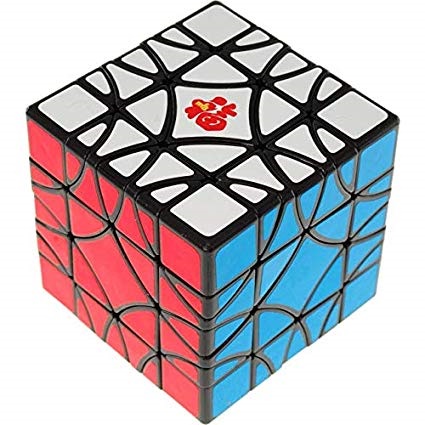
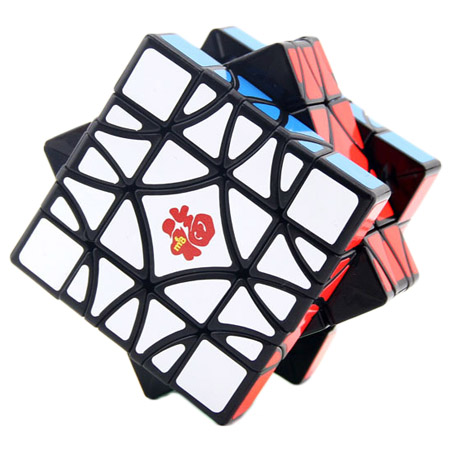
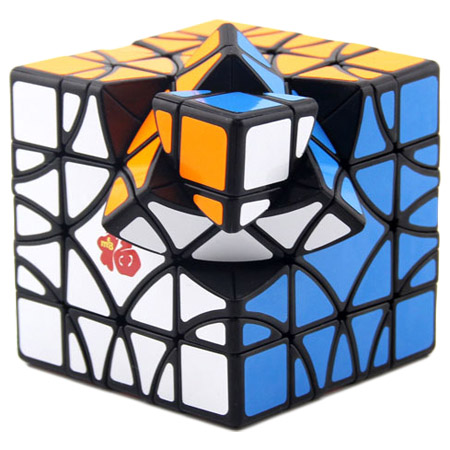
|
Grilles II - Mf8 | ||||||||||||||||||
|
Lattice-X - Olz

|
Lattice Cube with a 2x2x2 - a (4,1) hybrid. - a Super-X with the extra twisty tips of the Lattice Cube. Designed & made by Olz [T] [Y] | ||||||||||||||||||
|
GB 3.6.1 - Dino + Helicopter - "Vestar"
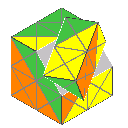
|
A Dino + Helicopter - aka Vestar | ||||||||||||||||||
|
Compy + Curvy Copter = Flower Copter

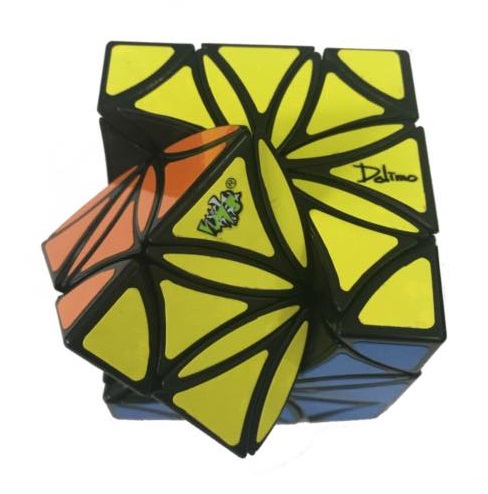

|
A Compy + Curvy Copter - Flower Copter designed by Minh Sanghsu and mass-produced by Lanlan | ||||||||||||||||||
|
Butterflower Copter Cube - Lanlan
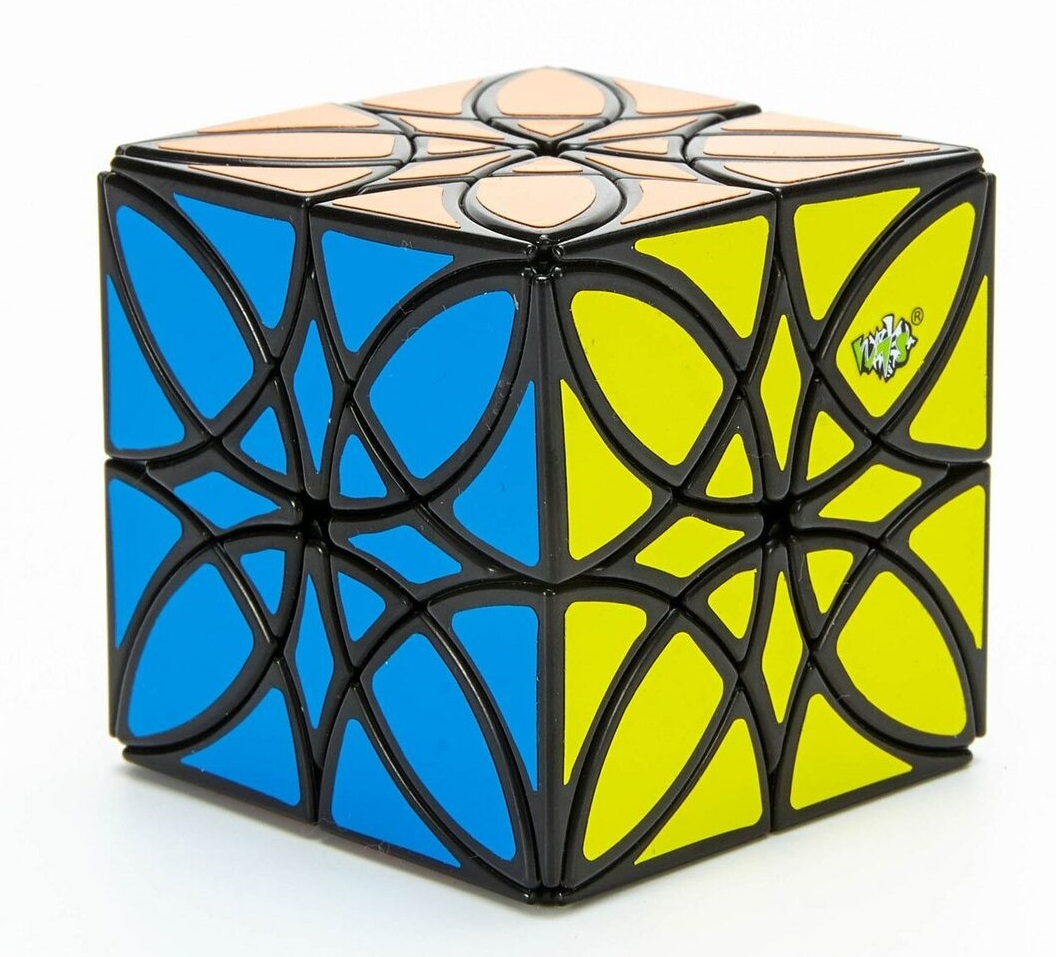
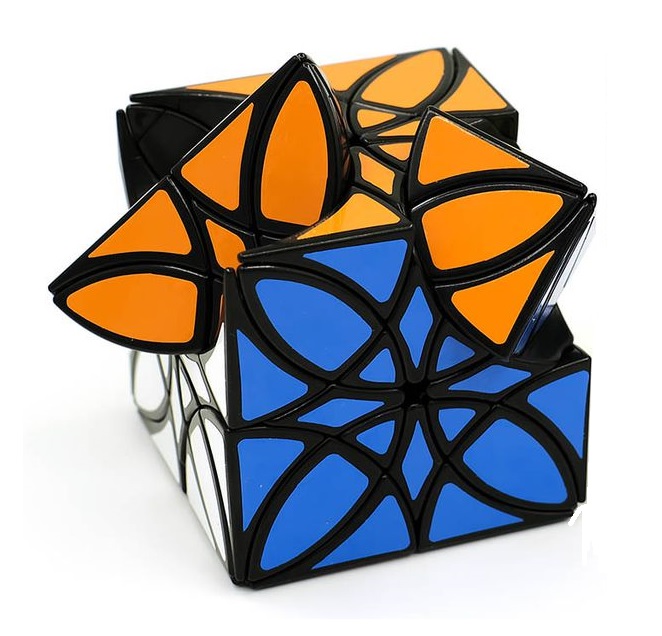
|
Butterflower Copter Cube - Lanlan
A hybrid of a curvy copter, with a very shallow Compy (the edges involved in corner twists don't overlap). |
||||||||||||||||||
|
GB 3.4.5 - Dino + 3x3x3 - Tom van der Zanden
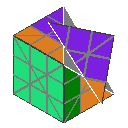



|
A Dino + 3x3x3 - made by Tom van der Zanden [W] | ||||||||||||||||||
|
GB 3.4.7 - Master Skewb + 3x3x3 - Minh Shenghsu
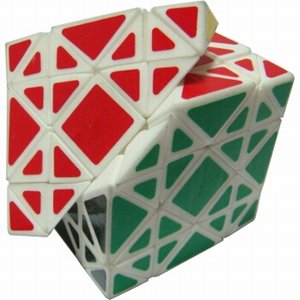
|
Master Skewb + 3x3x3 - Minh Shenghsu [T] | ||||||||||||||||||
|
Ultra-X - Eric Vergo

|
Eric Vergo's Ultra-X
[T]
turns like a Rainbow Cube + 23 + small vertices |
||||||||||||||||||
| Geared | |||||||||||||||||||
|
Gear Cube - Oskar van Deventer - Meffert

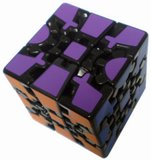
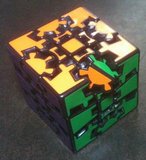
|
Meffert
has produced
Oskar van Deventer's
Caution Cube
[S]
and calls it the Gear Cube.
The Gear Cube Extreme has four edge pieces in one layer replaced with alternatives that have less gearing.
The Gear Cube Ultimate has alternative stickers requiring proper permutation of the small central gear pieces on each face.
Positions:
Gear Cube: 41,472 Gear Cube with edge base (small U piece) stickers: 165,888 Gear Cube Extreme: 2.56*1014 Gear Cube Ultimate (Extreme with edge base stickers): 3.28*1016 |
||||||||||||||||||
|
XXL Gear Cube
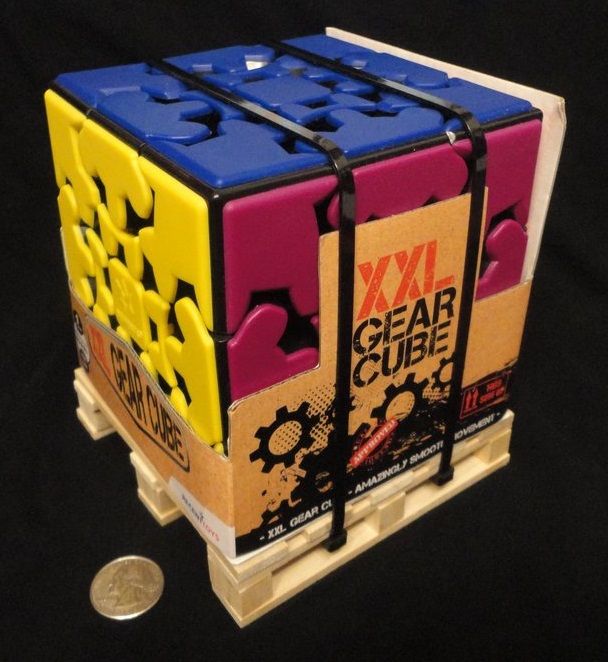
|
XXL Gear Cube - a large twisty puzzle issued by Recent Toys. Thanks, Jaap! | ||||||||||||||||||
|
Gear Barrel

|
Gear Barrel - issued by Meffert
A shapemod of the geared 3x3x3 |
||||||||||||||||||
|
Gear Shift - Oskar van Deventer - Meffert

|
Oskar's Gear Shift - Meffert
(black and white versions) Video solution on Bram's YouTube channel |
||||||||||||||||||
|
Geared Mixup Cube - Oskar van Deventer - Meffert

|
Geared Mixup Cube - designed by Oskar van Deventer
produced by Meffert A gift from Rox - thanks! |
||||||||||||||||||
|
David's Gear Cube - Oskar van Deventer - Meffert

|
David's Gear Cube - conceived by David Tzur (Alex Polonsky),
developed by Oskar van Deventer, issued by Meffert. |
||||||||||||||||||
|
Gear Lucky Clover Heart Cube - LanLan
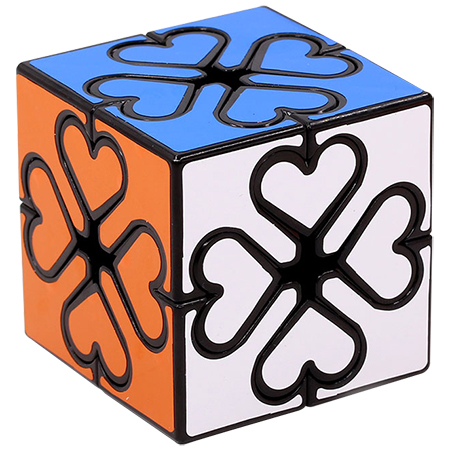
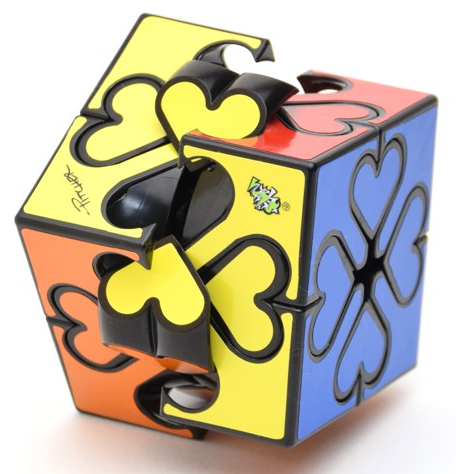
|
Gear Lucky Clover Heart Cube - LanLan | ||||||||||||||||||
|
Gear Skewb

|
Gear Skewb - designed by Timur Evbatyrov
Produced by Calvin's Puzzle Timur originally called it "Skewb des Soleils" [T] [Y] based on his gear HMT |
||||||||||||||||||
| Circle / Crazy | |||||||||||||||||||
|
Crazy 2x3x3 designed by Daqing Bao

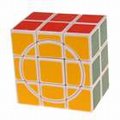
|
The Crazy 2x3x3 designed by Daqing Bao.
Genuine DaYan versions made by WitEden. Available at Cube4you. |
||||||||||||||||||
|
Crazy 3x3 Plus Cubes - DaYan
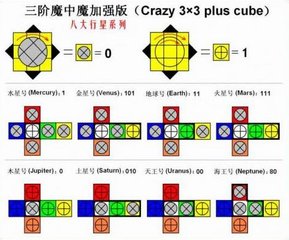
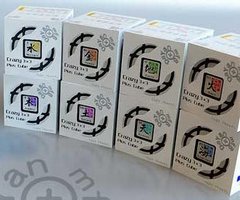
|
The set of eight types of DaYan Crazy 3x3 Plus Cubes - "Eight Planets"
The circle pieces either do or don't turn with the face. The eight types are different ways of arranging dos and don'ts. I got mine from Mefferts but you can find them at several vendors. |
||||||||||||||||||
|
Super 3x3x4 - WitEden
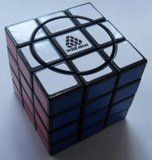
|
Witeden Super 3x3x4 black | ||||||||||||||||||
|
Crazy 4x4 I - Mf8
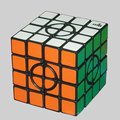
|
The Crazy 4x4 I from Mf8. This cube was discussed on the Twistypuzzles forums in threads 14856 and 7918. You can see how this cube moves on YouTube here. 3.23*1053 positions | ||||||||||||||||||
|
Crazy 4x4 II - Mf8

|
The Crazy 4x4 II from Mf8. 3.1*1061 positions | ||||||||||||||||||
|
Crazy 4x4 III - Mf8

|
The Crazy 4x4 III from Mf8, purchased via Mefferts
3.1*1061 positions
Same as version II according to Jaap. |
||||||||||||||||||
| Cube and Cuboid Shapemods and Sticker Variations | |||||||||||||||||||
|
Bump Floppy
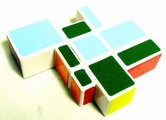
|
A "Bump Floppy" | ||||||||||||||||||
|
YongJun Ghost Cube Irregular
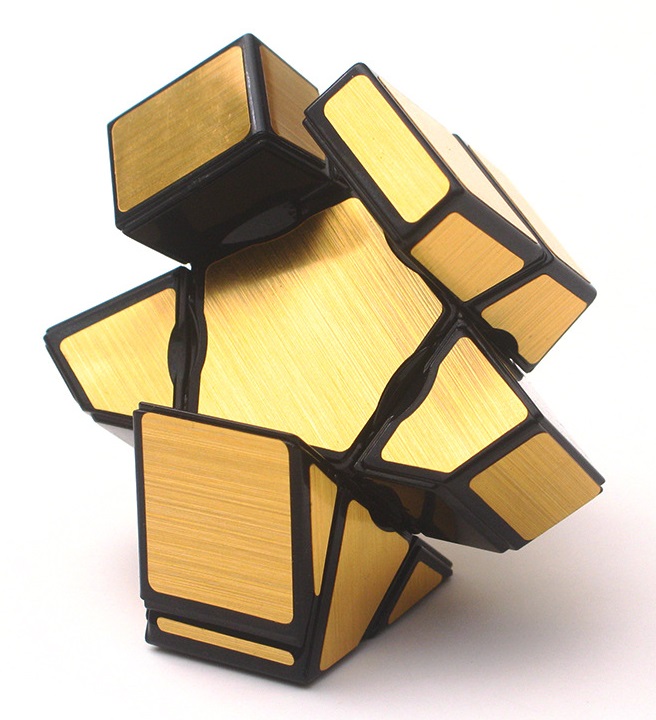
|
YongJun Ghost Cube Irregular | ||||||||||||||||||
|
QJ Heart-to-Heart
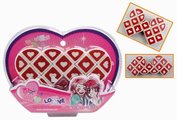
|
QJ Heart-to-Heart
A "dual-core" floppy. |
||||||||||||||||||
|
Tonne

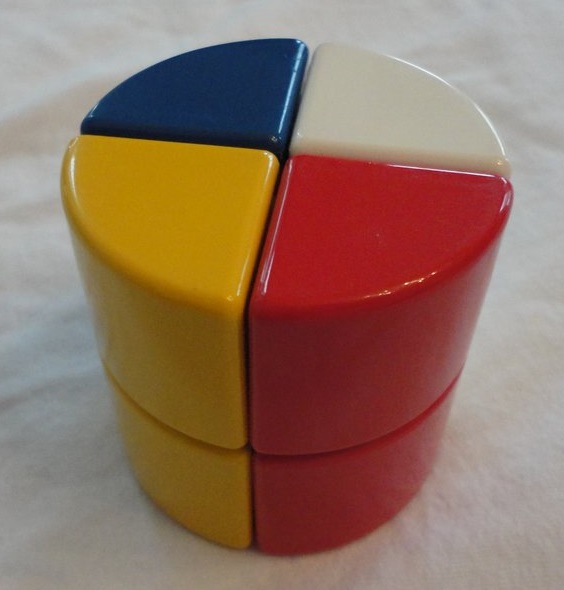
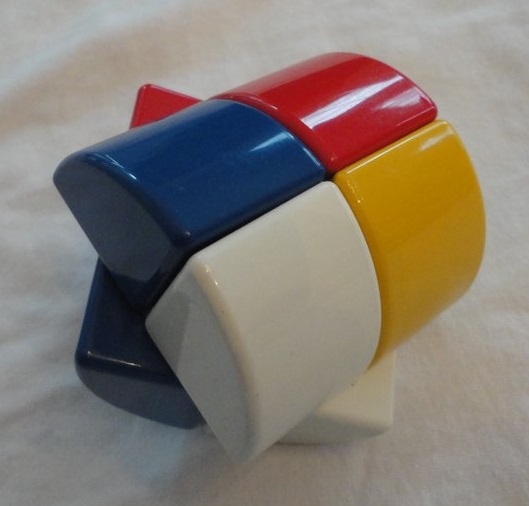
|
The "Tonne" is a barrel form of the 2x2x2. It was produced in a few different color schemes. I bought one a while ago in Germany. | ||||||||||||||||||
|
2x2x2 Shape Variations
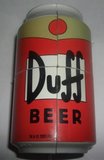
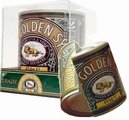
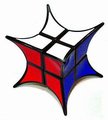

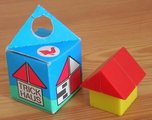
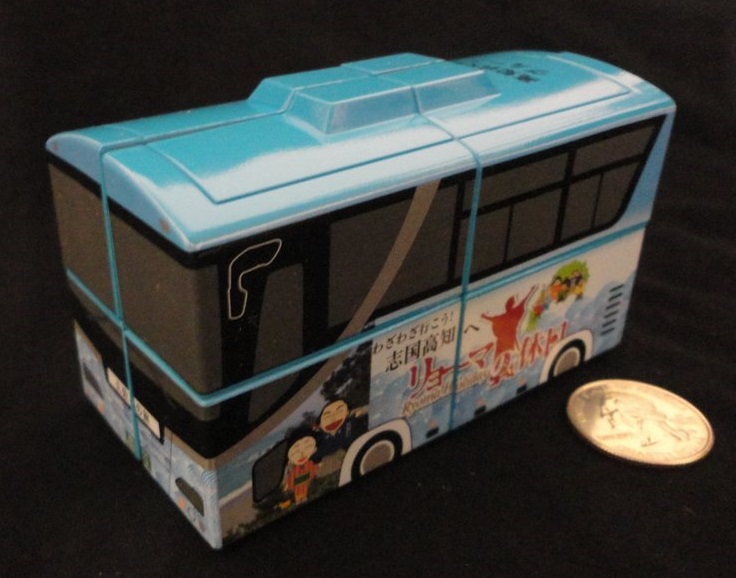
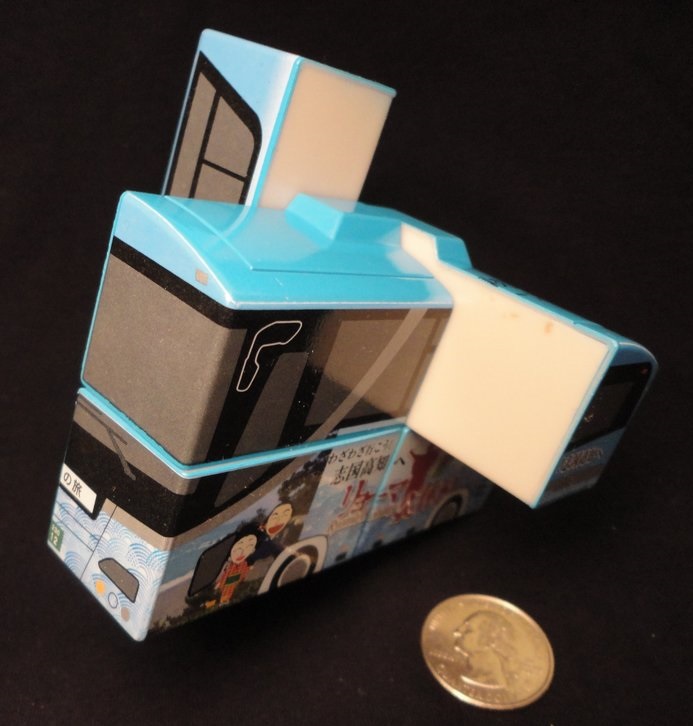




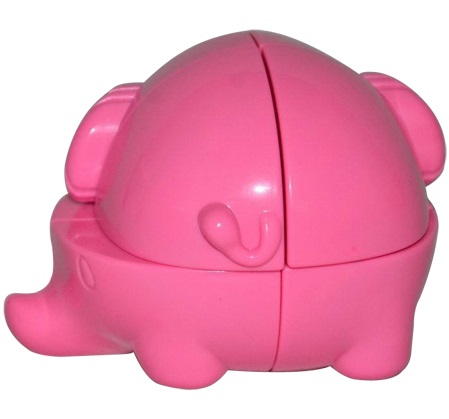
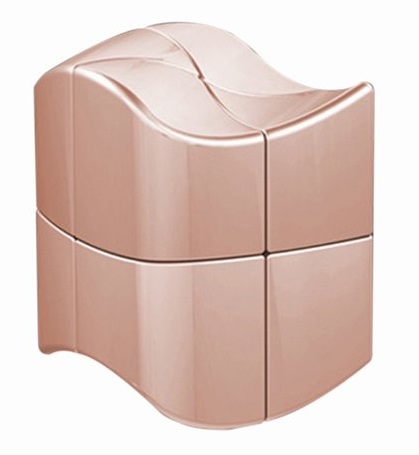
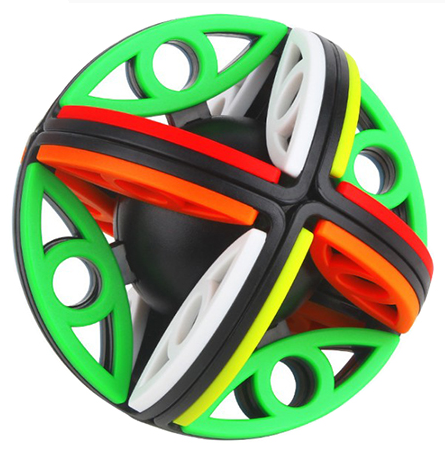 Some 2x2x2 variations - Duff Beer can, Golden Syrup, Socube Rhinocerous, Lanlan Dodecahedron,
the Trick Haus,
2x2x2 Bus, Hello Cube 2x2x2 Windmill, Yongjun House, Yongjun Elephant, Yongjun 2x2x2 Round,
Yuxin 2x2 Magic Eye
Some 2x2x2 variations - Duff Beer can, Golden Syrup, Socube Rhinocerous, Lanlan Dodecahedron,
the Trick Haus,
2x2x2 Bus, Hello Cube 2x2x2 Windmill, Yongjun House, Yongjun Elephant, Yongjun 2x2x2 Round,
Yuxin 2x2 Magic Eye
|
|||||||||||||||||||
|
2x2x2 Heads
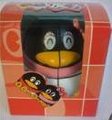

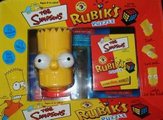
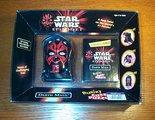
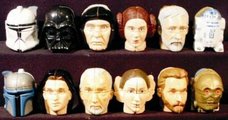
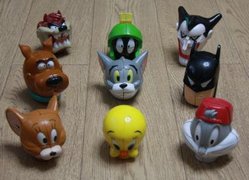

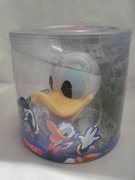

|
|||||||||||||||||||
|
2x2x2 Mad Hedz
As of late 2014, there is a new series of 2x2x2 head-shaped twisty puzzles, called Mad Hedz, issued by
Intex Entertainment (aka New Entertainment).
I got four of the six from Amazon and two from Lightake. 



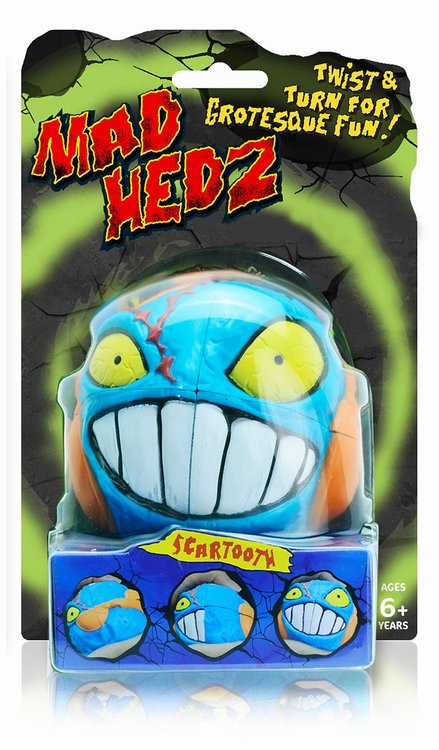

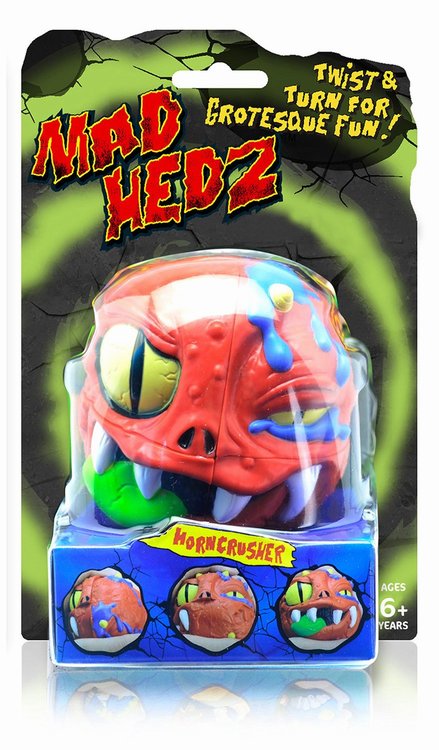

|
|||||||||||||||||||
|
2x2x2 Star Wars figures
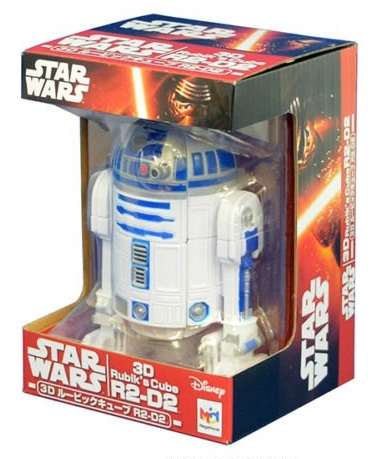
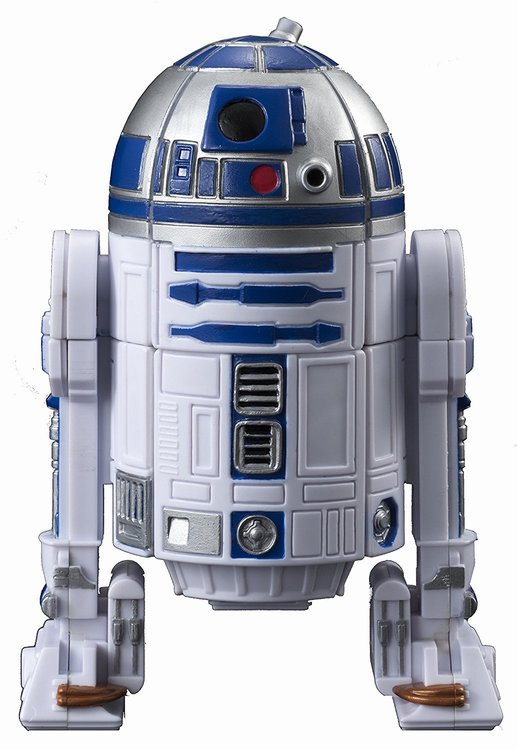
R2-D2 - 2x2x2 twisty puzzle by Megahouse of Japan
|
|||||||||||||||||||
|
Mental Flop (2x2x3 mod) - Grégoire Pfennig
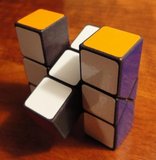
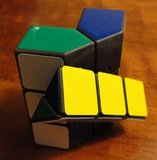
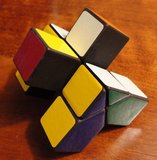
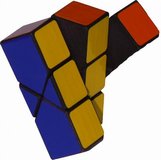
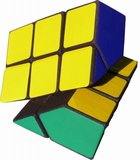
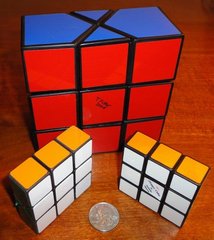
|
The Mental Flop by Grégoire Pfennig.
[T]
[S]
Visually, it's a cross between a 1x3x3 Floppy and Tony Fisher's Mental Block, hence the (great) name. Mechanically, it is isomorphic to a 2x2x3 (Slim Tower). Shown in good company - with my original Floppy Cube hand-made by Okamoto, and my original Mental Block hand-made by Tony Fisher, along with a U.S. quarter. Very stable and playable! |
||||||||||||||||||
|
Fanxin Dinosaur Cube set (2x2x3)
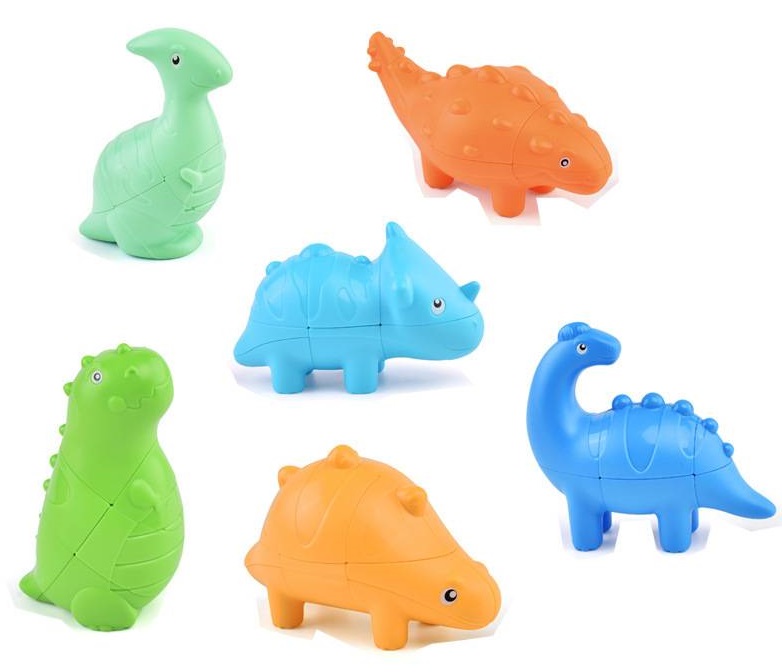
|
Fanxin Dinosaur Cube set
A commercially produced set of 2x2x3 shapemods. |
||||||||||||||||||
|
Ultimate Cube


|
Ultimate Cube
A commercially produced sticker variation. I have an original in its packaging. |
||||||||||||||||||
|
Calendar Cube
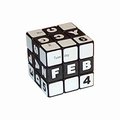

|
4.4*1022 - Marvin Silbermintz
Rubik's Perpetual Calendar(Kalender Kubus) The "O" character on one center has only 2 distinct orientations Play with a virtual calendar cube here. |
||||||||||||||||||
|
Rubik's Cube 4th Dimension
|
1.1*1022 - Erno Rubik
Rubik's Cube 4th DimensionFour centers must have distinct orientations |
||||||||||||||||||
|
Qubami - Kelvin Stott
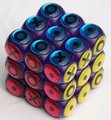
|
Qubami
Designed and produced by Kelvin Stott The objective is to get 3 different colors and 3 different symbols on every row and column of every face. Read about Qubami in the TwistyPuzzles forums. |
||||||||||||||||||
|
Octagonal Prism
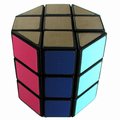
|
4.5*1017
Octagonal PrismJaap's page |
||||||||||||||||||
|
Diamond Cube
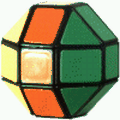
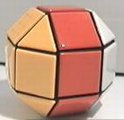
|
2.0*106 = 2,425,500
Diamond CubeJaap's page |
||||||||||||||||||
|
Truncated Corners 3x3x3 Cube
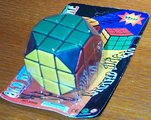
|
Truncated Corners 3x3x3 Cube | ||||||||||||||||||
|
2x2x2 Cuboctahedron

|
The 2x2x2 Cuboctahedron (a truncated 2x2x2) - called the "Friki Cube" made by juanan [T] | ||||||||||||||||||
|
3x3x3 Cuboctahedron

|
The 3x3x3 Cuboctahedron | ||||||||||||||||||
|
4x4x4 Master Cuboctahedron

|
The 4x4x4 Master Cuboctahedron. Made by Jürgen Brandt, Sandy. [T] | ||||||||||||||||||
|
5x5x5 Cuboctahedron

|
The 5x5x5 Cuboctahedron. Made by Jürgen Brandt. | ||||||||||||||||||
|
Jade Club Pillowed 3x3x3 Cube
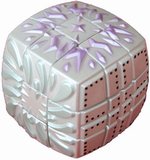

|
Jade Club Pillowed 3x3x3 Cube - Meffert | ||||||||||||||||||
|
Venus Cube 3x3x3
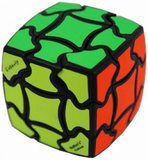
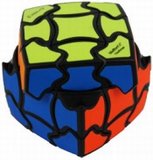
|
Venus Cube - a 3x3x3 shape variation with overlapping - designed by Evgeniy Grigoriev (he called it the "Fluffy Cube") - produced by Meffert | ||||||||||||||||||
|
Pandora Cube 3x3x3

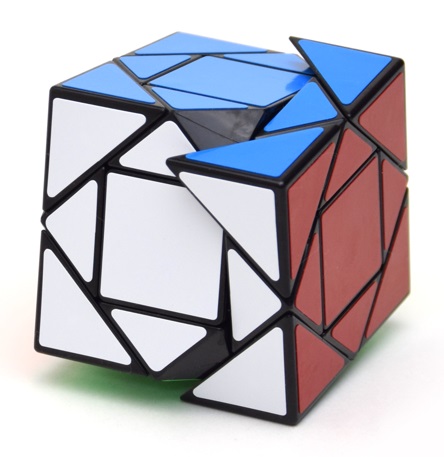
|
Pandora Cube - a 3x3x3 variant by Moyu | ||||||||||||||||||
|
Phoenix Cube (Bai Niao Chao Feng) - Shengshou
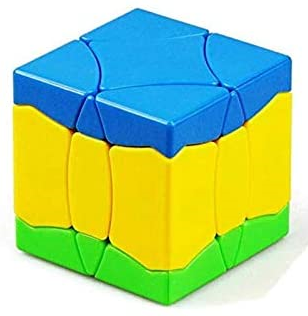
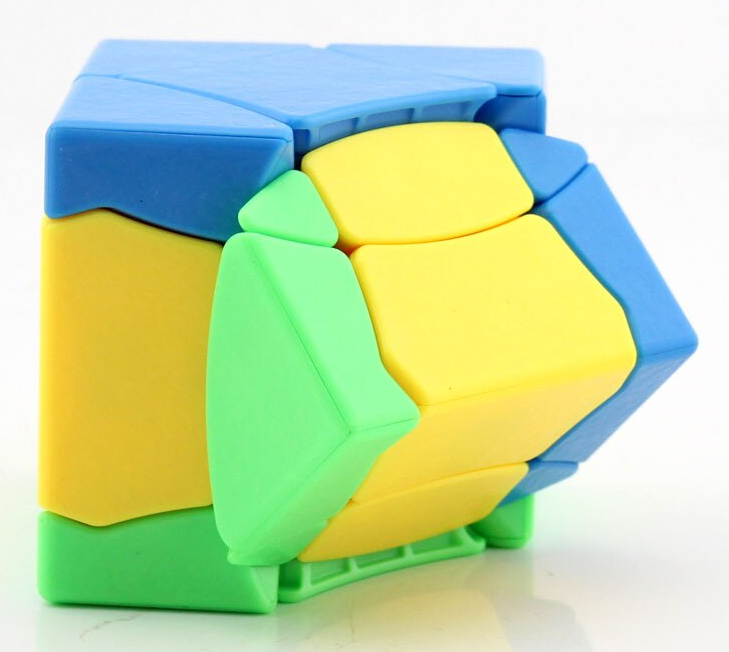
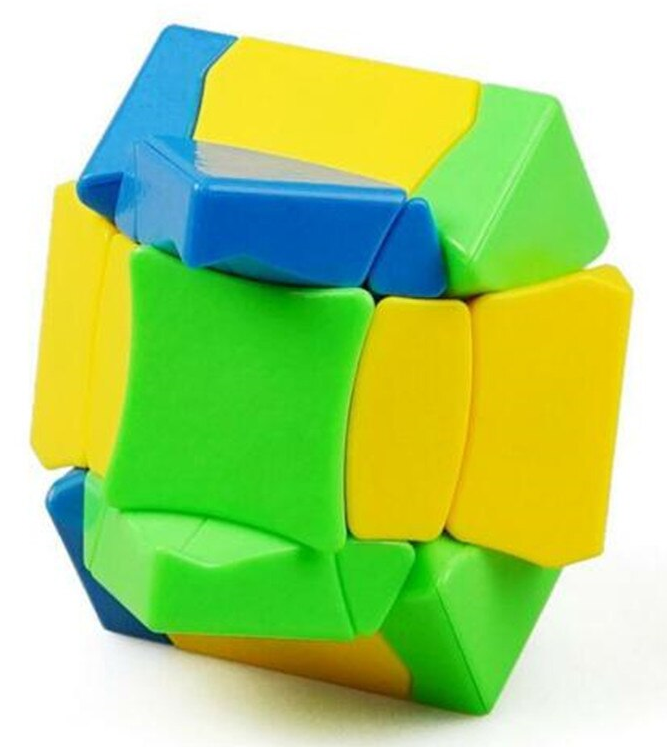
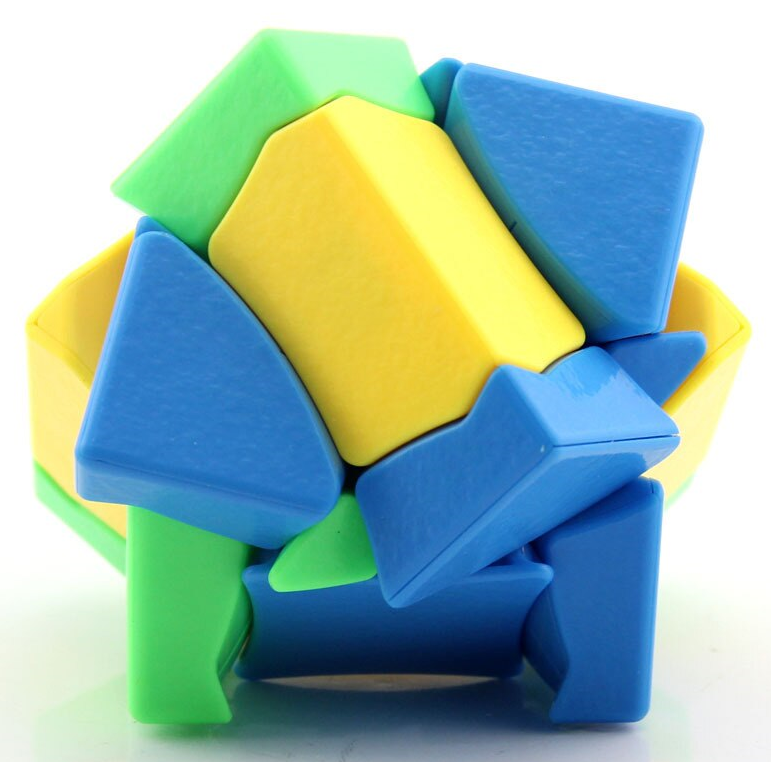
|
Phoenix Cube aka Bai Niao Chao Feng - Shengshou
A Fisher Cube variant. Similar to the "Copter Tower" and also the "Turtle Cube" both by Troy Robinson (rcpongo). [Y] Can be solved using the Sledgehammer (R'LRL'). |
||||||||||||||||||
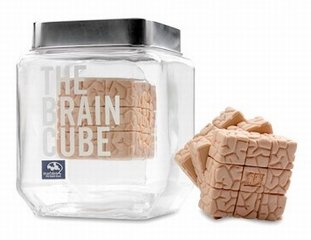
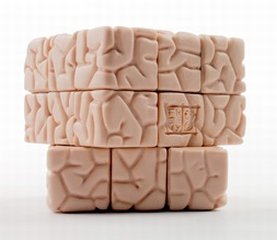
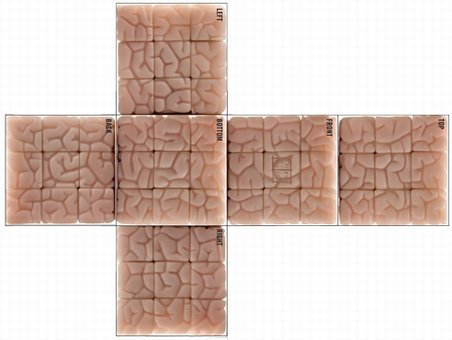 The Brain Cube, designed by Jason Freeny.
A 3x3x3 clad with a squishy material called Kraton, and textured to resemble a brain.
Solve by aligning all the fissures.
Comes in a glass jar, formaldehyde not included.
The Brain Cube, designed by Jason Freeny.
A 3x3x3 clad with a squishy material called Kraton, and textured to resemble a brain.
Solve by aligning all the fissures.
Comes in a glass jar, formaldehyde not included.
Purchased from Marbles The Brain Store. |
|||||||||||||||||||
|
King Pillow Cube - 3x3x3
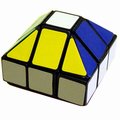
|
King Pillow Cube
A commercially produced shape variation. |
||||||||||||||||||
|
Confused Pillow Cube - 3x3x3
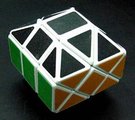
|
Confused Pillow cube from "Socube" | ||||||||||||||||||
|
Hexagonal Prism 3x3x3
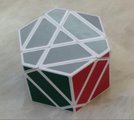
|
Hexagonal Prism 3x3x3 | ||||||||||||||||||
|
Rhombohedron 3x3x3
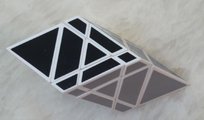
|
Rhombohedron 3x3x3 | ||||||||||||||||||
|
Truncated Hexagonal Dipyramid 3x3x3
|
A "Blue Diamond" (Truncated Hexagonal Dipyramid shape mod to a 3x3x3).
These are being mass-produced in China. |
||||||||||||||||||
|
Hexagonal Dipyramid 3x3x3
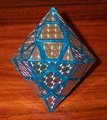

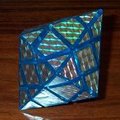

|
A cheap way to make a Hexagonal Dipyramid - combine the parts from two Guo Jia diamonds.
Now Hexagonal Dipyramids are mass-produced by Dian Sheng.
3x3x3 core |
||||||||||||||||||
|
Hexagonal Dipyramid 4x4x4
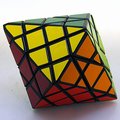

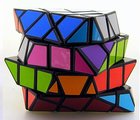
|
Super Dipyramid
(hexagonal dipyramid from 4x4x4 core) |
||||||||||||||||||
|
Dian Sheng "Tank Diamond"

|
Dian Sheng "Tank Diamond" | ||||||||||||||||||
|
Dian Sheng Pyramid (aka "aXe")

|
Dian Sheng Pyramid (aka "aXe")
designed by John Lin |
||||||||||||||||||
|
Various 3x3x3 Shape Variants
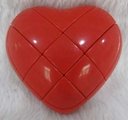
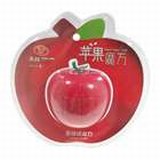

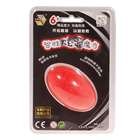



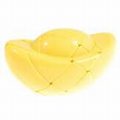
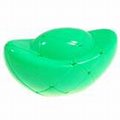
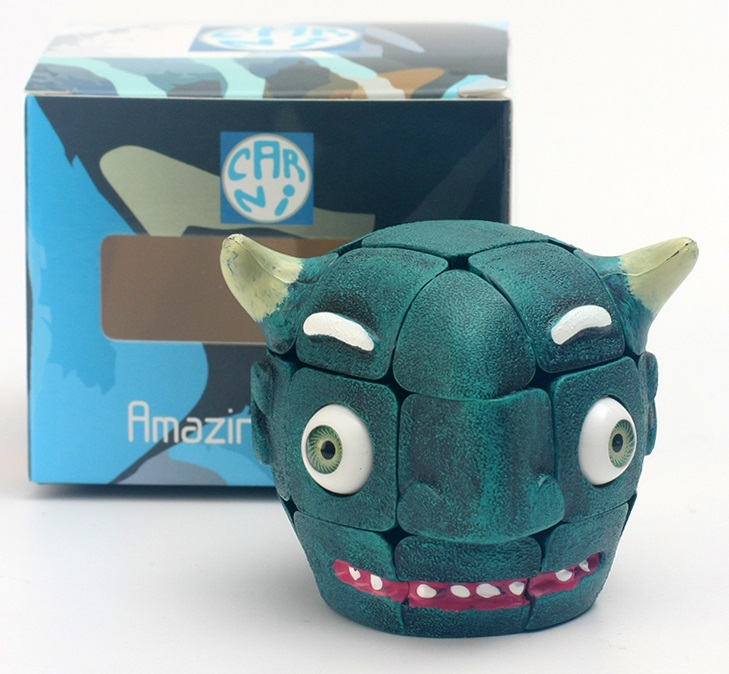
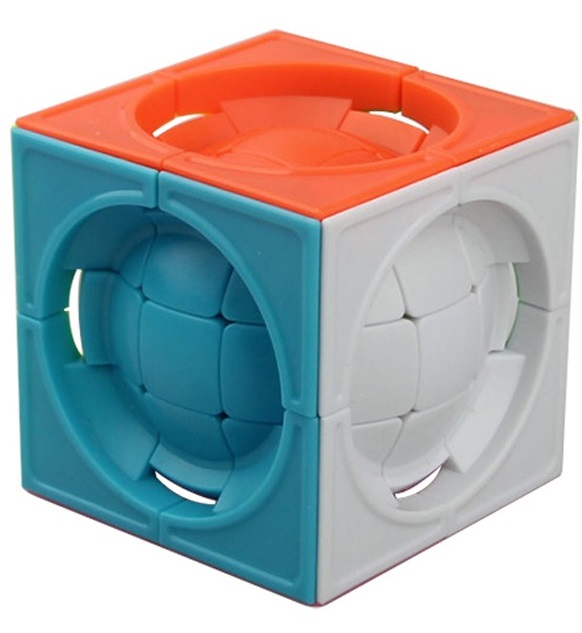
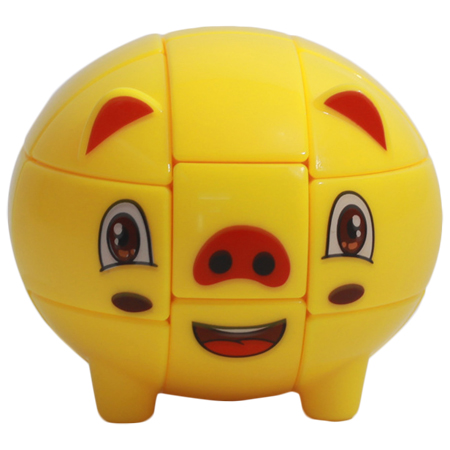
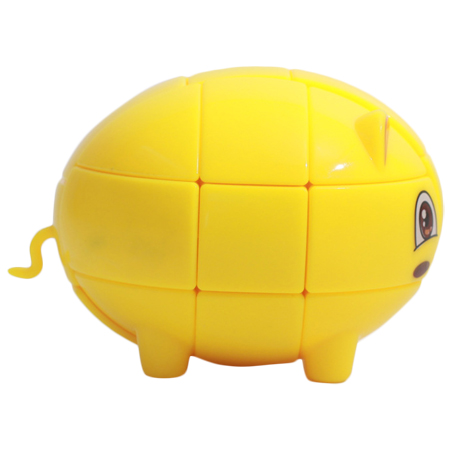 Various 3x3x3 Shape variants, including:
Heart, Apple, Star, Egg/Potato, Cake, Concave Cube, Ingots (3 colors),
Carni Chaak head, FangShi Limcube Deformed Centrosphere, Egg Pig
Various 3x3x3 Shape variants, including:
Heart, Apple, Star, Egg/Potato, Cake, Concave Cube, Ingots (3 colors),
Carni Chaak head, FangShi Limcube Deformed Centrosphere, Egg Pig
|
|||||||||||||||||||
|
Various 3x3x3 Sticker Variants, Color Variants, and Size Variants
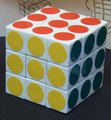
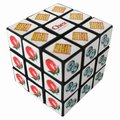
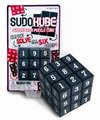
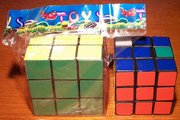
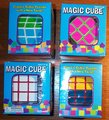
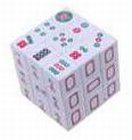
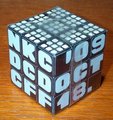
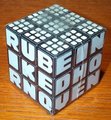
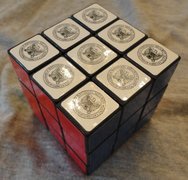
|
|||||||||||||||||||
| Extended and Multicore Cubes | |||||||||||||||||||
|
3x3x3 Extended to 3x3x4
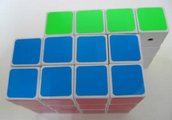
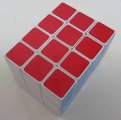
|
3x3x4 Extended Cube This simple extended cube-variant has an extra piece glued to each of the nine facelets of one face. |
||||||||||||||||||
|
3x3x3 Extended to 3x3x5
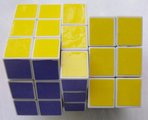
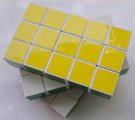
|
3x3x5 Extended Cube This simple extended cube-variant has an extra piece glued to each of the nine facelets of two opposite faces. |
||||||||||||||||||
|
3x3x3 Extended to 4x4x4

|
3x3x3 Extended to 4x4x4 This is a cheap and simple extended cube-variant from Hong Kong, not a 4x4x4 Evil Twin as the description led me to believe. Caveat Emptor! |
||||||||||||||||||
|
Extended 3x3x3 with Deleted Corners

|
An Extended Cube. | ||||||||||||||||||
|
Mini Evil Twin - Mike Grimsley
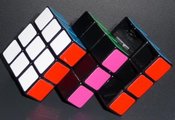
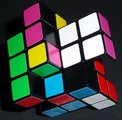
|
Mini Evil Twin Made by Mike Grimsley. |
||||||||||||||||||
|
Siamese Cube chains
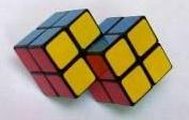
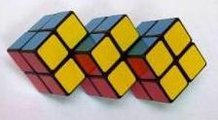
|
Double and Triple Cubes
Available commercially from various sources, made from keychain 2x2x2 cubes. Two cores share a corner in "Siamese" configuration. |
||||||||||||||||||
| Bandaged and Otherwise Constrained | |||||||||||||||||||
|
Bandaged Cube - Meffert

|
1.0*106 = 1,108,800
Bandaged Cube
Jaap's page Andreas Nortmann has investigated bandaged cube variations - Andreas says there are 7356 different bandaged 3x3x3 cubes, of which 5705 are (subjectively) non-trivial. Read his articles in the TwistyPuzzles forum: [T] [T] [T] [T] [T] ; also Hidetoshi [T] |
||||||||||||||||||
|
Bandaged Cube Kit - Cubetwist

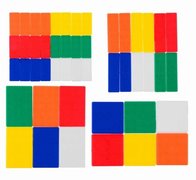
|
A Cubetwist Bandaged Cube Kit, ordered from Lightake | ||||||||||||||||||
|
Nightmare Cube - Tanner Frisby
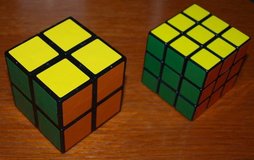
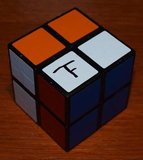
|
Nightmare Cube from Tanner Frisby [T] [Y] [Y] A Nightmare Cube is a bandaged 3x3x3 hidden inside a 2x2x2 shell. Before the first move, all normal 2x2x2 twists are permitted. After a few turns, however, the bandaging comes into play so various moves become blocked, and then solving becomes a nightmare! Tanner told me the YBR corner has no bandaging. In October 2008, Adam Cowan issued free STL files for the Nightmare Cube, in the TP Forums, based on an idea mentioned by Noah Hevey in a post from March 2008. Tanner's version is made from a different core, though. TP Forum member "sublime" made one from wooden corner pieces and a modified keychain 3x3x3 core, and then posted about his copy of the printed version. Also see: [T] [T] Folks have noted that solving a Nightmare cube is more akin to navigating a hidden maze, than applying conventional operators. The solution methodology is discussed at Jaap's page. | ||||||||||||||||||
|
New Spring 2x2x2 Cube with Bandaged 3x3x3 Core

|
A "New Spring" clear 2x2x2 with internal colored bandaged 3x3x3
The New Spring version is not a "Nightmare" cube, since all 2x2x2 moves always work. But restoring the internal 3x3x3 is not trivial! |
||||||||||||||||||
|
Various other Bandaged Cubes


|
Just FYI, there are a slew of other bandaged cubes available, including 4x4x4 cubes. | ||||||||||||||||||
|
Camouflage Cube 3x3x3 - WitEden
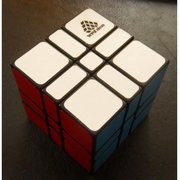
|
Camouflage Cube
A bandaged and extended 4x4x4 Ordered from WitEden Various versions are available. |
||||||||||||||||||
|
Bermuda Cube - DaYan
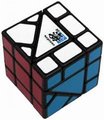
|
DaYan Bermuda Cube Neptune (black)
One of a series of eight types. |
||||||||||||||||||
|
Latch Cube - Okamoto
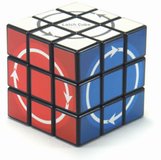
|
Latch Cube - Okamoto | ||||||||||||||||||
|
Quarter Cube - Okamoto

|
The Quarter Cube, designed by Katsuhiko Okamoto and Takafumi Haseda, produced by Chronos Co. Ltd. | ||||||||||||||||||
|
Constrained Cube - Tom van der Zanden

|
The Constrained Cube designed by Tom van der Zanden. Several versions available that have different side turning constraints (90,180,270, and Ultimate). I ordered the "Ultimate" version. | ||||||||||||||||||
|
Pocket Cube - Justin Eplett - Meffert
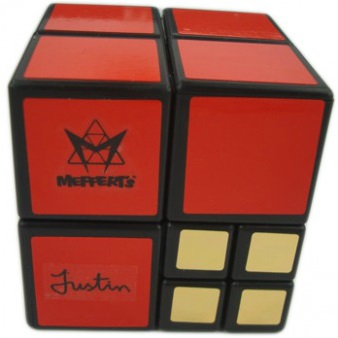

|
Pocket Cube - designed by Justin Eplett, produced by Meffert. A 3x3x3 with clever bandaging and extensions. Two different color schemes. |
||||||||||||||||||
| Axised Cubes | |||||||||||||||||||
If the standard 33 cube is rotated 45° about one face's axis (e.g. z axis) then built up and cut down to be re-formed into a cube,
one obtains the Fisher's Cube; approx. 30° around z
[T]
gives the Windmill Cube;
45° around z and x (or 90° about an edge-to-edge axis) gives the Slice Cube;
combining Fisher's and Windmill gives a "normal-sized" Greenhill's Cube (which is actually larger -
Anthony says
[T]
it is "a 'Truncated Cube' (corners trimmed down to triangles), stood on one corner then built out to a Cube shape. This basically determined the edge length - 77mm.");
60° about a corner-to-corner axis gives the Axis Cube
[T]
[T].
An "axised" Cube with twists, reformed into a cube gives the Ghost Cube
[T].






|
|||||||||||||||||||
|
Fisher's Cube
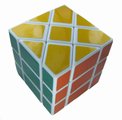
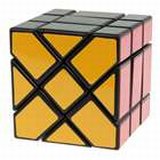
|
Fisher's Cube - originally designed by Tony Fisher, now mass-produced
An axis-rotated 3x3x3 (single axis x 45 degrees) Solve as a 3x3x3, but also has four of six face centers that can be rotated by 90, 180, or 270 degrees.
These are the Supercube face algorithms -
algorithms exist to rotate a single face center by 180, or a pair - one by 90 and another -90.
U180: ( (U R L U2) R' L') x2
U90 & F-90: F B' L R' - U D' F' U' D - L' R F' B U
U90 & D-90: R L' F2 B2 R L' U R L' F2 B2 R L' D'
|
||||||||||||||||||
|
Master Fisher Cube - Moyu

|
Moyu Master Fisher Cube | ||||||||||||||||||
|
Fisher's Cube / Diagonal Cube - 8-color sticker variant

|
Fisher's Cube / Diagonal Cube 8-color sticker variant |
||||||||||||||||||
|
Windmill Cube
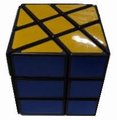

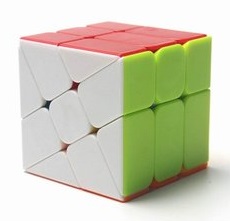
|
Windmill Cube
Also, stickerless version. |
||||||||||||||||||
|
Slice Cube
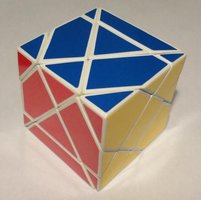
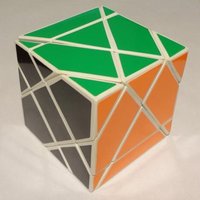
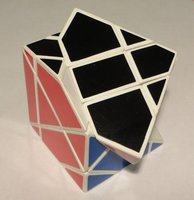

|
At the 2012 New York Puzzle Party (NYPP) hosted by Tom Cutrofello, I bought this hand-made Slice Cube from fellow attendee and twisty puzzle enthusiast "Zhewei." He had posted about this puzzle on the Twisty Forums here. | ||||||||||||||||||
|
Axis Cube
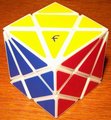
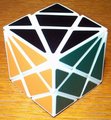
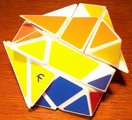

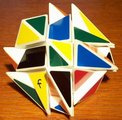
|
Axis Cube Designed by Adam Cowan, made (hand-cast) by Frank Schwartz (RIP). Now mass-produced. |
||||||||||||||||||
|
Moyu Aosu Axis 4x4

|
Moyu Aosu Axis 4x4 (blue) | ||||||||||||||||||
|
Ghost Cube
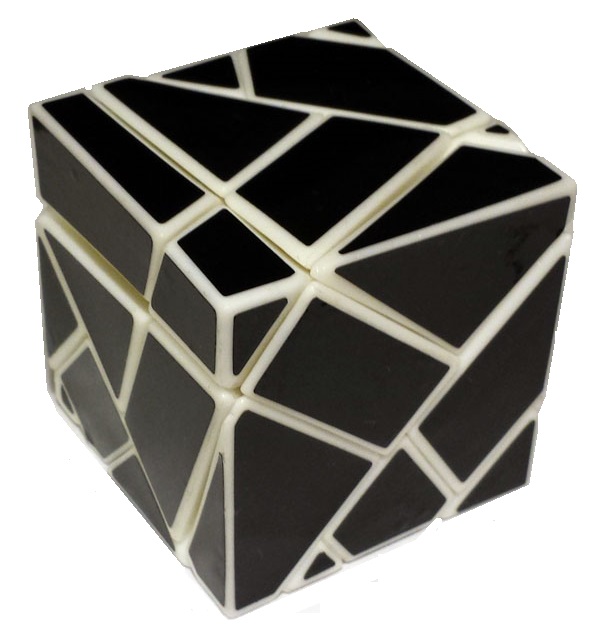
|
Ghost Cube Designed and made (hand-cast) by Adam Cowan and Jason Smith. Purchased from Jason Smith. Possibly the most difficult of the "axised" designs. |
||||||||||||||||||
|
Ghost Cube - Meffert
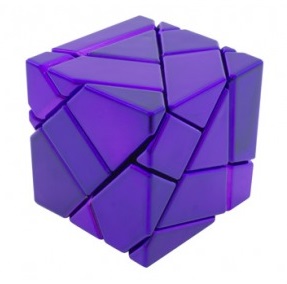
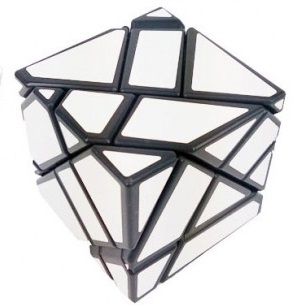
|
Meffert has mass-produced the Ghost Cube I got examples in purple metallic, and black with white stickers. |
||||||||||||||||||
|
Yong Jun (YJ) Moyu Crazy Yileng Fisher Cube

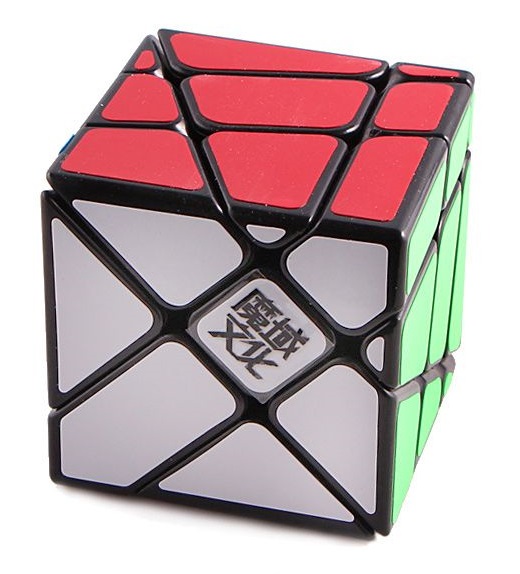

|
Yong Jun (YJ) Moyu Crazy Yileng Fisher Cube - another "axised" 3x3x3 | ||||||||||||||||||
|
Pitcher Insanity Cube - Calvin's Puzzles

|
Insanity Cube - designed by David Pitcher
[T],
issued by Calvin's Puzzles |
||||||||||||||||||
|
DaYan Tangram Cube

|
DaYan Tangram Cube
Isomorphic to the DaYan Pentahedron 3x3, but with super centers. |
||||||||||||||||||
| Skewb Shapemods | |||||||||||||||||||
|
Skewb X-treme

|
Skewb X-treme - 10-color version, designed by Tony Fisher, produced by Meffert. |
||||||||||||||||||
|
Golden Cube - Tony Fisher
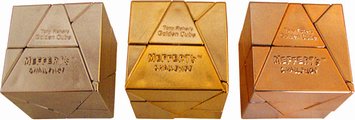

|
Meffert's Fisher's Golden Cube
Perhaps the most famous of the Skewb mods, produced commercially by Meffert. I bought the "Lunar New Year" set of three, and also a black one. |
||||||||||||||||||
|
Mental Block - Tony Fisher
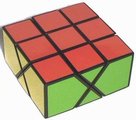
|
Tony Fisher's Mental Block aka Rubik's Layer
Custom-made by and purchased from Tony. A buildup of a full-sized Skewb using add-on prosthetics. First made by hand by Tony back in 1996. [W] |
||||||||||||||||||
|
Curvy Rhombohedron Skewb - John Lin

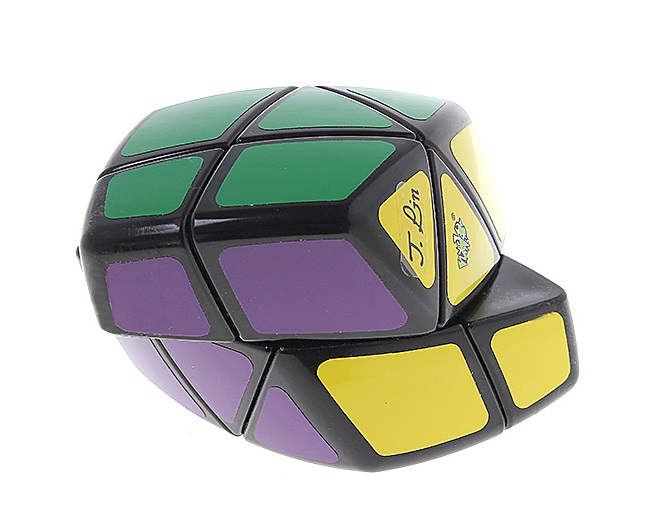

|
Curvy Rhombohedron Skewb - designed by John Lin | ||||||||||||||||||
|
Squished Skewb - John Lin

|
Squished Skewb - designed by John Lin
This is pretty large, and a very nice turning puzzle! |
||||||||||||||||||
|
QiYi Mofangge Twisty Skewb

|
QiYi Mofangge Twisty Skewb | ||||||||||||||||||
|
Skewb to Cuboctahedron - Maruyama
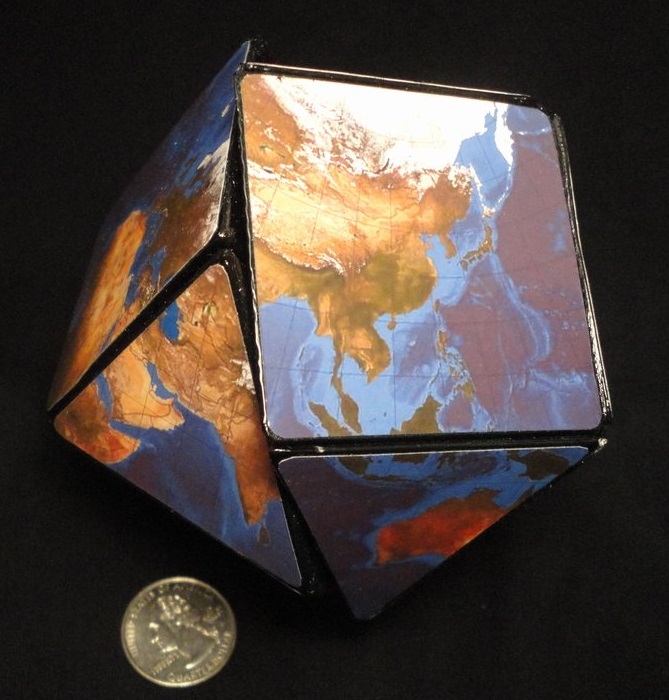

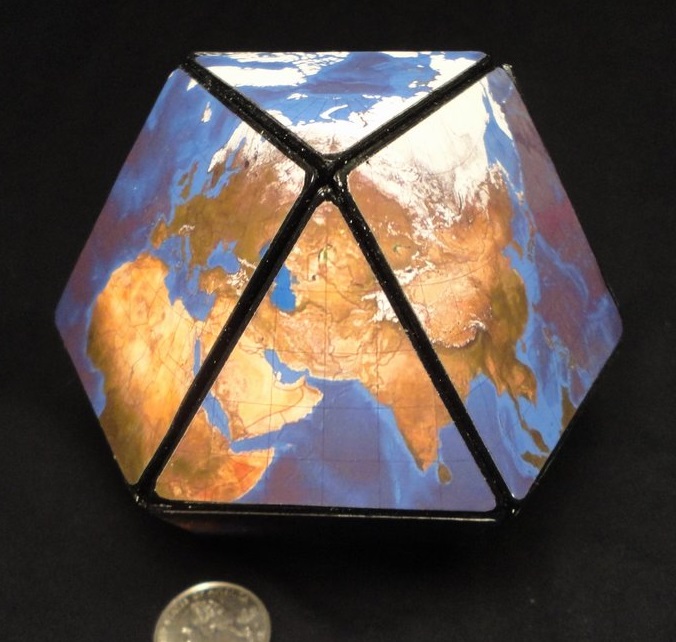
|
A Skewb with 3D printed prosthetics, modded into a Cuboctahedron.
Purchased 1/2018 from "Maruyama" of Japan. [Y] |
||||||||||||||||||
| Edgematching | |||||||||||||||||||
|
Einstein Cube
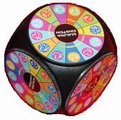
|
12^6 = 2,985,984 (Einstein w/ 12 pos./face)
Einstein Cube
3*106 24^6 = 191,102,976 (Turn 12) 1.9*108 A faces-only cube (granted, the faces are rounded). This type of 3D edgematching puzzle is included here because I consider them "faces-only" versions of twisty polyhedra - no corners and no edges. 12 positions per face. A similar puzzle called "Turn Twelve" has 24 positions per face. |
||||||||||||||||||
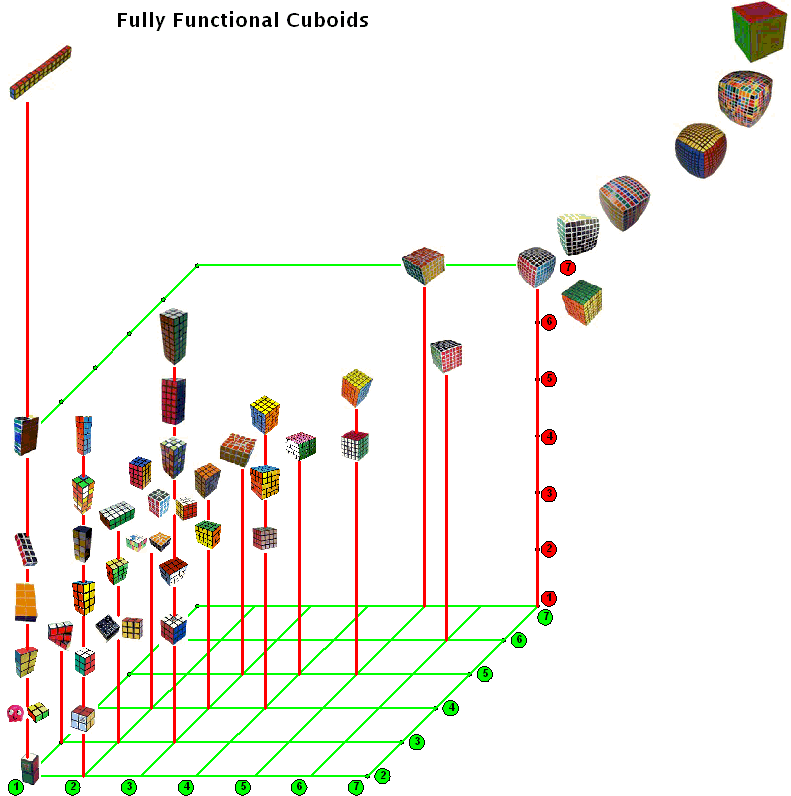
Kevin Sadler has posted a nice
overview of cuboid puzzles
on his "Puzzlemad" blog.
Kevin specifies subcategories for the cuboids:
|
The 1.?.? puzzles:
|
The 2.?.? puzzles:
|
The 3.?.? puzzles:
|
Everything else:
|
| cross-sec. => layers |
2x1 | 2x2 | 2x3 | 2x4 | 3x1 | 3x3 | 3x4 | 3x5 | 3x6 | 4x4 | 4x5 | 5x5 | 5x6 | 6x6 | 7x7 |
| 1 | * | * | * | * | * | * | * | ||||||||
| 2 | * | * | * | * | * | * | * | * | * | * | |||||
| 3 | * | * | * | * | * | * | * | * P C * | P N * | * | * | * | |||
| 4 | * | * | * | * | * | * | * | * | * | * | |||||
| 5 | * | * P C * | * | * | * | * | * | ||||||||
| 6 | * | P N * | * | * | |||||||||||
| 7 | P * C * | * | * | ||||||||||||
| 8 | |||||||||||||||
| 9 | P C * |
| Cuboids - 1-Layer | |
|
Rubik's LED Flashlight 1x1x3

|
1x1x3
Rubik's LED Flashlight 1x1x3 |
|
1x1x4

|
1x1x4 |
|
The Morph, 1x2x2
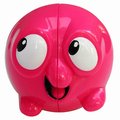

|
1x2x2
The Morph, and a black cuboid Only 6 positions possible! I find this harder to mix up than to solve. |
|
1x2x3
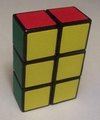
|
1x2x3
by Scott Bedard. |
|
Qboid 1x2x3
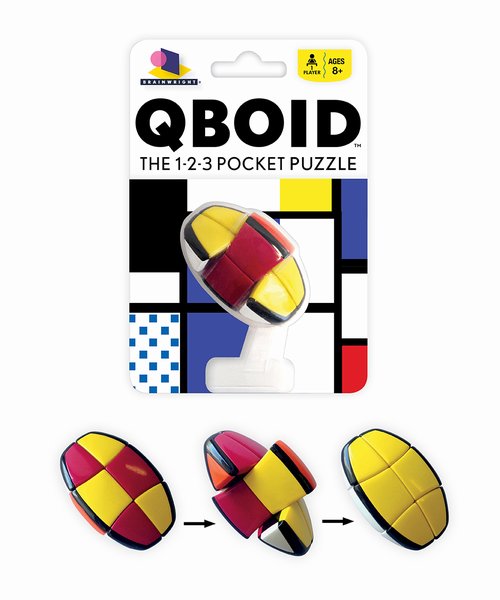
|
1x2x3
Qboid - designed by David Pitcher [T] Issued by Brainwright |
|
Rubik's Junior Bear 1x2x3

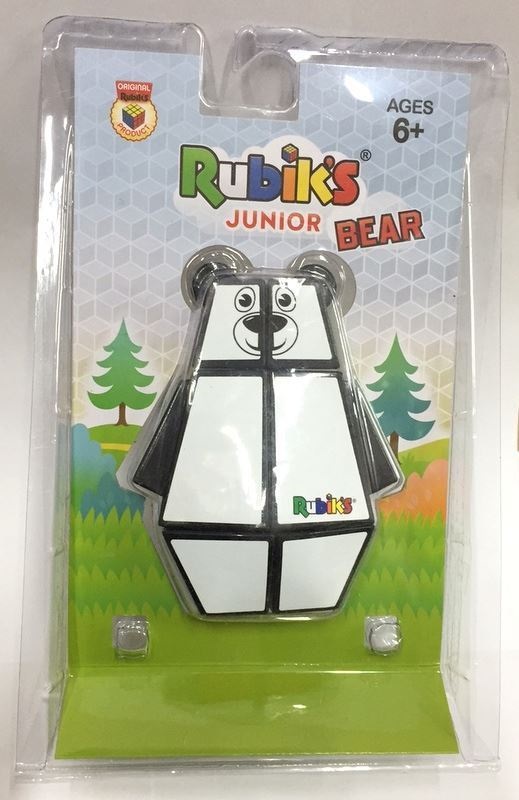
|
1x2x3
Rubik's Junior Bear The Ozo bear - designed by Emmanuel Carrillo [W] [T] has been licensed and mass-produced by Rubik. The original facial features are simplified. The 1x2x3 Bear was followed by the 1x2x3 Cat, Dog, and Bunny. |
|
IQube 1x2x5
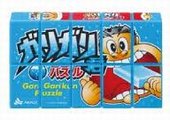
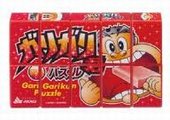
|
1x2x5
IQube blue - www.hanayamatoys.co.jp and IQube red - www.hanayamatoys.co.jp |
|
Pocky 1x2x5
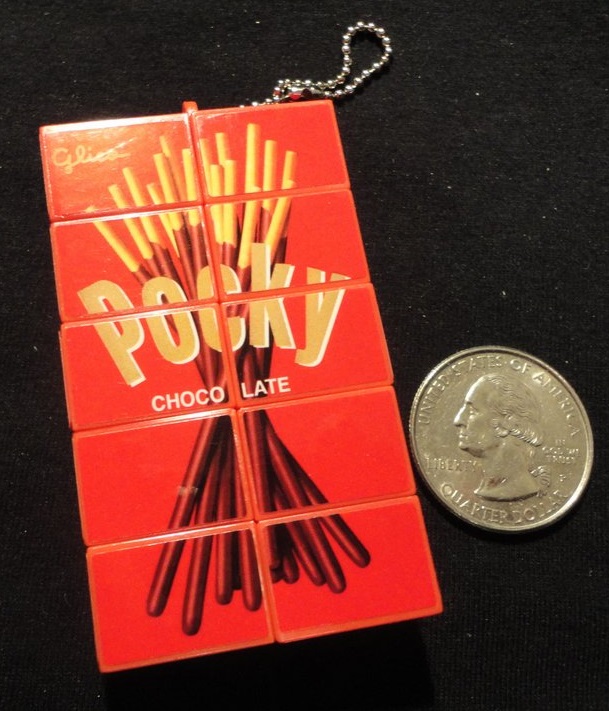
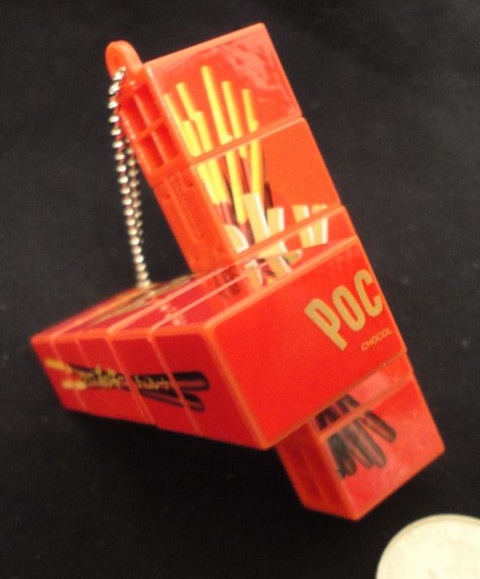
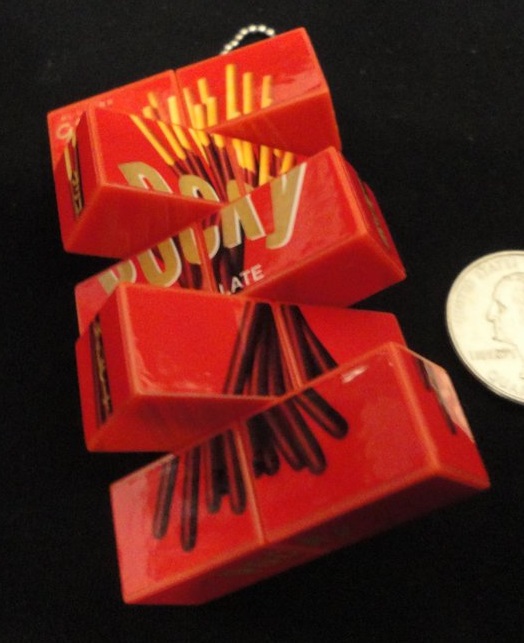
|
1x2x5
Pocky 1x2x5 |
|
Jade Chopsticks 1x2x9

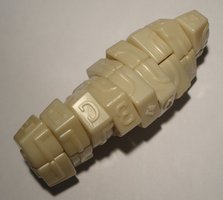
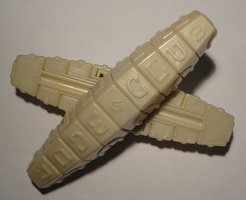
|
1x2x9
The Jade Chopsticks, a 1x2x9. [T] The ambigram on it was designed by John Langdon. Based on the 1x2x13 designed by Oskar van Deventer and the 1x2x9 designed by Ola Jansson. Mass-produced by Meffert. |
|
Floppy Cube 1x3x3 - Okamoto (custom)
Floppy Cube 1x3x3 - Gentosha (mass prod.)


|
1x3x3
Floppy Cube - Katsuhiko Okamoto I have an original custom-made by Okamoto, and the commercial version now available from Gentosha. This won First Prize at the IPP26 Design Competition. At the time, it was a revelation on how to build a 1-layer puzzle and yet keep the corners attached. |
|
Scramble Cube 1x3x3



|
1x3x3
3,041,280 positions
The Scramble Cube - Katsuhiko Okamoto
Okamoto's follow-up to his Floppy Cube - originally known as the Super Floppy when it won the Puzzle of the Year award in the 2009 IPP Puzzle Design Competition. Knock-offs were promptly produced but did not function in the same way - the Scramble Cube does not allow naked edge centers to be rotated. |
|
1x3x4
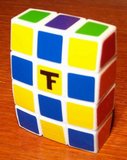
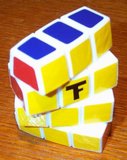
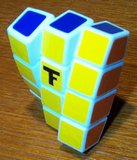
|
1x3x4
Designed by Ola Jansson, made by Tanner Frisby |
|
1x4x4
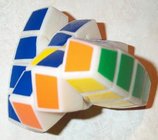
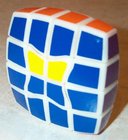
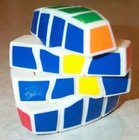
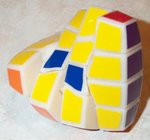
|
1x4x4
Designed by Ola Jansson, made by Karl-Heinz Diekmann One of my favorite twisties! |
|
1x5x5
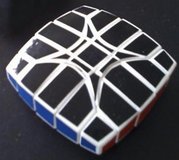
|
1x5x5
designed by Murilo Purcineli Semeghini ("mu puzzles" on TP) [W] Purchased from his Shapeways shop (defunct). A version with a different look, based on Ayi Liu's 4x5x5, was made by Traiphum [T] |
| Cuboids - 2-Layer | |
|
2x2x2

|
2x2x2
[See main Hexahedral section] |
|
Slim Tower 2x2x3 (custom)
Slim Tower 2x2x3 - Gentosha (mass prod.)
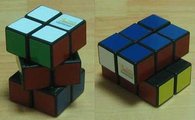

|
2x2x3
241,920 positions.
- this mod is known as the "Slim Tower."
I got a hand-made version a while ago but I forget from whom.
Katsuhiko Okamoto's version is now commercially available from Gentosha.
Solution Algorithms:
1) Gather top 2x2 face
2) Solve top face - swap adj. UFL + UFR: F U' F U F R U R U' R (Do twice for a diag. swap.) 3) Flip & solve the other 2x2 face as top 4) If not done, solve the middle layer - 0, 1, or 2 will be correct... M is middle layer CW seen from top 4a) if 0, do R M2 R (FL<->FR + BL<->BR) if not done, do 4b or 4c 4b) if 1 (at BL) - CW 3-cycle: M' R M R CCW 3-cyc: R M' R M (inverse of above) 4c) if 2: swap adj. FR + BR: (R U2)3 swap diag. FL + BR: F (R U2)3 F (F converts to adj. swap) (See Robert Munafo's site.) |
|
2x2x4 - Garrett Ong (custom)
2x2x4 - Hidetoshi Takeji - Rubik (mass prod.)

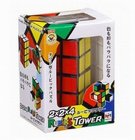
|
2x2x4
I bought one of Garrett Ong's hand-made 2x2x4 puzzles (before I knew they'd be mass-produced). Later, I received a copy of the new Rubik's 2x2x4, signed by designer Hidetoshi Takeji. |
|
2x2x5

|
2x2x5
2x2x5 - WitEden (offset center) |
|
2x2x6

|
2x2x6
2x2x6 - WitEden A beautiful, hefty, fully functional puzzle. |
|
2x2x7
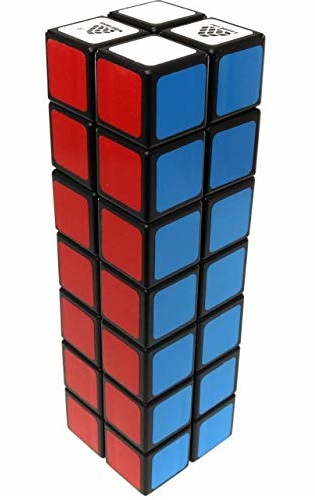
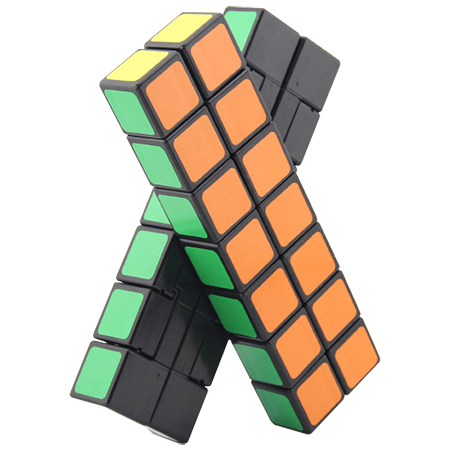

|
2x2x7
2x2x7 - WitEden |
|
Domino 2x3x3
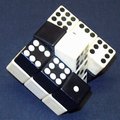
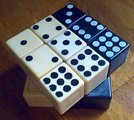
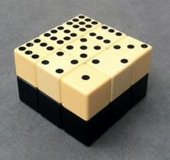
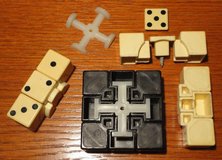
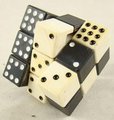


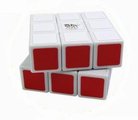

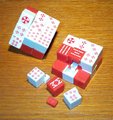
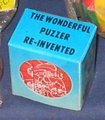
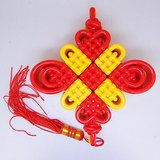
|
2x3x3
4.0*108
Rubik's Domino - Erno Rubik
This is available both vintage and new in various versions.
The most common vintage version is known as a Groove Domino (its internal mechanism relies on grooves - turning is very rough - I have several);
a smoother turning version is known as the Spindle Domino (I finally acquired one);
there is also a Russian Domino which has a more complex internal mechanism and turns more smoothly (I found one!);
there are also recent black and white versions, and
a reproduction of the old design with pips, based on the new 2x3x3, made by Smaz.
QJ has produced a 2x3x3 cylinder.
Also shown are the smaller vintage clone dominos,
and a version in the shape of a Chinese Knot.
Solving the Domino
You only need four algorithms, in four steps: 1) Solve the edges in one 3x3 layer (white) intuitively 2) Hold this layer D, and drop its corners into place -Up Right Front -> Down Right Front using the "Corner Drop" CD: R U R U' R If the colors don't line up, you need to swap the L and R edges.If a D corner is in the wrong place, drop something else on it. 3) Permute the U corners (they won't need orientation) If "headlights" exist, turn U so they face left. Do R U R U' R * y' * R U' R U R
The last 5 moves are CD backwards,
DC
Repeat step 3 if necessary. 4) Permute the U edges (they won't need orientation)
|
|
2x3x4 - Garrett Ong
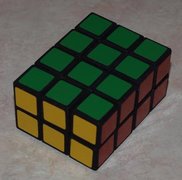
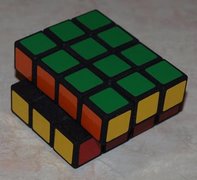
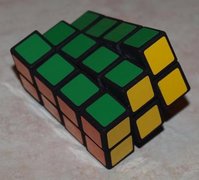
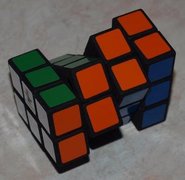
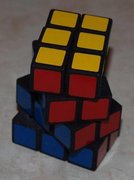
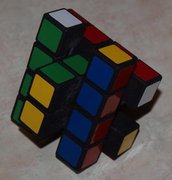
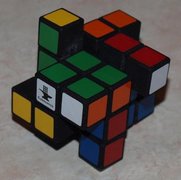
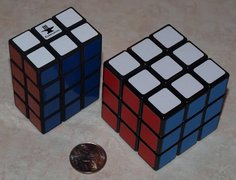
|
2x3x4
Designed by Garrett Ong [T] [S] Garrett's 2x3x4 won the Summer Puzzle Building Contest. It's a great achievement at its price point (under $60). |
|
2x3x4 - Mf8 (mass prod.)
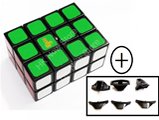
|
2x3x4
mass-produced commercial version from DaYan / Mf8 I modified mine with the 3 extra split edges that eliminate hidden bandaging and restore full functionality |
|
2x3x5 - MattStudiosPuzzles
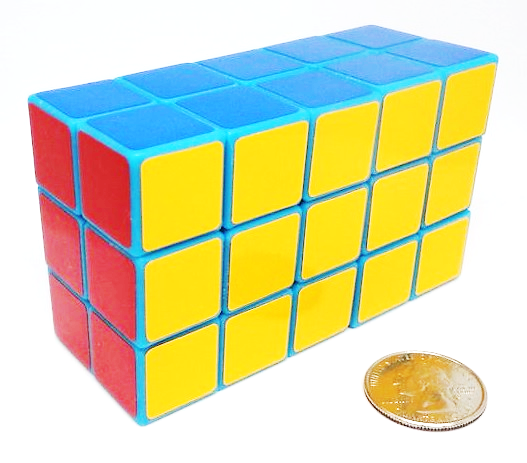

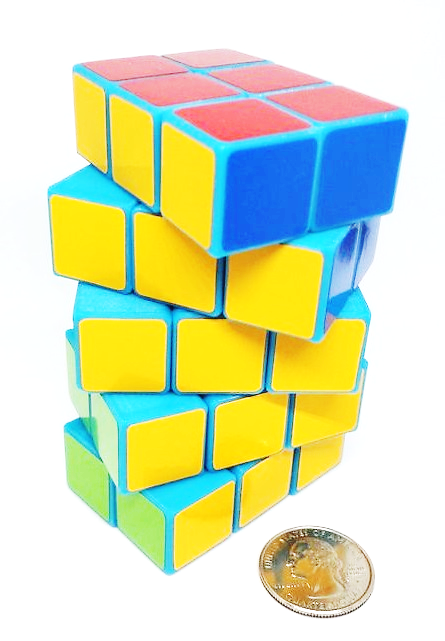

|
2x3x5
- a custom fully functional cuboid twisty, by MattStudiosPuzzles on Etsy. |
|
2x4x4 - Ola Jansson
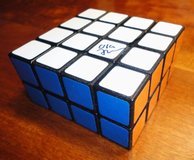
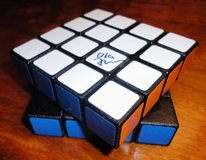
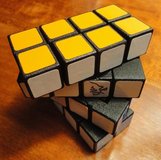
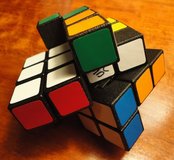
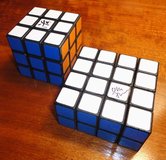
|
2x4x4
by Ola Jansson (Olz). I have a version 3.25, made by Ola. Here is a video of version 3.1 which looks similar: [Y]; The original was much larger: [Y]; [T] [S] Solve video: [Y] This is a very nicely finished, stable and incredibly smooth-turning puzzle, and it shape-shifts. |
|
2x4x6
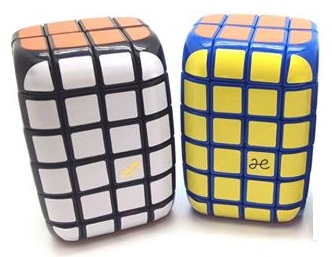
|
2x4x6
A black and a blue copy of the 2x4x6 cuboid twisty puzzle - designed by Hunter Palshook, produced by Calvin's Puzzle |
|
2x5x5
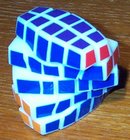
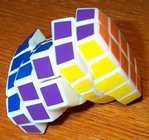
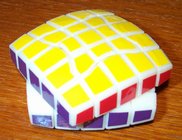
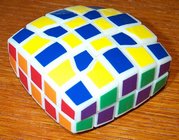
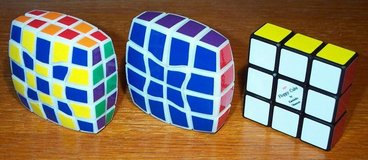
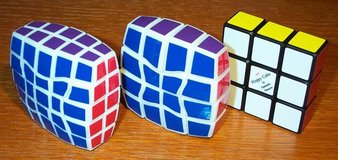 The comparison photos show the 2x5x5 with the KHD/Olz 1x4x4,
and the original hand-made 1x3x3 from Okamoto.
The comparison photos show the 2x5x5 with the KHD/Olz 1x4x4,
and the original hand-made 1x3x3 from Okamoto.
|
2x5x5
Designed by Ola Jansson, made by Karl-Heinz Diekmann |
|
2x6x6
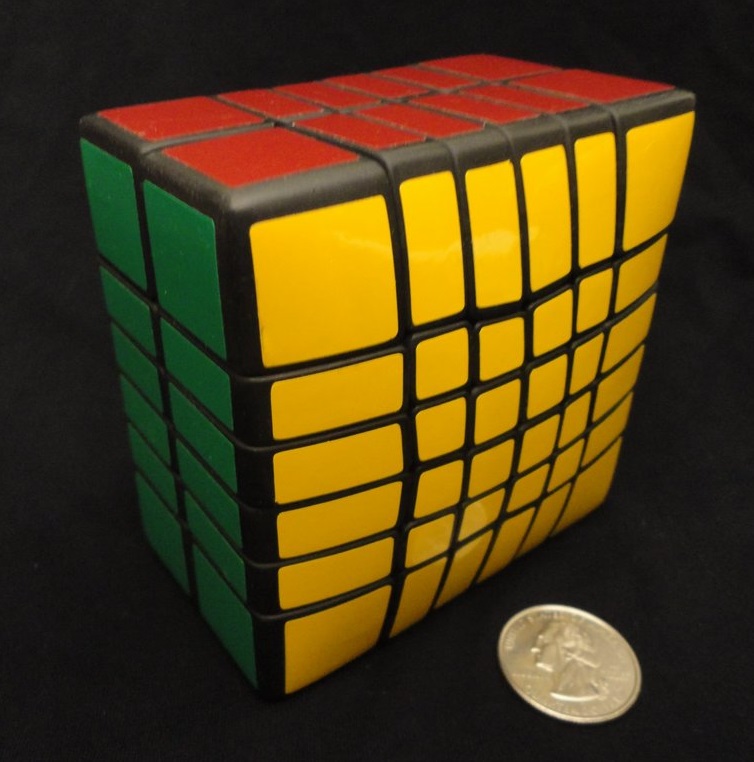
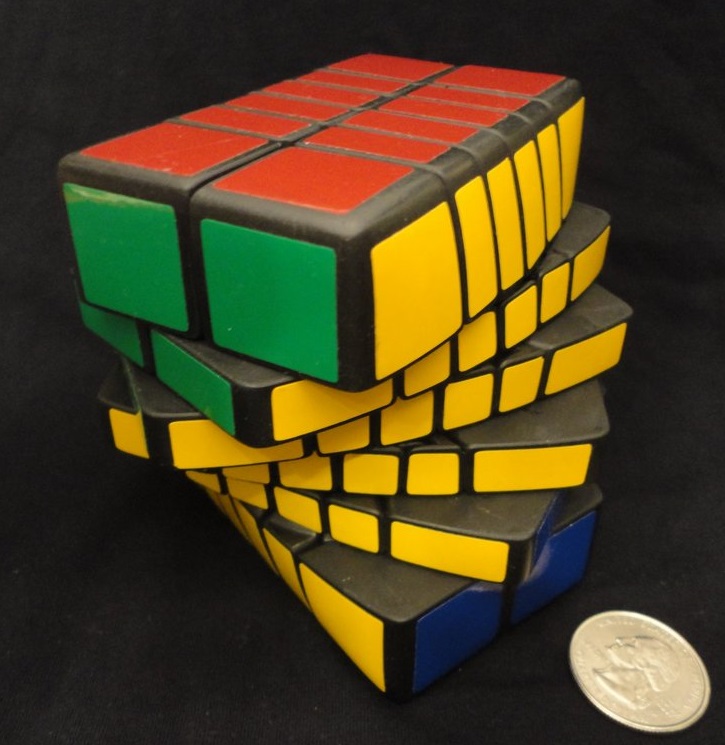


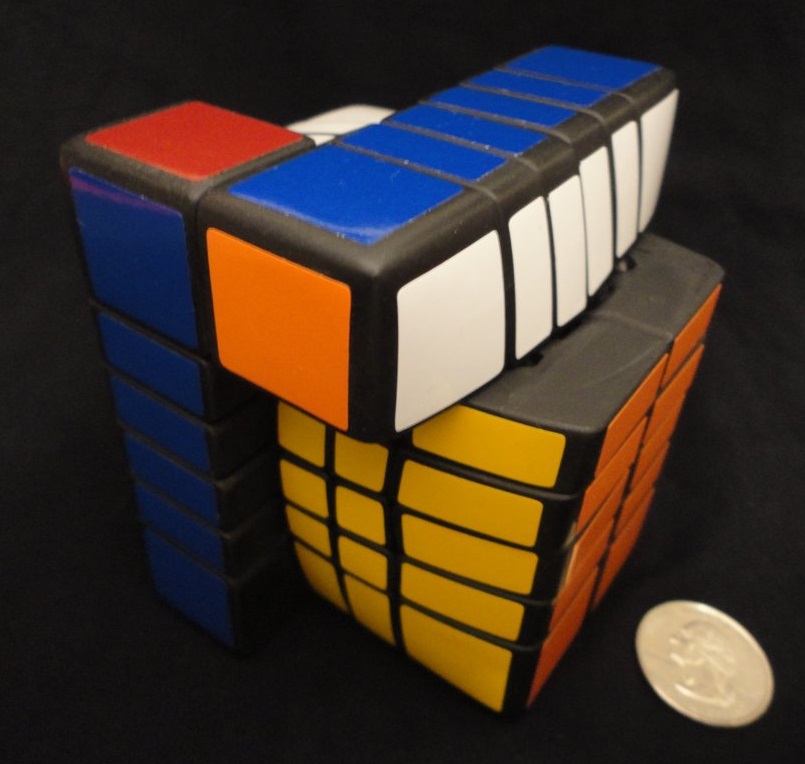
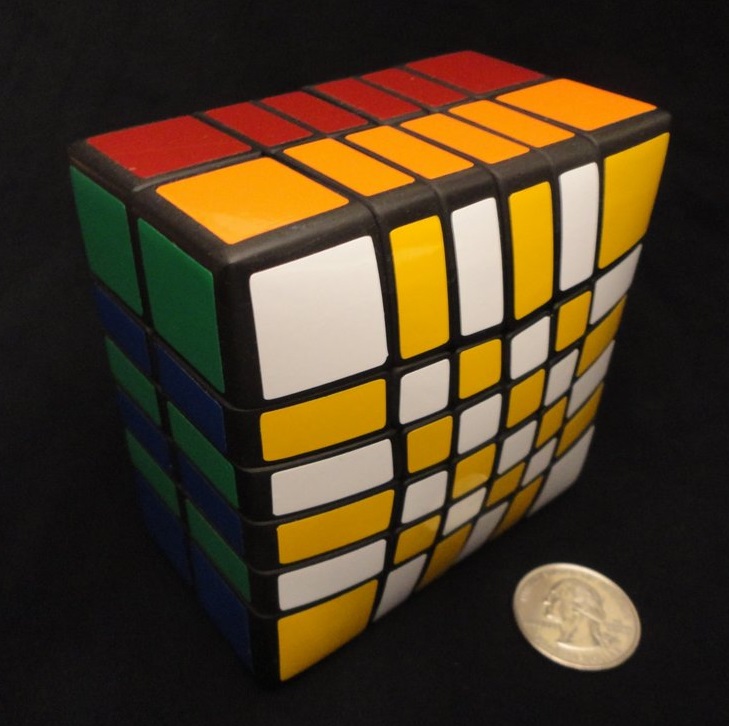
|
2x6x6
Hand-made Custom 2x6x6 Cuboid Twisty Puzzle - Traiphum Prungtaengkit [FB] |
| Cuboids - 3-Layer | |
|
3x3x3
|
3x3x3
[See main Hexahedral section] |
|
3x3x4
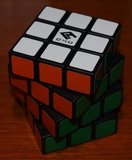
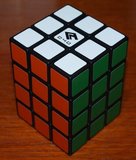
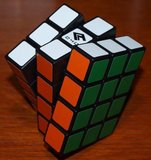
|
3x3x4
4.13 x 1016
issued by
James Lee at Cube4you
Previously only available as an expensive hand-made custom creation. This is based on Jin Kim's design - get STLs by Tom van der Zanden at TwistyPuzzles.com Forums, thread #12134. |
|
Proportional FF 3x3x5
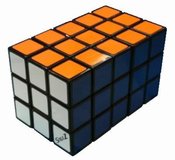
|
3x3x5 (Proportional)
made by Smaz |
|
Cubic 3x3x5
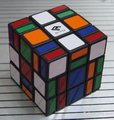
|
3x3x5 (Cubic)
From Cube4You. Note: this design was first sold by Adam Cowan and Jason Smith. |
|
3x3x6 (Non-proportional)
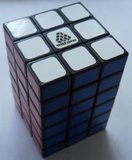
|
3x3x6 - Witeden |
|
Proportional FF 3x3x7
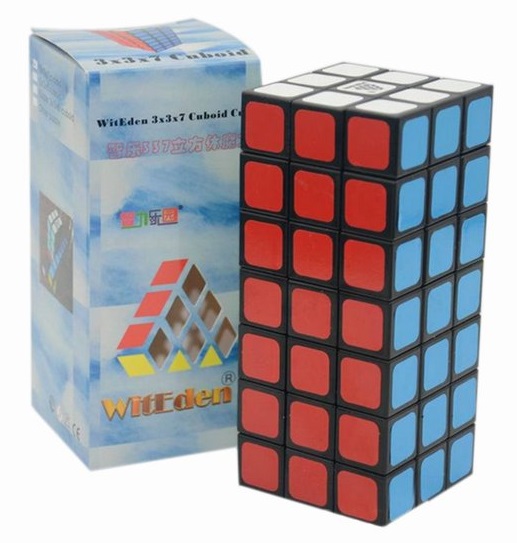

|
3x3x7 (Proportional)
Witeden 3x3x7 |
|
Cubic 3x3x7

|
3x3x7 (Cubic)
From Cube4You. |
|
Cubic 3x3x9
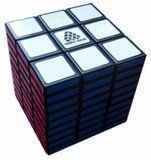
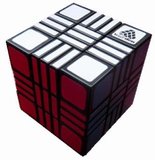
|
3x3x9 (Cubic)
Also 3x3x9 Roadblock I - black |
|
3x4x4

|
3x4x4
Ayi's 3x4x4 |
|
3x4x5 - Tom van der Zanden (custom)
3x4x5 - Mf8 (mass prod.)
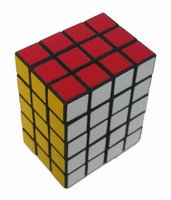
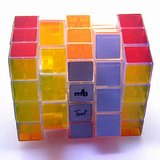
|
3x4x5
Designed by Tom van der Zanden. I have a Shapeways print in black, put together by Tom. I also have a transparent instance of the mass-produced version by Mf8. Both turn very nicely, and both shape-shift. |
|
3x5x5 - Floyd Newberry (custom)
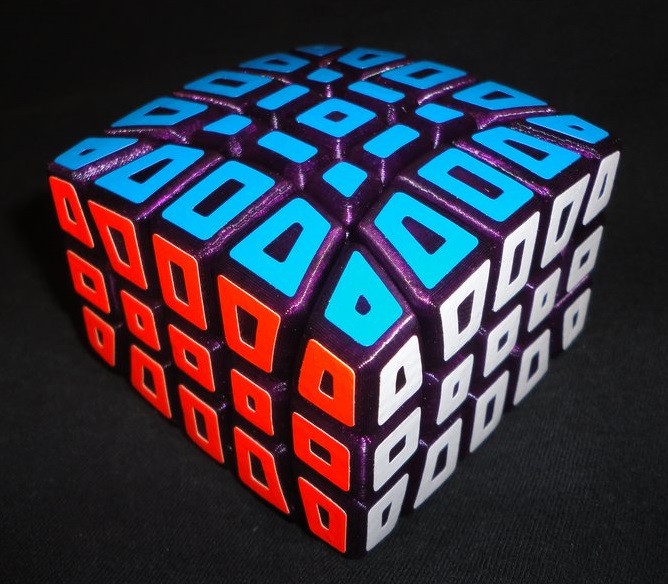
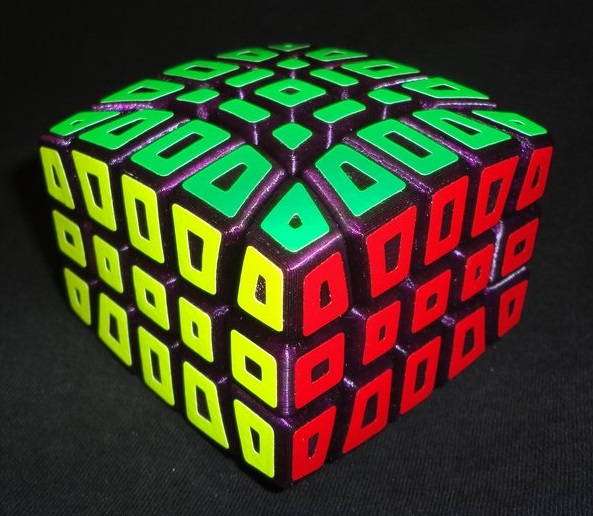
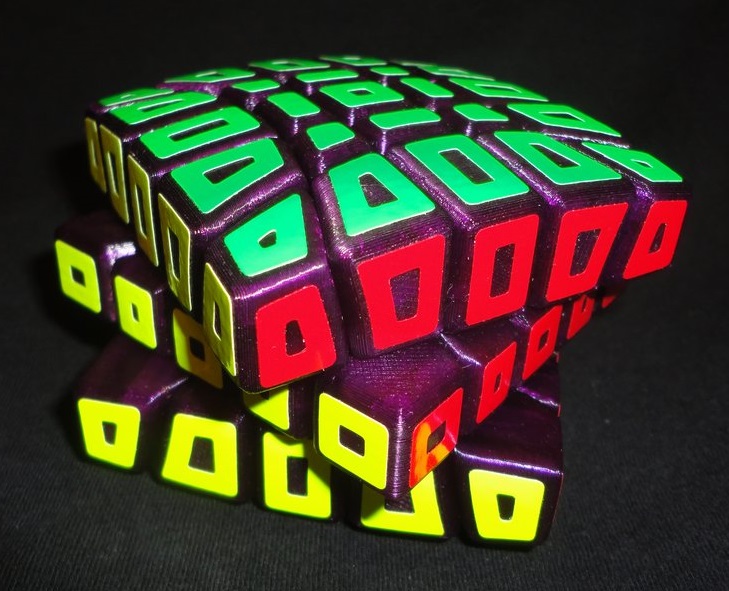
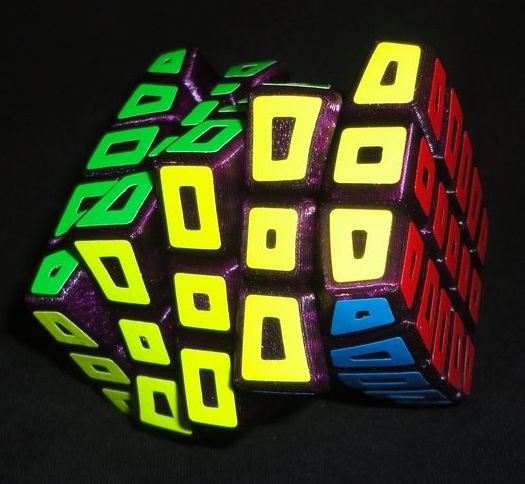

|
3x5x5
A custom FDM 3D-printed 3x5x5 cuboid twisty puzzle made by Floyd Newberry [T] Not loose and turns great. I love the purple material and the custom hollow stickers! |
|
3x5x7 - Traiphumi Prungtaengkit (custom)
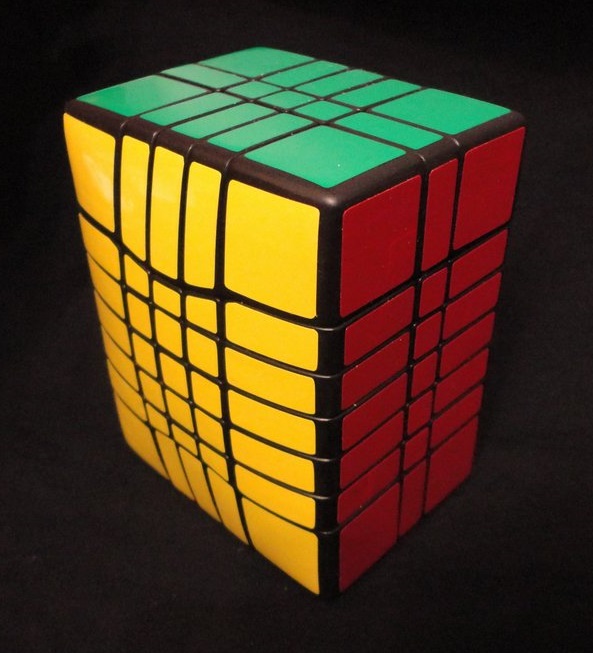
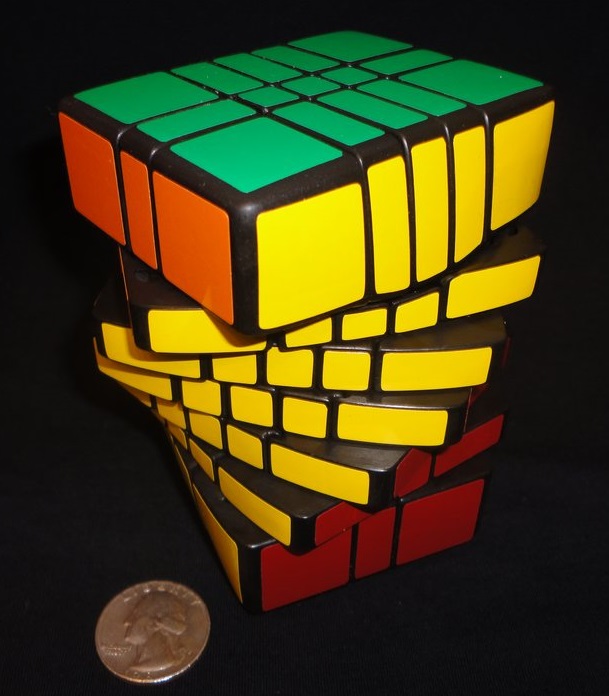
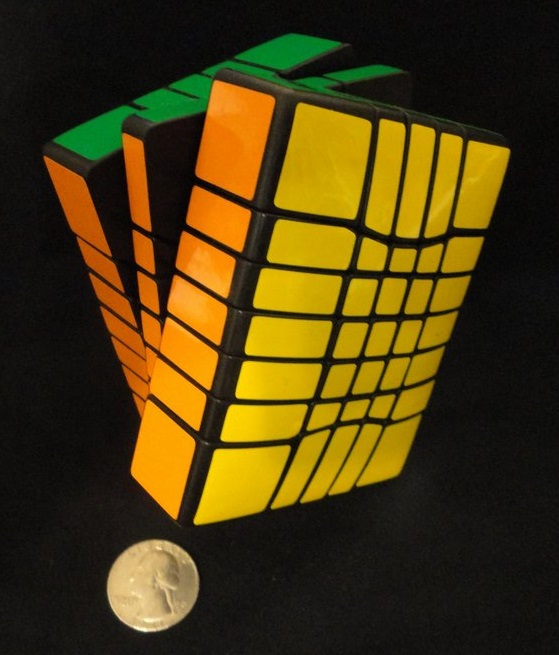
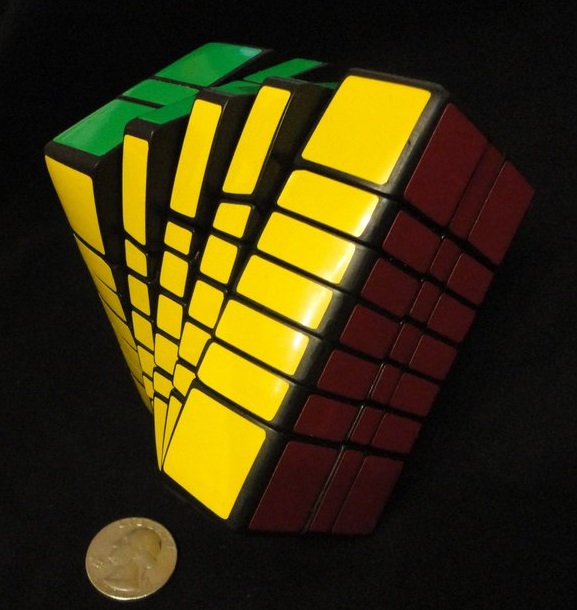
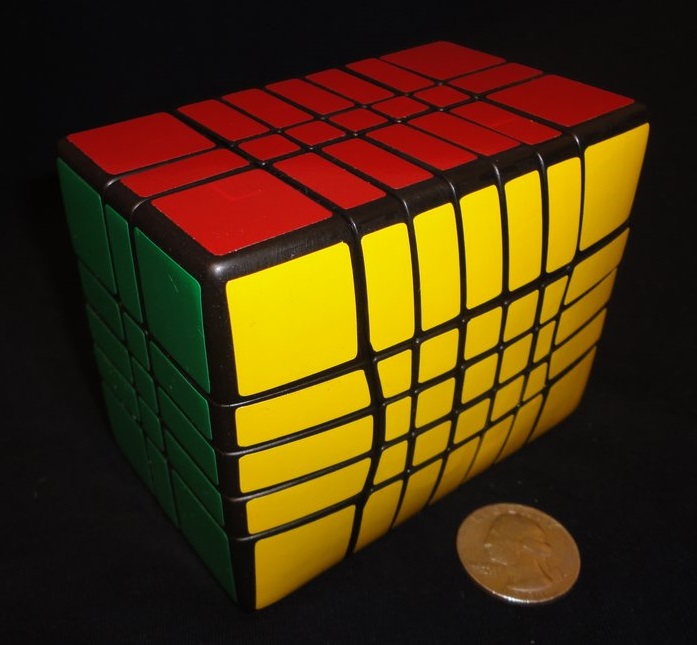
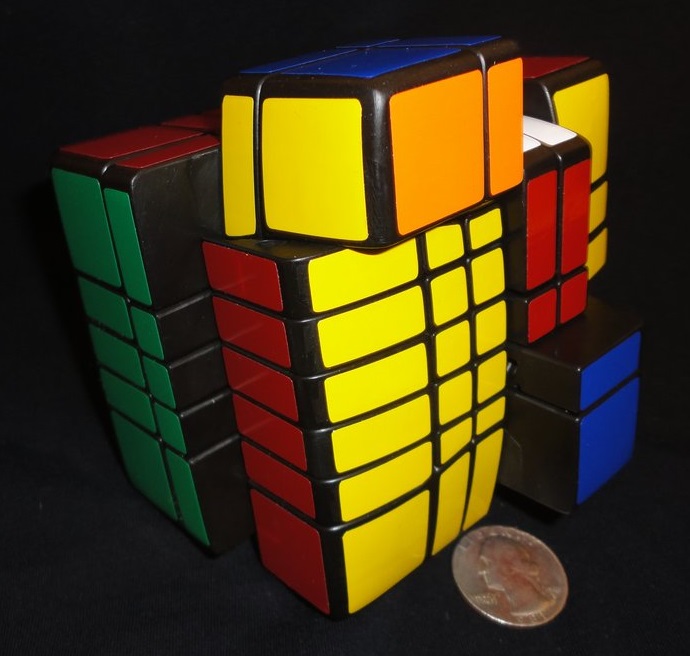
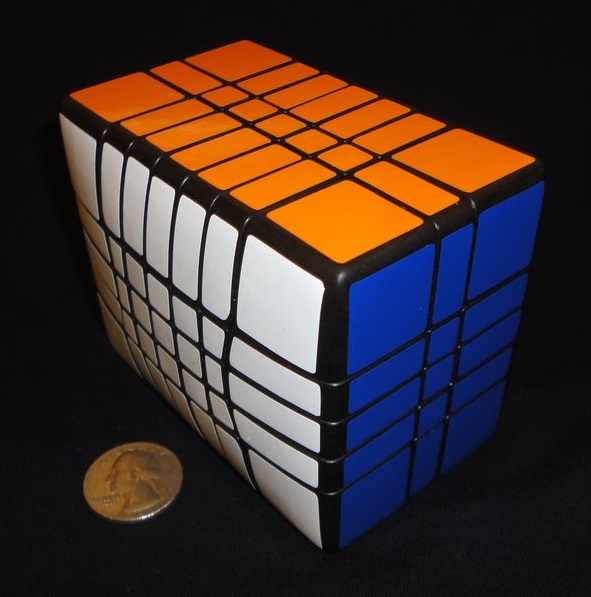
|
3x5x7
made by Traiphumi Prungtaengkit Solid, smooth, and beautiful - as usual! See a nice article on cuboids by Kevin Sadler at Kevin's Puzzlemad blog. Kevin calls the 3x5x7 the ULTIMATE cuboid. |
| Cuboids - 4-Layer | |
|
4x4x4
|
4x4x4
[See main Hexahedral section] |
|
4x4x5

|
4x4x5
Ayi's Toy [T] [W] |
|
4x4x6
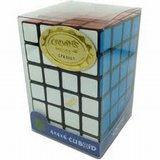

|
4x4x6
Tom van der Zanden designed a 4x4x6 cuboid [T], which has now been mass-produced by Calvin Fan and marketed under his Calvin's Puzzle line [T]. |
|
4x5x5

|
4x5x5
Ayi's 4.5.5 ayistoy.com |
| F | V | E | ||||||
| O1 | O2 | O3+ | O1 | O2 | O3 | O4+ | O1 | O2 |
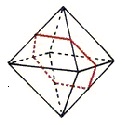
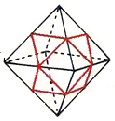
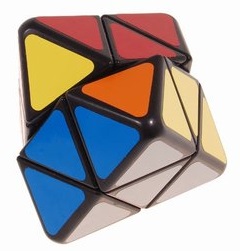


|
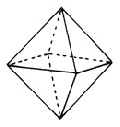
N/A
Babyface Edge Matching 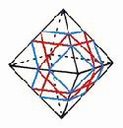

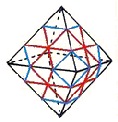

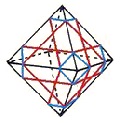

N/A
Trunc. Dino Octa 
N/A
C-O Dino Octa |
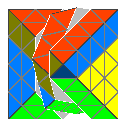

|



|

N/A
trivial tips only 
Octa
form of Pyra- middle 


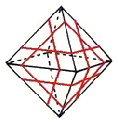





|



Pyra-
middle w/ deep cuts 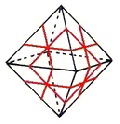



|




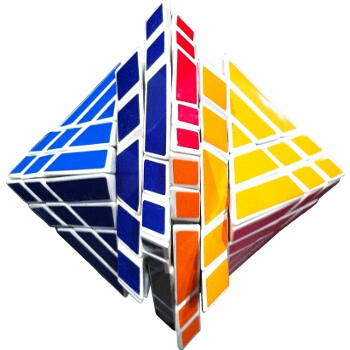
|


|
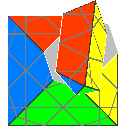



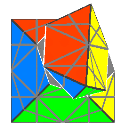

|
| Face-turning Order 1
The FT-O1 Octahedron has a single cut midway between each pair of parallel faces. 

|
|||||||||||||||||||||||||||||||||||||||||||||||||
|
Skewb Diamond - GB 4.1.1

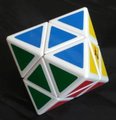
|
138,240 - Uwe Meffert - Skewb core
Skewb Diamond, also a clone from Mozhi, in white.
In this Skewb mod, the orientations of the Skewb corners do not matter (they have become the monochrome triangular face centers) but the orientation of the Skewb faces do since they have become the four-color tips. Jaap's page |
||||||||||||||||||||||||||||||||||||||||||||||||
|
Skewb Diamond - various truncations
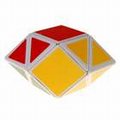
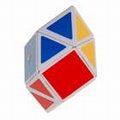
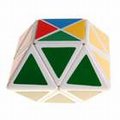
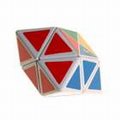
|
Various truncations of the Skewb Diamond - Rugby ball and Treasure Box. | ||||||||||||||||||||||||||||||||||||||||||||||||
|
Skewb Hex - Tony Fisher - Meffert


|
Meffert's Skewb Hex
Designed by Tony Fisher - used to be a hand-made custom mod. A Skewb Diamond with the tips truncated (but not all the way). Truncating the tips all the way gives a cuboctahedron shape - this has been made as a custom mod by Carter Tarrer and is called the "Mama Skewb." (Shown but I don't have it.) Note how in either case the orientation of the square faces must be evident in order for the puzzle to be non-trivial - in Tony's case the sides of the frustums are colored; in Carter's case each bare square face is colored along its edges. |
||||||||||||||||||||||||||||||||||||||||||||||||
|
Square Octahedron - Mozhi
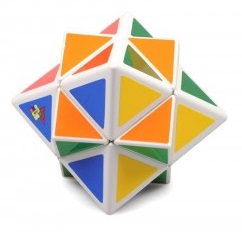
|
"Square Octahedron" This version of the Skewb Diamond (actually the Mozhi brand diamond) has build-ups on the triangular faces which make their orientation matter, so it has more states than the Skewb Diamond. |
||||||||||||||||||||||||||||||||||||||||||||||||
|
Face-turning Order 2
|
|||||||||||||||||||||||||||||||||||||||||||||||||
|
Face-Turning Octahedron (FTO)- GB 4.1.2

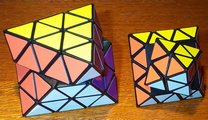
|
3.14*1022
Face-Turning Octahedron (FTO)
(on the left, compared to the Magic Octahedron on the right)
Also known as the "8-axis octahedron." When this puzzle first appeared, I went through some machinations to obtain one from an Asian contact - it is shown in my comparison photos here. Now they are produced by Lanlan and are available for around $12. |
||||||||||||||||||||||||||||||||||||||||||||||||
|
Solving the FTO
You really only need one algorithm, but you'll have to be thoughtful about how to apply it in sequences towards the end of the solve. I find this makes solving the FTO fun.
Hold the puzzle so one triangular face is on top, pointing away from you - as in the first Lanlan photo where green is on top and white faces you.
The algorithm is: (R U R' U)x2
It moves the 3 face centers and the 3 edges in the top layer clockwise one position,
without disturbing the rest of the puzzle.
The solution process is: 1) Solve the corners, intuitively. Corners only have two orientations, not four. A handy alg to twist both the UR and UL corners 180 in place is: R U' R' U R' L R L' 2) Move all face centers into position, using the alg with "slice" setup moves. At first you can simply use a slice move to directly place a center where needed, but eventually you'll have to use a slice move to move the target location into an orbit where a needed piece sits, place the piece using the alg, then move the slice back, carrying the newly placed piece into its proper position. You may even have to use the alg as a first step, to rotate correctly placed centers out of the way, or a needed center into position in preparation for putting it into the target slice. But these sequences shouldn't be too difficult to figure out! 3) Move all edges into position, using the alg - but avoid setup moves other than sequences of interlocking alg moves, lest you mess up the placed centers. You do this after step (2) since although the alg will move the centers, by now they are indistinguishable and interchangeable. This is the hardest step, since you have to figure out the ballet of swaps and temporary displacements to get the last few edges into place together. |
|||||||||||||||||||||||||||||||||||||||||||||||||
|
Truncated Face-Turning Octahedron (FTO)- LanLan Hydrangea
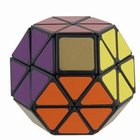

|
LanLan Hydrangea - Truncated Face-Turning Octahedron | ||||||||||||||||||||||||||||||||||||||||||||||||
|
Dino Octa - GB 4.1.3 - (Okamoto) Mf8
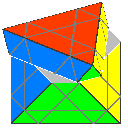

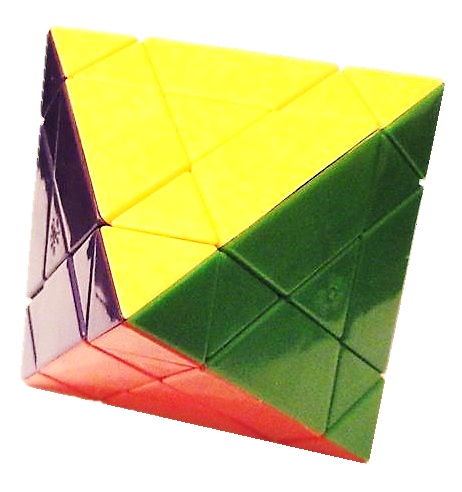
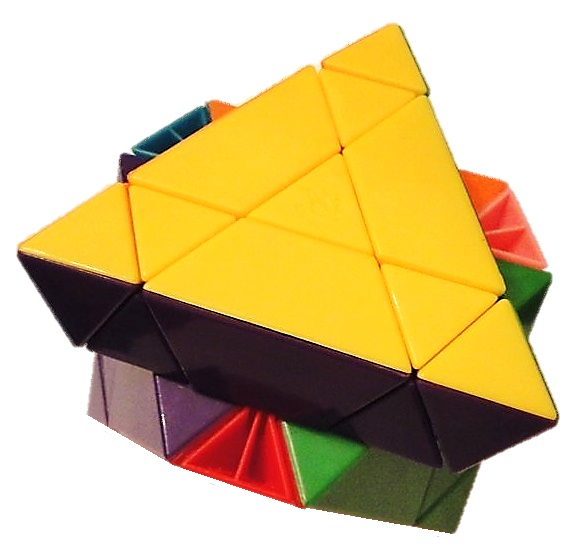
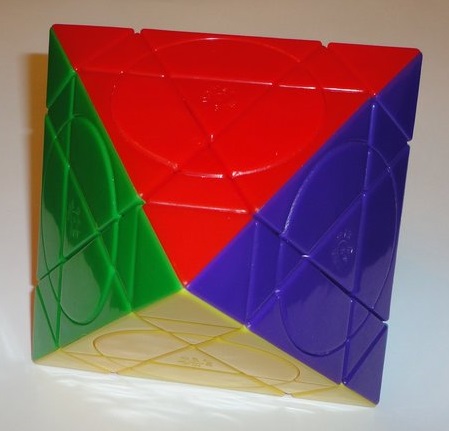
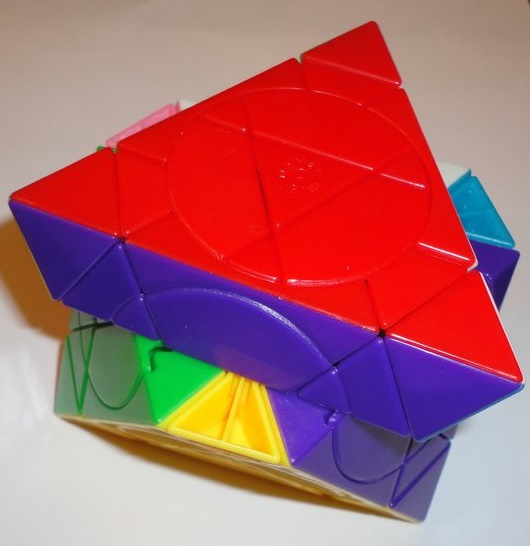
|
Mf8 Crazy Octahedron Standard - no circle faces
This substantial puzzle is a nice implementation of the "Dino-Octa" face-turning octahedron design (GB 4.1.3) originally hand-made by Katsuhiko Okamoto in 2006. [T] Out of the box it is prone to catching, though. I prefer stickerless twisty puzzles like this when available. Face centers remain in place. Also shown is the Mf8 Crazy Octahedron Venus - all circle faces The four other "planets" (Mercury, Mars, Jupiter, and Saturn) can be made by combining pieces of the Standard and Venus puzzles. [Y] |
||||||||||||||||||||||||||||||||||||||||||||||||
|
Rainbow Octahedron
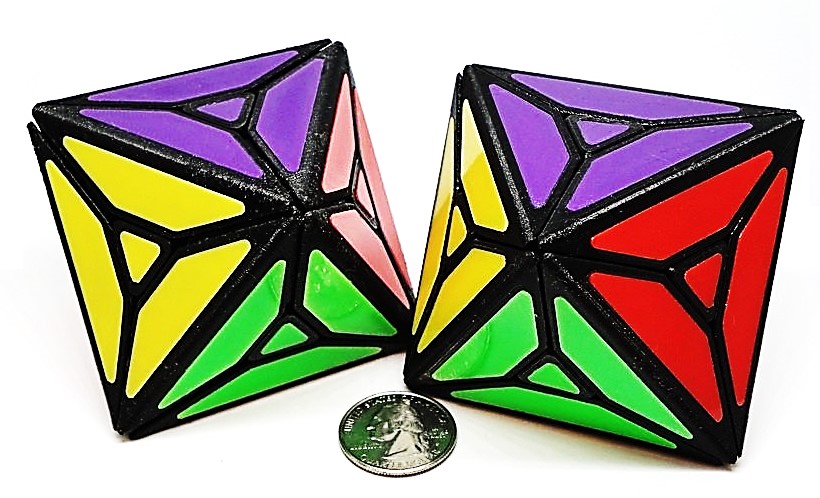
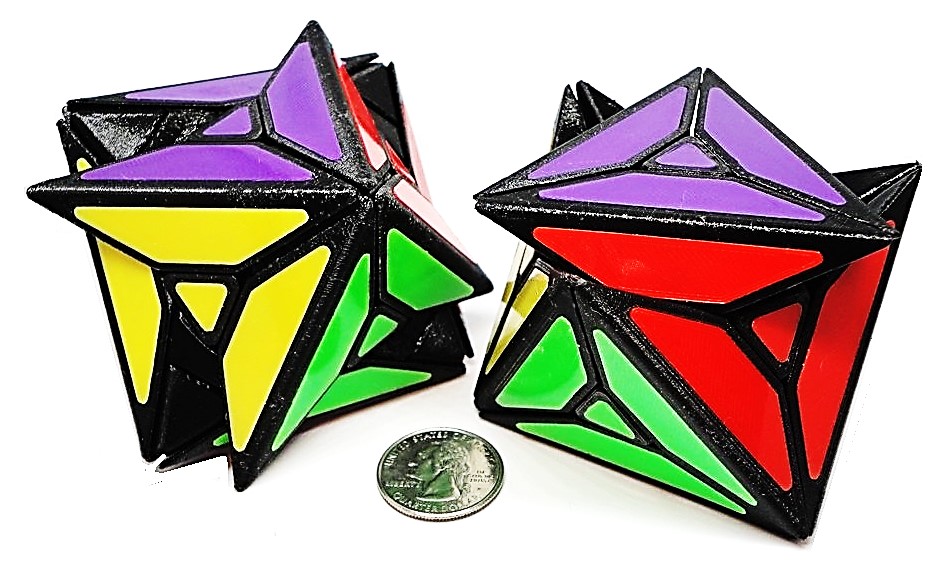
|
A pair of deceptively look-alike custom-3D-printed twisty puzzles:
an Edges-Only Trajber's Octahedron, and a Rainbow Octahedron - designed and made by Kevin and Jenna Uhrik. I had wanted examples of these two puzzles for a while, and asked Kevin to design "twins" for me - he produced this beautiful and satisfying pair. They have inlaid tiles, and turn very well. Kevin posted a video of the puzzles. They have worn in nicely and turning is much less "scratchy" than it sounds in the video.
The Rainbow Octahedron (on the right) is so-named because in the past it was made by building up a
Rainbow Cube, |
||||||||||||||||||||||||||||||||||||||||||||||||
|
Fangshi Limcube 2x2 Transform Pyraminx BaMianTi II - Octahedron II

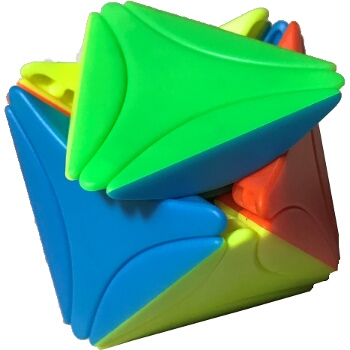
|
Fangshi Limcube 2x2 Transform Pyraminx BaMianTi II - Octahedron II
This is a small and curvy-cut but very nice mass-produced implementation of the Rainbow Octahedron. It can be found for about $10. The Rainbow Octahedron is fairly easy to solve - only the edges permute - it can be done with no algorithms. I really like this one! |
||||||||||||||||||||||||||||||||||||||||||||||||
|
Master Skewb Diamond - GB 4.1.4


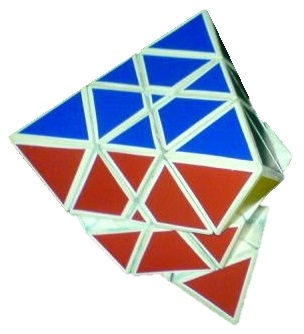
|
4.1.4 "Morphix" Octa - face centers move
an FTO with exposed centers aka Master Skewb Diamond, made by "kwsjack054" aka Wen Hsi Kang in May 2011 [TP Museum] [T] [Mf8 BBS] Also Clay & Eva in June 2010 [T] |
||||||||||||||||||||||||||||||||||||||||||||||||
| Face-turning Order 3+ | |||||||||||||||||||||||||||||||||||||||||||||||||
|
Master FTO - GB 4.1.5

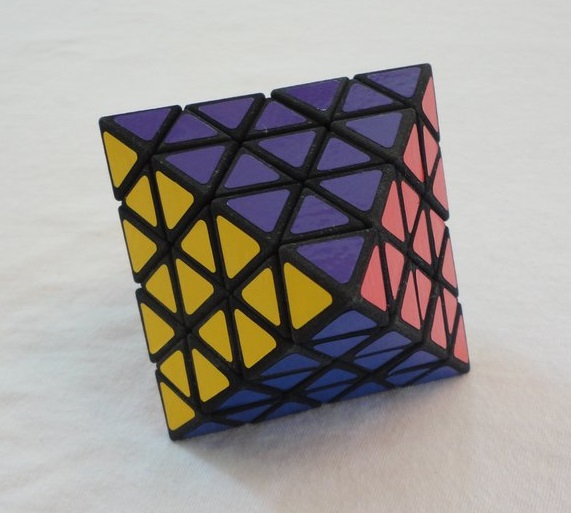
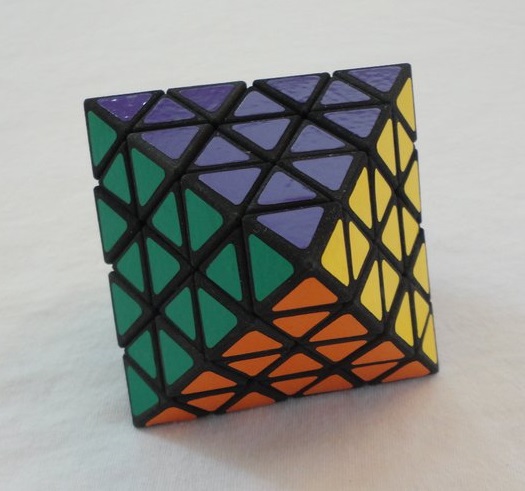

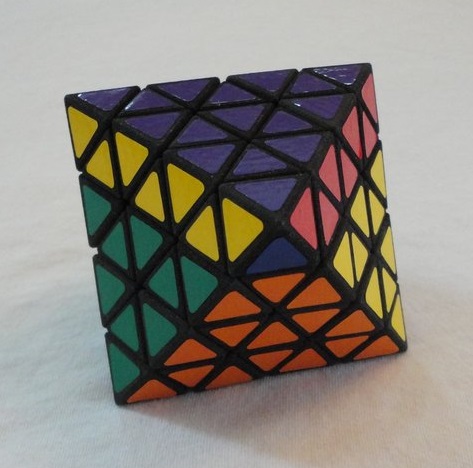
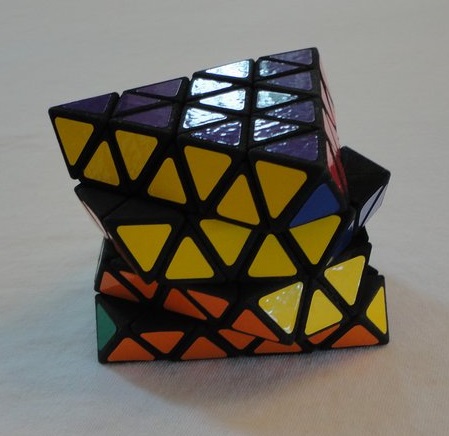
|
O3=4.1.5 Master FTO
Made by Timur [T] [T] [T] [T] [S] Also by Tom van der Zanden [S] I bought a 3D printed instance made by Tom. |
||||||||||||||||||||||||||||||||||||||||||||||||
|
Mf8 Master FTO

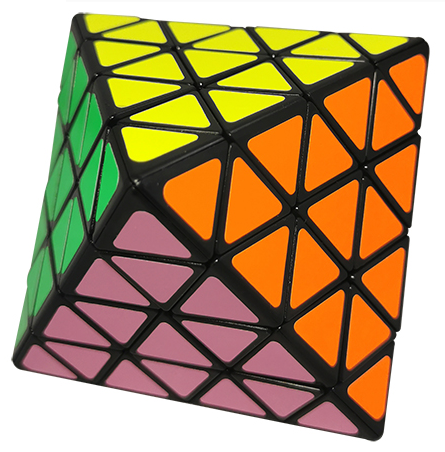
|
Mf8 Master FTO
A very nice mass-produced master FTO. |
||||||||||||||||||||||||||||||||||||||||||||||||
|
O3 Elite FT Octahedron
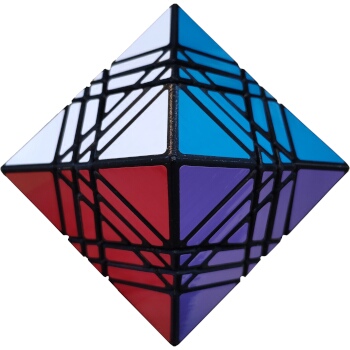
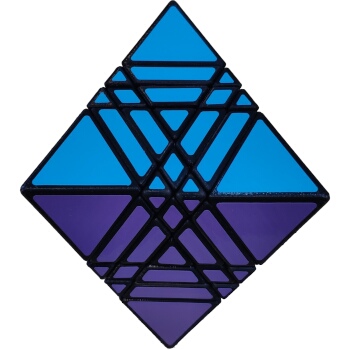
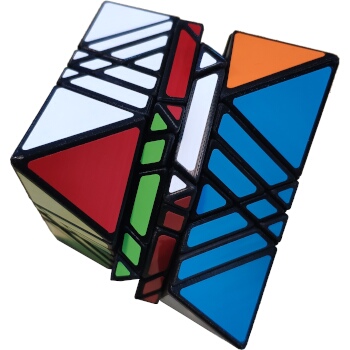
|
Elite Octahedron - "El Cubitero" 2020
[TP Museum]
[T]
[V]
Order 3, 4 layers |
||||||||||||||||||||||||||||||||||||||||||||||||
|
O4 Royal FT Octahedron - Mouflin
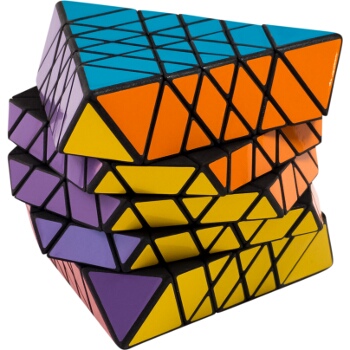
|
Royal Octahedron - Rafael Mouflin 2017
[TP Museum]
Order 4, 5 layers |
||||||||||||||||||||||||||||||||||||||||||||||||
Vertex-turning Order 1

|
|||||||||||||||||||||||||||||||||||||||||||||||||
|
Okki / Gem
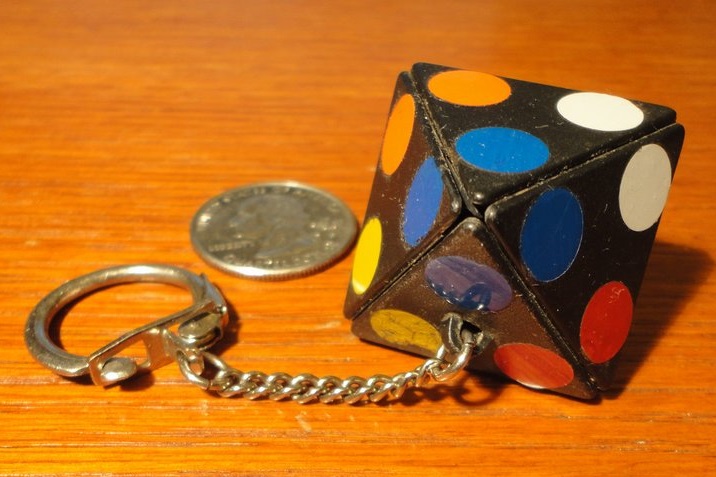
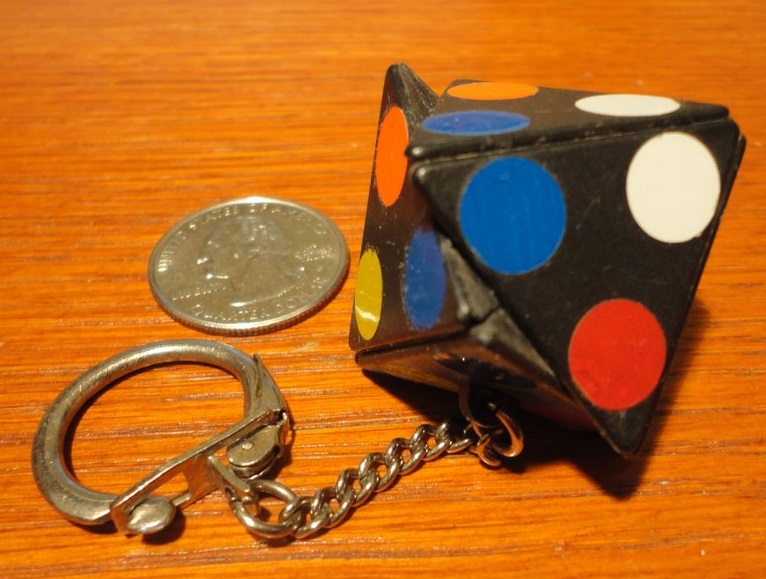
|
Okki - a vintage keychain twisty puzzle - I found an original!
Essentially a 2x2x2 where all eight corners have been beveled away. Like the 2x2x2 corners, its faces don't show orientation without coloring. Grabbing a corner and twisting its four surrounding triangles is the same as grabbing a 2x2x2 face and twisting its four surrounding corners. |
||||||||||||||||||||||||||||||||||||||||||||||||
|
Pyradiamond (Meffert)

|
PyraDiamond, Meffert's version of the Okki/Gem. | ||||||||||||||||||||||||||||||||||||||||||||||||
|
4D8

|
The 4D8 Cube was invented in 2001 by Heinz Molidor, an Austrian engineer. It was presented in 2009 at the Nuremberg Toy Fair and in 2010 on Bavarian Radio. The 4D8 twists like the Pyradiamond (2x2x2), but in addition each face has a frustum that can be rotated in place. The object is to get the same color on all facelets pointing in a particular direction (the photo shows it solved). [T] | ||||||||||||||||||||||||||||||||||||||||||||||||
Vertex-turning Order 2



|
|||||||||||||||||||||||||||||||||||||||||||||||||
|
Magic Octahedron - GB 4.2.2

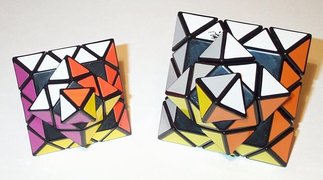
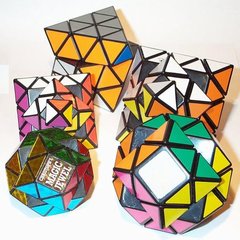
|
8.23*1018 (including the trivial tips)
Magic Octahedron
Also a more recent larger version by DaYan Also comparison shot showing (L to R, front to back): original Cristoph's Magic Jewel, recent Gem, original Magic Octahedron, recent DaYan, face-turning octahedron. Also known as the "6-axis octahedron" or the "corner turning octahedron" (CTO). |
||||||||||||||||||||||||||||||||||||||||||||||||
|
Christoph's Magic Jewel
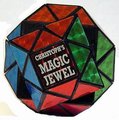
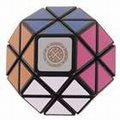

|
2.0*1015 - Christoph Bandelow - 6-armed spider
Christoph's Magic Jewel - a Magic Octahedron minus the tips
I finally found one at IPP 29 in SF. Also, the DaYan Gem from China. |
||||||||||||||||||||||||||||||||||||||||||||||||
|
Trajber's Octahedron - GB 4.2.1
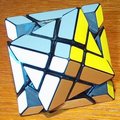
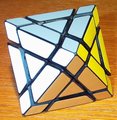
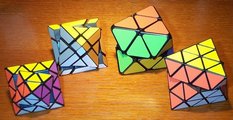

|
1.35*1019
Trajber's Octahedron
The Trajber's Octahedron is a vertex-turning puzzle and has a 3x3x3 cube core. I have a hand-made version purchased from David Calzone - cast pieces molded from 3D-printed masters. Also shown is a mass-produced Trajber's, from QJ. The group shot shows various kinds of octahedral twisty puzzles - the vertex-turning Magic Octahedron, the Trajber's, Meffert's Skewb Diamond (face-turning), and a face-turning octahedron from Taiwan (the next higher order from the Skewb Diamond). The Trajber's solves like a 3x3x3, except 3x3x3 corners which are the triangular face centers on the Trajber's don't need orientation but 3x3x3 face centers which are the corners on the Trajber's do, so you need the supercube face centers algorithms. These are the Supercube face algorithms - algorithms exist to rotate a single face center by 180, or a pair - one by 90 and another -90. U180: ( (U R L U2) R' L') x2 U90 & F-90: F B' L R' - U D' F' U' D - L' R F' B U U90 & D-90: R L' F2 B2 R L' U R L' F2 B2 R L' D' |
||||||||||||||||||||||||||||||||||||||||||||||||
|
Truncated Trajber's Octahedron - Tanner Frisby
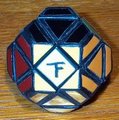
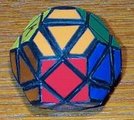
|
6.59*1015
Truncated 3x3x3 Trajber's Octahedron
Made by Tanner Frisby. On the truncated Trajber's the 3x3x3 face centers which are the Trajber's corners don't need orientation so you won't need the supercube algorithms. As on the normal Trajber's the 3x3x3 corners which are the Trajber's triangular faces do not need orientation, so the truncated Trajber's is simpler than a 3x3x3. |
||||||||||||||||||||||||||||||||||||||||||||||||
|
Void Trajber's / Holey Octahedron - TomZ

|
Void Trajber's / Holey Octahedron - made by Tom van der Zanden
In 2009 Tom also created a "holey" Trajber's. In 2012 David Pitcher created the Octadot, which is also equivalent to a Trajber's. Evgeniy Grigoriev offers both a mini Holey Trajber's / Void Octahedron, and Pitcher's Octadot. |
||||||||||||||||||||||||||||||||||||||||||||||||
|
Edges-only Trajber's - John Lin, Kevin Uhrik


|
Edges-only Trajber's - John Lin, Kevin Uhrik
A pair of deceptively look-alike custom-3D-printed twisty puzzles: an Edges-Only Trajber's Octahedron (left), and a Rainbow Octahedron - designed and made by Kevin and Jenna Uhrik.
The EO Trajber's is vertex-turning and solves like a 3x3x3 but can end up in parity states.
|
||||||||||||||||||||||||||||||||||||||||||||||||
|
Edges-only Trajber's - Evgeniy Grigoriev
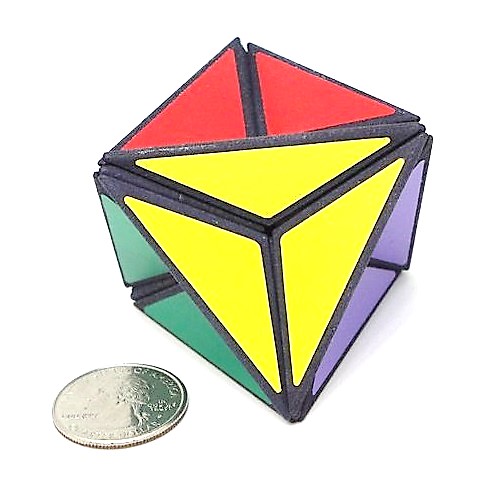

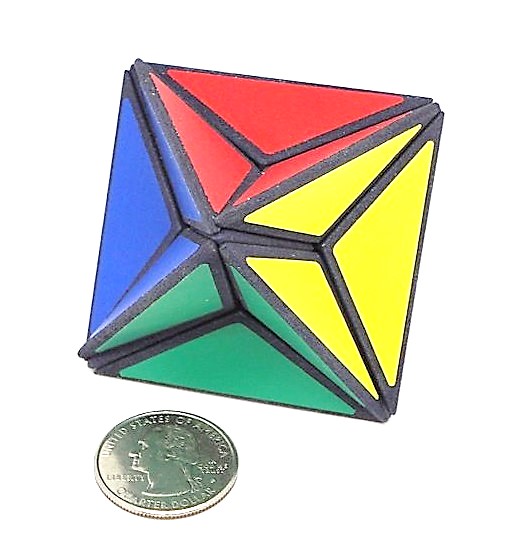
|
In 2009 Tom van der Zanden made a true Edges-Only Trajber's Octahedron variant he calls the
Dino Octahedron,
hiding the centers. I have a similar true Edges-Only example, the Jewel Octahedron by Evgeniy Grigoriev (Grigorusha), which I picked up in June 2018. Evgeniy modeled his JO after an Alexander's Star, but it is isomorphic to Tom's version. |
||||||||||||||||||||||||||||||||||||||||||||||||
|
Pyraminx Diamond (Corners-only Trajber's)

|
Pyraminx Diamond - 8 color version
designed by Oskar van Deventer, based on the "Rob's Pyraminx" issued by Meffert
Also shown is a Trajber's Octahedron family shot including a hand-made (cast, not 3D-printed) Trajber's Octahedron (right foreground) made for me several years ago by David Calzone of the Twisty Forums,
and the Pyraminx Diamond (left background)
(aka Rob's Octahedron) designed by Oskar van Deventer and issued by
Meffert -
which is a Corners-Only Trajber's Octahedron.
|
||||||||||||||||||||||||||||||||||||||||||||||||
|
Vertex-turning "Morphix" Octahedron

|
The VT "Morphix Octa" has trivial tips - face centers remain in place. Not made AFAIK. | ||||||||||||||||||||||||||||||||||||||||||||||||
|
VT O2 Coin Octahedron
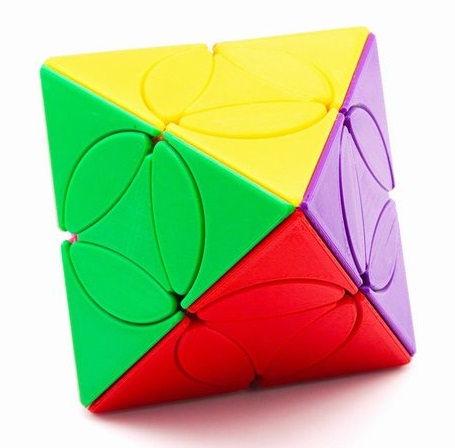
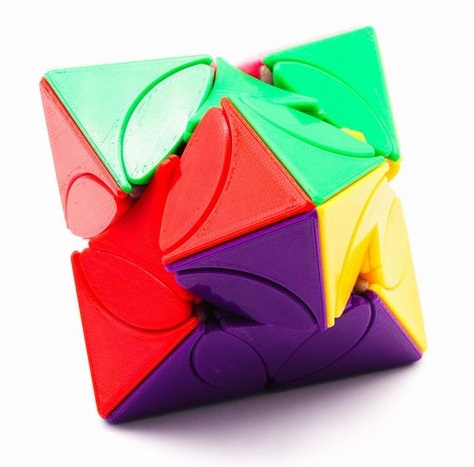
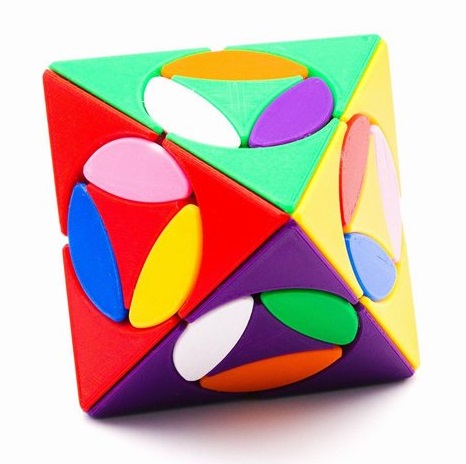
|
Coin Octahedron - made by Linxiao Xu in 2020, also by Kevin Uhrik
[T]
[W]
The Coin Octahedron comes closest to the Morphix Octa shown above - here, the tips turn only with the underlying segments - so there are no trivial tips. Also, there are no little edge pieces. The face centers remain in place, and the face segments can be permuted. As an added function, here the inner faces with their three surrounding segments can be rotated. |
||||||||||||||||||||||||||||||||||||||||||||||||
| Vertex-turning Order 3+ | |||||||||||||||||||||||||||||||||||||||||||||||||
|
Lolo's Octahedron - GB 4.2.3 - Kevin Uhrik
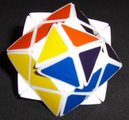

|
Lolo's Octahedron, custom-made by Kevin Uhrik. | ||||||||||||||||||||||||||||||||||||||||||||||||
|
Hexic (Lolo's Octahedron - GB 4.2.3) - Kevin Uhrik
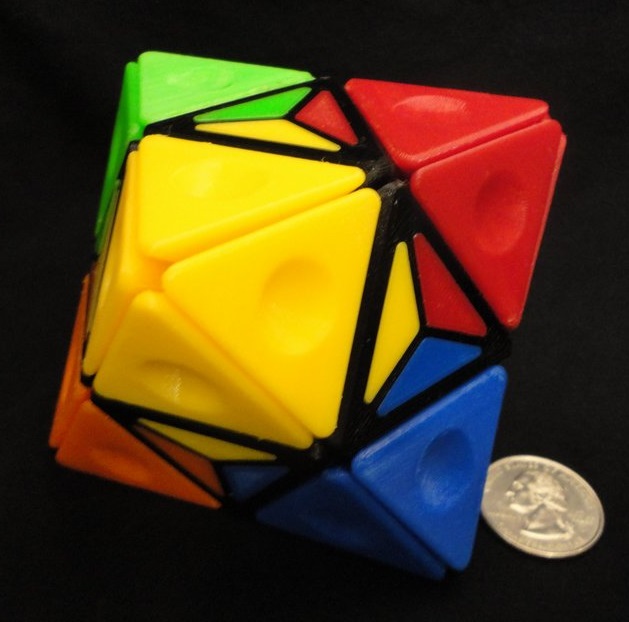
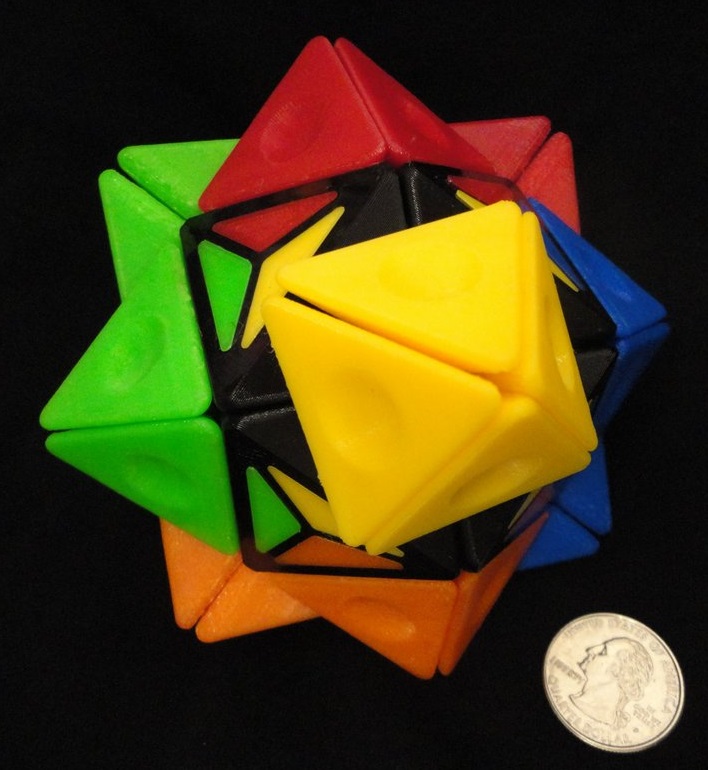
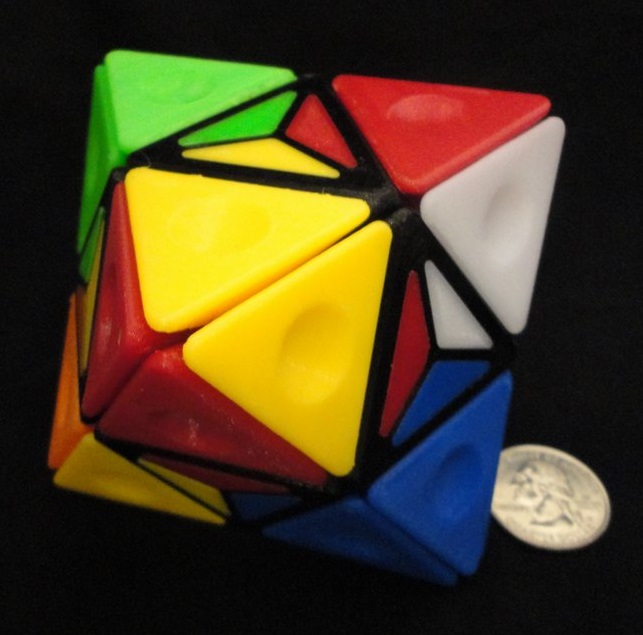
|
Hexic - by Kevin Uhrik at
The Puzzle Artists on Etsy
A Dogic-themed Lolo's Octahedron. Purchased in 2019. Substantial and very nicely made, in beautiful colors. I have an older Lolo's Octahedron hand-made by Kevin - Kevin and puzzle-making technology have come a long way since then! |
||||||||||||||||||||||||||||||||||||||||||||||||
|
Fangshi Limcube 2x2 Transform Pyraminx BaMianTi I - Octahedron I
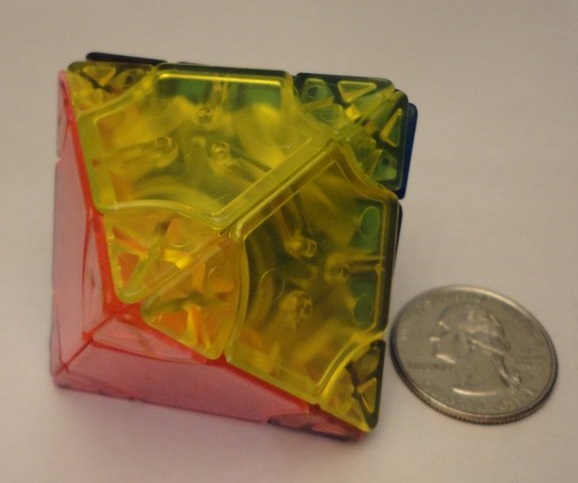

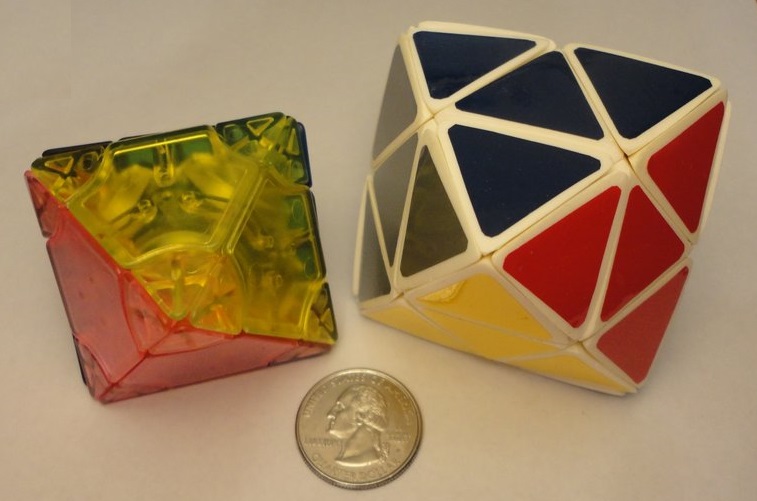
|
Fangshi Limcube 2x2 Transform Pyraminx BaMianTi I - Octahedron I - a mass-produced Lolo's Octahedron. Shown in comparison with my custom Lolo's Octahedron made by Kevin Uhrik. | ||||||||||||||||||||||||||||||||||||||||||||||||
|
Okki + Magic - GB 4.2.4 - Order 3 - Andreas Nortmann
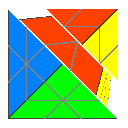

|
Okki + Magic - GB 4.2.4 - Andreas Nortmann
[T]
This is a Master Trajber's without the centers. It can appear to be a Magic Octahedron without the trivial tips, but unlike that puzzle, this one also has the Okki cuts. |
||||||||||||||||||||||||||||||||||||||||||||||||
|
Master Trajber's Octahedron - GB 4.2.5 - Order 3

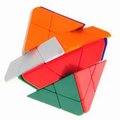
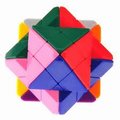
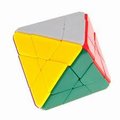
|
4x4x4 Master Trajber's Octahedron, also version with colored pieces. [T] [Y] | ||||||||||||||||||||||||||||||||||||||||||||||||
|
Master Octahedron - GB 4.2.6 - Order 4

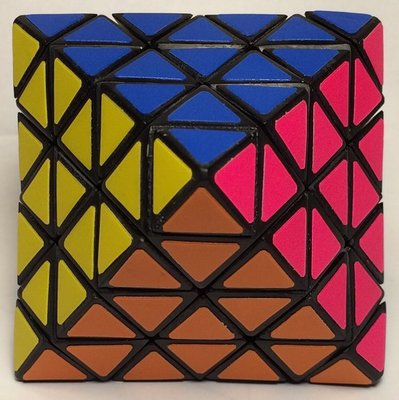
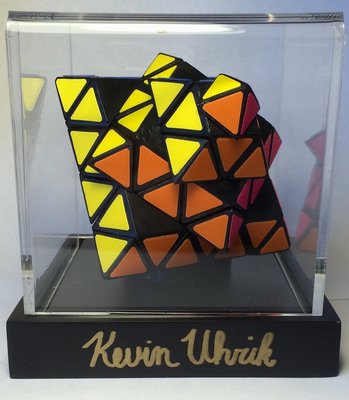
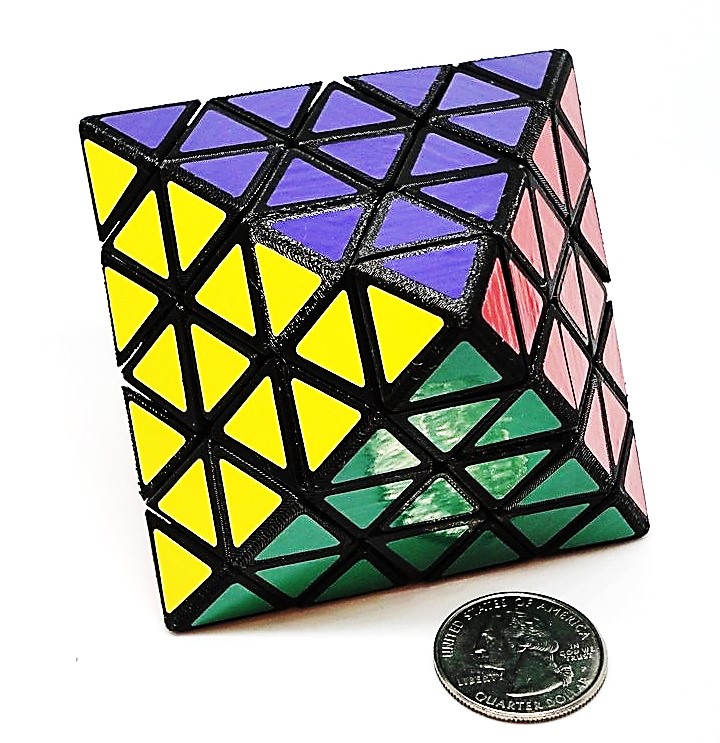
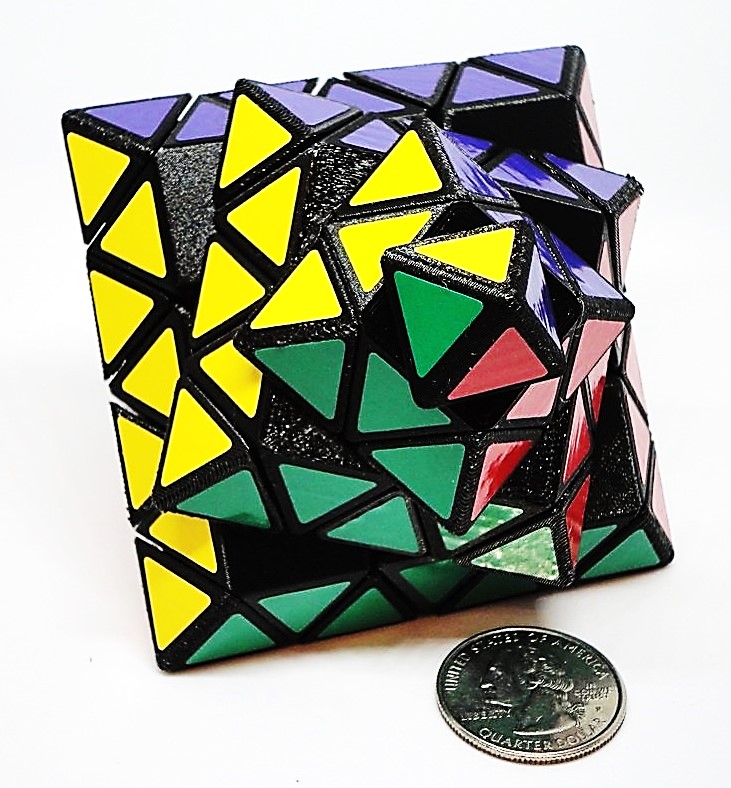
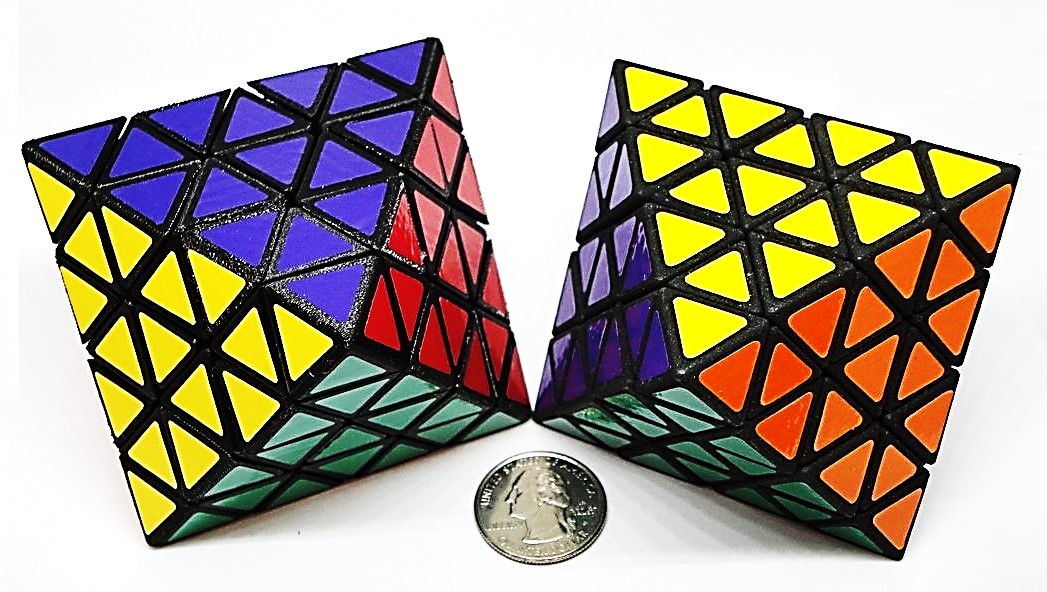
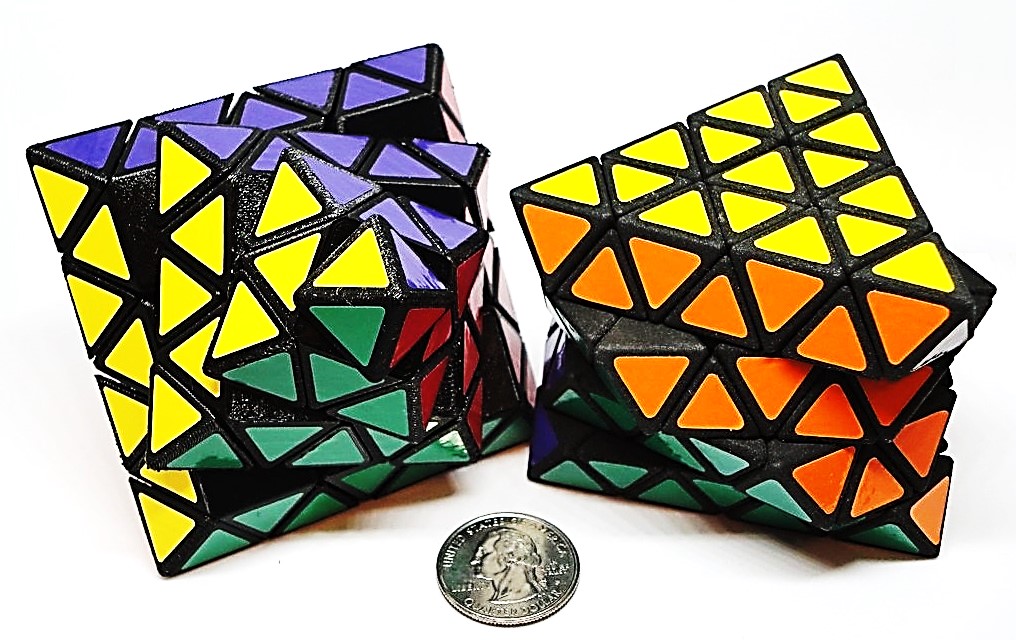
|
The Order-4 Master Octahedron - GB 4.2.6
Made by Aleh (2005) [T], Scott Bedard (2008) [T] [T], Garrett Ong [T] [S] I received my copy in a trade with Kevin Uhrik. This is a hand-cast version made from Scott Bedard's design and tweaked by Kevin. In 2020, Kevin sent me a revised Master Octahedron, shown below the original. It looks beautiful and functions great! Also shown is a comparison of Kevin's Order-4 vertex-turning Master (Magic) Octahedron (left), with Timur Evbatyrov's Order-3 face-turning Master FTO (Face-Turning Octahedron) of 2010/2011, and a family shot of the original Magic Octahedron (left foreground) and FTO (right foreground) with their higher-order siblings. |
||||||||||||||||||||||||||||||||||||||||||||||||
|
Professor Trajber's - Ryan Thompson

|
The Order-4 Professor Trajber's - Ryan Thompson - made from a 5x5x5 [Y] | ||||||||||||||||||||||||||||||||||||||||||||||||
|
Professor Trajber's ("Curvy 5x5 Octahedron") - TwistyTurtle
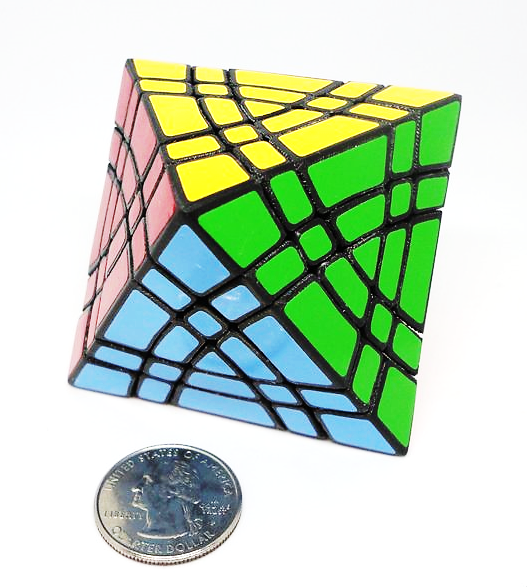
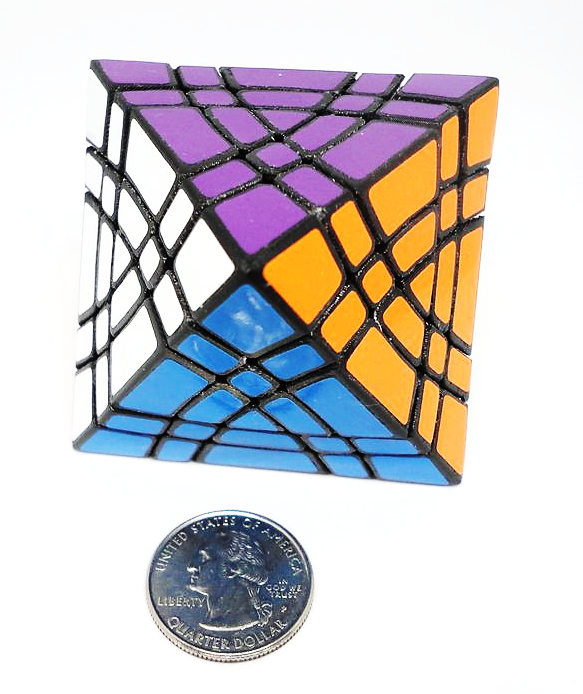
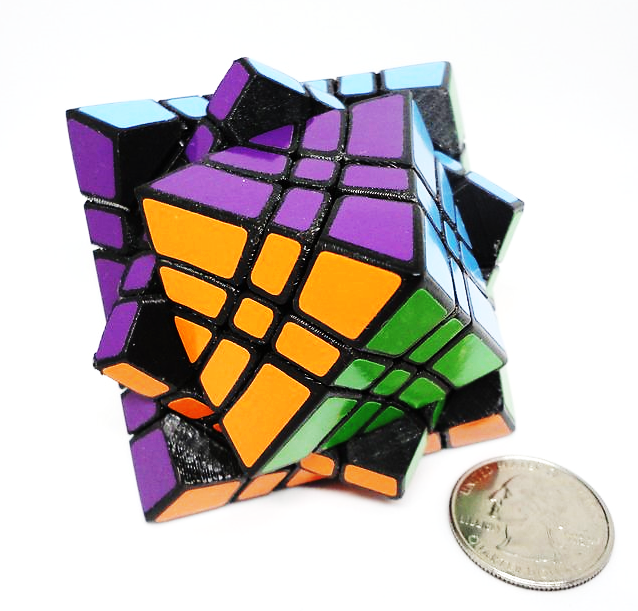
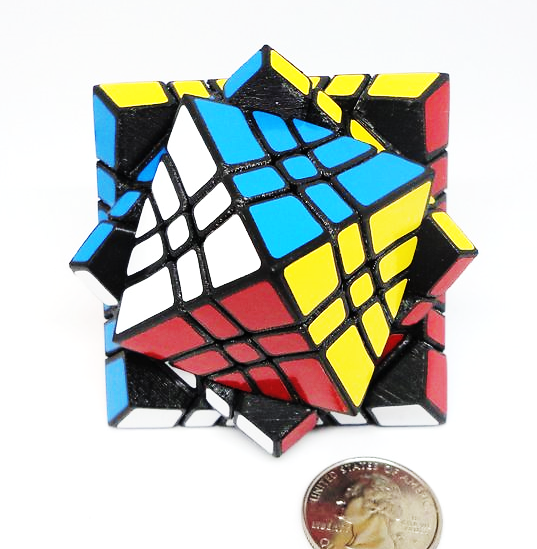
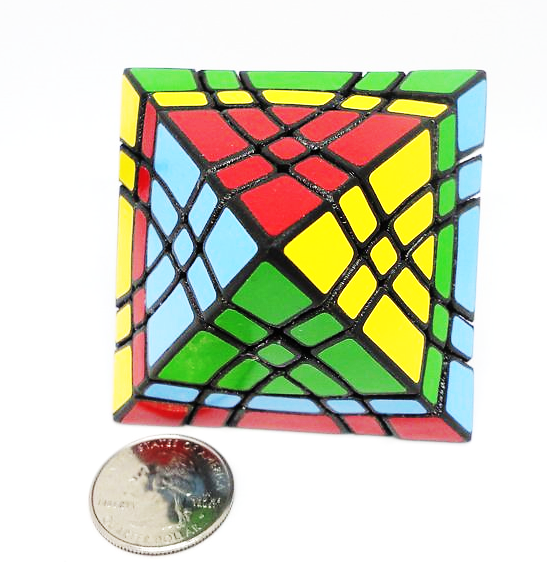
|
Professor Trajber's (Curvy 5x5 Octahedron) - by "TwistyTurtle"
Purchased from and custom made by Chewie's Custom Stickers |
||||||||||||||||||||||||||||||||||||||||||||||||
|
6x6x6 Trajber's - Minh Thang Vo

|
6x6x6 Trajber's - Minh Thang Vo | ||||||||||||||||||||||||||||||||||||||||||||||||
|
Aleh's Master Octahedron


|
O4 Trajber's-like Master Octa made by Aleh [T] | ||||||||||||||||||||||||||||||||||||||||||||||||
| Edge-turning Order 1 | |||||||||||||||||||||||||||||||||||||||||||||||||
|
The 24 Octahedron - GB 4.3.3


|
Made as a custom build, based on a shells core designed by Matt Shepit.
Magnetic core versions have also been produced.
[T]
[T]
A version based on extensions to a Chromium Cube was made [T] My example was made for me by James Li, based on his Chromium mechanism. Shown with some of my other custom octahedral puzzles. |
||||||||||||||||||||||||||||||||||||||||||||||||
| Edge-turning Order 2 | |||||||||||||||||||||||||||||||||||||||||||||||||
|
GB 4.3.6 - Shallow-cut ETO (No name.)




|
A shallow-cut Edge-Turning Octahedron - cuts meet in face centers. Truncate the tips and you get the DaYan Gem. In 2010 "kwsjack" of Taiwan modded a Gem back to an octahedron, with overlapping tips. He referred to it as his "Edge Turning Octahedron" [MF8 BBS] [MF8 BBS] | ||||||||||||||||||||||||||||||||||||||||||||||||
|
DaYan GEM I
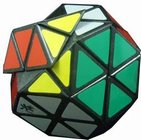
|
The DaYan Gem (an edge-turning truncated octahedron, related to GB 4.3.6) | ||||||||||||||||||||||||||||||||||||||||||||||||
|
Eitan's Edge-turning Octahedron (ETO) - GB 4.3.1 - Eitan Cher
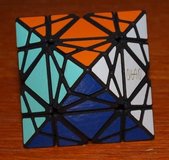
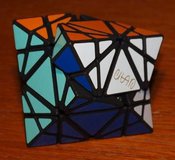
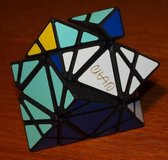
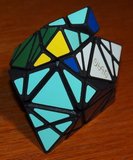

|
Here is Eitan's Edge-Turning Octahedron (ETO) -
announced
on the TP forums.
Equivalent to
Gelatinbrain 4.3.1.
Available from Eitan's Shapeways shop.
First shown by David Calzone
back in 2009.
Congrats to Eitan for making this available! The design moves well, is stable, and is a nice size.
The puzzle came very nicely stickered.
Shown in comparison with other octahedral twisty puzzles:
From top to bottom, left to right: Meffert's Skewb Diamond (order-1 face-turning octa); DaYan Gem I (edge-turning trunc. octa);
order-2 vertex-turning octa; order-2 vertex-turning trunc. octa; order-3 vertex-turning master Trajber's;
Meffert's Hex Skewb (order-1 face-turning trunc. octa); order-2 face-turning octa; Eitan's ETO (order-2 edge-turning octa);
vintage Magic Octahedron (order-2 vertex-turning octa); QJ Trajber's (order-2 vertex-turning);
hand-cast custom Trajber's made by David Calzone;
QJ 3x3x3 octa (sort of hybrid edge- and vertex-turning); Octaminx custom made by me;
Meffert's Pyradiamond (order-1 vertex-turning octa); vintage Christoph's Magic Jewel (order-2 vertex-turning trunc. octa);
Lolo's Octahedron custom-made by Kevin Uhrik (order-3 vertex-turning octa); Truncated Trajber's custom-made by Tanner Frisby.
I still would like to find: |
||||||||||||||||||||||||||||||||||||||||||||||||
|
Curvy Copter Octahedron - Order 2 - Seth Holiday
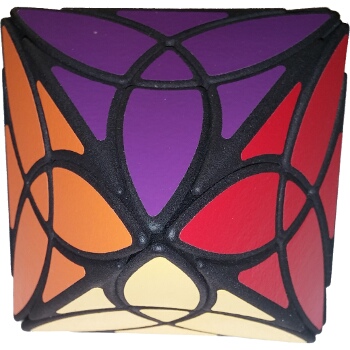
|
Curvy Copter Octahedron by Seth Holiday
[T]
Also see the hybrid O2,O1 Leaf Octahedron by Kevin Uhrik, below - that puzzle resembles this, but adds the Okki cuts. |
||||||||||||||||||||||||||||||||||||||||||||||||
|
GB 4.3.2 - "Octahedral Toru"
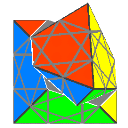
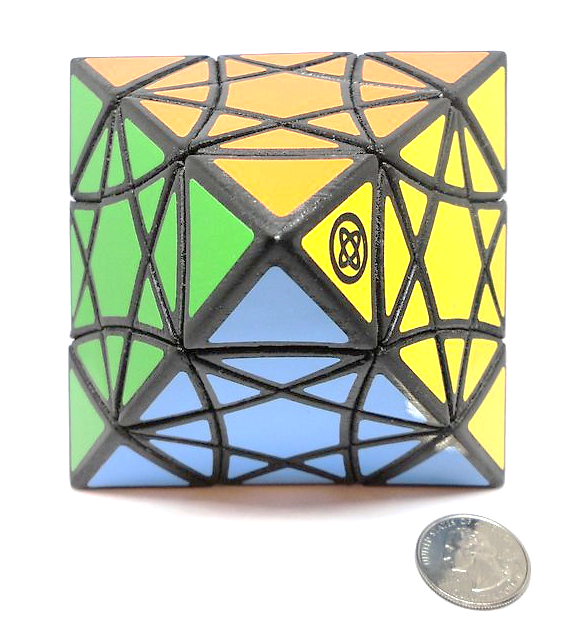
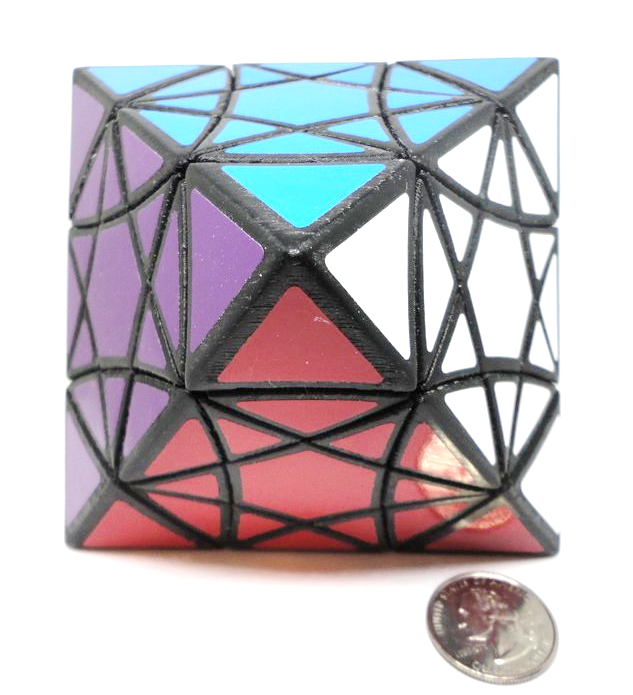
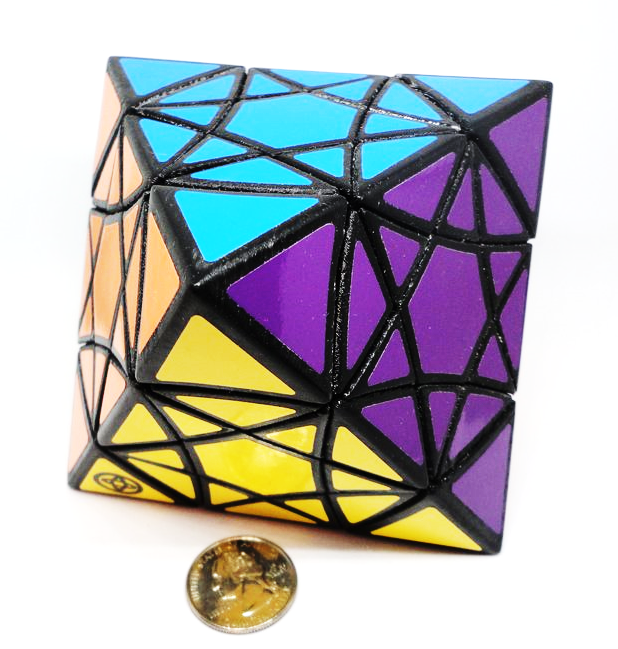
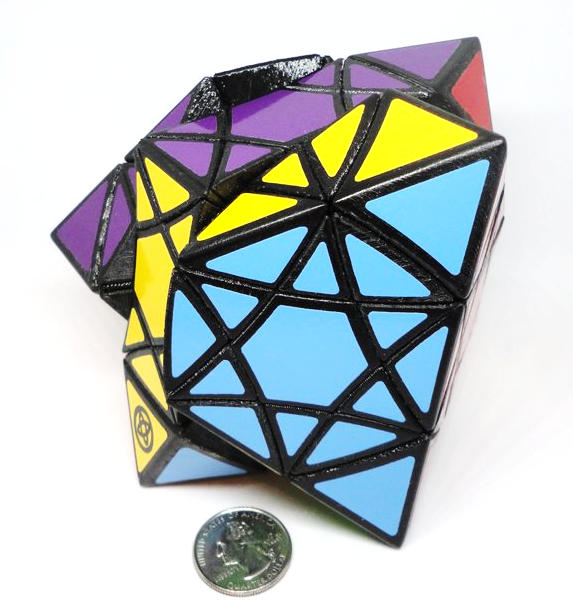
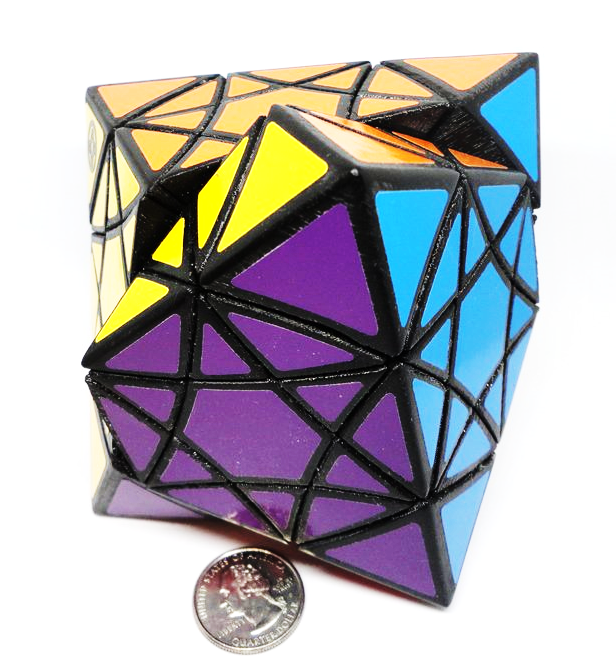
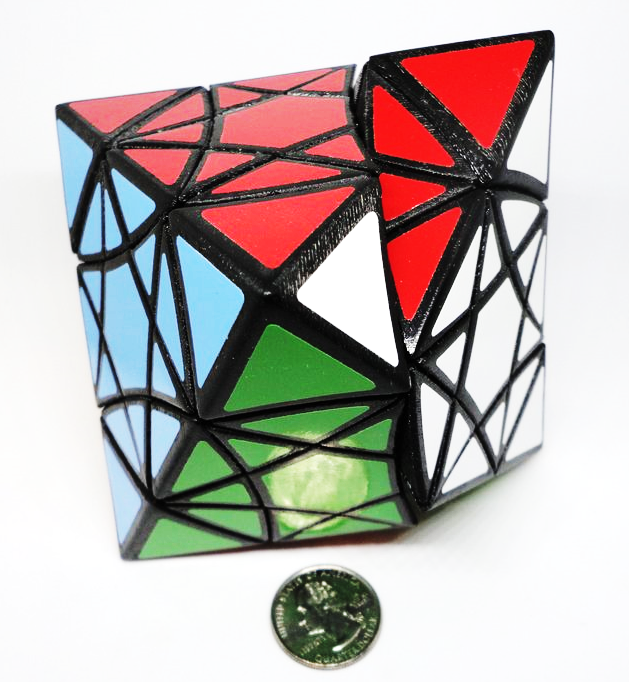
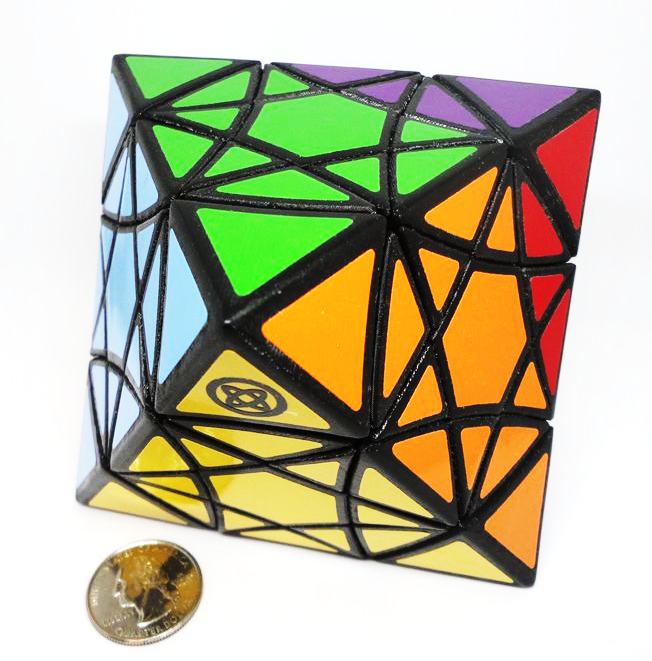
|
Octahedral Toru - by Vladi Delimollov
This is an example of the edge-turning order-2 octahedron GB 4.3.2. Placing the cuts slightly deeper than Eitan's ETO (GB 4.3.1) results in hexagons on the faces. 3D printed by and purchased from Chewie's Custom Puzzles. YouTube video - shows jumbling. It catches a little but it is nice and solid. I really like it! |
||||||||||||||||||||||||||||||||||||||||||||||||
| Edge-turning Order 3+ | |||||||||||||||||||||||||||||||||||||||||||||||||
|
GB 4.3.5 (No name.)

|
O3 4.3.5 - not made AFAIK. | ||||||||||||||||||||||||||||||||||||||||||||||||
|
Hybrid O1,O1
|
|||||||||||||||||||||||||||||||||||||||||||||||||
|
FT O1 Skewb Diamond + VT O1 Okki (No name)
Looks like a Lolo's Octahedron, but the faces turn and the tips do not rotate. |
FT O1 Skewb Diamond + VT O1 Okki
Not made AFAIK. |
||||||||||||||||||||||||||||||||||||||||||||||||
|
Hybrid O2,O1
|
|||||||||||||||||||||||||||||||||||||||||||||||||
|
O2,O1 Leaf Octahedron - Uhrik
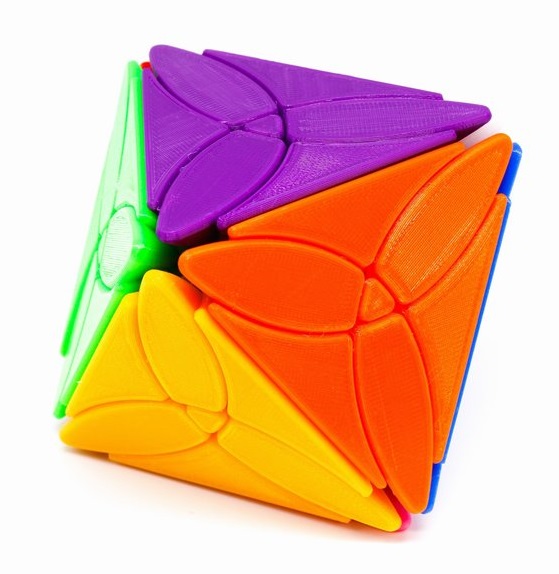
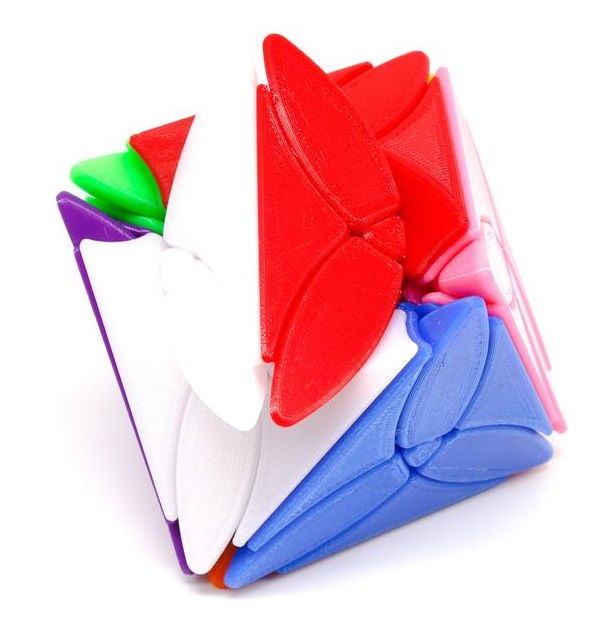

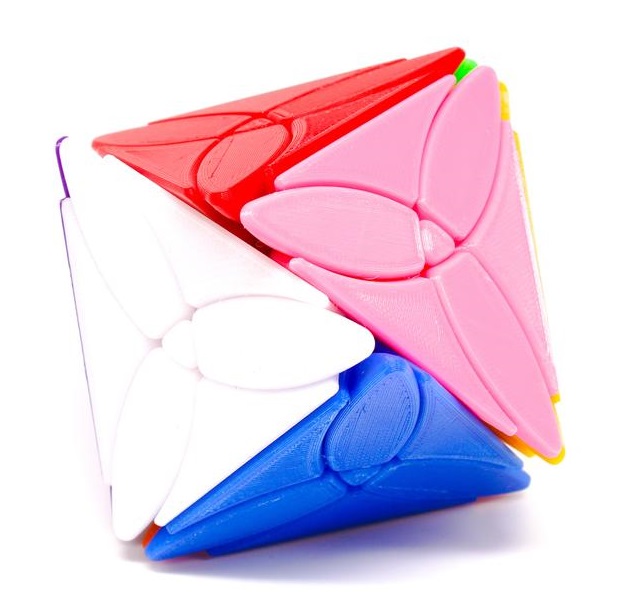
|
Leaf Octahedron - designed and 3D printed by Kevin and Jenna Uhrik
See their Etsy shop The Puzzle Artists. At its heart this is a 2x2x2 Pyradiamond, but it is hybridized with an Order-2 edge-turning octahedron having curvy cuts and no corners. |
||||||||||||||||||||||||||||||||||||||||||||||||
|
O2,O2 FTO + Magic Octa = Comboctahedron - Eitan Cher

|
FTO + Magic Octa = Comboctahedron - Eitan Cher [T] [T] | ||||||||||||||||||||||||||||||||||||||||||||||||
|
O3,O2 Master FTO + Magic Octa = Hybrid Octahedron - Kevin Uhrik
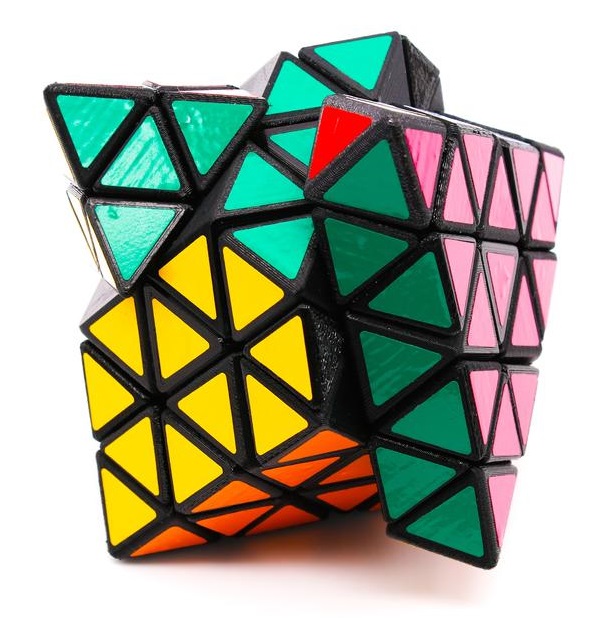
|
O3,O2 Master FTO + Magic Octa = Hybrid Octahedron - Kevin Uhrik
[T]
[W]
Only two cuts per vertex axis; three cuts per face axis. |
||||||||||||||||||||||||||||||||||||||||||||||||
| Geared | |||||||||||||||||||||||||||||||||||||||||||||||||
|
Gear Octahedron - LanLan

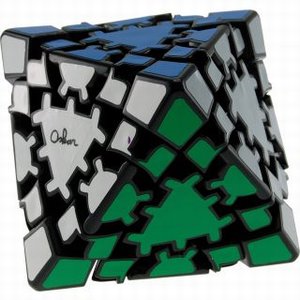

|
Gear Octahedron - from LanLan based on Oskar van Deventer's design | ||||||||||||||||||||||||||||||||||||||||||||||||
|
Gear Octahedron - Timur / Calvin
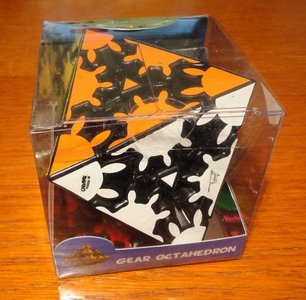
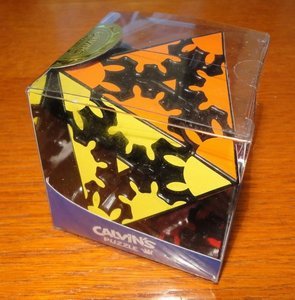

|
Gear Octahedron - from Calvin's Puzzle based on Timur Evbatyrov's design | ||||||||||||||||||||||||||||||||||||||||||||||||
| Shapemods | |||||||||||||||||||||||||||||||||||||||||||||||||
|
3x3x3 Octahedron - QJ
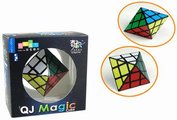
|
3x3x3 Octahedron mass-produced by QJ | ||||||||||||||||||||||||||||||||||||||||||||||||
|
Octic
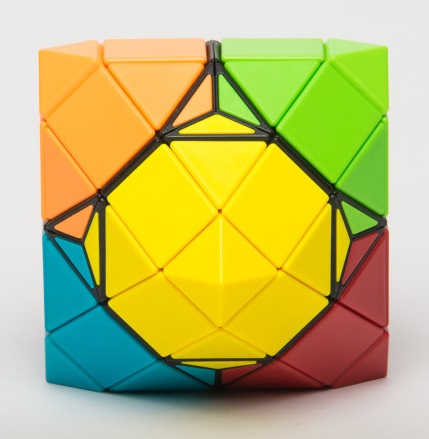
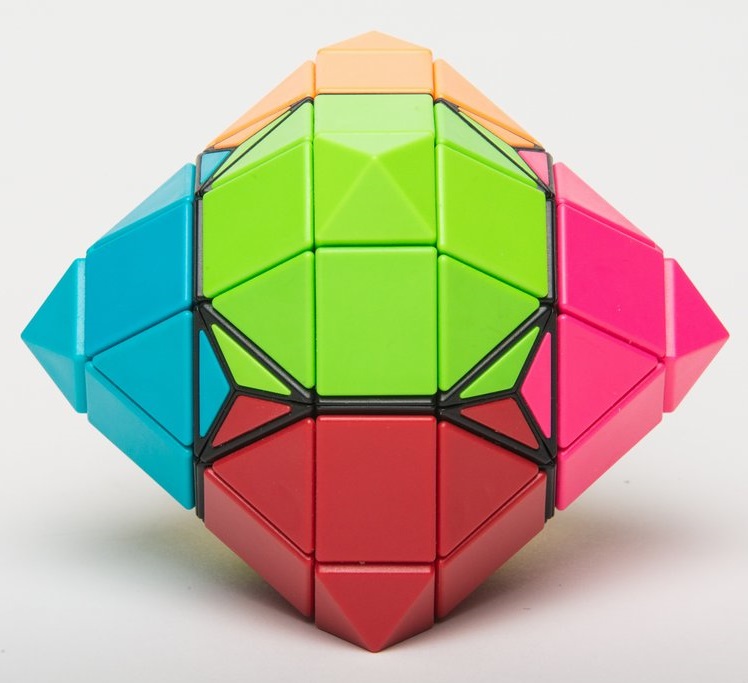
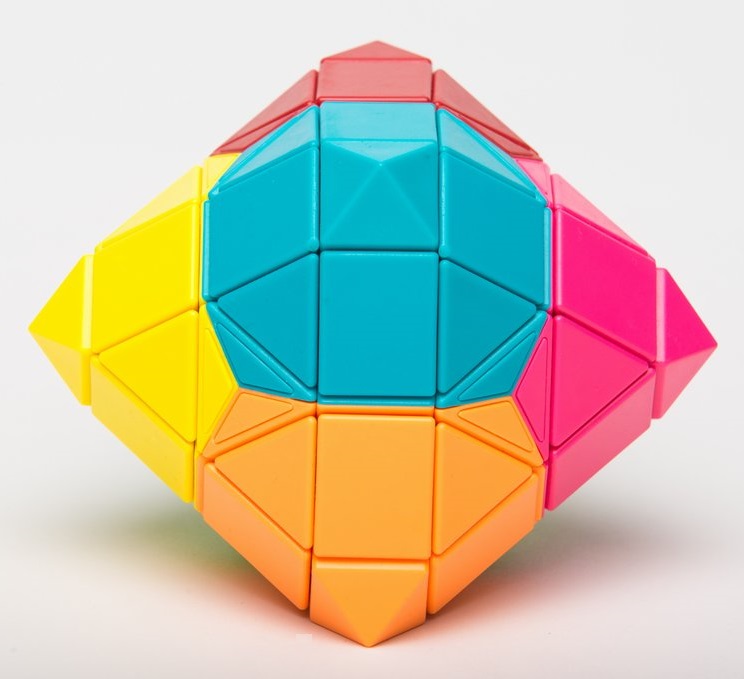

|
Octic versions I, II, III, IV
purchased from Zoneden. Four versions of a nicely done shape variation of a cross cube. |
||||||||||||||||||||||||||||||||||||||||||||||||
|
Octahedral Mixup series - Witeden

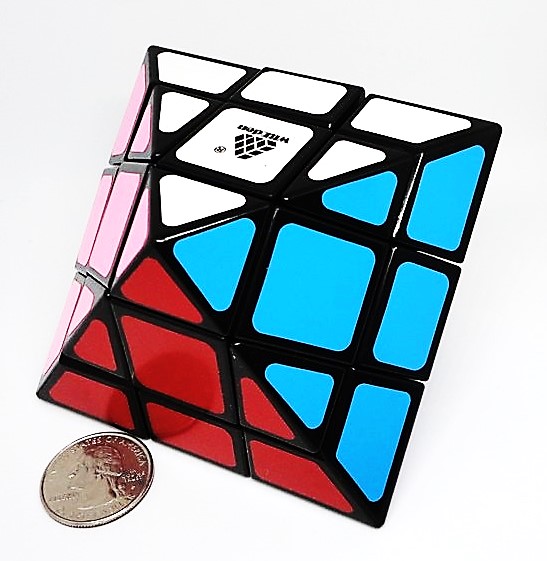
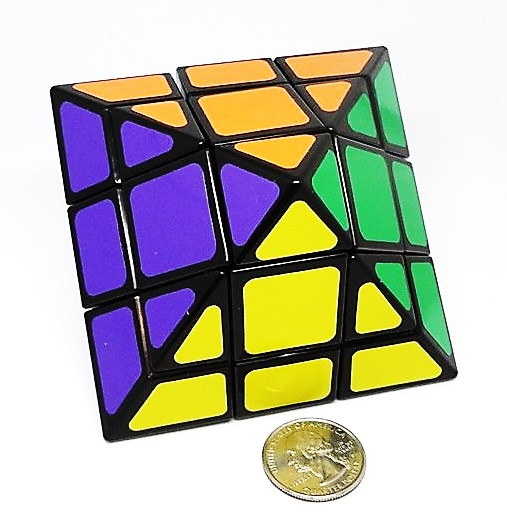
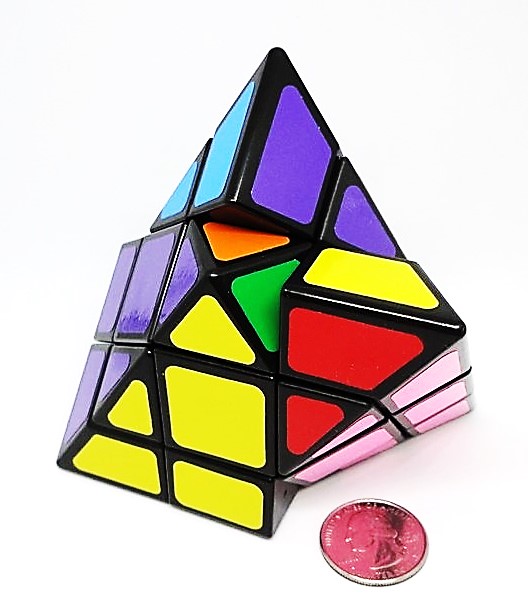
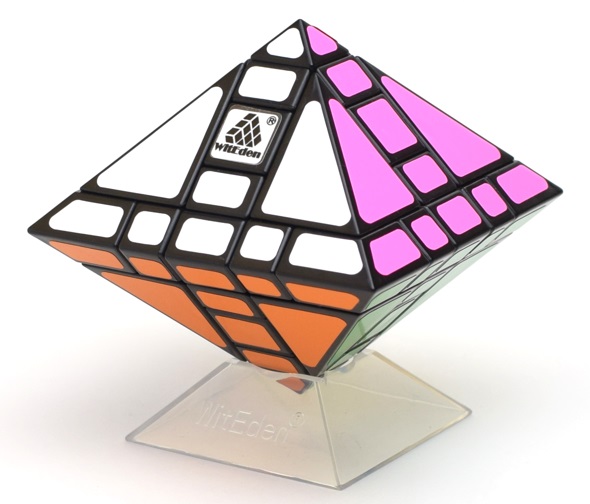
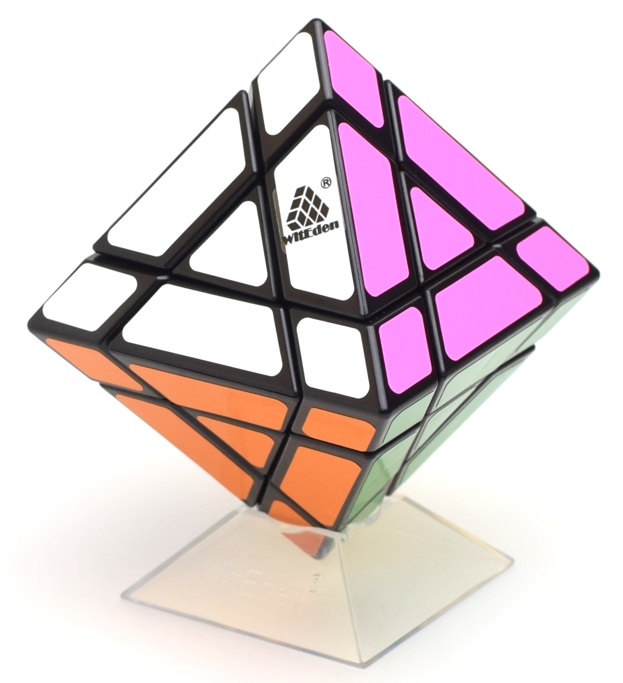
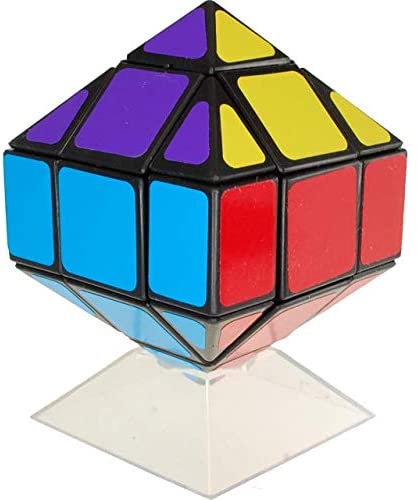
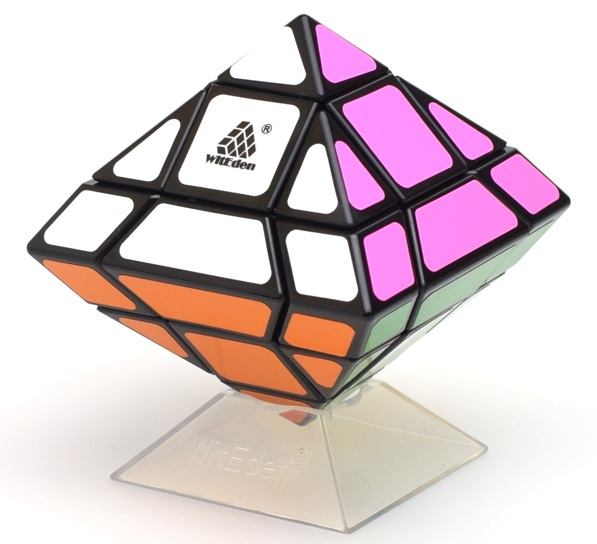
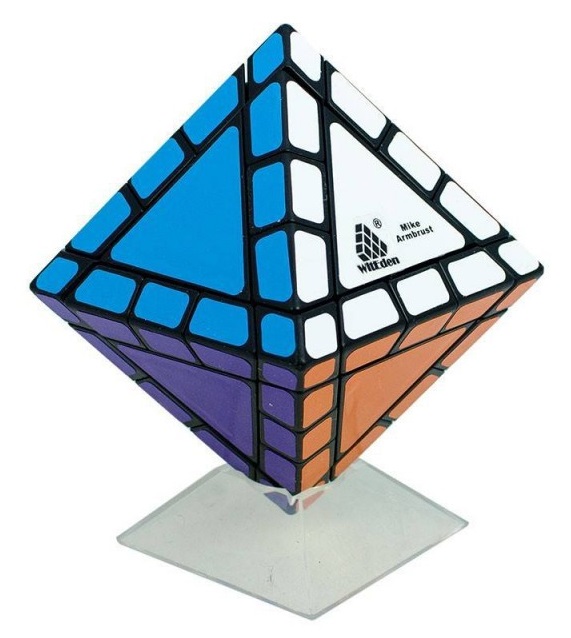
|
Series of Octahedral Mixup puzzles, by Witeden
I have the Octahedral Mixup I, which is similar in appearance to (though larger than) the QJ 3x3x3 Octahedron. The others are shown for reference and include: Octahedral Mixup I Plus, Octahedral Mixup II (which looks like a Trajber's), III, IV, and the Mike Armbruster version. |
||||||||||||||||||||||||||||||||||||||||||||||||
|
Octaminx - Tony Fisher - Rob Stegmann
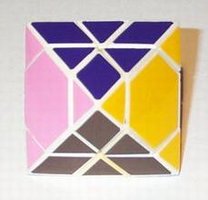

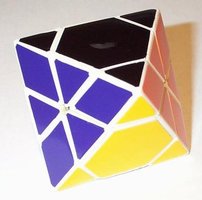
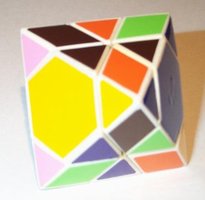
|
I completed my first real twisty mod! I made an Octaminx (a design originated by Tony Fisher) from a couple of old Tomy Pyraminx puzzles. This is an "old school" mod - done with a saw, and various other implements of destruction - not casting. I've got the sliced and abraded fingers to prove it. I hand-cut the stickers myself. As of Feb. 2011 my first Octaminx (this white one) is in the collection of Laurie Brokenshire. I still have another (imperfect but functional) black one I made. | ||||||||||||||||||||||||||||||||||||||||||||||||
| Edgematching | |||||||||||||||||||||||||||||||||||||||||||||||||
|
Tantrix The Rock
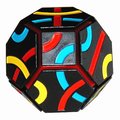
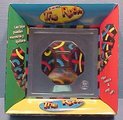
|
1*1018 - "over a billion billion"
Tantrix The RockA truncated octahedron. This type of 3D edgematching puzzle is included here because I consider them "faces-only" versions of twisty polyhedra - no corners and no edges. Tantrix Home Page Jaap's page |
||||||||||||||||||||||||||||||||||||||||||||||||
|
Hungarian Rock
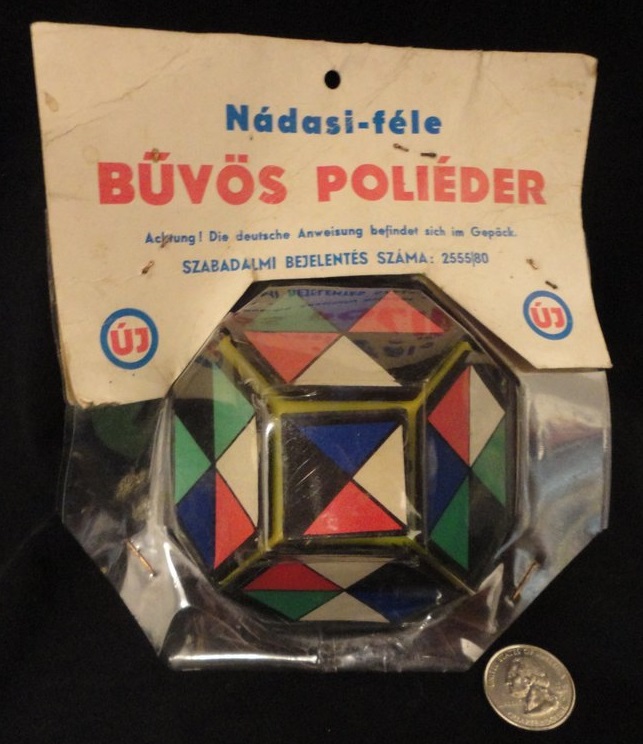
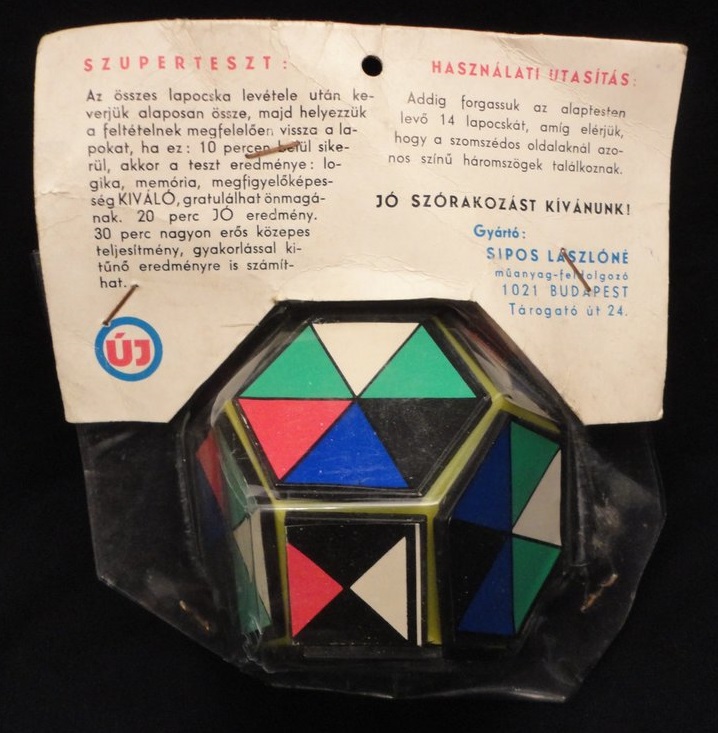
|
Hungarian Rock - a vintage 3D edgematching twisty puzzle | ||||||||||||||||||||||||||||||||||||||||||||||||
| Related | |||||||||||||||||||||||||||||||||||||||||||||||||
|
Dino Star

|
Dino Star (blue) - a vintage commercially produced puzzle. A stellated octahedron with a tip on each face. An inverted edge piece rides at each border between adjacent tips, and moves as the tips are twisted in place. Solve by ensuring that all 3 edge-halfs showing around each tip are the same color. | ||||||||||||||||||||||||||||||||||||||||||||||||
|
Verypuzzle Clover Octahedron

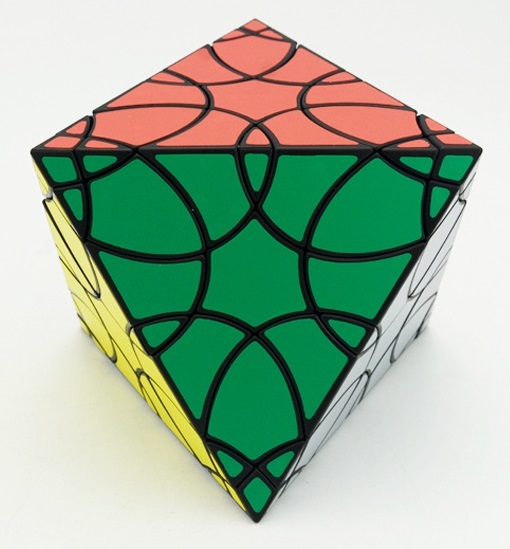

|
Clover Octahedron - by Verypuzzle | ||||||||||||||||||||||||||||||||||||||||||||||||
|
Verypuzzle Clover Octahedron Fragmentation

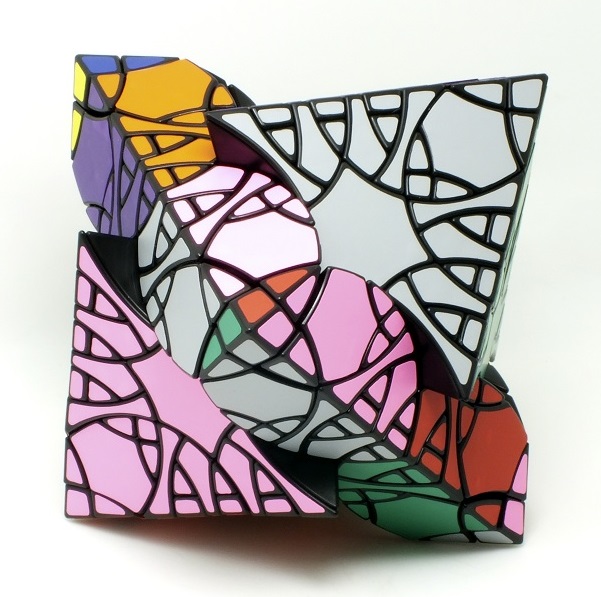
|
Clover Octahedron Fragmentation - by Verypuzzle | ||||||||||||||||||||||||||||||||||||||||||||||||
|
Clover Octahedron - Lanlan
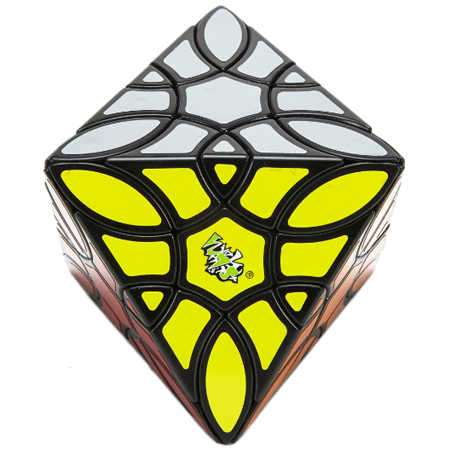
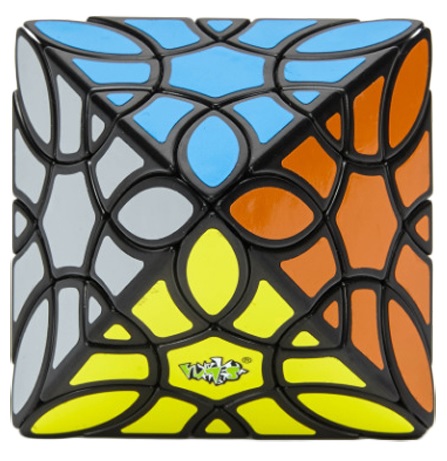
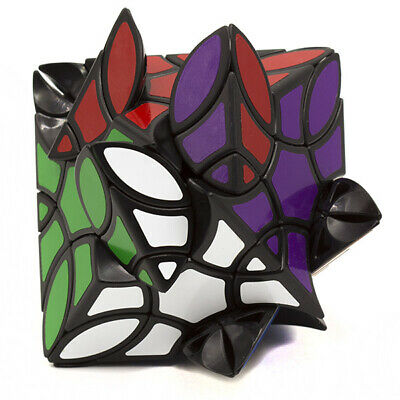
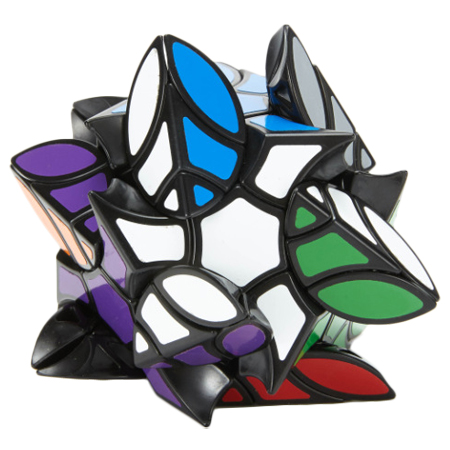
|
Clover Octahedron - Lanlan | ||||||||||||||||||||||||||||||||||||||||||||||||
|
Triqueta Octahedron

|
Triqueta Octahedron - a custom 3D-printed twisty puzzle from
Lycharmodpuzzles on Etsy.
Four solid faces turn, scrambling segments on the remaining four faces, including those teeny tiny face centers. I've scrambled mine in this pic. |
||||||||||||||||||||||||||||||||||||||||||||||||
See Dodecahedral Puzzles in the TwistyPuzzles Museum
| F | V | E | |||||
| O1 | O2 Start 2 cuts at opposite faces and move them inwards... | O3 | O4+ | O1 | O2 | O1 | O2 |
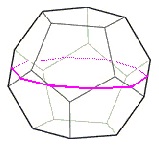
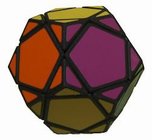
|
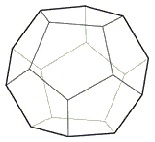




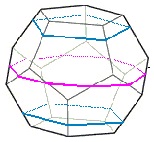
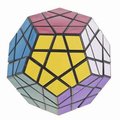



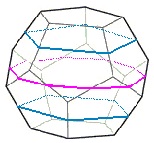

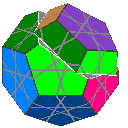
Not
Made 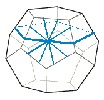

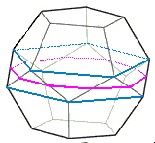


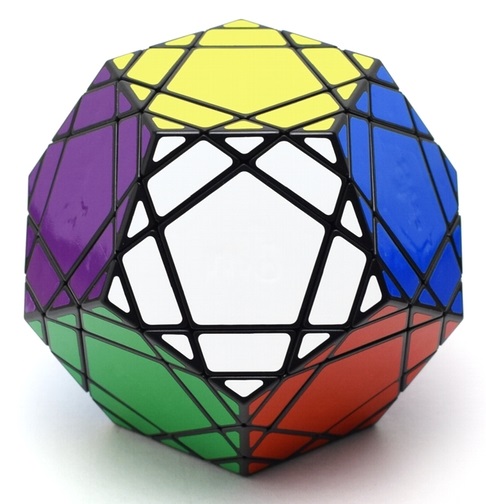
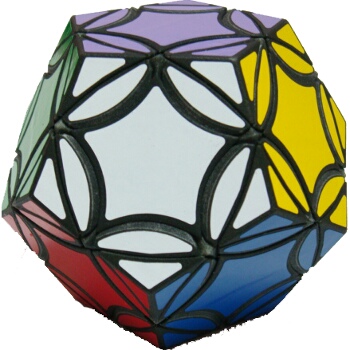

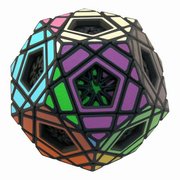
|
N/A
Pentult w/ Mega |




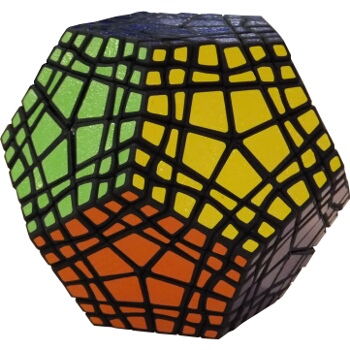

Exa-
Minx 5+5 cuts
Zetta-
Minx 6+6 cuts 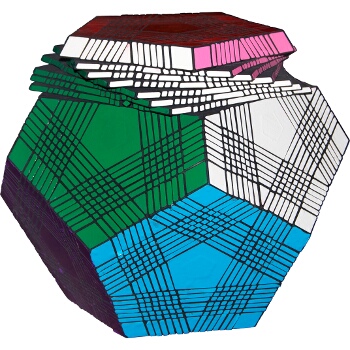

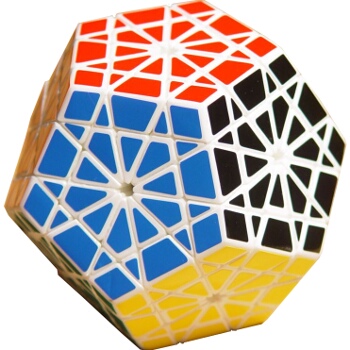
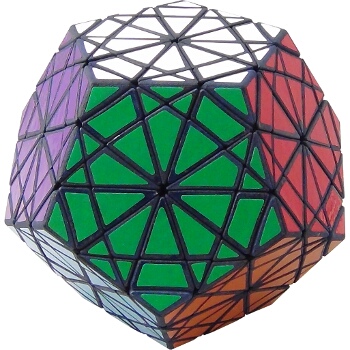

|
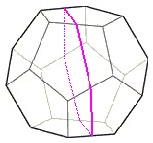


|


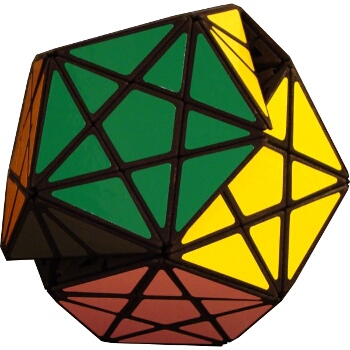
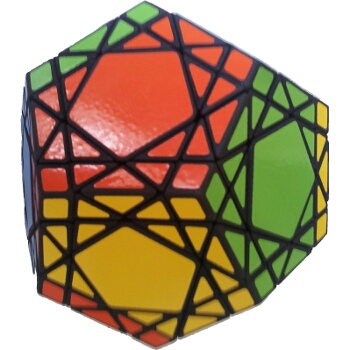

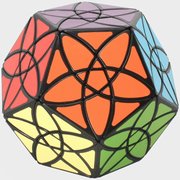
|
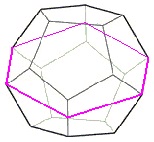

|
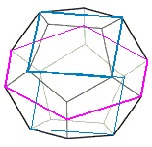

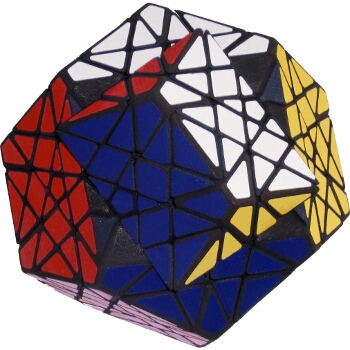
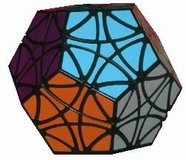
|
| Face-turning Order 1 | ||||||||||||||||||||||
|
Pentultimate - GB 1.1.7

|
For the last puzzle in 2010, I received
Tom van der Zanden's excellent Pentultimate.
You can buy one, and several other great twisty puzzles, at
Tom's Shapeways shop.
This is the order-1 face-turning dodecahedron.
It has six cuts, all of which pass through the center of the puzzle,
midway between pairs of opposing faces, and are great circles on the
circumscribed sphere.
Each divides the puzzle into two halves.
It is an engineering design masterpiece and employs a sophisticated "shells" mechanism.
The shells build upon a Megaminx, through a Pyraminx Crystal, Master Pentultimate, to the outer Pentultimate.
In a shells mechanism, the pieces of an inner shell hold in the pieces of the next shell out.
For example, the Pyraminx Crystal has two shells - an inner Megaminx and the outer Crystal.
The faces of the inner Megaminx hold in inner edges, which in turn hold in the outer Crystal corners,
which hold in the outer Crystal edges.
The Pentultimate is 25mm (1") on an edge, and is the same size as a QJ 3x3x3 dodecahedron.
The design explores the limits of economical miniaturization within the 3D printing process,
yet the puzzle is not fragile and is quite comfortable to hold and manipulate.
It was announced on the TP Forums
here.
You can see an image of the complicated internal mechanism in that thread.
For information on the earlier impressive albeit fragile so-called "knucklehead" mechanism pioneered by Jason Smith,
who designed and constructed the
first working version of this puzzle, see
an article at Jason's
Puzzle Forge website.
Brandon Enright gives a fairly simplified solution process in a video. |
|||||||||||||||||||||
|
Void Pentultimate - Mf8

|
Void Pentultimate - Mf8 | |||||||||||||||||||||
| Face-turning Order 2 | ||||||||||||||||||||||
|
Flowerminx / Kilominx - GB 1.1.12
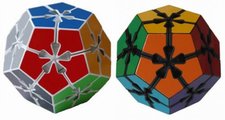
|
2.36*1025 - Megaminx core
Flower Minx - from Mefferts, designed by David Litwin.
This is a corners-only Megaminx, aka "Kilominx."
Equiv. to Impossiball. |
|||||||||||||||||||||
|
Shengshou Megaminx 2x2 (Kilominx) - GB 1.1.12

|
Shengshou Megaminx 2x2 (Kilominx) | |||||||||||||||||||||
|
Megaminx - GB 1.1.1
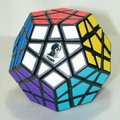
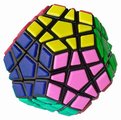


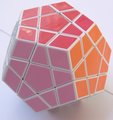
Modern Speed-Cube Designs 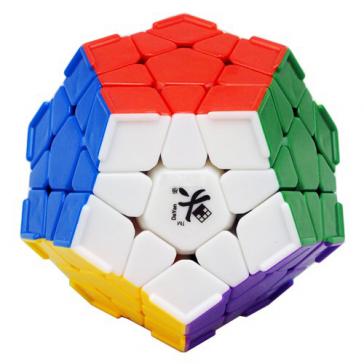
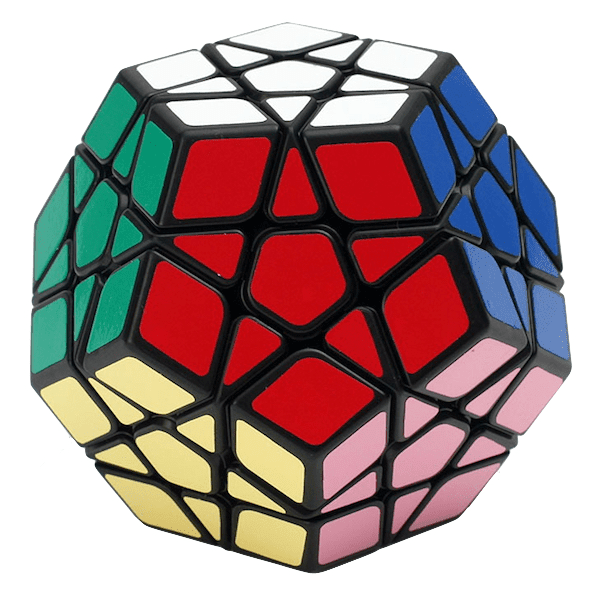
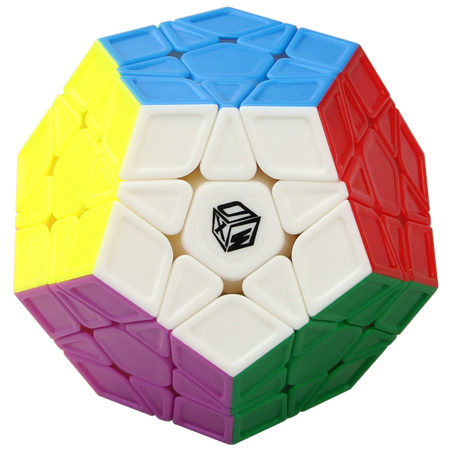
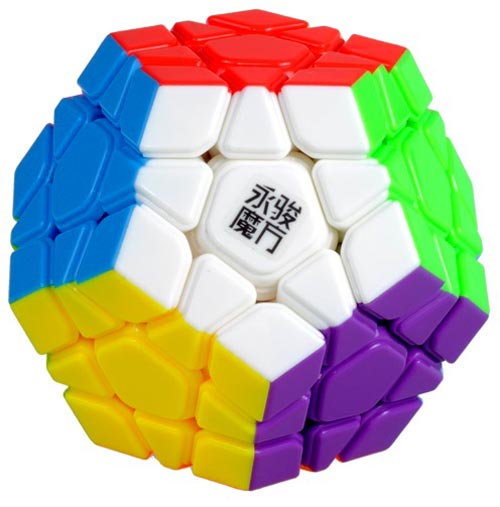
|
1.0*1068 (12 color version); 6.144*1063 (6 color version)
MegaminxKersten Meier, Ben Halpern - 12-armed spider Tomy version, Meffert's tiled version, tiled Chinese version, stickered black Hong Kong version, stickered white Hong Kong version Modern speed-cube style Megaminx designs include: DaYan stickerless with corner ridges, Lim Cube Fangshi, QiYi Galaxy Sculptured stickerless, YJ Moyu YuHu R My favorite is the YJ Moyu YuHu R - be sure to get the R version! |
|||||||||||||||||||||
|
Solving the Megaminx


Here is how we'll refer to face turns.
The solve takes place in stages:

Flip (Orient) Edges CCW: F R U R' U' F' CW: F U R U' R' F' 
Cycle (Permute) Edges CCW: R U R' U * R U' U' R' CW: R U U R' * U' R U' R'

Cycle (Permute) Corners CCW: U R U2' L' U U R' U2' L U CW: U' L' U2 R U'

Flip (Orient) Corners: A. Turn U to move unsolved corner to asterisk position at FR B. Perform R' D' R D until solved. ALWAYS DO ALL FOUR MOVES. Repeat steps A and B until all corners are solved. |
||||||||||||||||||||||
|
Hungarian Supernova
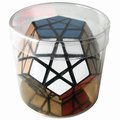

|
Original Hungarian Supernova in clear cylindrical package.
Also have a Hungarian Supernova re-issue with its white box. Note how the tips of the stars on the faces of the Supernova make points rather than the "snub" edges of the Megaminx. The tiled Chinese Megaminx also has pointed stars, but that puzzle turns horribly and its plastic is brittle, while the Supernova turns well and is of good quality. |
|||||||||||||||||||||
|
Holey Megaminx / Void Megaminx - Lee Tutt / Meffert
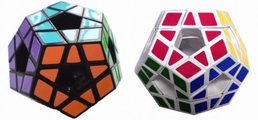
|
The Holey Megaminx from Mefferts (in black and white), designed by Lee Tutt. | |||||||||||||||||||||
|
Pyraminx Crystal - GB 1.1.3
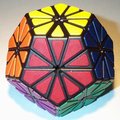
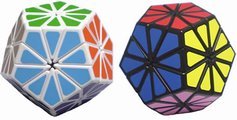
|
1.68*1066 - A build-up of the Megaminx, without centers.
Meffert's
Pyraminx Crystal
(black tiled version, and black and white stickered versions)
First patented in 1987 by Uwe Meffert: DE8707783 (U1). Katsuhiko Okamoto had created a version he called the Mega Crystal. Aleh Hladzilin created a version he eventually named the Brilic - he made around a dozen, some of which sold for over $1000. At first he used a Dogic core, then later a Megaminx core. Noah Hevey has written a nice history of this puzzle - see topic 85537 in the TwistyPuzzles forums. Also see thread 7711 for a discussion of solution methods. While a twist on the Megaminx moves 5 corners and 5 edges, a twist on the Crystal moves 5 corners and 10 edges. |
|||||||||||||||||||||
|
Starminx I - GB 1.1.5 - Tom van der Zanden
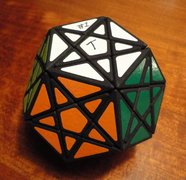
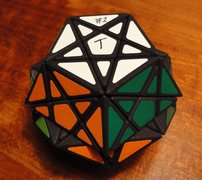
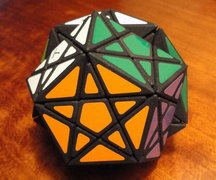
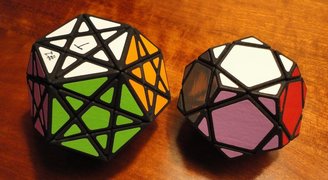
|
In 2011, I had the pleasure of meeting
Tom van der Zanden
[S]
at IPP 31 in Berlin.
Tom made me a slightly larger version of his Starminx I [T]. The Starminx is shown in comparison to Tom's Mini-Pentultimate. Previous versions of the Starminx have been made by Drew Cormier [T] and Aleh [T]. |
|||||||||||||||||||||
|
Starminx I - GB 1.1.5 - Mf8
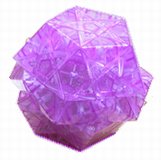
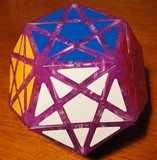
|
Mf8 Starminx II - in translucent purple
This is a mass-produced version of what the twisty forum knows as the Starminx I, previously custom-made by Aleh [T] , Drew Cormier [T] , and Tom van der Zanden, in mini [T], and larger size [T] . (Mf8 called their Dino-Dodecahedron a Starminx I, hence the naming confusion.) I finally stickered my purple Mf8 Starminx. As people have noted, it does not turn as smoothly as Tom's (admittedly much more costly) 3D printed version. |
|||||||||||||||||||||
|
Curvy Starminx - Mf8

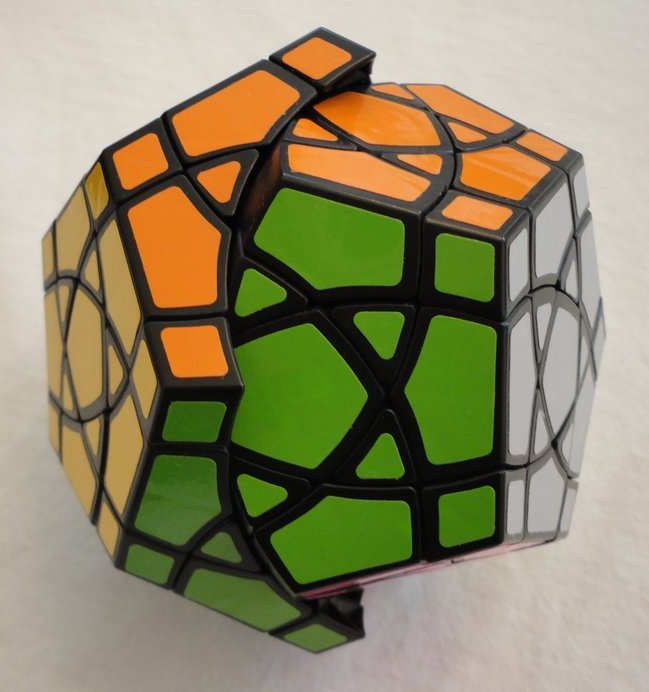
|
Mf8 Curvy Starminx | |||||||||||||||||||||
|
Master Pentultimate - GB 1.1.6 - Eric Vergo

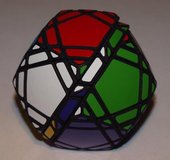

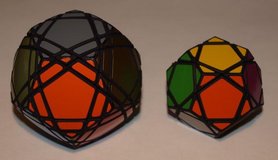
|
I received a Master Pentultimate designed and made by Eric Vergo. It turns very smoothly. This is a great design! Shown along with Tom van der Zanden's Pentultimate. | |||||||||||||||||||||
|
(Void) Master Pentultimate - GB 1.1.6 - mass produced by Mf8

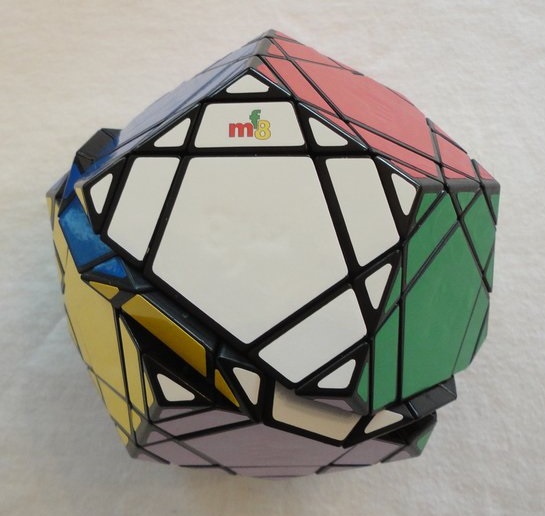
|
Mf8 (Void) Master Pentultimate
(Shown with optional center panels in place.) |
|||||||||||||||||||||
|
Multidodecahedron - Tom van der Zanden

|
A Multidodecahedron by
Tom van der Zanden
[T]
The theory behind this puzzle was discussed by Carl Hoff
here.
This is a custom 3D printed puzzle, but the pieces of my copy have been through a "tumbling" process that makes them smooth. [T] The Multidodecahedron is an outer Master Pentultimate, where the face centers expose an inner Megaminx shell having its own stickers. A full solution entails solving both layers. [T] |
|||||||||||||||||||||
| Face-turning Order 3+ | ||||||||||||||||||||||
|
Gigaminx - GB 1.1.9

|
3.65*10263
Gigaminx
Originally realized by Tyler Fox. Subsequently made by others.
Commercially released by
James Lee at Cube4you
|
|||||||||||||||||||||
|
Gigaminx - Shengshou

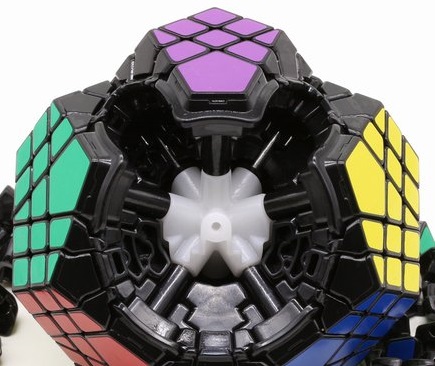
|
Shengshou also offers a Gigaminx. (I don't have one.) | |||||||||||||||||||||
|
Master Kilominx / Hyperminx - Mf8

|
Mf8 Master Kilominx (solid colors)
Also known as the Hyperminx This is essentially a Gigaminx where the central stars have been hidden. The pieces overlap during turns. |
|||||||||||||||||||||
|
Shengshou Master Kilominx

|
Shengshou Master Kilominx | |||||||||||||||||||||
|
Teraminx - GB 1.1.41
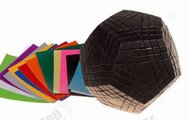
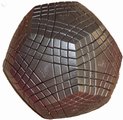

|
1.16*10525
Teraminx
Originally designed by Drew Cormier. According to Drew, the Teraminx contains 555 pieces!
Produced commercially by
Cube4you
and
Mf8.
I got a C4U because of a misrepresentation by a vendor.
The MF8 version is superior, and I got one from Meffert.
|
|||||||||||||||||||||
|
Teraminx - Shengshou

|
Shengshou also offers a regular Teraminx with flat sides. (I don't have one.) | |||||||||||||||||||||
|
Elite Kilominx - Shengshou

|
Elite Kilominx - Shengshou | |||||||||||||||||||||
|
Petaminx

|
3.16*10996
Petaminx
This had been a very expensive custom-made puzzle (in the $3000 price range), designed by Drew Cormier. However, it has been mass-produced (at the $200 - $250 price range) by Mf8. (Included for reference to show number of positions - I don't have this.) |
|||||||||||||||||||||
| Vertex-turning Order 1 | ||||||||||||||||||||||
|
Halfminx aka Drew's Chopasaurus - GB 1.2.9 - Drew Cormier

|
The order-1 vertex-turning dodecahrdon is the "Halfminx" - made by Drew Cormier, who called it
the "Chopasaurus."
[T]
I don't have this. The closest commercially available puzzle is the Skewb Ultimate - see below. |
|||||||||||||||||||||
|
Skewb Ultimate

|
1.0*108 - Uwe Meffert
Skewb UltimateJaap's page The Skewb Ultimate is the "most difficult" of the Skewb family - every piece has a proper orientation, unlike, for example, the face centers on the Skewb. The hierarchy is:
|
|||||||||||||||||||||
| Vertex-turning Order 2 | ||||||||||||||||||||||
|
Dino Dodecahedron - GB 1.2.1 - Mf8 (their Starminx I)

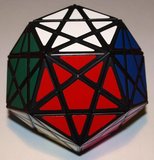
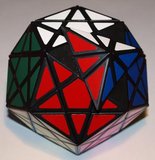
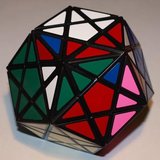
|
A Dino Dodecahedron (aka Dinominx) by Mf8 (they call it a Starminx I), purchased from
hknowstore.
This puzzle was first proposed by Lukeharry then made by Kevin Uhrik, now mass-produced by Mf8. [T] I solve this with no algorithms - it's a fun puzzle. Also quite large - larger than a Pyraminx Crystal. |
|||||||||||||||||||||
|
Rediminx - Moyu

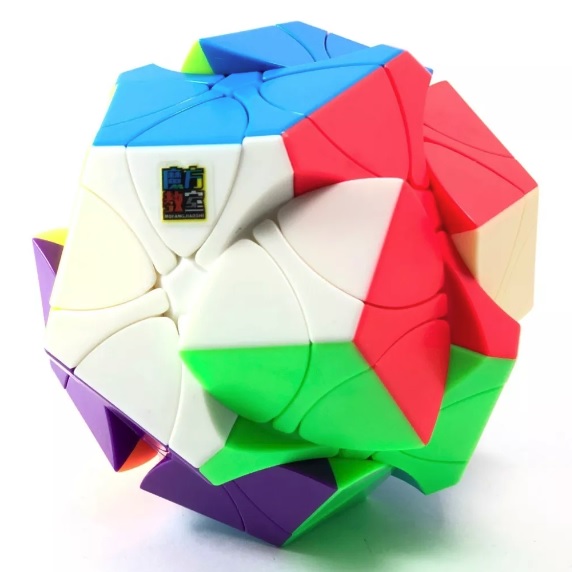
|
Rediminx by Moyu
|
|||||||||||||||||||||
|
||||||||||||||||||||||
|
Curvy Dino Megaminx - designed by AJ Lu, produced by Mf8

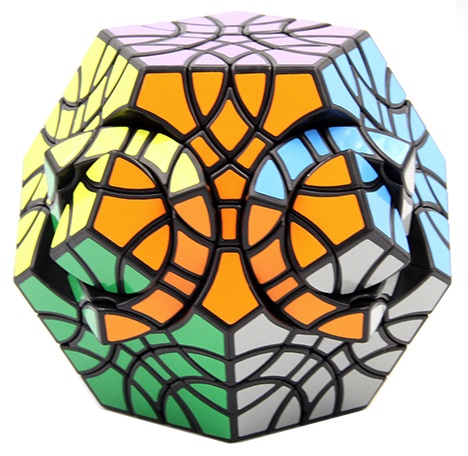
|
Curvy Dino Megaminx - designed by AJ Lu, produced by Mf8
|
|||||||||||||||||||||
|
Proper Dino Dodecahedron - Delimollov
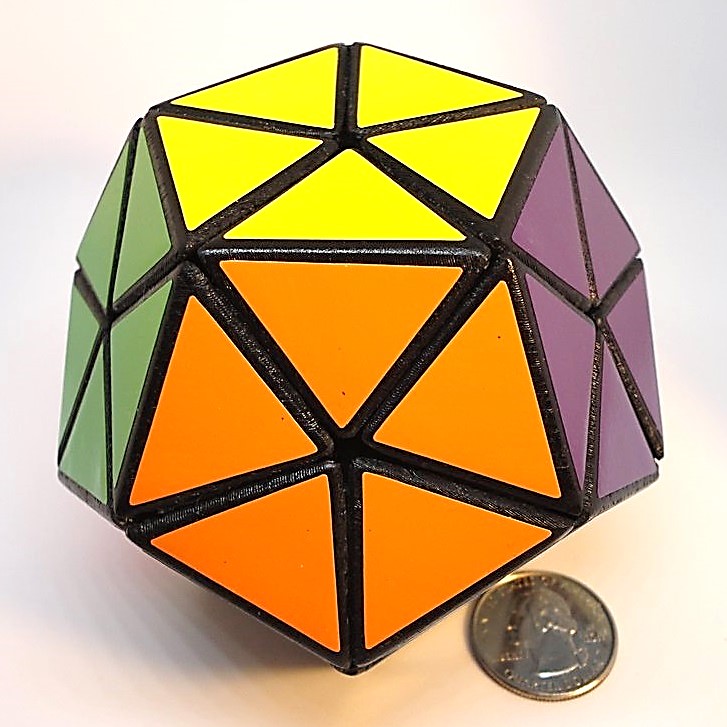
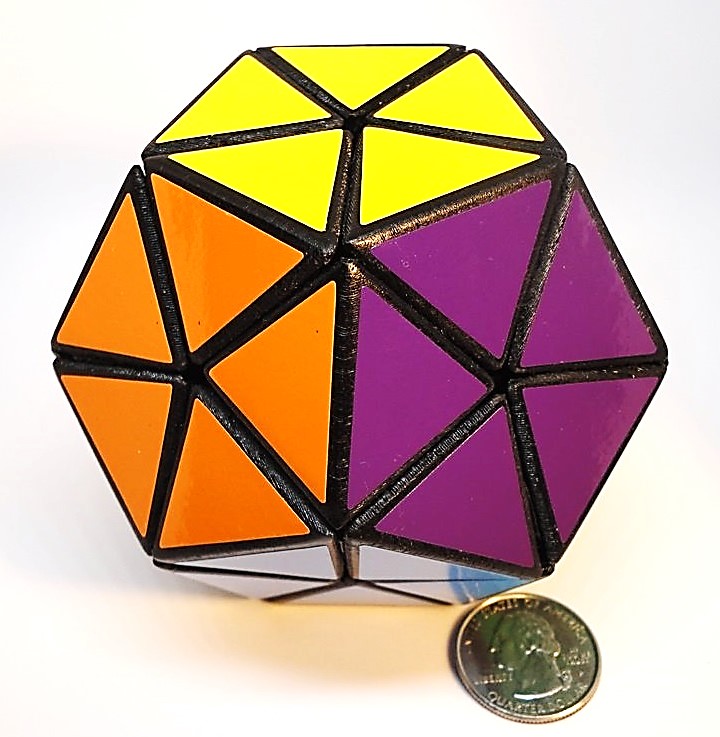
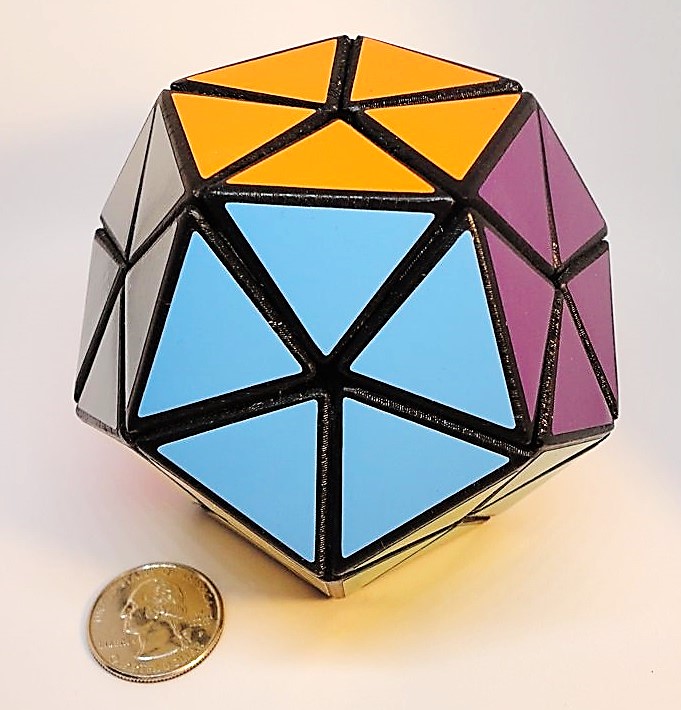
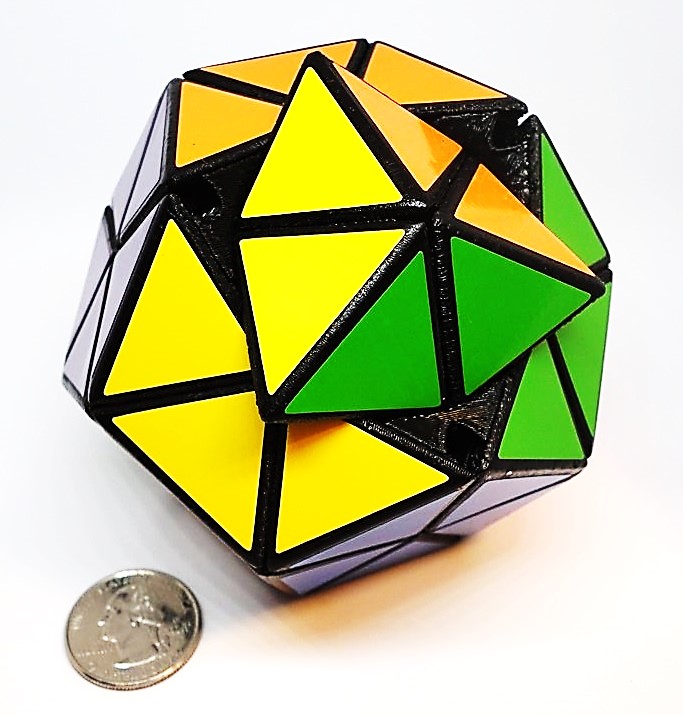
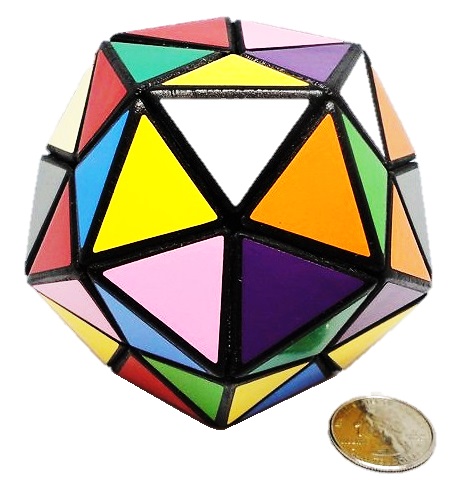
|
Proper Dino Dodecahedron - designed by Vladi Delimollov, made by
Chewie's Custom Puzzles.
|
|||||||||||||||||||||
|
Pentagram - GB 1.2.3 - Eric Vergo
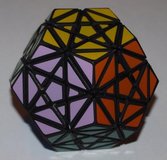
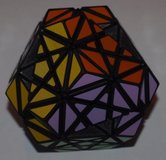
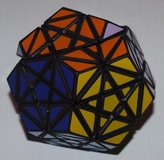
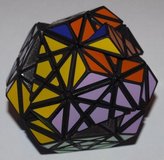
|
I bought the 1st copy of Eric Vergo's Pentagram puzzle - first announced at the TwistyPuzzles forums. It is an order-2 vertex-turning dodecahedron, designed by Eric and 3D printed by Shapeways. It is the same size as the Meffert's Pyraminx Crystal. You can buy a copy at Eric's Shapeways shop. There is an online video review of this puzzle on YouTube. | |||||||||||||||||||||
|
Pentagram - GB 1.2.3 - Eric Vergo
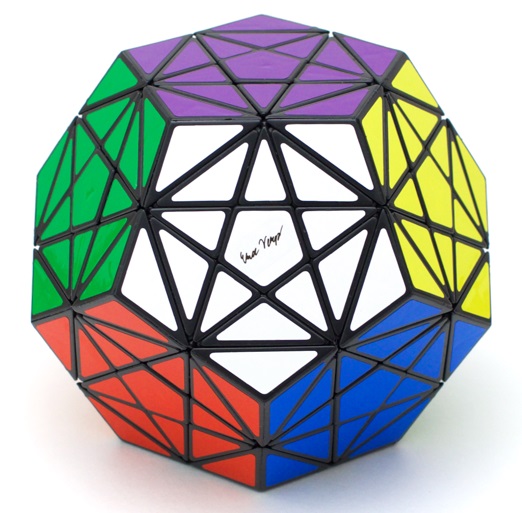

|
Pentagram designed by Eric Vergo
produced by Mf8 Once again an expensive 3D printed twisty gets mass produced. |
|||||||||||||||||||||
|
Bauhinia - Mf8

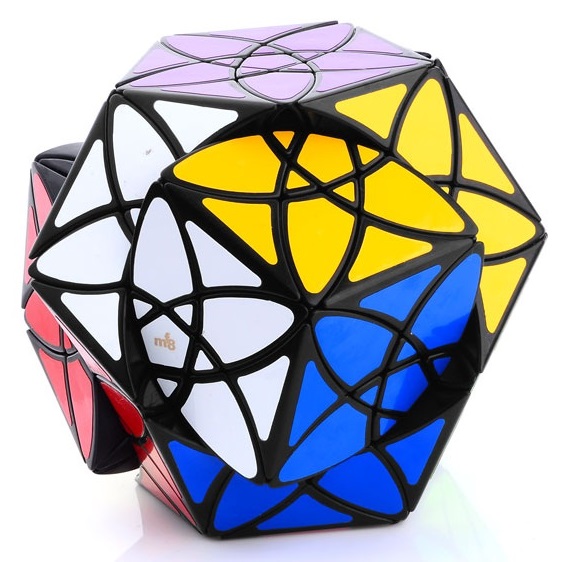
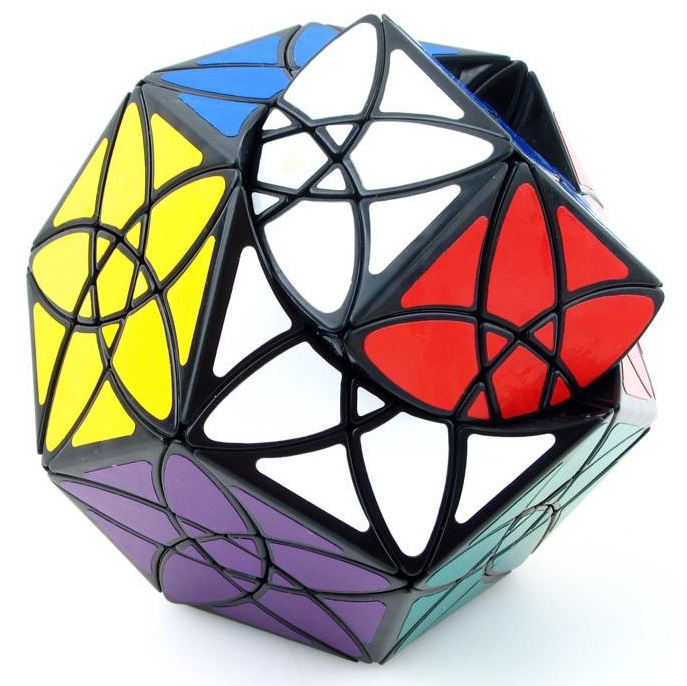
|
Bauhinia - produced by Mf8
A "Rex Dodecahedron." |
|||||||||||||||||||||
| Edge-turning Order 1 | ||||||||||||||||||||||
|
Big Chop - GB 1.4.3 - Oskar van Deventer, Jason Smith

|
The order-1 edge-turning dodecahrdon is the "Big Chop."
As of this writing (June 2013) there is no satisfactory mechanism for this puzzle.
Oskar made one using magnets. Jason Smith attempted another interesting mechanism.
[T]
I don't have this. |
|||||||||||||||||||||
| Edge-turning Order 2 | ||||||||||||||||||||||
|
Helicopter Dodecahedron - Mf8

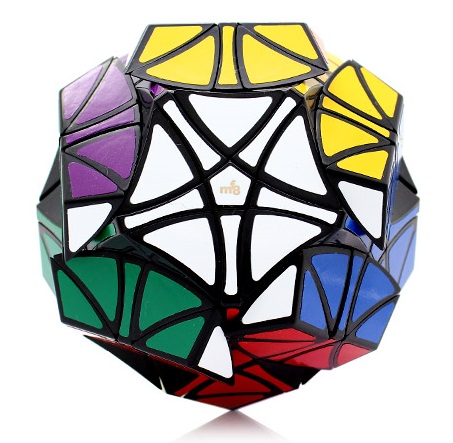
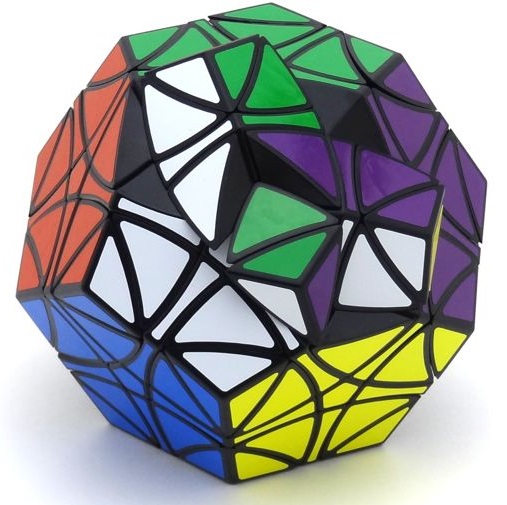
|
Mf8 Helicopter Dodecahedron, in black | |||||||||||||||||||||
| Geared | ||||||||||||||||||||||
|
Gear Minx I
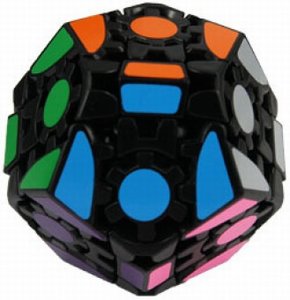
|
Gear Minx I - gear twisty mechanism designed by Oskar van Deventer, offered by Meffert. | |||||||||||||||||||||
|
Gear Minx II

|
Gear Minx II - gear twisty mechanism designed by Oskar van Deventer, offered by Meffert. | |||||||||||||||||||||
| Circle / Crazy | ||||||||||||||||||||||
|
Crazy Megaminx Plus - Saturn - Mf8
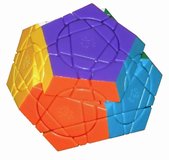
|
DaYan/Mf8 Crazy Megaminx Plus Saturn The fit and turning on the copy I got are very good, and I like the stickerless design and brightly colored plastic. It is about the same size and weight as a Meffert's Pyraminx Crystal. Purchased at the HK Now Store. | |||||||||||||||||||||
|
Crazy Megaminx - Sengso
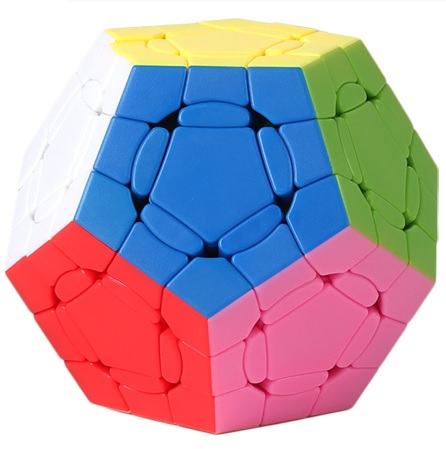
|
Crazy Megaminx - Sengso
In this puzzle, the small pieces on the faces, surrounding the centers, remain in place during a turn of the face they're in, but they move with a turn of any adjacent face. |
|||||||||||||||||||||
| Shapemods | ||||||||||||||||||||||
|
2x2x2 Dodecahedron

|
A 2x2x2 in the shape of a dodecahedron. Produced by LanLan. | |||||||||||||||||||||
|
3x3x3 Dodecahedron
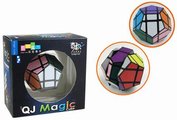
|
3x3x3 Dodecahedron. Produced by QJ. More difficult than the regular 3x3x3, since all six centers must be properly oriented. | |||||||||||||||||||||
| Edgematching | ||||||||||||||||||||||
|
Dodeca Nona
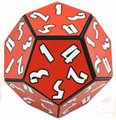
|
3.99*1018 - 1122 solutions.
Dodeca Nona
A faces-only dodecahedron. This type of 3D edgematching puzzle is included here because I consider them "faces-only" versions of twisty polyhedra - no corners and no edges. 12 magnetic pentagonal 2-sided tiles fit to the faces. Each face has the numbers 1 through 5 arranged around its corners - all 24 possible arrangements are included. Place the tiles so that at every vertex of the dodecahedron, the numbers add up to nine. |
|||||||||||||||||||||
|
Mobius

|
Mobius
This type of 3D edgematching puzzle is included here because I consider them "faces-only" versions of twisty polyhedra - no corners and no edges. |
|||||||||||||||||||||
| Related | ||||||||||||||||||||||
|
2x2 Megaminx



|
2x2 Megaminx - designed by Gregoire Pfennig and Felixouchon
Produced by WitEden [T] Very difficult to align and turn. |
|||||||||||||||||||||
|
Verypuzzle Clover Dodecahedron

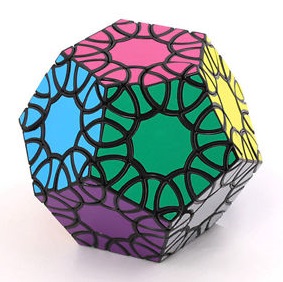
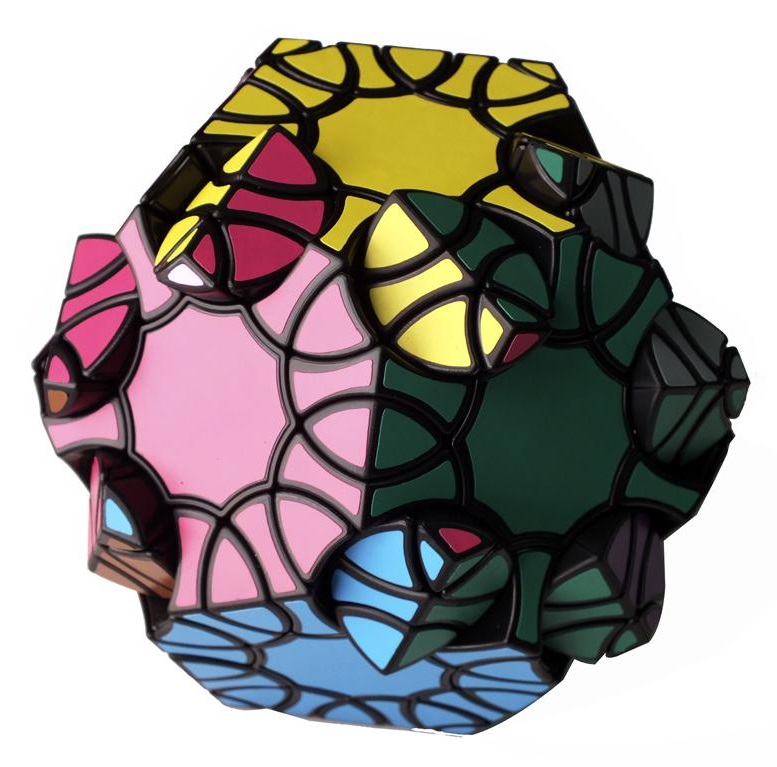
|
Clover Dodecahedron - by Verypuzzle | |||||||||||||||||||||
|
Alexander's Star
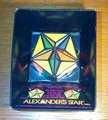
|
7.2*1034 - Adam Alexander
Alexander's Star
(Equal to a Megaminx with no corners and no centers.) |
|||||||||||||||||||||
|
GloBall

|
GloBall
[T]
See GloBall variants here. |
|||||||||||||||||||||
|
Kytka (Flower) GloBall
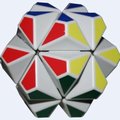
|
Kytka (Flower) A derivative of the Globall. This is a corners-only Megaminx or Pyraminx Crystal, same as Litwin's Kilominx / Meffert's Flower Minx. |
|||||||||||||||||||||
|
Logic Star GloBall

|
Logic Star
A derivative of the Globall. |
|||||||||||||||||||||
|
Vega Mate - Raphaël Mouflin
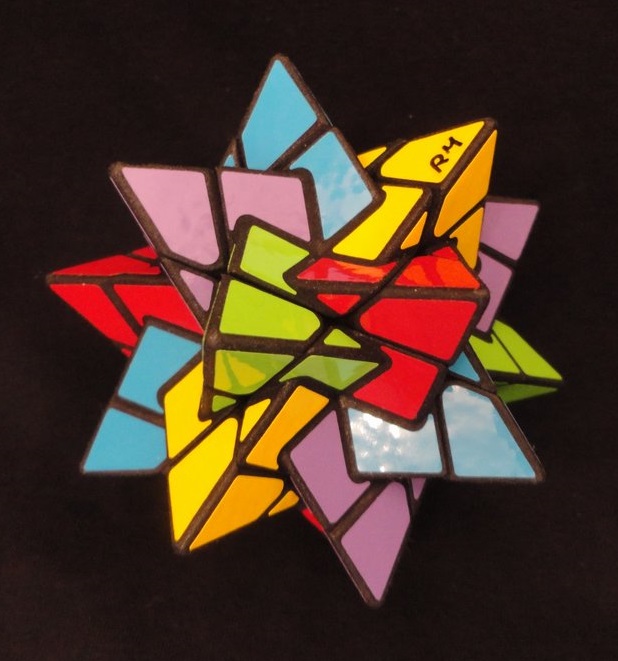
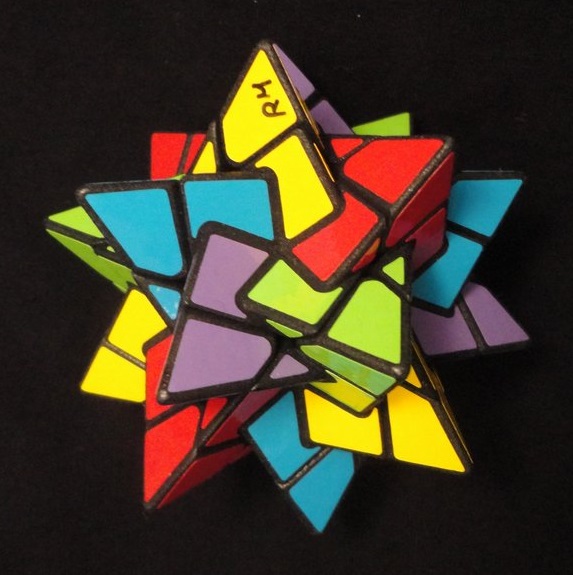
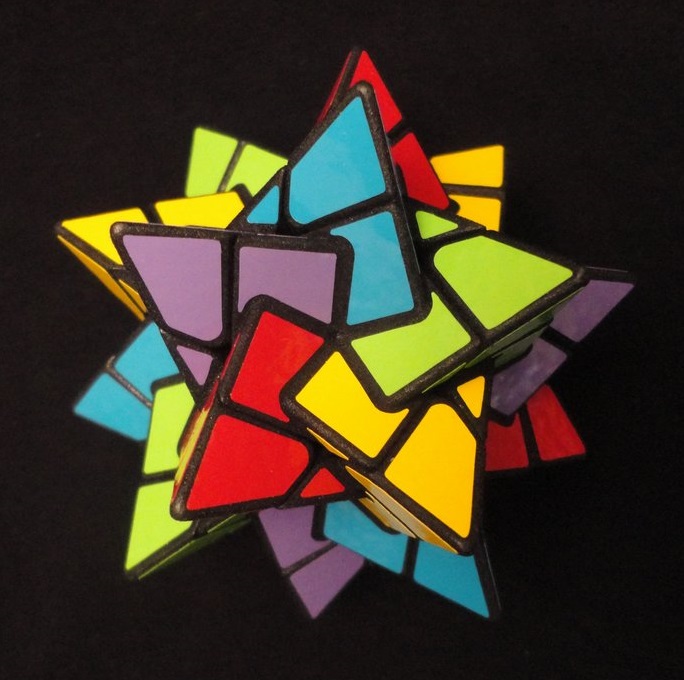
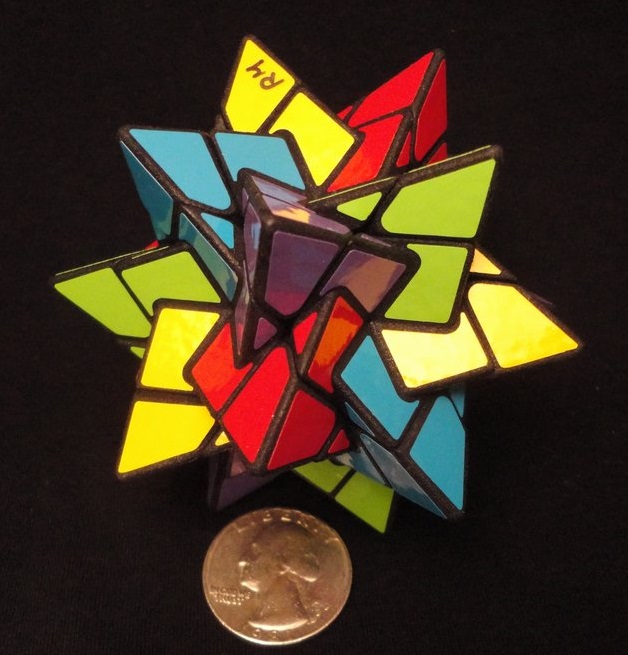
|
Vega Mate - by Raphaël Mouflin
[T]
The Vega Mate is a compound of five tetrahedrons; the base puzzle is a Pentultimate. |
|||||||||||||||||||||
|
Fisher's Golden Dodecahedron
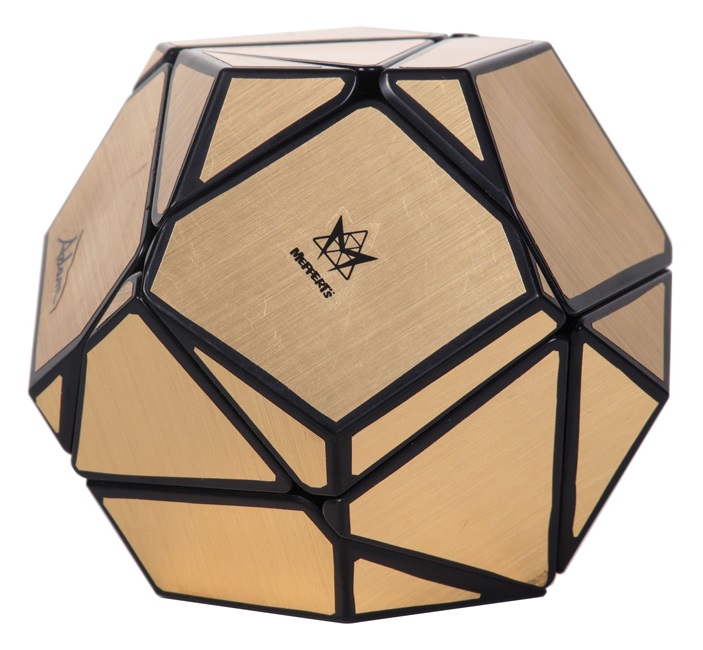
|
Tony Fisher's Golden Dodecahedron - Mefferts | |||||||||||||||||||||
| Face-turning Order 2 | |
|
FTRD (Rua) - David Pitcher
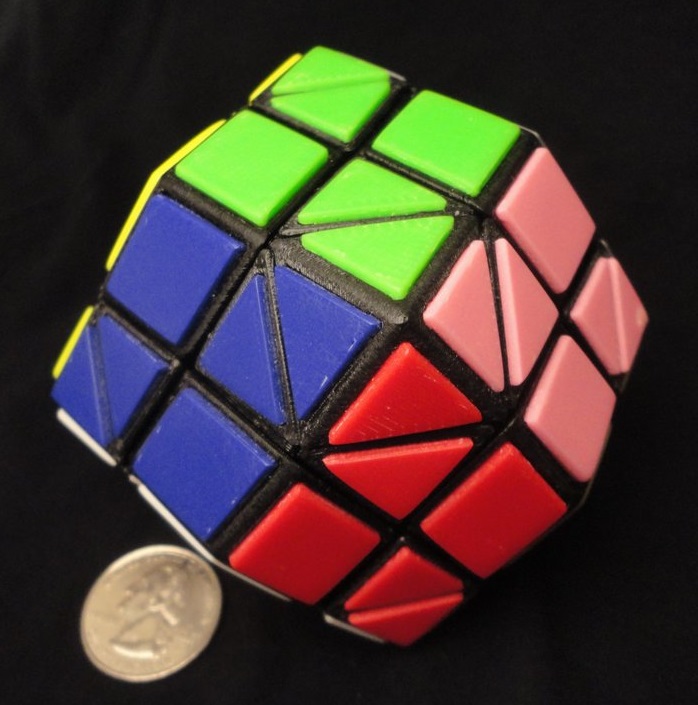
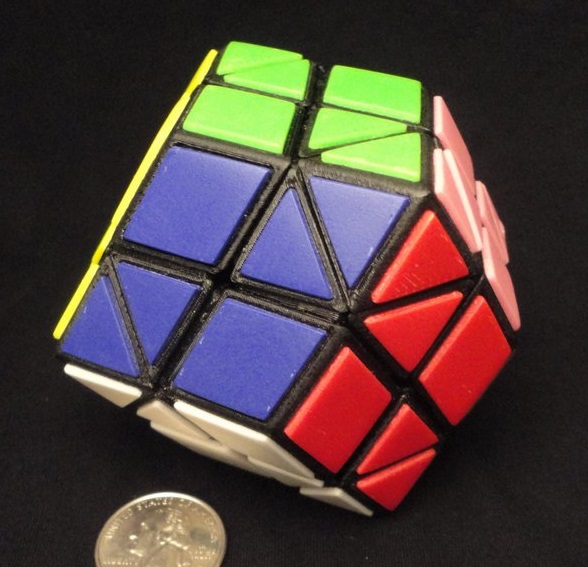
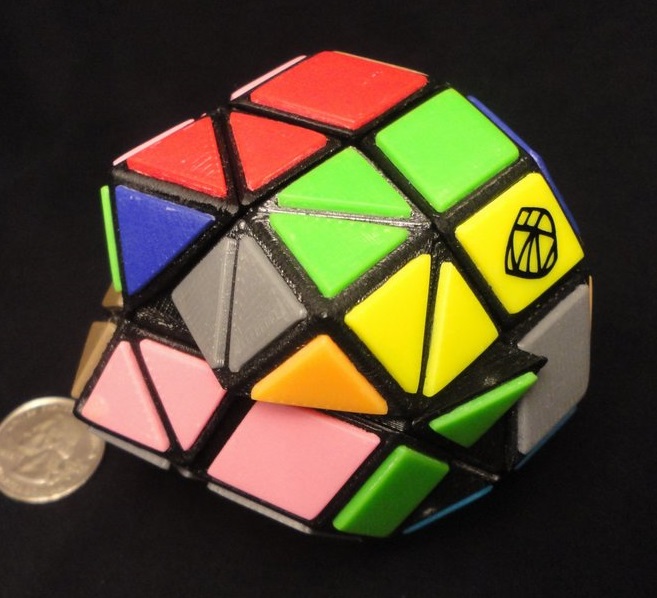
|
The FTRD (Face Turning Rhombic Dodecahedron) aka Rua, by David Pitcher.
FDM (ABS) version of FTRD by Pitcher, with tiles, purchased 1/20/18 for $140 from Chewie's Custom Stickers (Jason Gavril) - see link to FTRD. Pitcher's announcement of his Shapeways version back in Jan 2012: [T]. David says that though Matt Shepit announced first, in 2008, David designed his in 2003. Chewie's announcements: [T] [T] Matt Shepit's Rua from 2008: [T] "Rua" means "two" in Maori, and refers to the fact that the cuts are less deep compared to the Toru. In 2009 Eitan Cher designed an FTRD with shallower cut placement (essentially a Rua but with all pieces exposed) (it sold in an auction to Frank Tiex for $614): [T] [Y] Master FTRD by Eitan Cher: [T] [Y] Master Rua by Mohammad Badir: [T] List of other RD puzzles: [T] |
|
Rhombic-18 - David Pitcher

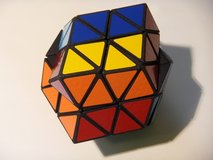
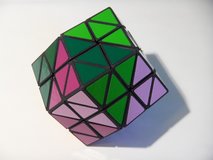
|
The Rhombic-18, by David Pitcher.
[T]
[Y]
[S]
A variation of the FTRD, where all faces turn, and all 4-fold corners turn. |
|
Toru (replica) - Sam Jiang 2/2018
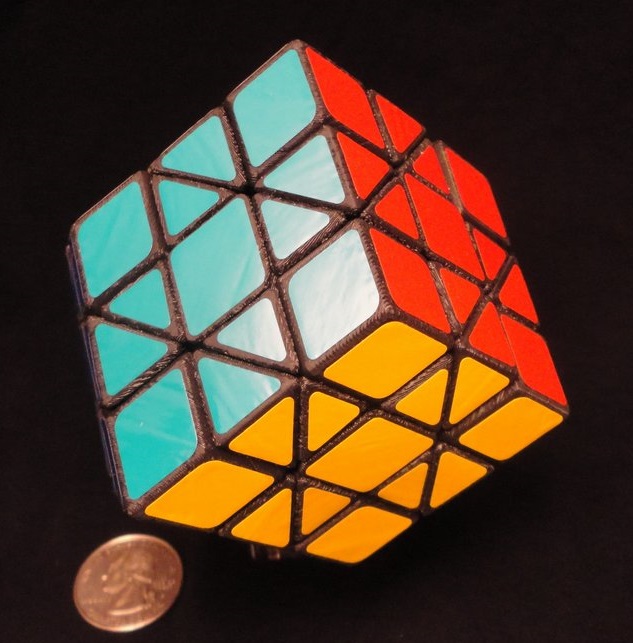
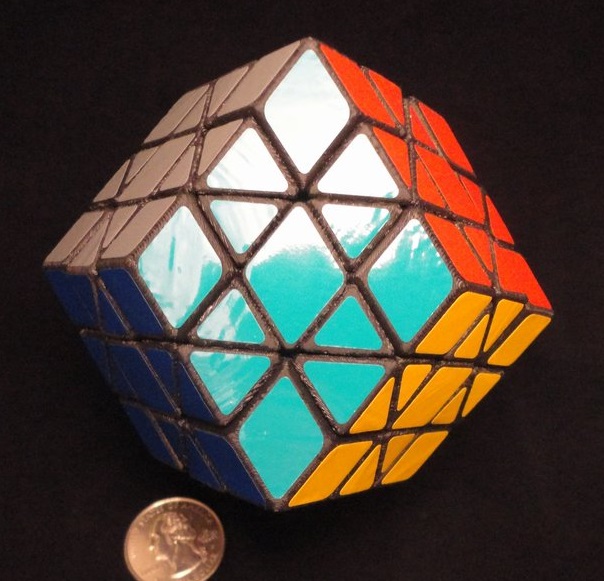
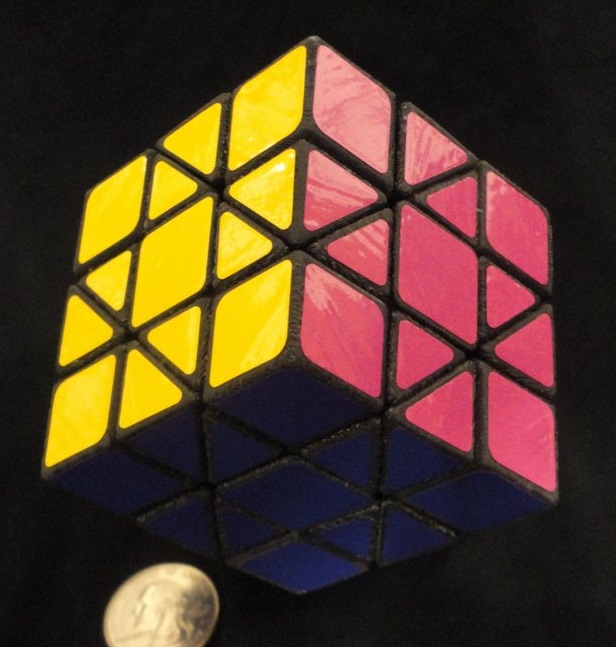

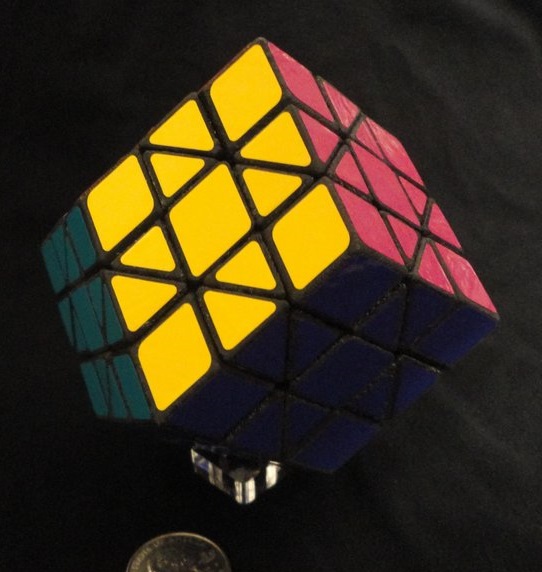

|
Toru replica by Sam Jiang
[T]
[Y]
Matt Shepit's original Toru from 2008: [Y] This puzzle turns just like the FTRD but is deeper-cut. "Toru" means "three" in Maori, and refers to the fact that the cuts are deeper compared to the Rua. |
|
Crazy Comet - Oskar van Deventer - Lanlan
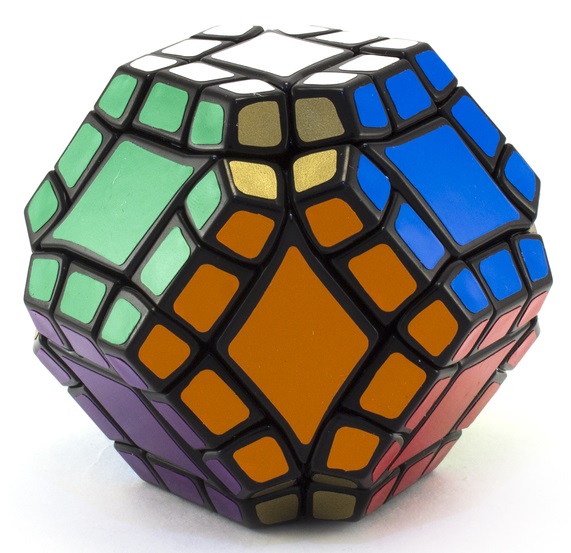
|
The Crazy Comet, designed by Oskar van Deventer back in Sept. of 2009
[T]
and produced by Lanlan in 2017.
Lanlan initially produced this without acknowledging Oskar [T]. This puzzle jumbles. |
| Vertex-turning Order 2 | |
|
DRD (Dino Rhombic Dodecahedron) - Drew Cormier
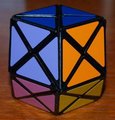
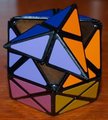
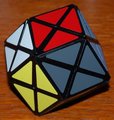
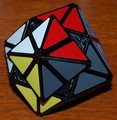
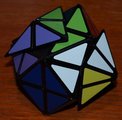
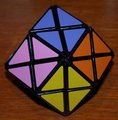
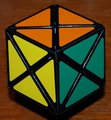
|
I bought the Dino-Rhombic Dodecahedron (DRD) DIY from Drew Cormier. This puzzle is a vertex-turning rhombic dodecahedron where all 4-part and 3-part vertices turn. It turns well, but due to a design issue the 3-part corners turn only counter-clockwise. |
|
Rex Rhombic Dodecahedron - William Kretschmer
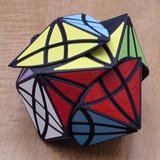

|
This is a Rex Rhombic Dodecahedron (RRD), designed by William Kretschmer. It was announced on the TwistyPuzzles forums, and is available from Will's Shapeways shop. As Will says, the turning is nearly flawless. It's about the same size as the LanLan 4x4x4 RD. This is a great puzzle! |
| Vertex-turning Order 3 | |
|
Mini-Mini-Rhombiminx - Eric Johnson
|
A Mini Mini Rhombiminx from Eric Johnson.
It's a vertex-turning Rhombic Dodecahedron, but unlike the similar-looking DRD, the Rhombiminx is order-3 and only the 4-part vertices turn. It's hand-made using cast custom parts and an Eastsheen mini 2x2x2 core. |
|
Mini Rhombiminx
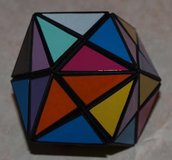
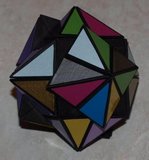 This puzzle is the same size as the Dino-Rhombic Dodecahedron (DRD) I got from Drew Cormier - here are some comparison photos:
This puzzle is the same size as the Dino-Rhombic Dodecahedron (DRD) I got from Drew Cormier - here are some comparison photos:
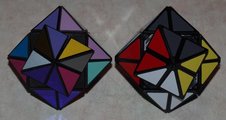
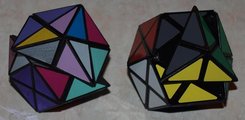 Here is a group shot with various Rhombic Dodecahedra twisty puzzles.
Here is a group shot with various Rhombic Dodecahedra twisty puzzles.
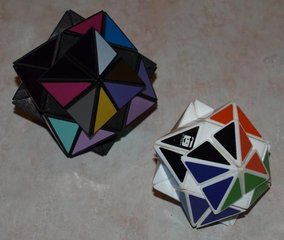
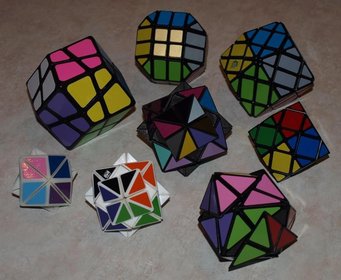 The black Mini-Rhombiminx is in the center. The white Mini-mini Rhombiminx is below it;
clockwise from there is a 2x2x2 Rhombic Dodecahedron made by Karl-Heinz Diekmann,
a Kite Skewb, a truncated 4x4x4 RD, a Lanlan 4x4x4 RD, a QJ 3x3x3 RD, and the custom DRD.
The black Mini-Rhombiminx is in the center. The white Mini-mini Rhombiminx is below it;
clockwise from there is a 2x2x2 Rhombic Dodecahedron made by Karl-Heinz Diekmann,
a Kite Skewb, a truncated 4x4x4 RD, a Lanlan 4x4x4 RD, a QJ 3x3x3 RD, and the custom DRD.
|
I received a black Mini Rhombiminx. This is an order-3 vertex-turning rhombic dodecahedron, built around a 2x2x2 using custom parts. (The first Rhombiminx was built around a cut-down 4x4x4.) Every 4-part vertex turns, and there are 3 mutually perpendicular cuts through each square cross-section (i.e. the 2x2x2 cuts). It is larger than the white Mini-mini Rhombiminx I got a while ago, which is built around a mini-Eastsheen 2x2x2. |
|
Devil's Eye / Evil Eye - Closed

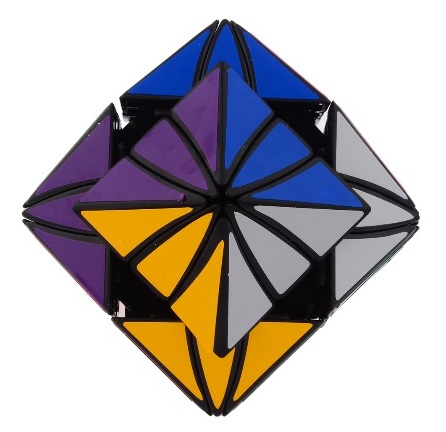
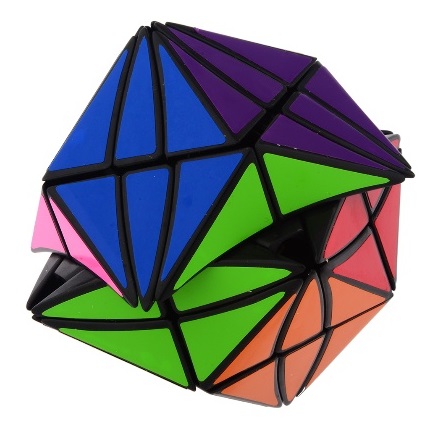
|
Moyu Devil's Eye (closed) - invented by Guan Yang
a rhombic dodecahedral form of the cross cube |
|
Devil's Eye / Evil Eye - Open

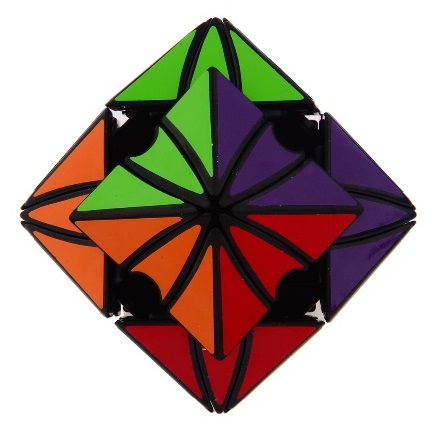
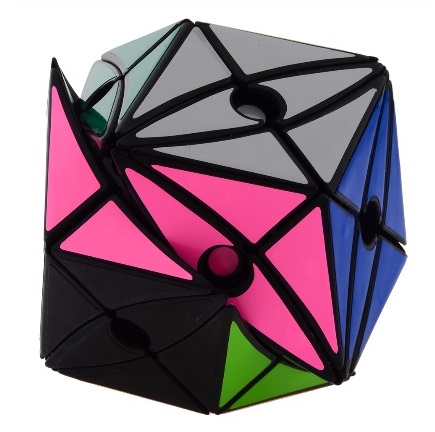
|
Moyu Devil's Eye (open) |
|
Devil's Eye / Evil Eye - Closed, solid Colored pieces

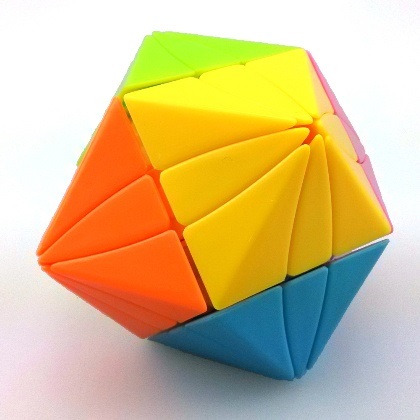
|
Moyu Devil's Eye (closed) - with solid colored pieces |
| Geared | |
|
Gear Change - Meffert

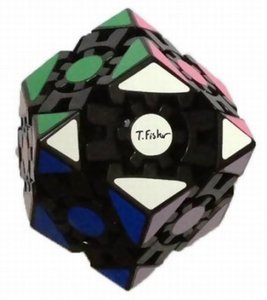
|
Gear Change pair |
| Shapemods | |
|
Rhombic Dodecahedron Skewb


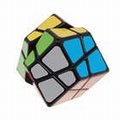
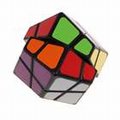

|
1.0*108
Rhombic Dodecahedron Skewb
Since the orientation of every piece matters, this is similar to the Skewb Ultimate. |
|
2x2x2 Rhombic Dodecahedron - Karl-Heinz Diekmann
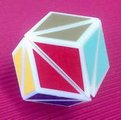
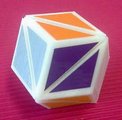
|
A 2x2x2 Rhombic Dodecahedron, made by Karl-Heinz Diekmann. |
|
3x3x3 Rhombic Dodecahedron - QJ, LanLan

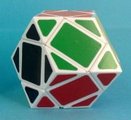
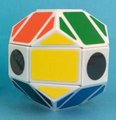
|
Rhombic Dodecahedron (3x3x3)
in black (QJ), and white (LanLan)
also truncated version |
|
4x4x4 Rhombic Dodecahedron - LanLan


|
Lanlan 4x4x4 Rhombic Dodecahedron
also truncated version |
|
Diamond Cube

|
Truncated Rhombic Dodecahedron This vintage cube-variant is almost a rhombic dodecahedron, except the four-color centers are flat, not pyramidal. The three-color corners are pyramidal. |
| Face-turning Order 1 | |
|
Jason's Radio Chop (Radiolarian #15) - GB 2.1.5
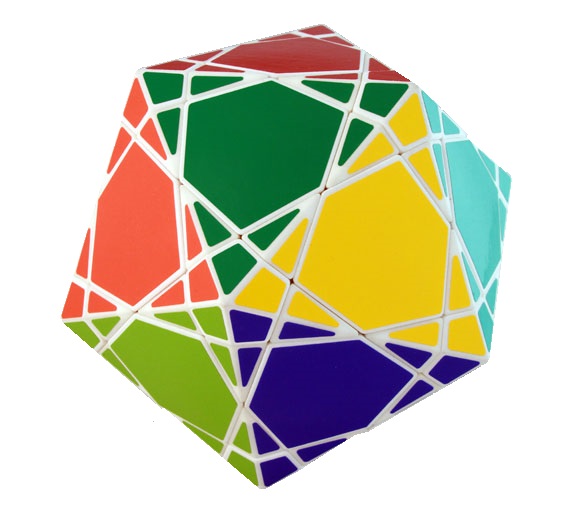

|
Jason Smith completed his series of "Radiolarian" designs, culminating in the deep-cut #15.
[T]
[Y]
Unfortunately his design does not permit jumbling moves. Jason created successive versions of the face-turning icosahedron (FTI), starting with a shallow-cut order-2, then moving the cuts deeper and deeper and closer to each other, on his way to where they merge in the deep-cut GB 2.1.5.
|
|
Icosahedron Skewb - Tony Fisher

| The closest custom puzzle prior to Jason's Radio Chop is Tony Fisher's mod of a Skewb - the Icosahedron Skewb - from 1996. It has deep cuts - they cut the icosahedron in half - but unfortunately it is not fully cut. [W] [Y] |
| Face-turning Order 2 | |
|
Icosaix - Mf8


|
Icosaix - mass-produced by Mf8
created by Oskar van Deventer |
|
Jason's Radiolarian II - GB 2.1.1 - Jason Smith, Bob Hearn
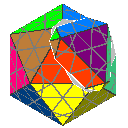

|
2.1.1 Jason's Radiolarian II [Y]; Bob Hearn also designed and made this form [T] |
|
Radiolarian - Mf8

|
Radiolarian - mass-produced by Mf8
Based on Jason's Radiolarian II - GB 2.1.1 - Jason Smith, Bob Hearn |
|
Jason's Radiolarian III - GB 2.1.2 - Jason Smith
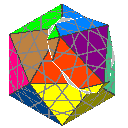

|
2.1.2 Jason's Radiolarian III [T] |
|
Eitan's Star (DeFTI) - GB 2.1.3 - Eitan Cher / Mf8
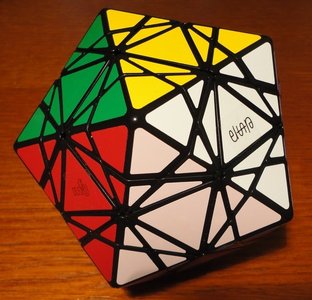
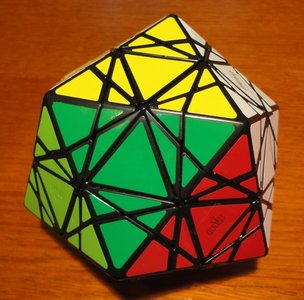

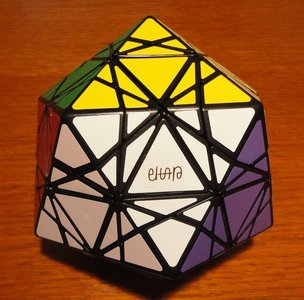

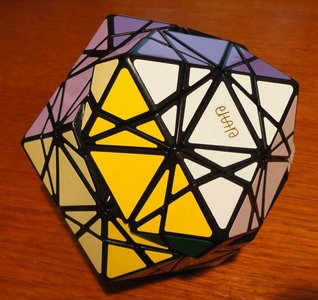
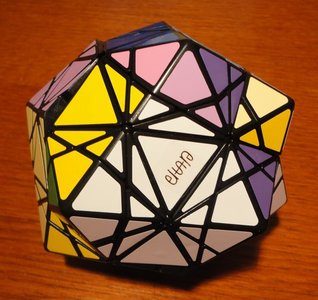
|
Eitan's (pronounced like "eight - on") Star
Originally designed and 3D printed by Eitan Cher, and named the DeFTI (deeper-cut face-turning icosahedron), a custom version sold for $926. [T] Mf8 has mass-produced a version and given Eitan credit. [T] This puzzle jumbles. |
|
AJ Clover Icosahedron
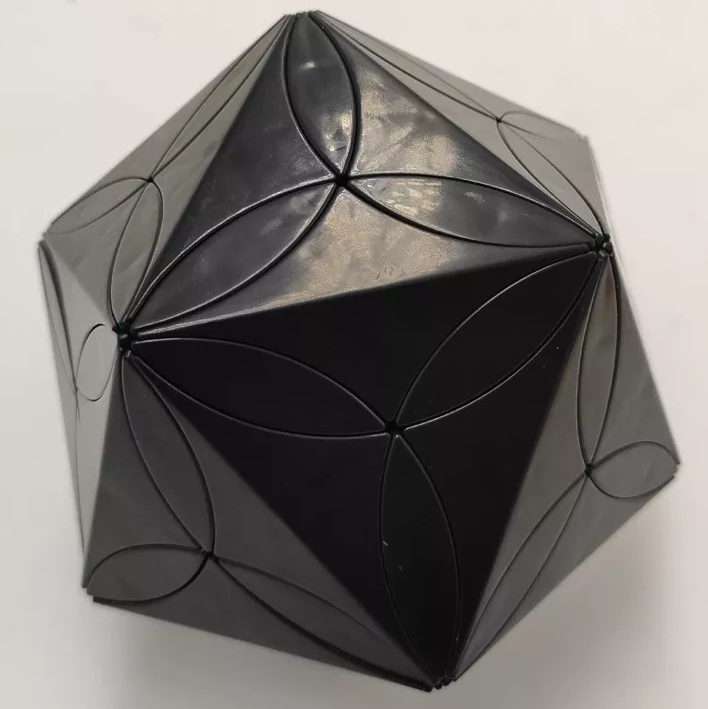
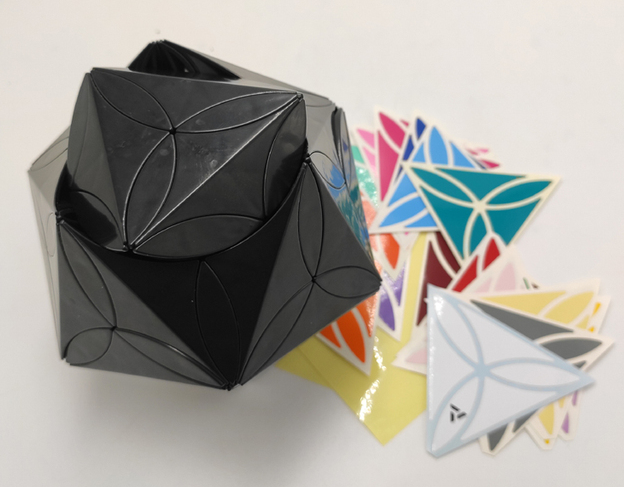
|
AJ Clover Icosahedron Black 20 colors |
| Vertex-turning Order 1 | |
|
Jason's Icosamate - GB 2.2.6 - Jason Smith


|
Jason's Icosamate
[T]
Can be built up from a mass-produced Pentultimate as demonstrated by K. Maruyama (kskmaru)
[T]
[Y]
|
|
Icosamate - Mf8 Icosahedron V4
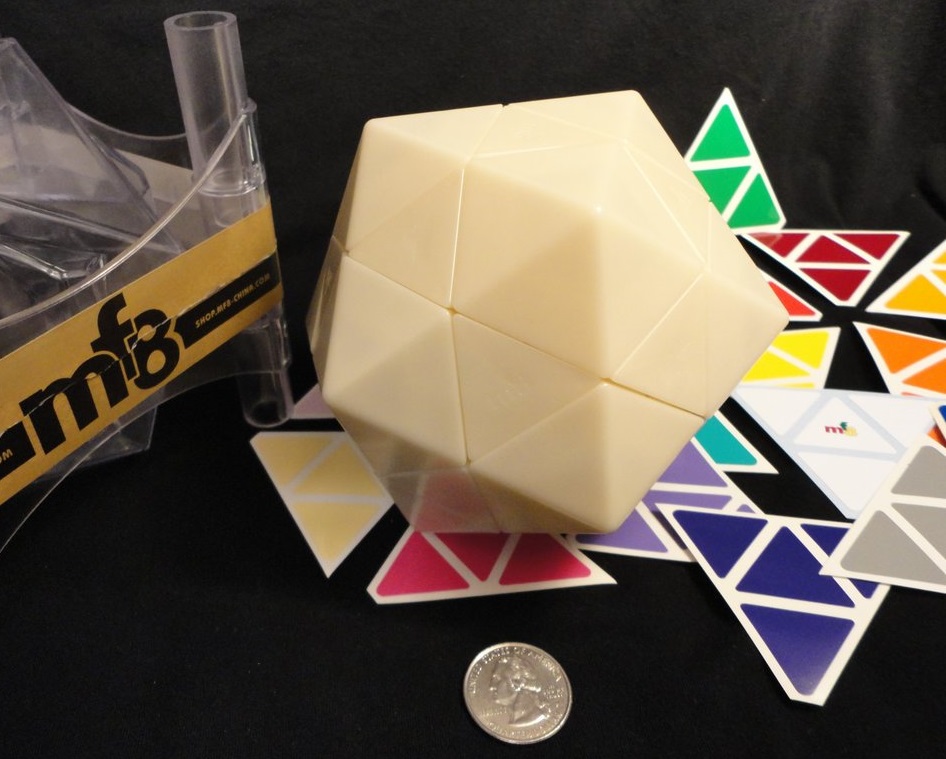
|
Icosamate - by Mf8 Also known as the Mf8 Icosahedron V4. A mass-produced version of the order-1 vertex-turning icosahedron. Originally made by Jason Smith back in 2010. This puzzle fills an important slot in my twisty zoo, so I couldn't resist, and ordered the pearl-colored limited edition rather than wait for a black version. Turning seems fine to me. I need to decide on a stickering arrangement. |
| Vertex-turning Order 2 | |
|
Master Icosamate
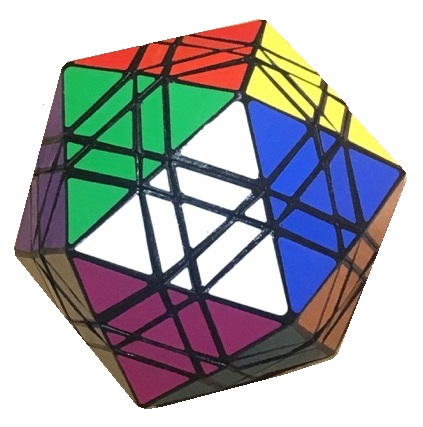
|
Master Icosamate - built up from a Master Pentultimate by K. Maruyama (kskmaru) [T] [Y] |
|
Master Icosamate - Mf8 Icosahedron V5
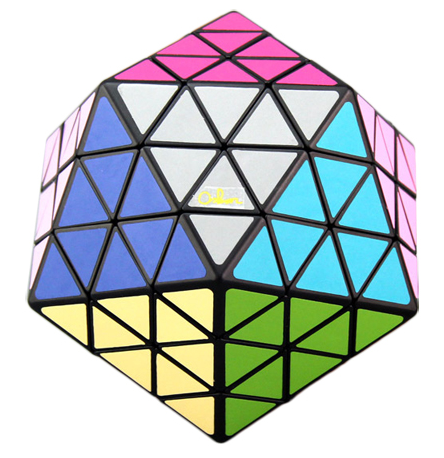
|
Master Icosamate - Mf8 Icosahedron V5 |
|
Tutt's Icosaminx - GB 2.2.1 - Lee Tutt
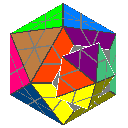
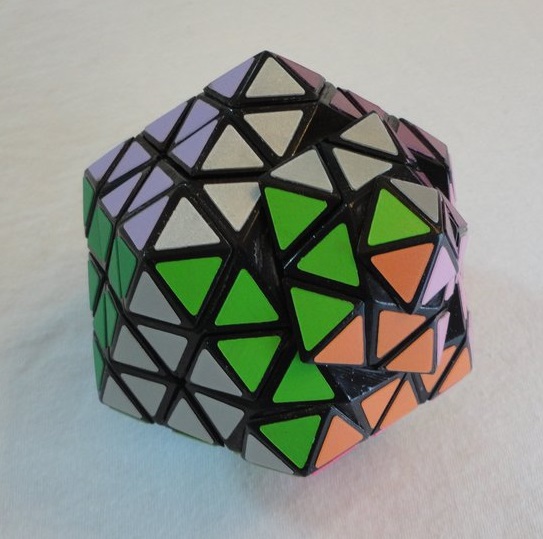
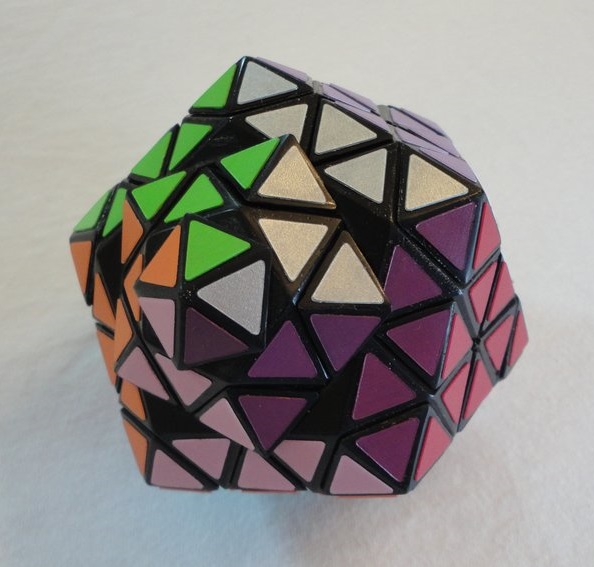
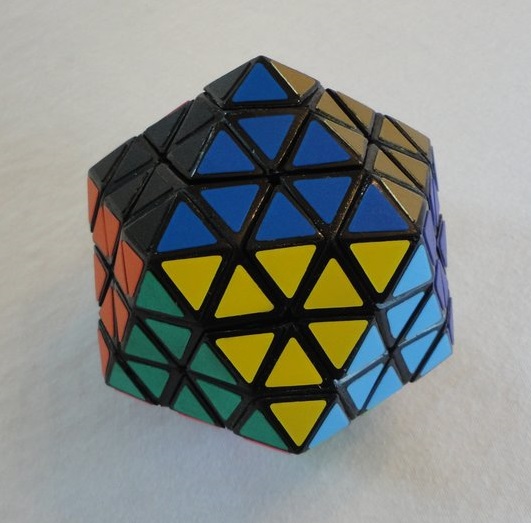
|
Tutt's Icosaminx - GB 2.2.1 - designed by Lee Tutt [T] In a trade, I obtained an instance hand-cast by Kevin Uhrik. |
|
Icosaminx - GB 2.2.2
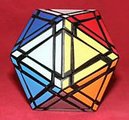
|
An Icosaminx made by Matt Davis. Originally designed by Jürgen Brandt - a Megaminx mod. [T] |
|
Astrominx - GB 2.2.3 - Eric Vergo
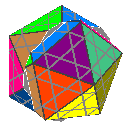

|
Astrominx - GB 2.2.3 - Eric Vergo [T] [Y] |
|
"Icosa Minx Mod" - Karl-Heinz Diekmann

|
An O2 tipless Dogic made by Karl-Heinz Diekmann [T] [Y] |
|
Kilominx to Icosahedron - Maruyama
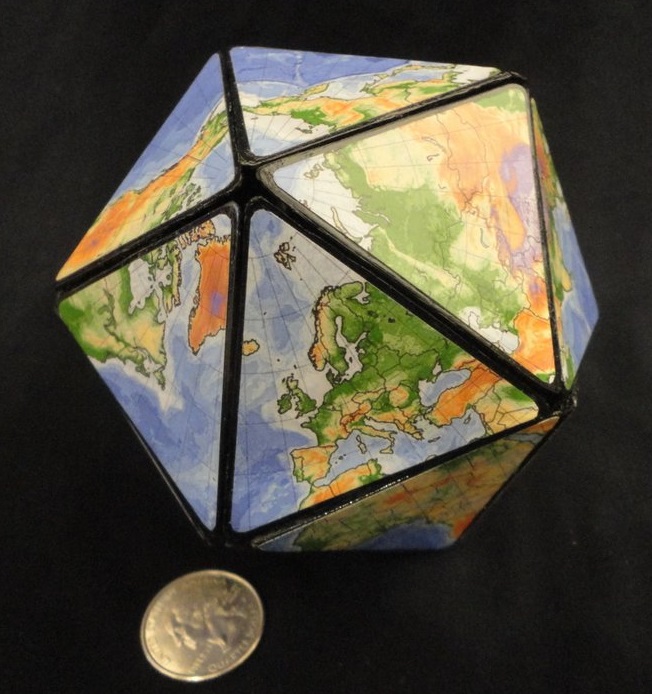

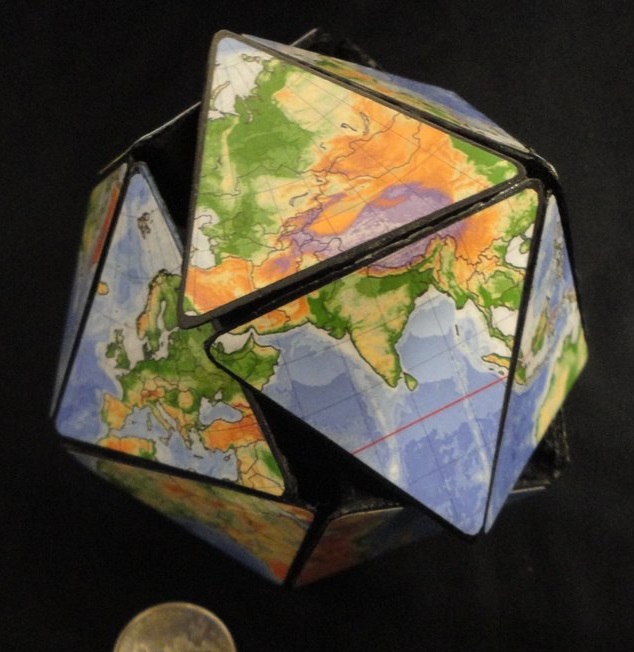
|
A Kilominx with 3D printed prosthetics, modded into an Icosahedron.
Purchased 1/2018 from "Maruyama" of Japan. [Y] [Y] |
| Vertex-turning Order 3+ | |
|
Dogic - GB 2.2.8
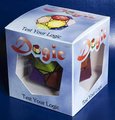

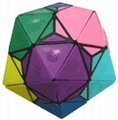
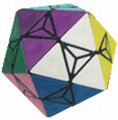

|
2.199*1082 - Zoltan and Robert Vecsei
Dogic (pronounced like "logic")
The tips are not trivial - so this is an order-4 puzzle. I have an original version (with box), Mefferts I (12 color), II (10 color), and VI (20 color). I don't have Mefferts III (5 color), IV (2 color), or V (2 color). Jaap's page |
|
Master Tutt's Icosahedron - GB 2.2.14 - Matthew Ray
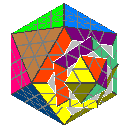

|
Master Tutt's Icosahedron - GB 2.2.14 - Matthew Ray [T] [T] |
|
Olz' DLI - GB 2.2.17 - Ola Jansson
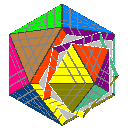

|
Olz' DLI (Dual Layer Icosahedron) - GB 2.2.17 - Ola Jansson [T] |
| Edge-turning Order 1 | |
|
GB 2.3.1 - 24 Icosahedron
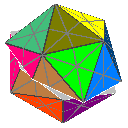
|
GB 2.3.1 - 24 Icosahedron - not yet made AFAIK. |
| Edge-turning Order 2 | |
|
Icosacopter - GB 2.3.2 - Sharon Avidor and Matthew Ray


|
Icosacopter - GB 2.3.2 - by Sharon Avidor and Matthew Ray [T] [T] [Y] |
| Related | |
|
Verypuzzle Clover Icosahedron

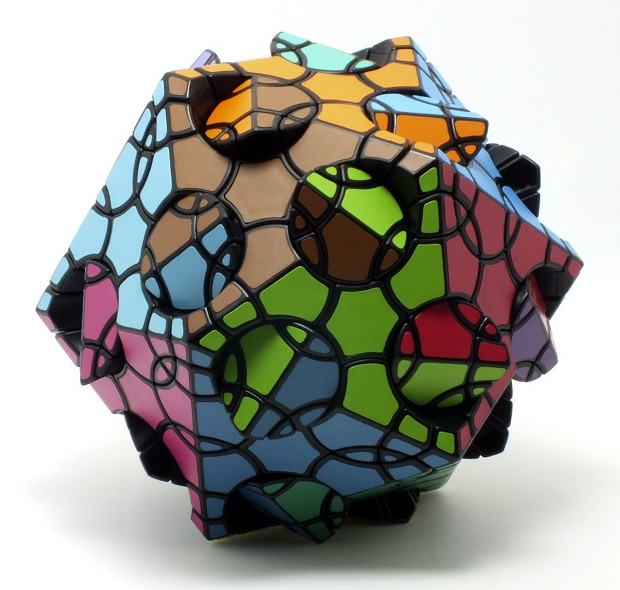
|
Clover Icosahedron - by Verypuzzle |
|
Tuttminx - Lee Tutt / Verypuzzle

|
Tuttminx - designed and prototyped by Lee Tutt in 2005
[T]
Produced by Leslie Le [T] [W] The Tuttminx is a 32-sided truncated icosahedron. |
|
Tuttminx Classic - Verypuzzle

|
Leslie Le has also produced the Tuttminx Classic. [T] www.verypuzzle.com |
|
Void Tuttminx - Verypuzzle

|
Void Tuttminx www.verypuzzle.com |
|
Superstar - Verypuzzle

|
Superstar www.verypuzzle.com |
|
Lovebird - Verypuzzle

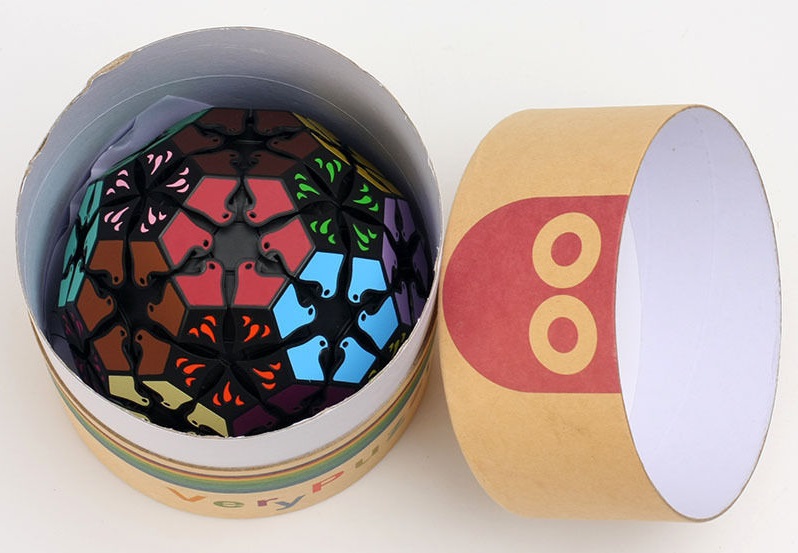
|
Lovebird www.verypuzzle.com |
|
VTI (Void Truncated Icosi-dodecahedron) - Verypuzzle

|
VTI (Void Truncated Icosi-dodecahedron) www.verypuzzle.com |
|
Mozaika
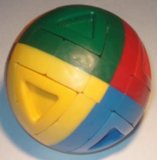
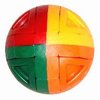

|
6.27*1049 - Rudolf Destics
Mozaika
The three interlocking equatorial bands of square tiles can be moved around the sphere.
In addition, you can rotate a group of four triangular "corner" pieces with the associated nine squares,
in increments of 90 degrees.
|
|
Impossiball
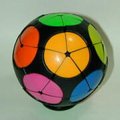

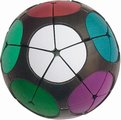
|
2.36*1025 - William O. Gustafson
Impossiball
Wolfgang Kuppers (Equal to a Megaminx with no edges and no centers.) |
|
Traiphum's Megaminx Ball

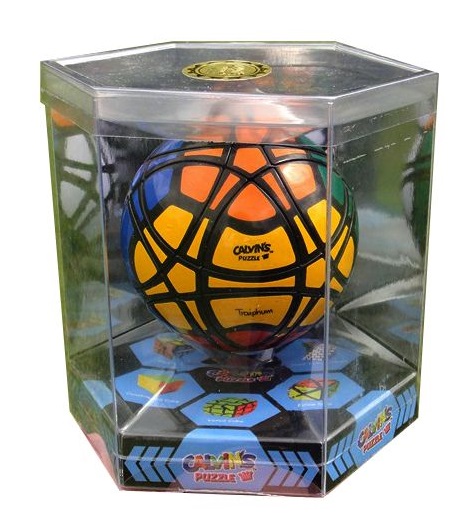
|
Produced by Calvin Fan at Hknowstore. |
|
Thomasball
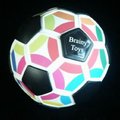

|
The Thomasball is essentially the same as the Impossiball, but with a different mechanism. |
|
Ball.B
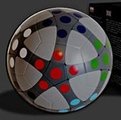
|
7.12*1040
The Ball.B - from Poland.
This shape - a spherical Megaminx (aka Ballminx) - was first explored by
Jürgen Brandt.
The version with dots is like an edges-only Megaminx, since for this version the corner orientations don't matter.
The version with flags is equal to the Megaminx but with face centers orientation visible - i.e. a "Super-Megaminx."
That has 2.5*1076 positions.
|
|
Masterball

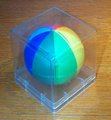




|
4.1*1020 - Dr. Geza Gyovai - patent 4856786
Masterball (Geomaster, aka Rainbow version),
Duo B&W, Dragon, Circus, Soccer
See other versions at
Les Casse-Tete de Chantal
|
|
Marusenko Sphere
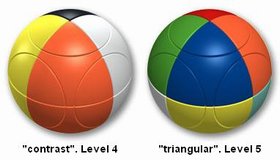
|
Marusenko Spheres |
|
Dioctipoid


|
Dioctipoid 1 and 2
www.dioctipoid.com These are face-turning octahedra in spherical form. |
|
Twistball
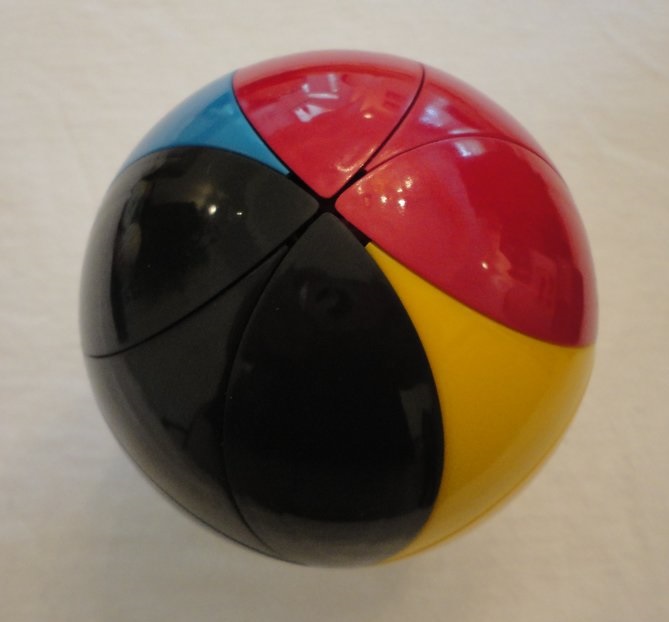
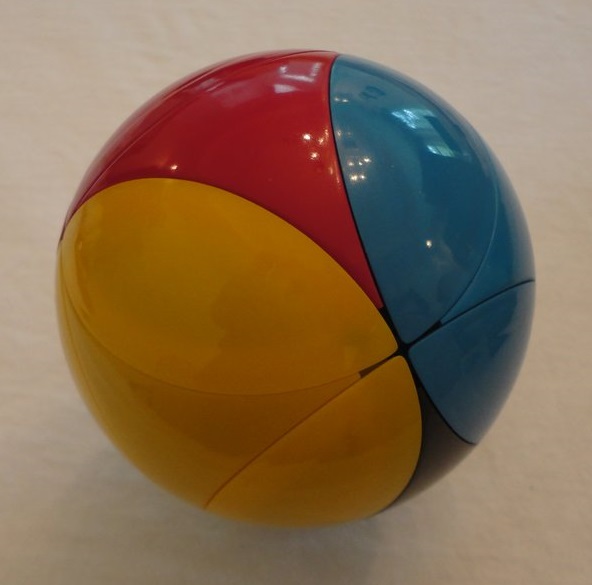
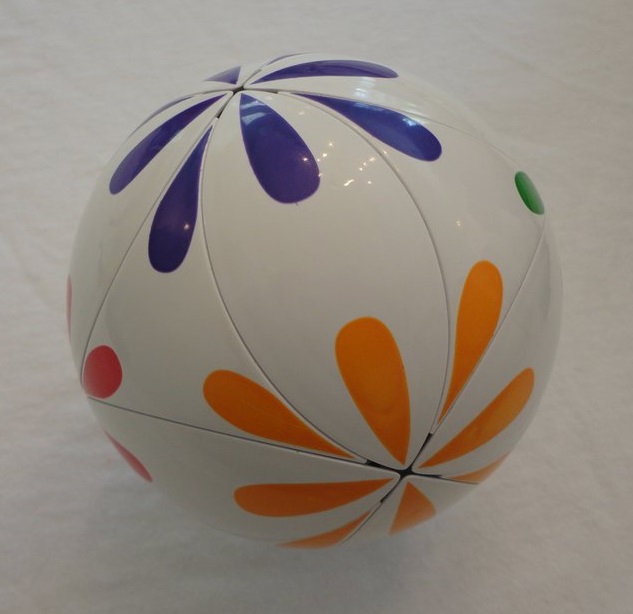
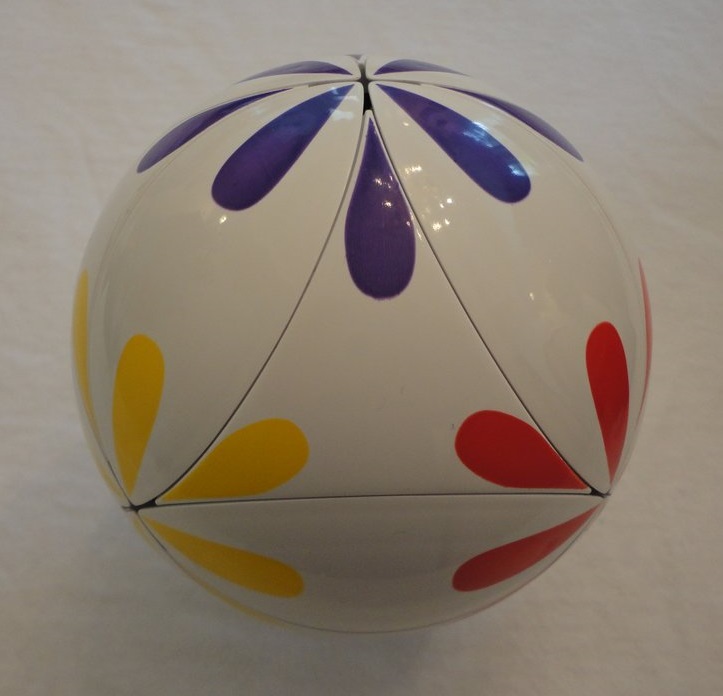
4 Color and Flower Ball versions |
Twist Ball The Twistball is a spherical Dino Cube, but where the corners are visible. It is available with many different colorings/patterns. The 4-Color version is very simple. The Flower Ball requires all pieces to be correctly placed and oriented, so is slightly more difficult. As with the Dino, both can be solved intuitively without algorithms. Geert Hellings wrote up a nice post on the Tp forums about the history of this puzzle. |
|
Intellect Ball
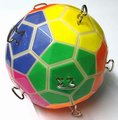

|
Intellect Ball
9 cm (handy) and 13 cm (large!) versions. |
|
3x3x3 Sphere
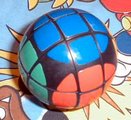
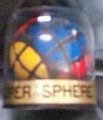
|
A standard 3x3x3 cube in spherical form. From various vendors, in various sizes. |
|
Rubik's World 3x3x3 Sphere
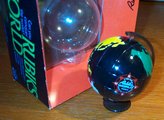
|
2.7*1021 - Erno Rubik
Rubik's World
|
|
Rubik's World 2x2x2 Sphere
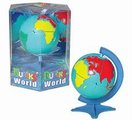
|
Rubik's World 2x2x2 Sphere |
|
Finder Ball


|
The Finder Ball was available in various colors/patterns. It is a 2x2x2 sphere. My version is a globe, in Spanish. |
|
Hungarian Zodiac Machball (2x2x2 Sphere)
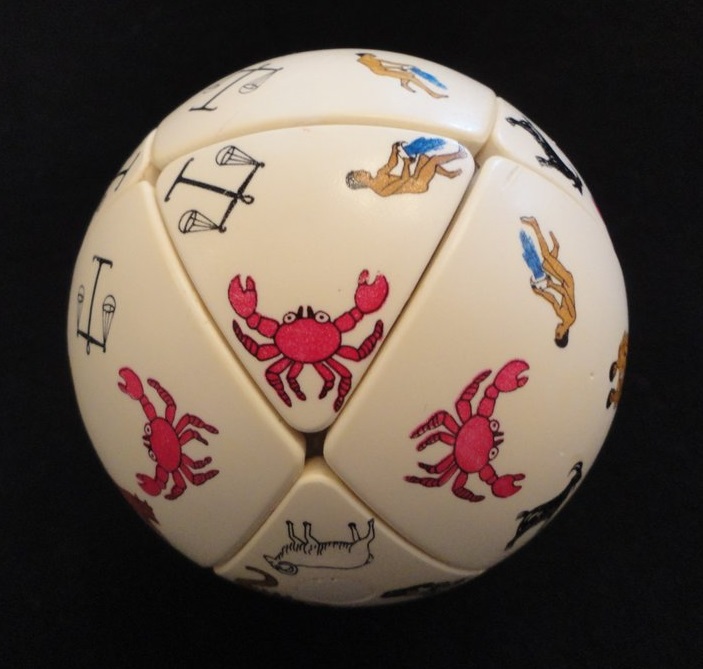

|
A vintage Hungarian Zodiac Machball. |
|
Gundam Seed Haro Ball (2x2x2 Sphere)
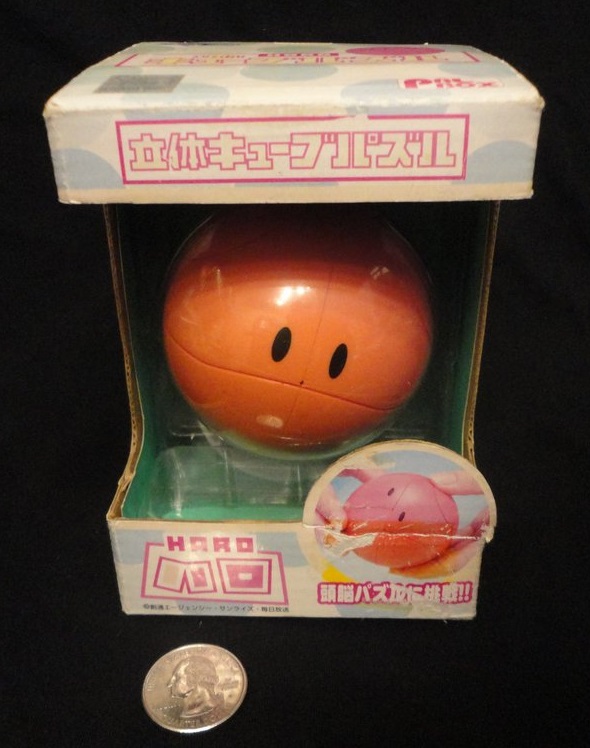
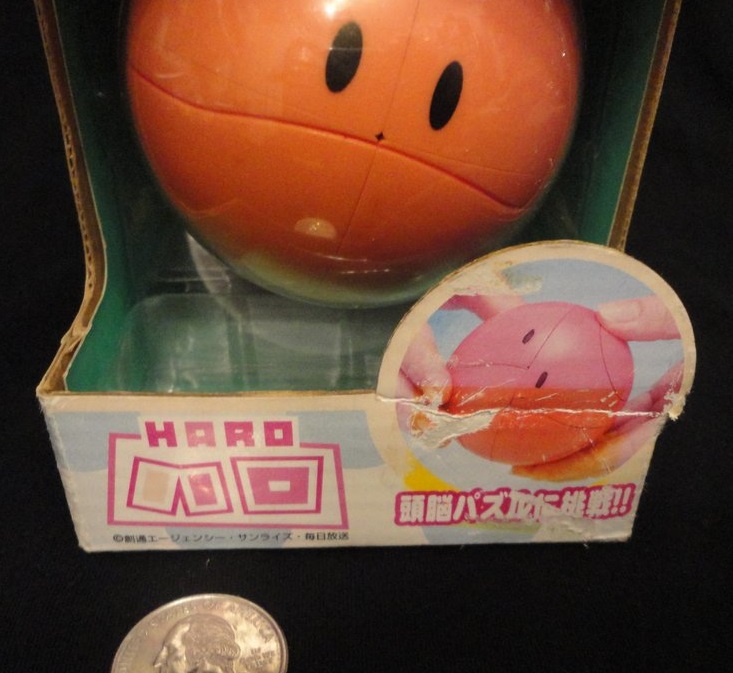
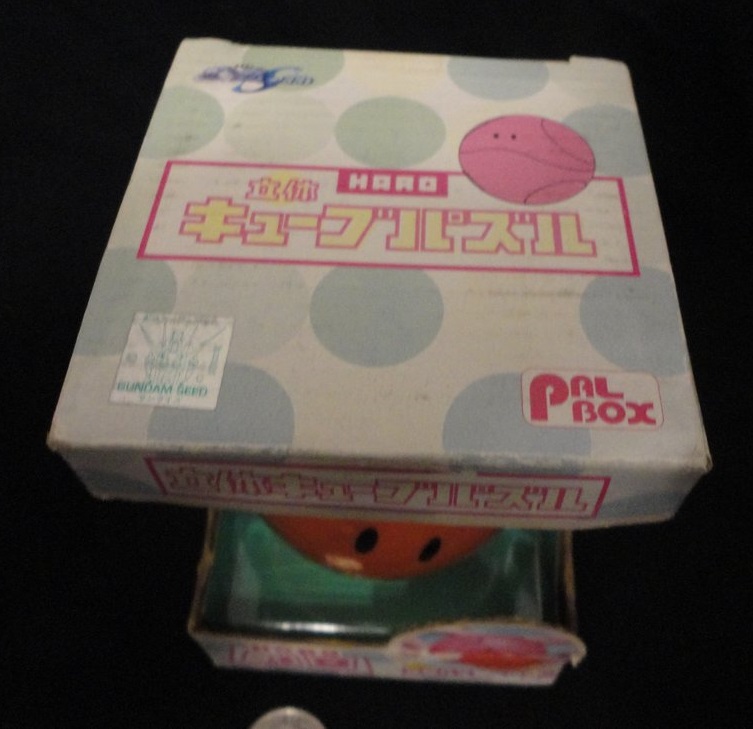
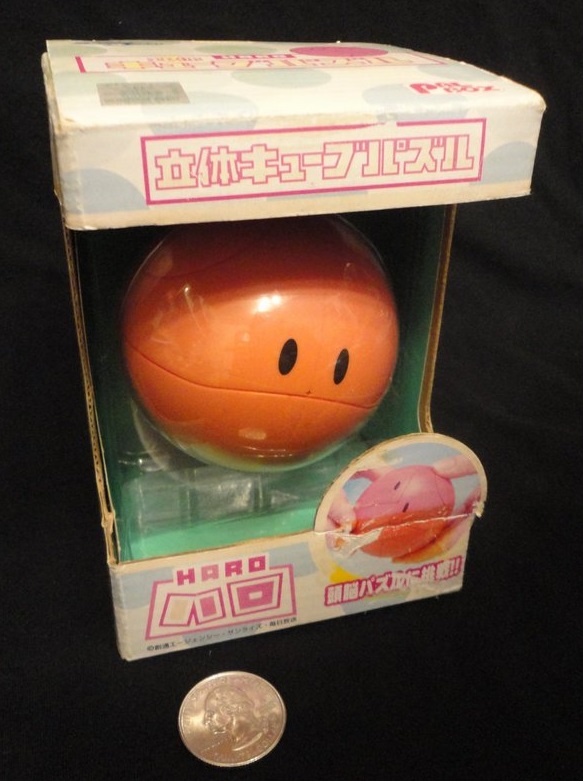
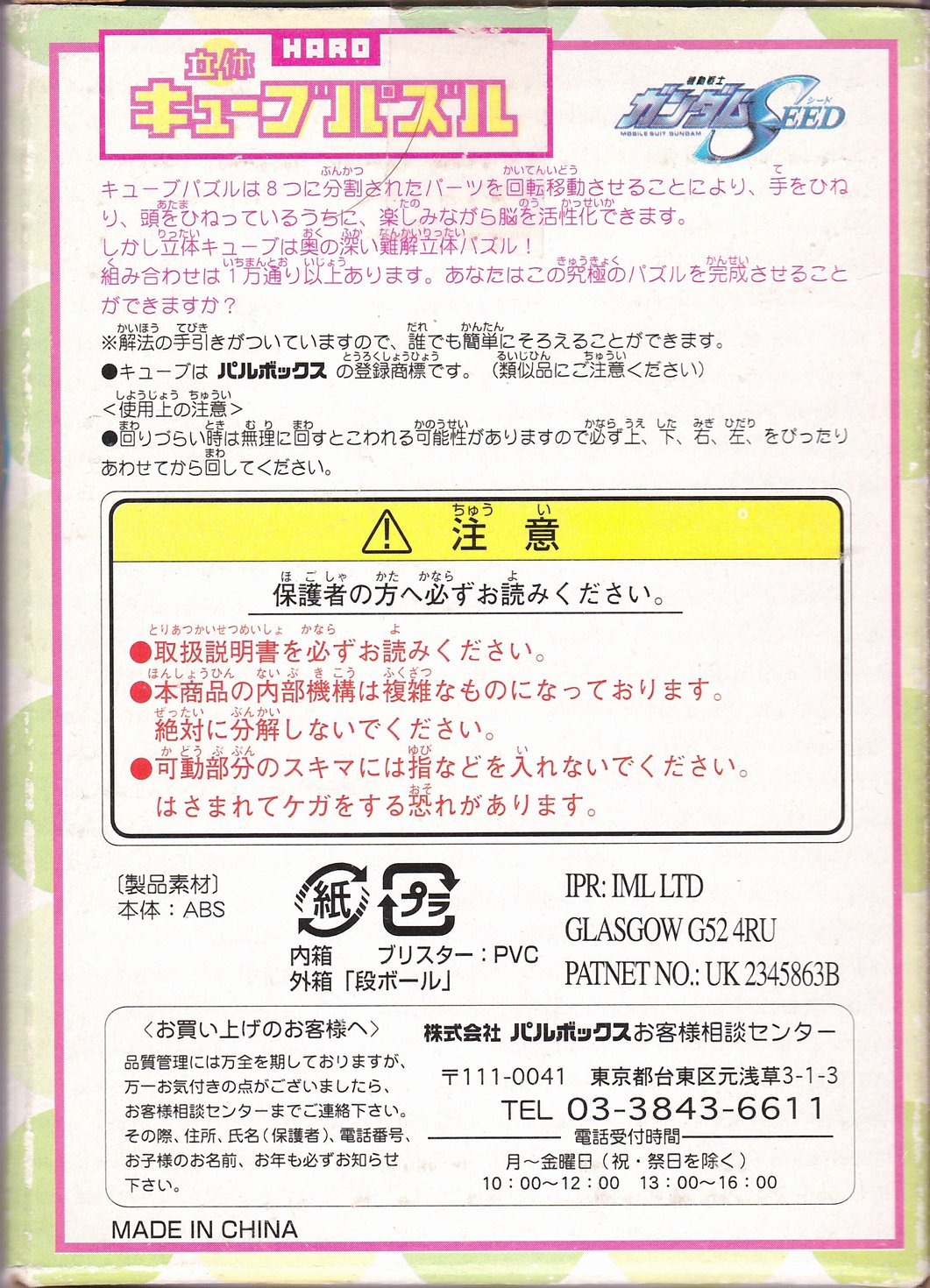
|
Gundam Seed Haro Ball - a vintage collectible 2x2x2 twisty puzzle, made in China and issued circa 2003 by PALBOX of Japan.
[T]
This is the pink version, though it looks orange on the front because of exposure to sunlight over time. |
|
D Ball

|
The D Ball was available in various colors/patterns. It is a 2x2x2 sphere. |
|
Venus Dreamball

|
The Dreamball was available in various colors/patterns. It is a 2x2x2 sphere. My copy is a Venus Ball. |
|
Quarks
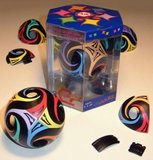
|
Quarks is from Fourier Idea, Inc.
It is a hollow 2x2x2 sphere. |
|
Magic K-Ball

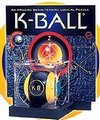
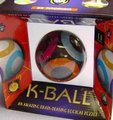
|
The K-Ball is a 2x2x2 sphere. It was offered in various colorings/patterns. |
|
Spherical Skewb
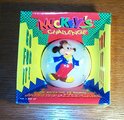

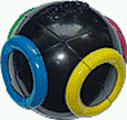

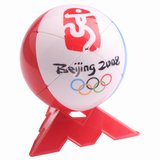
|
2160 for the 4-color
Various Skewb-core balls
including a Mefferts Beach Ball (4 color)
and a Beijing Olympics ball
|
|
Skewb Egg - Tony Fisher - Meffert

|
A white Skewb Egg from Meffert, designed by Tony Fisher. |
|
Morph Egg - Adam Cowan - Meffert

|
Morph Egg
Produced by Meffert, designed by Adam Cowan. Based on a 3x3x3, but the subtle curves make this mod surprisingly difficult to solve! |
|
2x2x2 Egg - Meffert

|
2x2x2 Egg - Metalized Blue - Meffert |
|
3x3x3 Egg - Meffert

|
3x3x3 Egg - Metalized Blue version - issued by Meffert |
|
Gear Egg
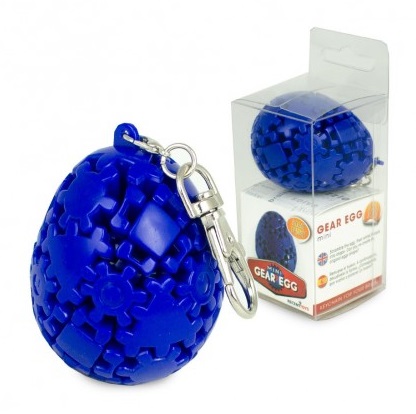
|
Keychain Gear Egg |
|
Brainbow
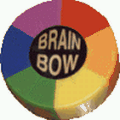
|
623,760
BrainbowJaap's page |
|
Rubik's Cheese (Sajt)
|
96
Rubik's Cheese (Sajt)
Hungarian patent, 9 November 1980, HU 2679 |
|
Kep Korong
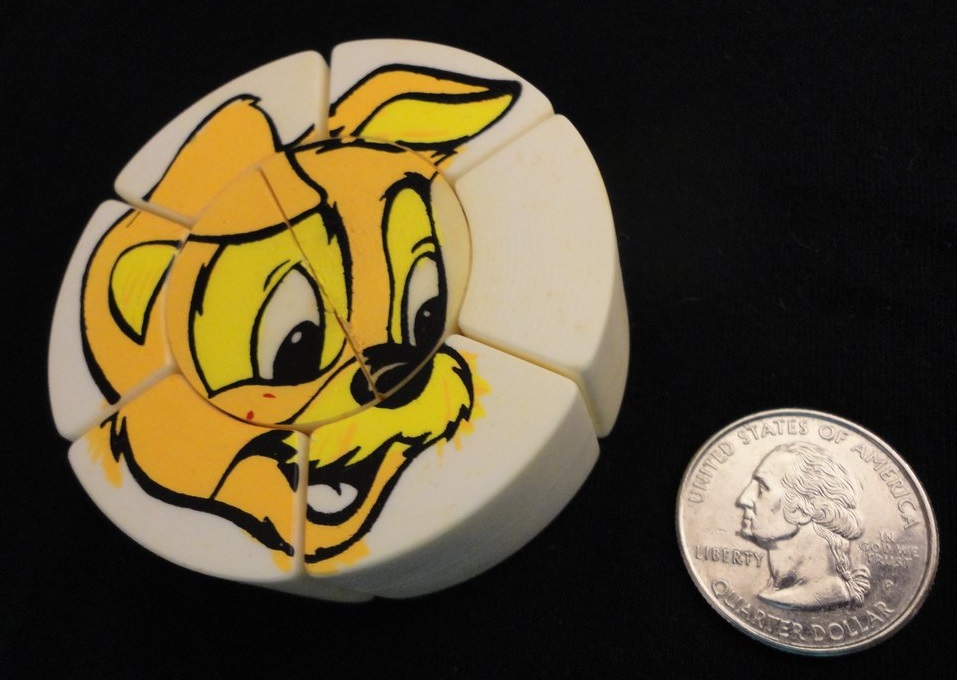
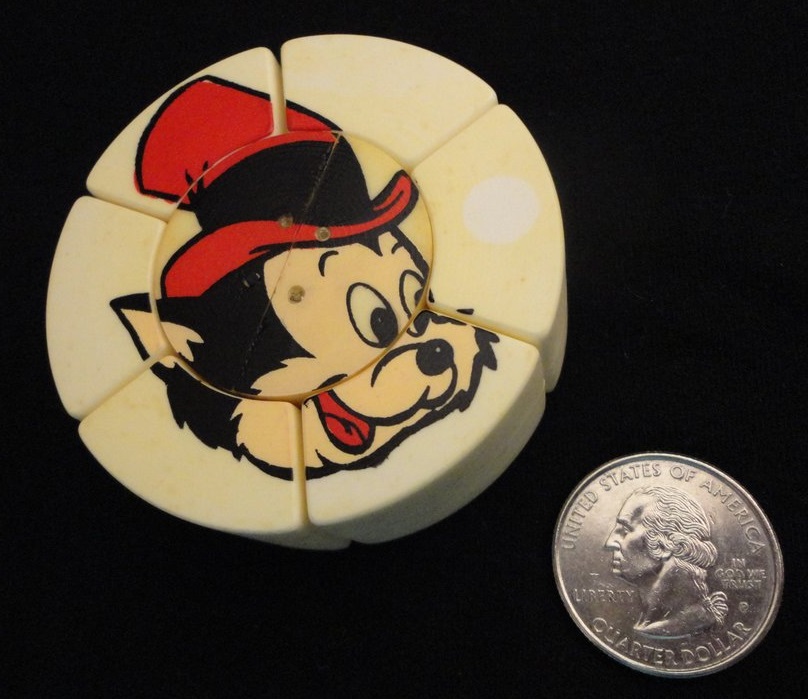
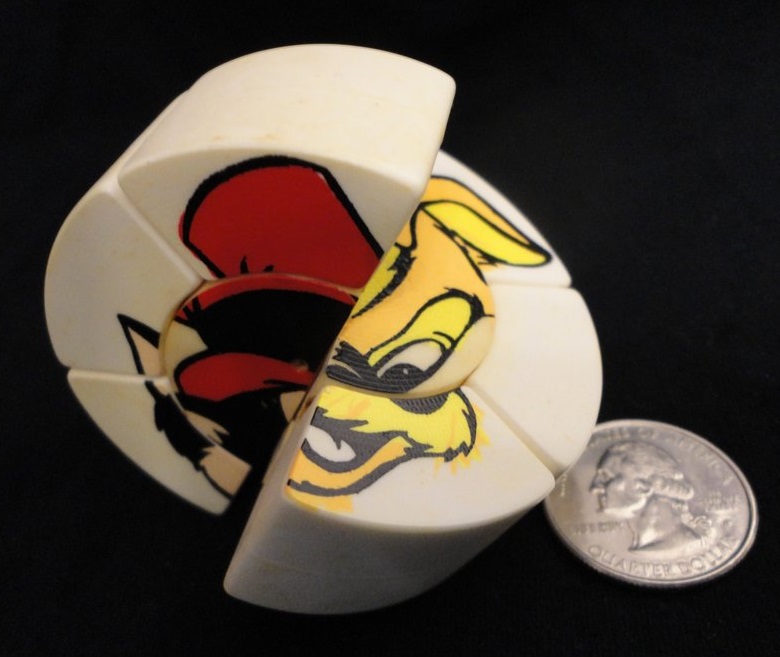
|
Kep Korong - a rare vintage twisty puzzle
invented by András Végh, a Hungarian physicist.
Patent HU 184418, filed on 01 April 1981, granted on 30 June 1987. |
|
Ayi's 3-Layer Cheese

|
Ayi's 3-Layer Cheese |
|
Canadian Barrel
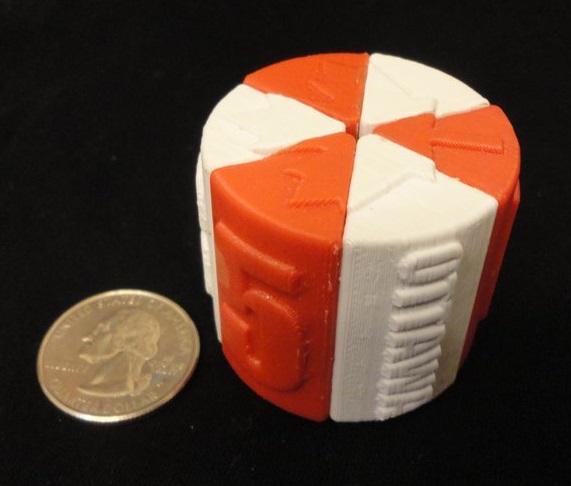
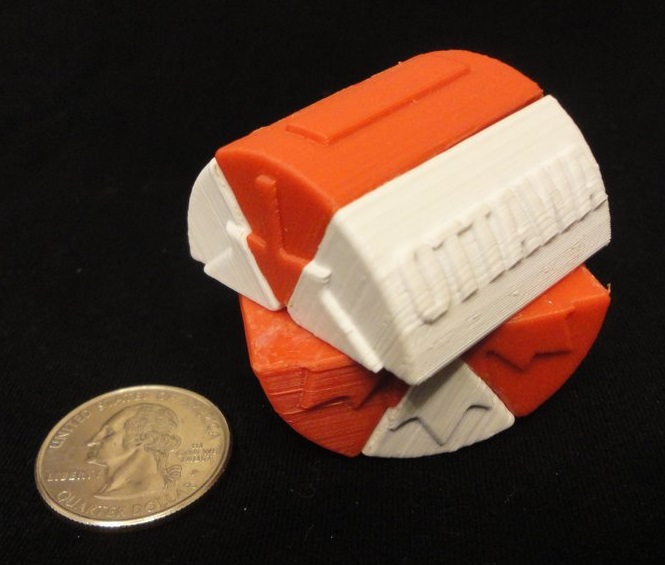
|
Canadian Barrel designed and 3D printed by Tom van der Zanden
A limited-edition Ottawa souvenir Purchased from Tom at IPP35 Works like the Cheese. |
|
Gear Ball

|
Gear Ball - designed by Oskar van Deventer, produced by Meffert |
|
Quartet
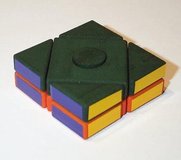
|
The Quartet from the Shapeways shop of "RubixFreakGreg" -- designed by "Lykwid" [T], the Quartet is a square version of the triangular Grimace made by Smaz. |
|
2-Layer Grimace

|
2-layer Grimace |
|
3-Layer Grimace

|
3-layer Grimace |
|
Smart Alex
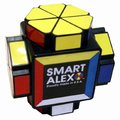
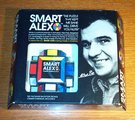
|
6*1020
Smart AlexDumitru A. Pop, patent on 26 May 1992 Jaap's page |
|
Rubik's UFO
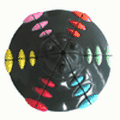

|
4*107 - Erno Rubik
Rubik's UFO
Original in gray, newer version in green. |
|
Logi-VIP
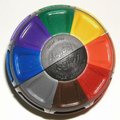
|
2.7*1025 - 1982 Logitoy AG, Austria - Hubert Petutsching
Logi-VIP
Patent WO8101638 |
|
Bulgarian Barrel
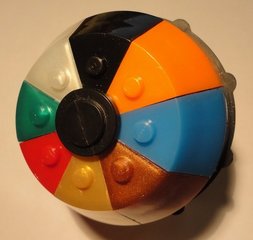
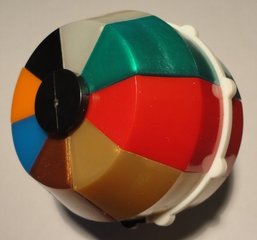
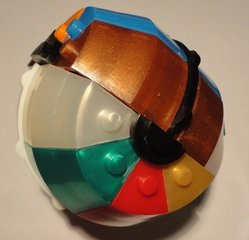
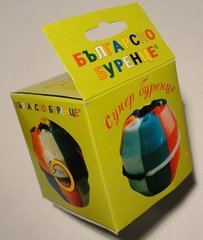
|
The Bulgarian Barrel |
|
Olidjus
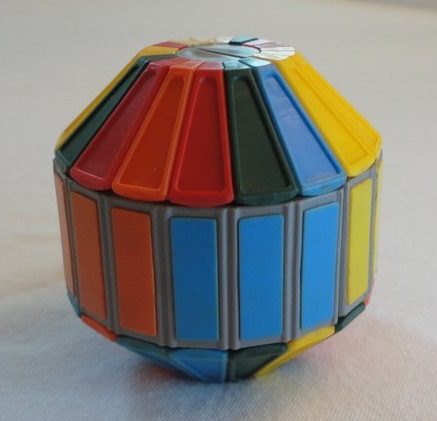
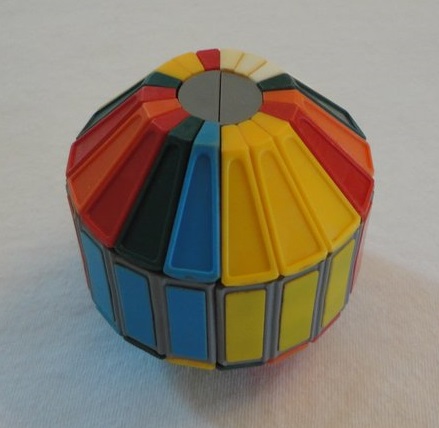
|
Olidjus - a rare vintage original twisty from Russia |
|
Square 1
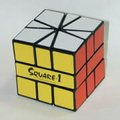
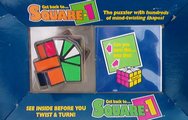
|
4.36*1011 - Dr. Vojtech Kopsky
Square 1
90 possible shapes
|
|
Square 2

|
Square 2
First designed by Dave Litwin, "Jake," and "Noda" back in 2003 [T], then mass-produced [T]. |
|
Super Square 1

|
1.19*1022
Super Square 1 (4-layer)
Produced by cube4you. Watch a video. |
|
Super Square 1 Star Mod
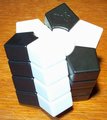
|
A Super-Square-1 Star mod - Brett made it in all white then I swapped in the black pieces.
You can find on-line [dis]assembly instructions here. |
|
Rainbow Nautilus - Selkirk - Meffert
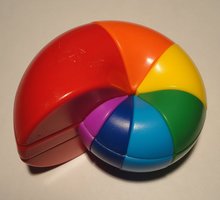
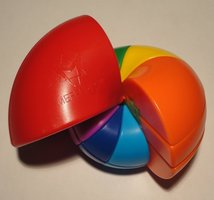
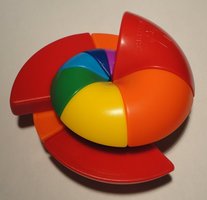
|
The Rainbow Nautilus, designed by Tim Selkirk [T] and mass-produced by Meffert. |
|
Octo Bracelet

|
3.7*1018 (?)
Octo Bracelet
|
|
Sando Ring
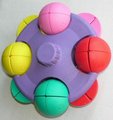

|
4.97*1014
Sando Ring
(aka King Ring) |
|
Tricky Disky
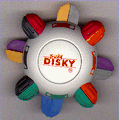 |
2.1*1013
Tricky Disky
Jaap's page |
|
Hungarian UFO
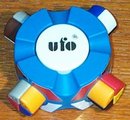 |
2.1*1013
Hungarian UFO
|
|
Brainball
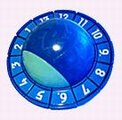
|
2*1012
BrainballAndreas Unsicker Jaap's page |
|
Sphere XYZ
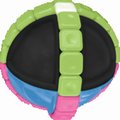
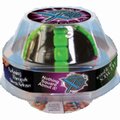
|
3.37*1011
Sphere XYZ
Offered by Lori Powers and Adam Giemek, and LA1 Products |
|
Buzzle Ball
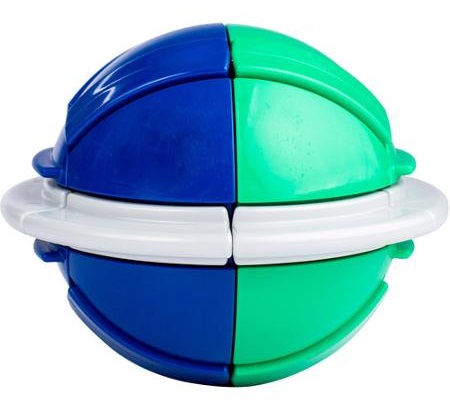
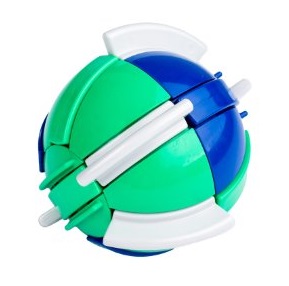
|
Buzzle Ball (mass produced) |
|
Netblock UFO

|
2.0*108 = 200,121,075
Netblock UFOWai K. Chan |
|
Gerdig UFO
|
130,040
Gerdig UFOGerhard Huncaga Jaap's page |
|
Saturn - MagNif
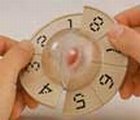 |
5040
SaturnJaap's page |
|
Clever Disk
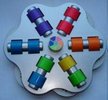 |
Clever Disk |
|
Turbo Mind Twister
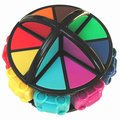
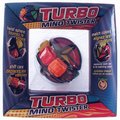
|
Turbo Mind Twister |
|
Snow Mystery
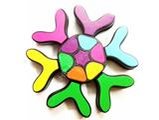
|
Snow Mystery |
|
TrueChallenge
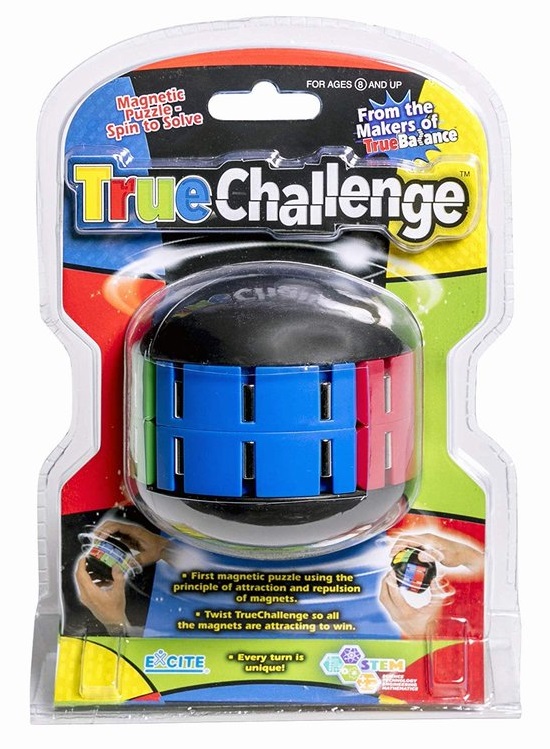
|
TrueChallenge - a dihedral puzzle where one must match the magnetic segments |
|
Roundy
The Roundy appeared in various configurations.
They included (but weren't necessarily limited to):
3-leaf 3-color (2880 states), 3-leaf 6-color (23040 states), 4-leaf 4-color (40320 states)

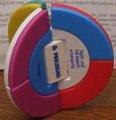
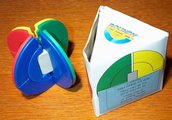
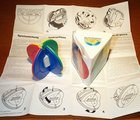 Group shot:
Group shot:
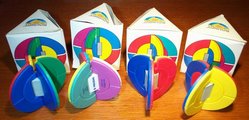
|
Roundy - Fritz Gruber 12/7/93 patent 5267731 Roundy 4-leaf 4-color version purchased at IPP28 in Prague. Jaap's page |
|
DaYan Gem II
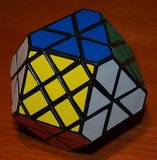
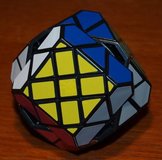
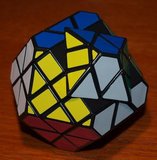
|
The DaYan Gem II is a truncated cube where faces of the cube and vertices of the cuboctahedron rotate. |
|
DaYan Gem III

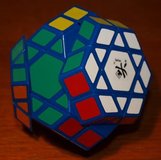
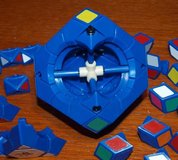
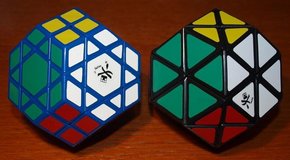
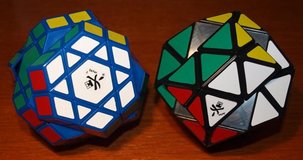
|
Here is a Limited Edition Blue DaYan Gem III.
[T]
It is a shallow-truncated octahedron where the vertices and faces turn. Independently designed by Daqing Bao, also appeared as the custom "Concept 11." [T] Shown compared to the DaYan Gem, which is a truncated edge-turning octahedron. |
|
DaYan Gem IV Deepcut

|
The DaYan Gem IV resembles the Gem III, but here the 4-fold faces (the trancated octahedron tips) do not turn. Instead, the puzzle is deep-cut. Every hexagonal face turns, but the layer below and parallel to each hexagonal face also turns. |
|
DaYan Gem V
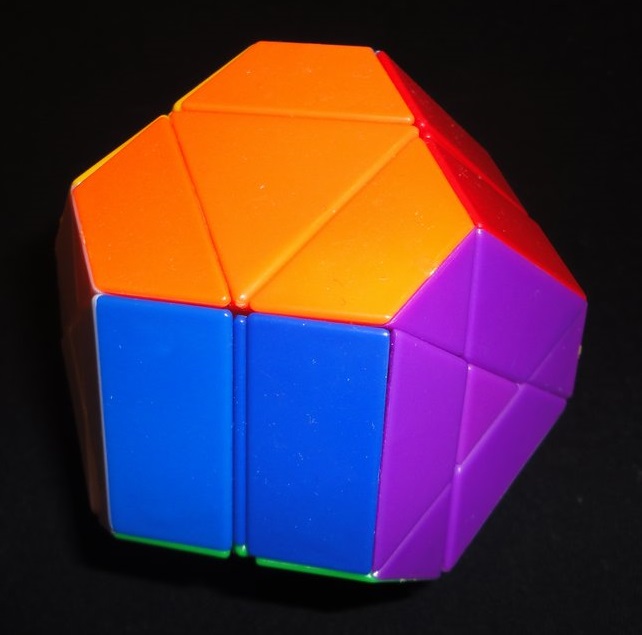
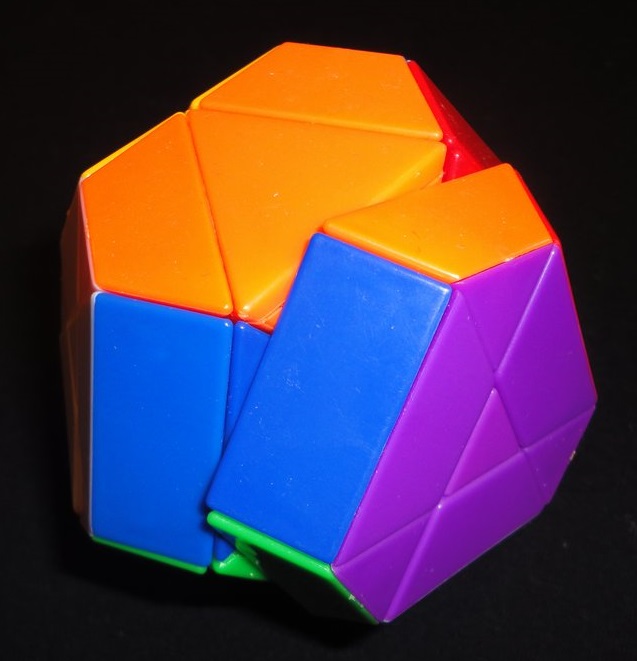
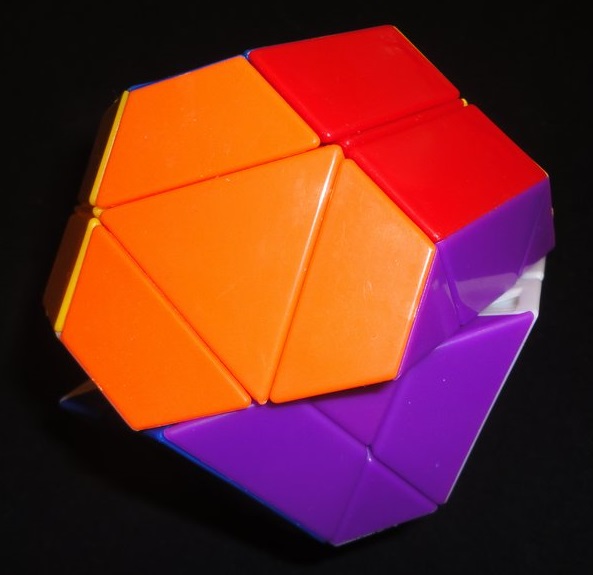
|
The DaYan Gem V. |
|
DaYan Gem VI

|
The DaYan Gem VI. |
|
DaYan Gem VII

|
The DaYan Gem VII. |
|
DaYan Gem VIII

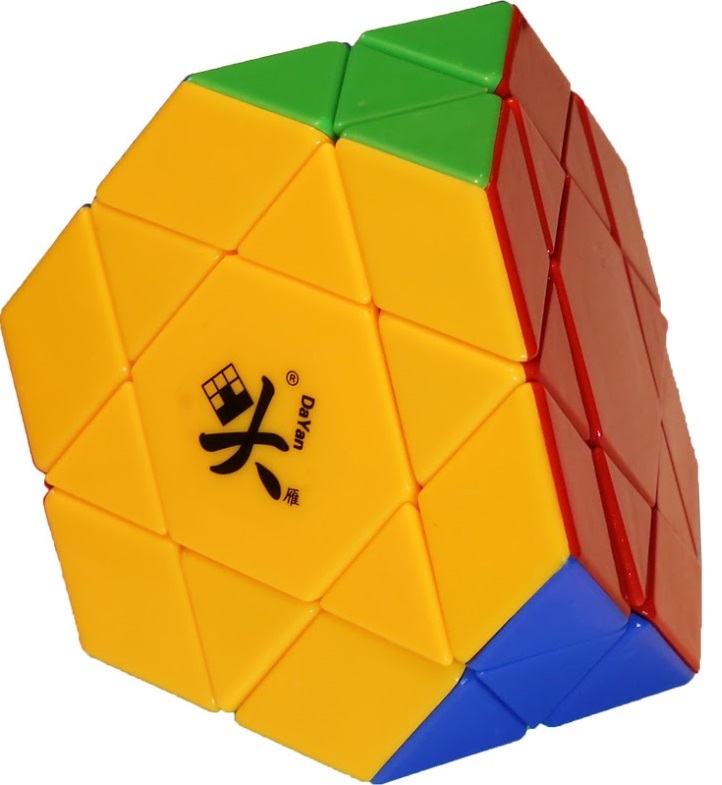
|
The DaYan Gem VIII. |
|
Floppy 2x3x3 - Oskar van Deventer
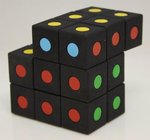
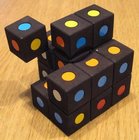
|
I took advantage of a special offer at Shapeways for a dyed, assembled, and stickered Floppy 2x3x3 designed by Oskar van Deventer. |
|
More Madness - Oskar van Deventer
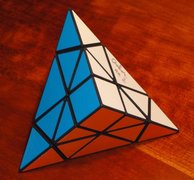
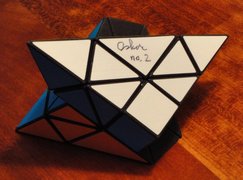

|
Prolific puzzle designer Oskar van Deventer [S] attended IPP 31 in Berlin, and I purchased his More Madness, which he was kind enough to sign for me. No-one has yet devised a comprehensive solution strategy for this puzzle. More Madness was announced and discussed on the TwistyPuzzles forum. It is based on the geometry of the triangular di-pyramid. Initially, each of the triangular faces turns. This puzzle has "overhang bandaging" - occasionally a piece juts out such that it blocks a twist that would otherwise be OK. Every move jumbles. |
|
Treasure Chest Cube - Oskar van Deventer - Mefferts
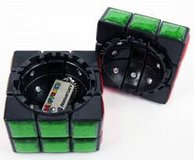
|
I received a black Treasure Chest cube from Mefferts.
This hollow, opening cube was designed by Oskar van Deventer - he called it the Gift Cube. [T] |
|
DaYan Pentahedron 3x3

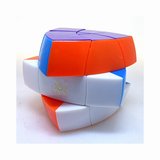
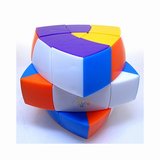
|
DaYan Pentahedron 3x3
I have the "special" standard 3-layer (non-circle/crazy) version. Also available: special standard 5-layer, special super 5-layer, and a set of eight different crazy/circle versions named after planets: Mercury, Venus, Earth, Mars, Jupiter, Saturn, Uranus, Neptune. |
|
Child's Play - Eric Vergo
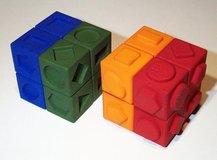
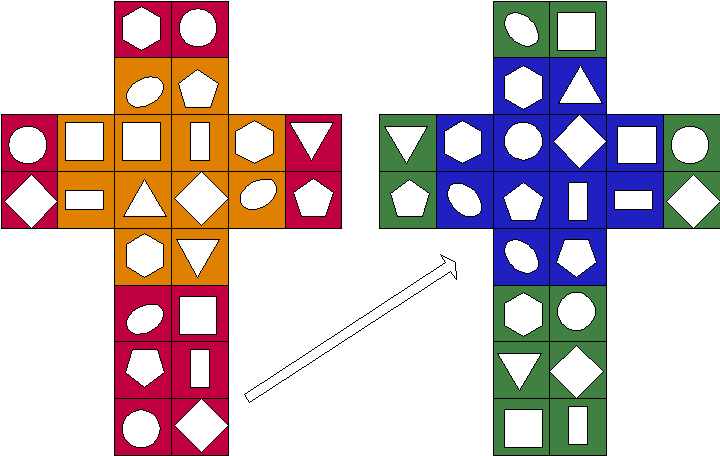
|
Child's Play by Eric Vergo [T] [S] [Y] This is Eric's first copy! Two 2x2x2 cubes with shapes on each face reminiscent of the shapes in a child's shape sorter puzzle/toy - hence the name. One cube has the shapes embossed into the facelets, the other has raised shapes. The objective is to solve both cubes such that every face on the cube with raised shapes can be fit into a corresponding face on the cube with embossed shapes. Difficult, especially if you don't know what the shape arrangements are supposed to be! The colored layers aren't necessary, but have been added to simplify the challenge somewhat. |
|
Mini Mixup Cube - Mike Armbrust
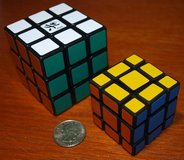
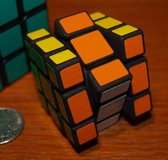
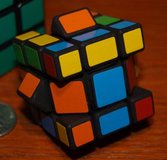
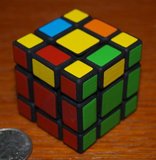
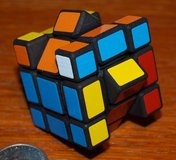
|
A Mini Mixup Cube by "PuzzleMaster6262" (Mike Armbrust) [T] [S] (also see a version by Oskar van Deventer [S] ) The idea of a 3x3x3 cube which is able to interchange edges and centers via 45 degree turns of its middle slices seems to have originated with Sergey Makarov back in 1984. [T] |
|
Mixup Cube
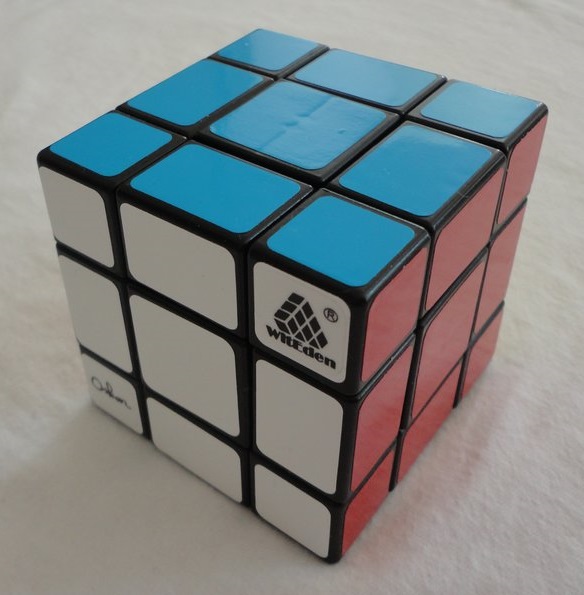

|
The Mixup Cube, designed by Oskar and mass-produced by WitEden. |
|
Octo-Star Cube - David Pitcher

|
The Octo-Star Cube, designed by David Pitcher and mass-produced by Calvin Fan.
It has been described as an unbandaged Bermuda Cube. |
|
X Cube
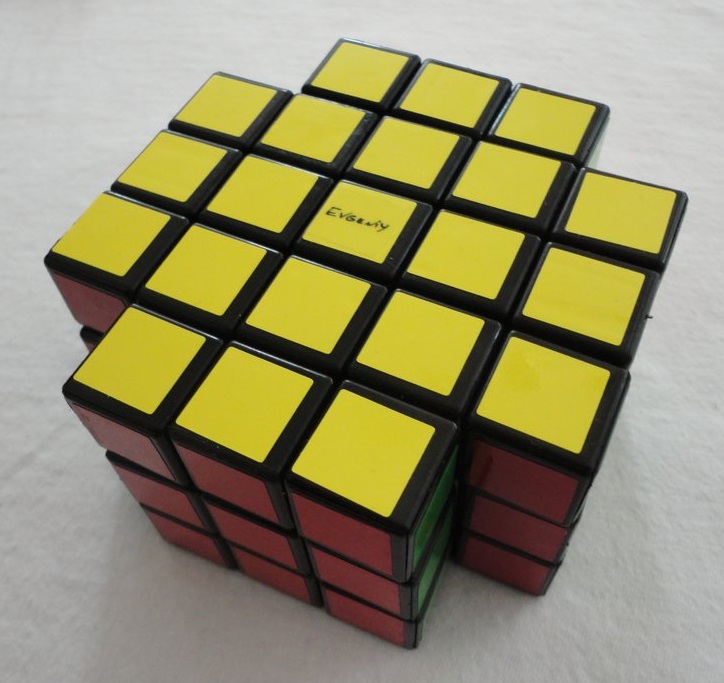
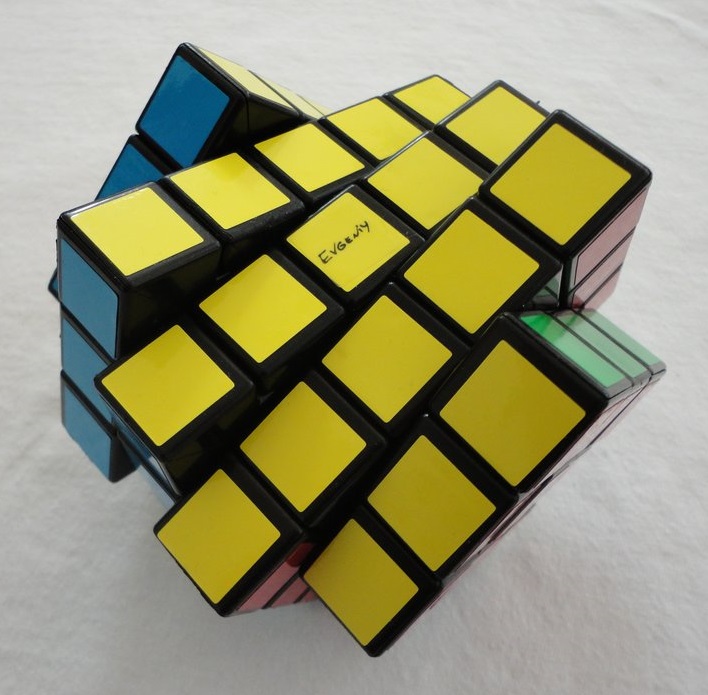
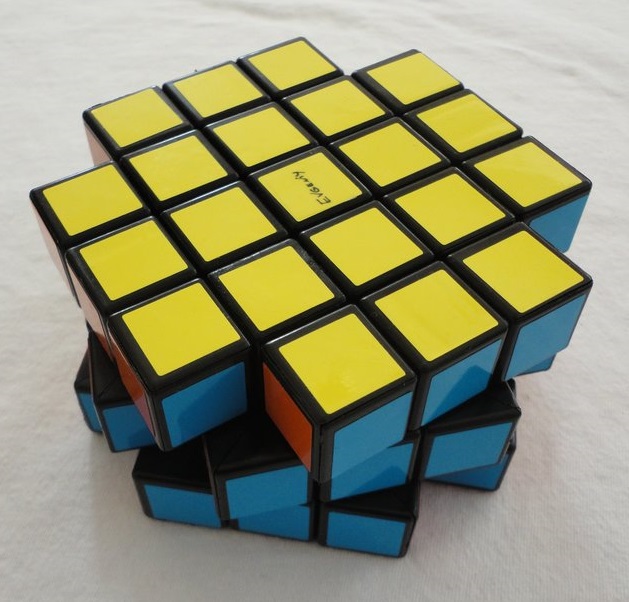
|
The X-Cube from Calvin's Puzzles. |
|
Cross Cube

|
The Cross Cube from Calvin's Puzzles. |
|
Time Machine - Smaz
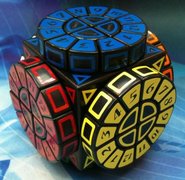
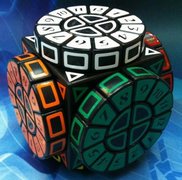
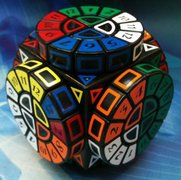
|
The Time Machine - a beautiful twisty puzzle designed, made, and stickered by Smaz.
[T]
[T]
[T]
A 2x2x2 where each face has a "dial" of 12 movable segments. Similar to the Square-1 Cross Cube. [T] |
|
Wheel of Wisdom

|
The Wheel of Wisdom by DaYan |
|
Wheel of Time

|
Moyu Wheel of Time black
A nice shapemod of a Cross Cube. |
|
Moyu Fisher Yileng Time Wheel stickerless
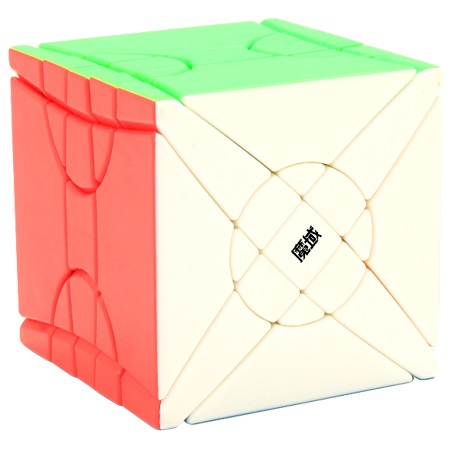
|
Moyu Fisher Yileng Time Wheel stickerless |
|
Wormhole I Cube - WitEden

|
A Wormhole I Cube by WitEden Several other variants are available. |
|
ShengShou Cubes

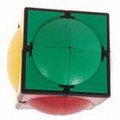
|
A set of ShengShou Cubes, and the "Circle Ball Cube" |
|
Dual Rings
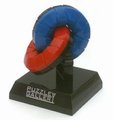
|
Dual Rings, designed by Oskar van Deventer and Bram Cohen,
manufactured by Hanayama. |
|
Hog Wild Double Disk
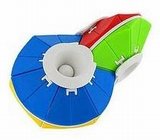

|
Double Disk from Hog Wild LLC of Portland OR |
|
Hog Wild Double Think Binary Ring Puzzle
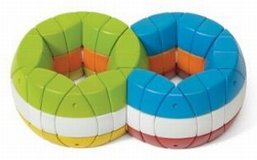
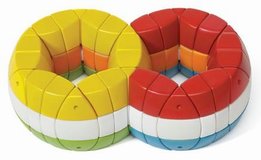

|
The Double Think Binary Ring Puzzle from
Hog Wild LLC of Portland OR
Three layers - in the top and bottom layers, the pairs of interlinked rings turn independently, allowing segments to be mixed between them.
In addition, each ring has twelve segments that can be flipped to mix between the layers - such a move also exchanges inside and outside segments from the middle layer. The segments flip smoothly but it is somewhat difficult to rotate the rings. |
|
Q-Borg
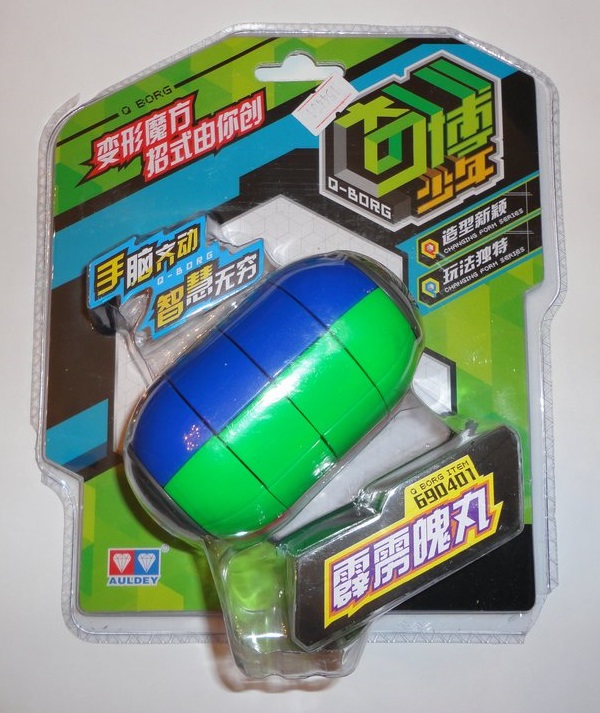
|
Q-Borg - by Auldey |
|
Bubbloid 4x4x5

|
Bubbloid 4x4x5 - designed by Carl Hoff.
Carl Hoff has created a vertex-turning cuboid he calls the Bubbloid, based on some ideas by Anthony Villaveiran (boublez).
[T]
[T]
Produced by Calvin's Puzzles I got a limited edition blue. |
|
Bubbloid 4x5x5

|
Bubbloid 4x5x5 - designed by Carl Hoff,
produced by Calvin's Puzzles I got a limited edition blue. |
|
Clover Cube

|
Clover Cube - Verypuzzle
Solutions available on YouTube - e.g. [Y], and [Y1], [Y2], [Y3] |
|
Pentacle Cube
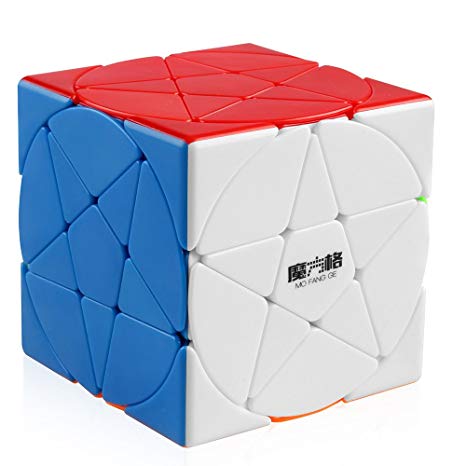
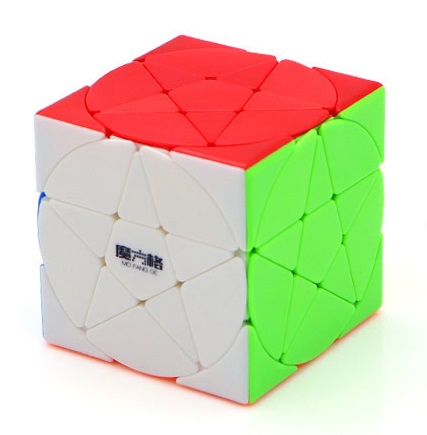
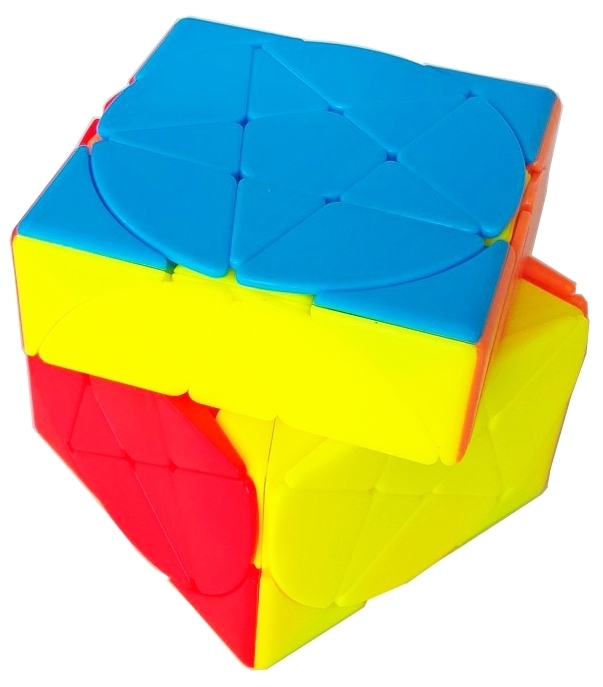
|
Pentacle Cube - QiYi - Yukang Wu. |
|
Bagua Cube

|
Bagua Cube - DaYan |
|
Coin Cube



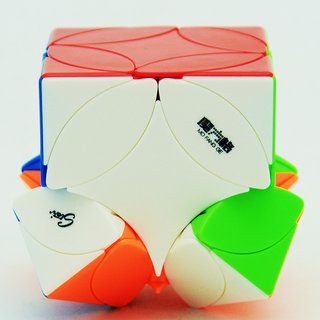
|
Coin Cube - QiYi
Also known as the "Copper Coin" or "Ancient Coin" cube. I got the stickerless version. Each face can rotate in place, moving its four oval-shaped pieces. Aligning the ovals properly at each corner will allow vertex twists, which move the three oval pieces surrounding the corner. An easy-to-solve puzzle that does not require algorithms. At a puzzle gathering, several non-twisty puzzlers were able to solve this cube intuitively. |
|
Evil Seed
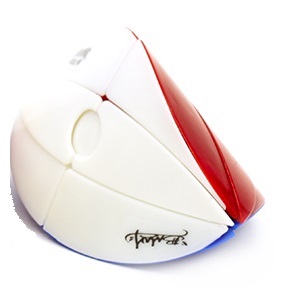
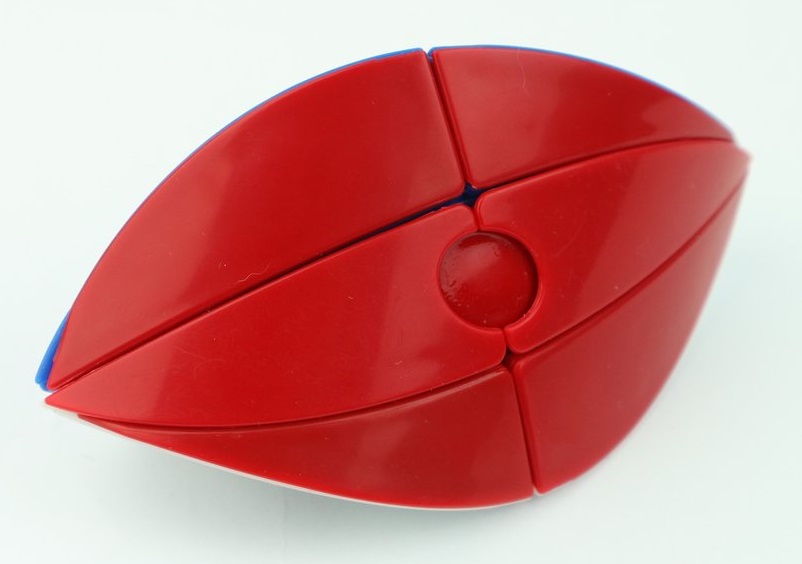
|
Evil Seed - designed by Vladi Delimollov - mass-produced by Calvin's Puzzles |
|
Slim Gigaminx
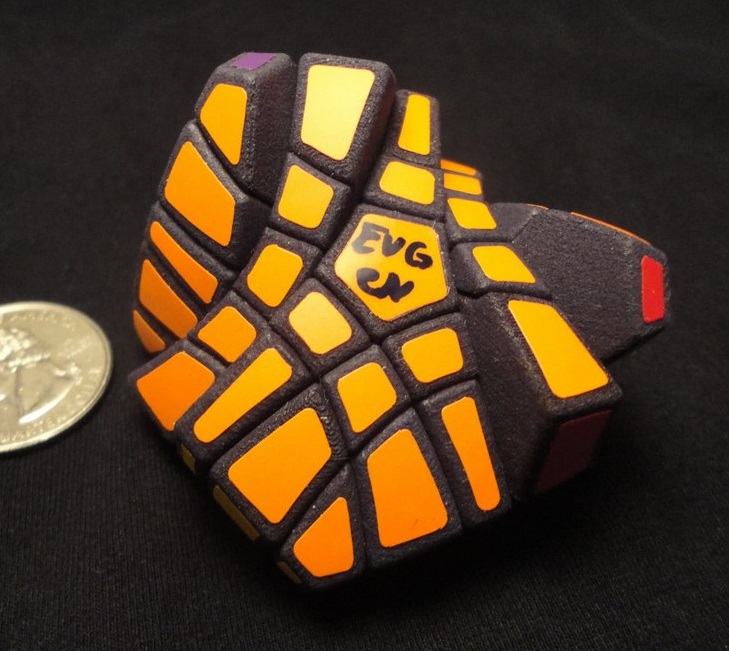
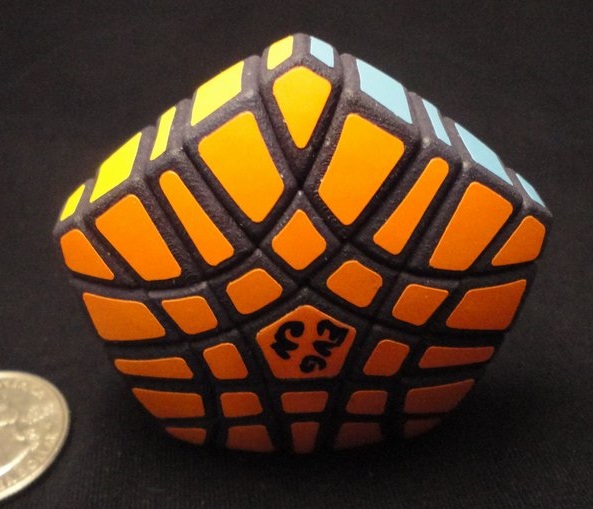
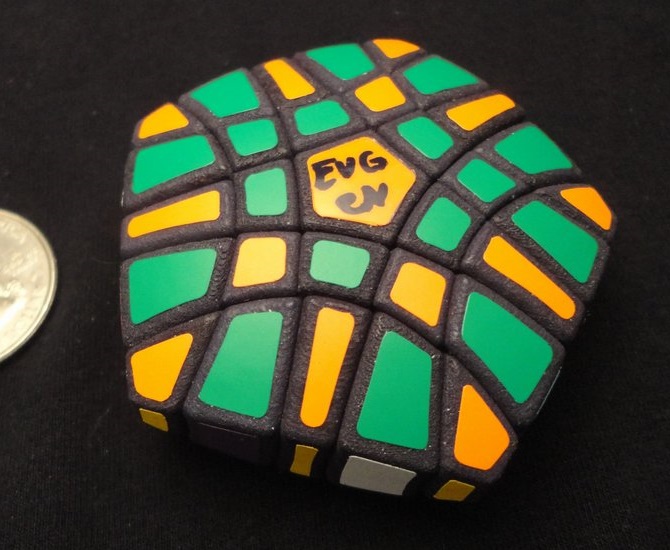
|
Slim Gigaminx - Evgeniy Grigoriev |
|
CaTSuP
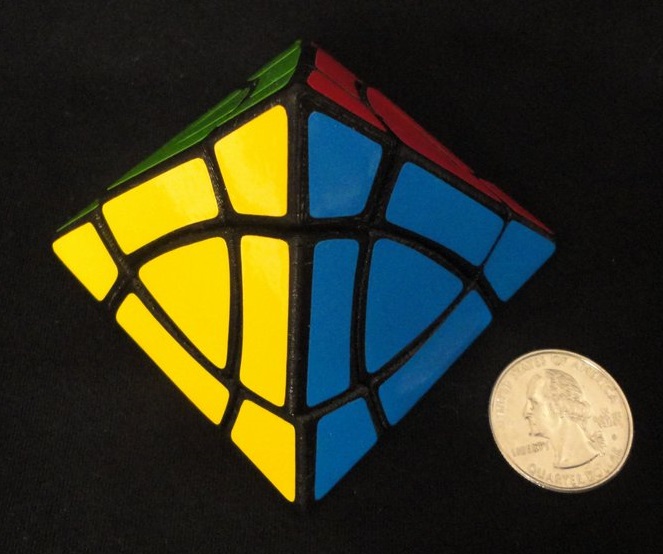
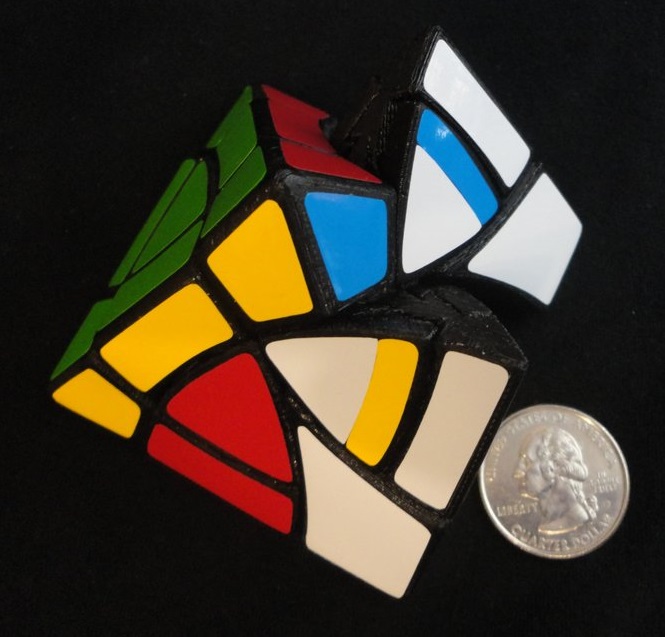
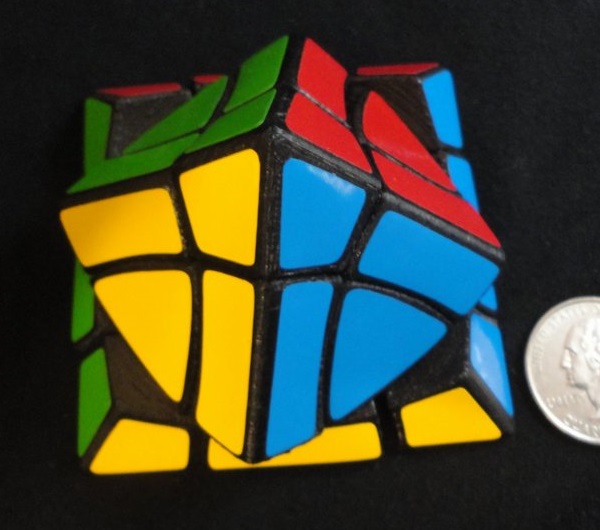
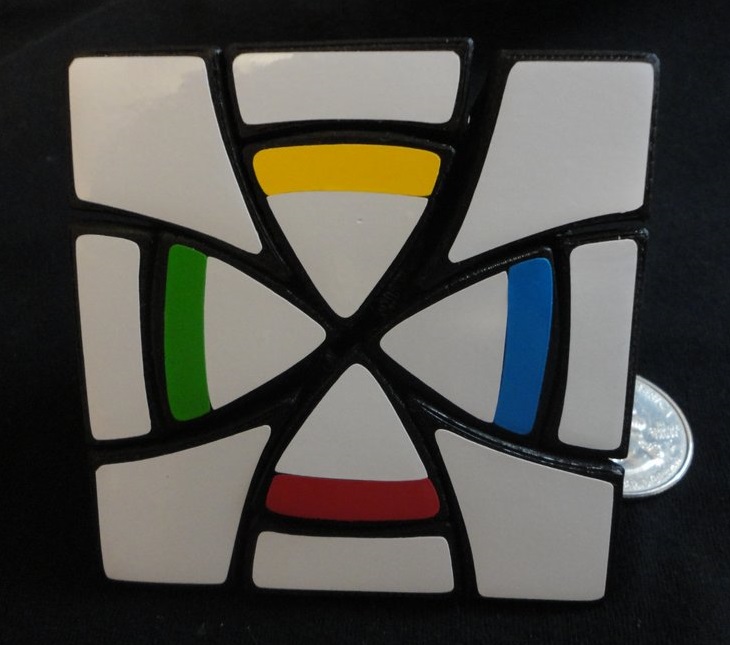
|
CaTSuP (Corner-Turning Square Pyramid - designed by Braden
[T], 3D printed by Jason Gavril
(Chewie)
A Corner-Turning Square Pyramid Konrad posted solving tips on the TP Forums. |

 The Planets puzzle consists of four spheres arranged in a tetrahedron within a frame. The spheres have various craters in them and are contrived to interlock so as to only permit certain rotations depending on where the craters are at any moment. Rotate the spheres so that each side of the tetrahedron is a uniform color. |
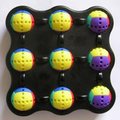
 Cmetrick is from eLogIQ. There are 6.9*109 possible positions. Jaap's page eLogIQ has also released the Cmetrick Mini. |
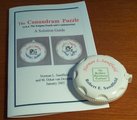

I got an Enigma from Norman Sandfield at the 2005 NYPP. He said the reason they've been so hard to find is that the firm that makes them only sells them in bulk for advertising promos. However, recently I've seen a color version for sale at the Puzzle-Shop. I found a second version, a promo for the University of Connecticut Health Center, on auction. [Jaap's Enigma page] |
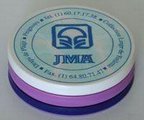 This is a variant of the Enigma, a French puzzle called "Combinescion." |
 This is the Spectra, by Eng's I.Q. Co. Ltd. 1987. 3072 positions. Jaap's page |
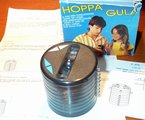 Hoppa Gula |
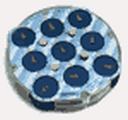 Rubik's Clock |
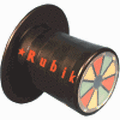 Rubik's Rabbits |
 Rubik's Pen by Ideal from 1982. |
|
I found this puzzle, called "Boomdas" ブームダス, many years ago but I cannot recall the circumstances. I used to travel to Tokyo on business in the 1980's and found many interesting puzzles in Japanese department stores, but I may have acquired it in a private transaction with another long-time collector.
The key feature of the puzzle is that it implements a sliding piece puzzle but doesn't need a tray - the pieces interlock along their edges and can slide relative to each other while remaining attached. Boomdas is a two-dimensional/planar example; the concept has appeared in three-dimensional cubic forms with the Muto Cube - another puzzle I found in Japan in the 80's - and the Bishop Cubes, a more recent puzzle (but still a few years old). The interlock geometries of the puzzles are all slightly different. Oskar van Deventer learned of Boomdas and over the years has created a few variants he has 3D printed - he didn't like the fact that in the original, pieces can be completely detached which allows one to cheat. Oskar added features to prevent pieces from being completely detached. Here is a link to his OsDas 3x2 and and his 3x3 version. The 3x3 OsDas is available at his Shapeways shop, at $850. The blurb has broken links to my old Comcast website. Here is a link to Oskar's video about his OsDas 4x4. There has been some recent discussion in various puzzle forums about one of Oskar's variants, and I suspect this accounts for the renewed interest in the original puzzle - the latest is called Segerdas.
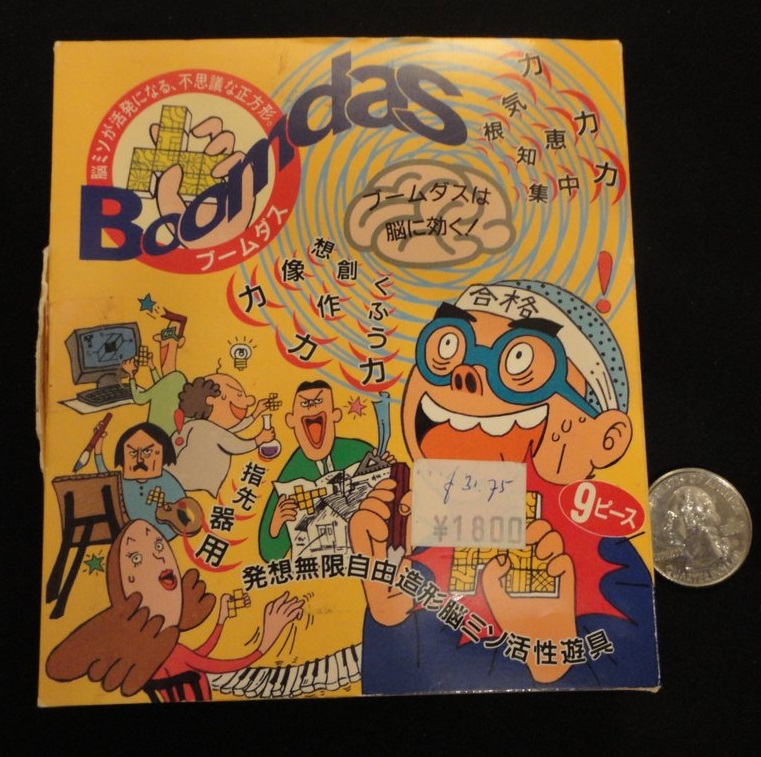
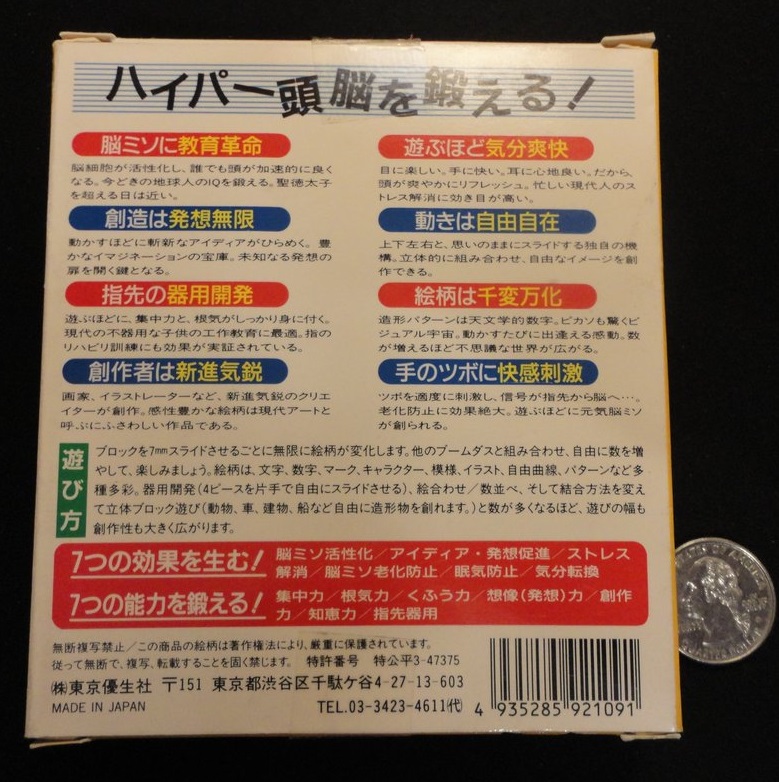
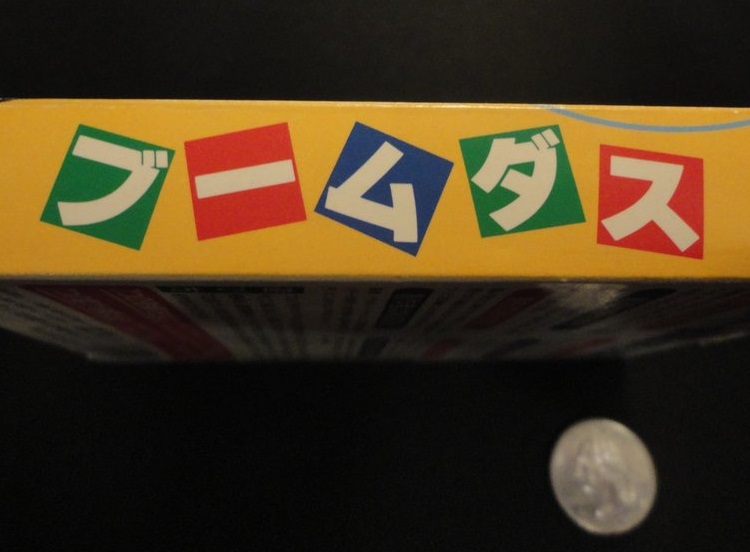
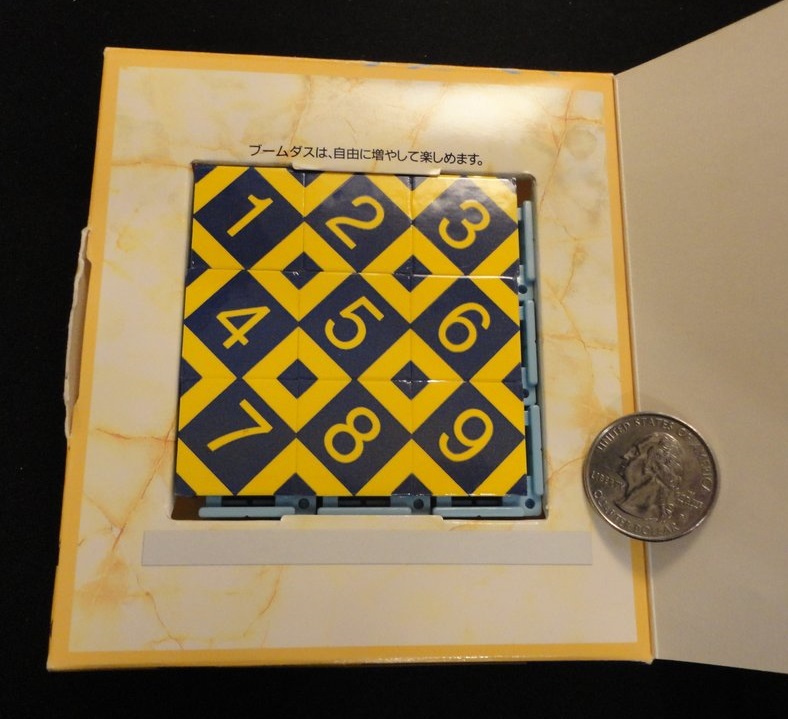
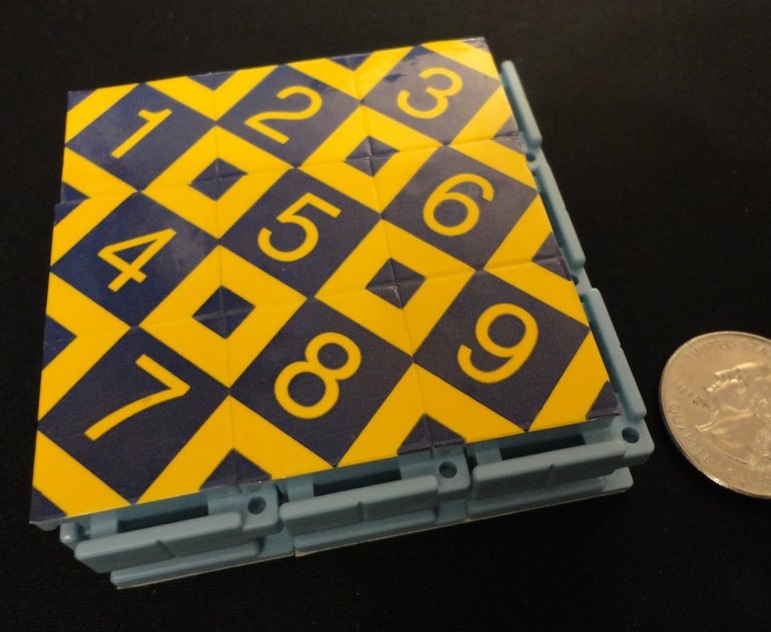
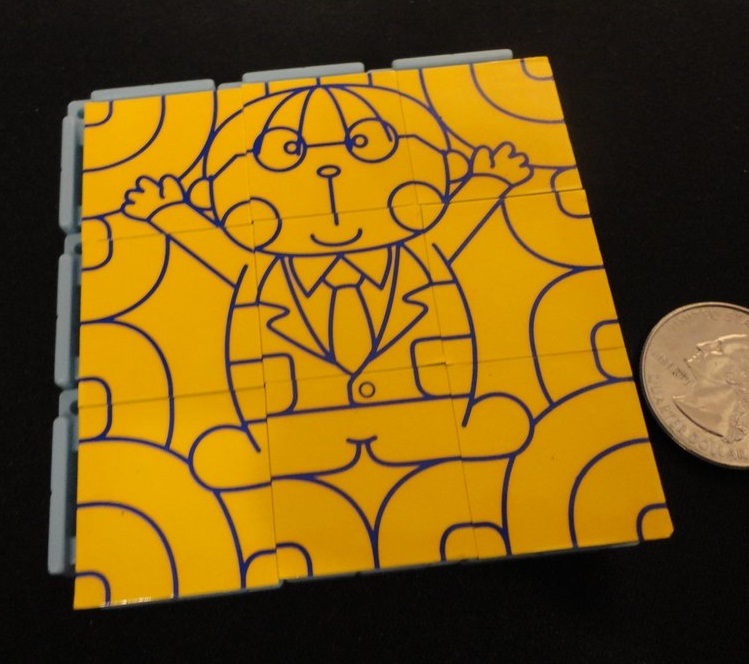
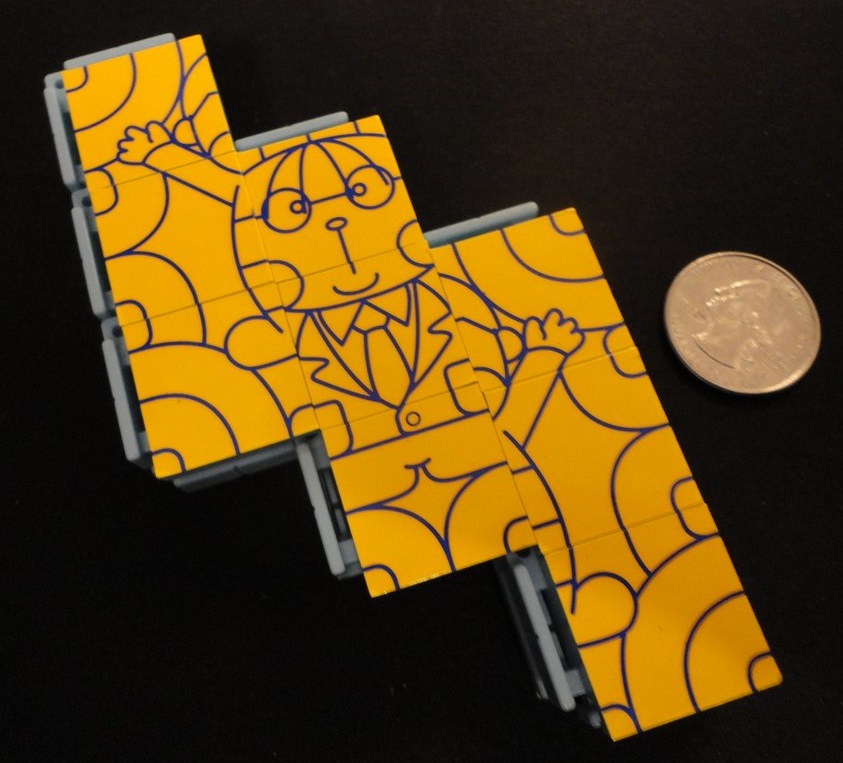

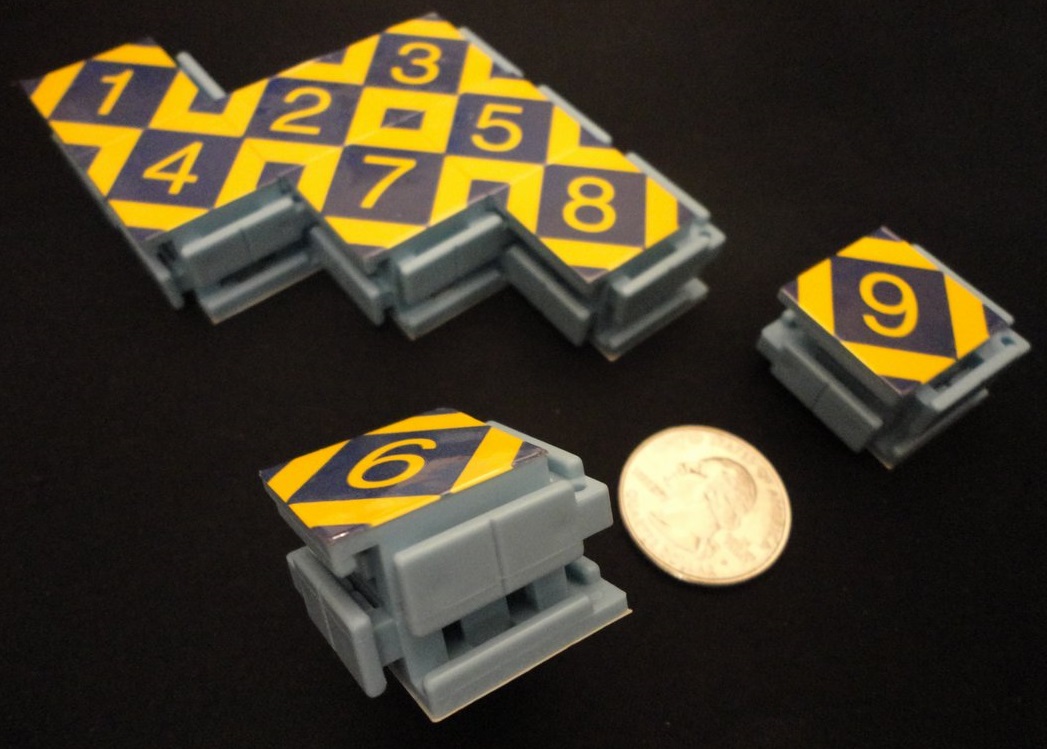

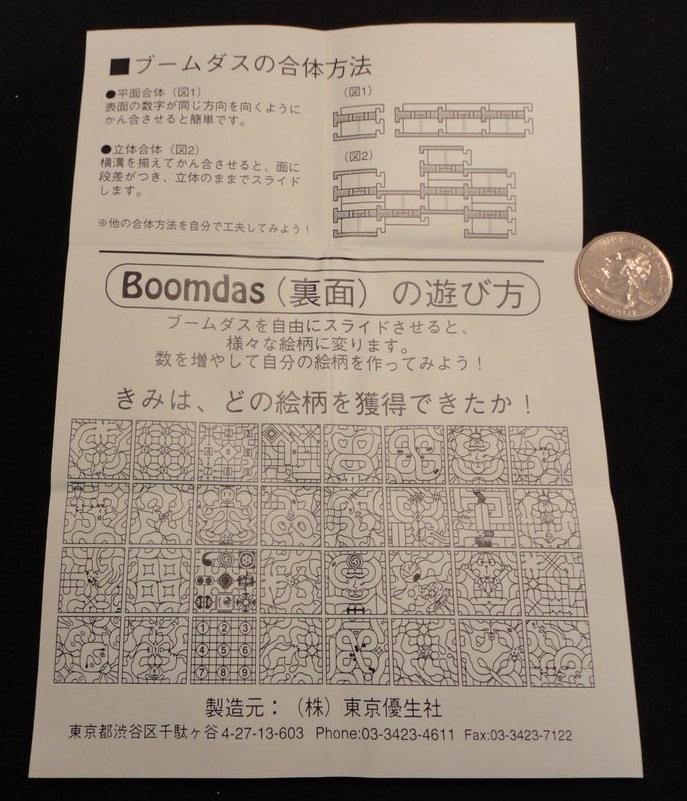
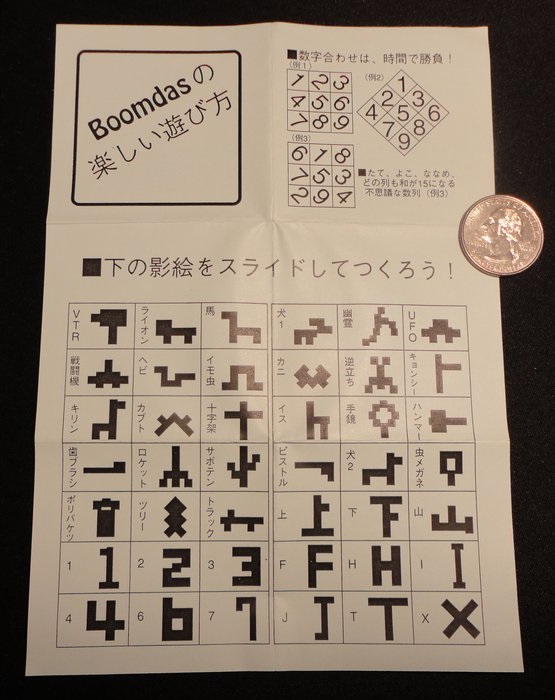
|
||

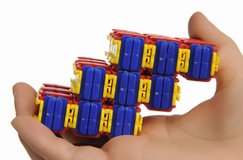
A set of Bishop Cubes. Their website, bishopcubes.com, is defunct. |
||
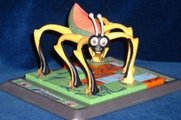 The Virus |

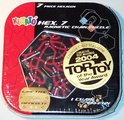 Kinato Hex Pro (Warning: website requires Chinese character set) and Kinato Hex 7 |
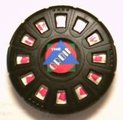 Orbik |
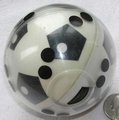 Kabalabda Ball See U.S. Design Patent D283523 awarded to Margit C. Balint in Apr. 1986. |

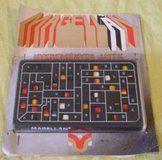
Magellan This turns out to be based on the Four-Color Map Theorem. The objective is to ensure that all adjacent areas contain different colors on their wheels, on both sides of the puzzle at once. I have a white version, and a black one in its package. |
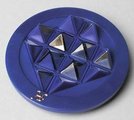 Labyrint |
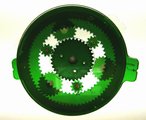 Gear Up - designed by Oskar van Deventer made by George Miller |
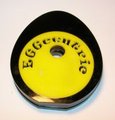 Eggcentric - designed by Oskar van Deventer |
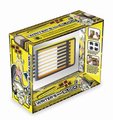

Writer's Block - designed by Oskar van Deventer, purchased from Bits and Pieces. Produced by RecentToys. Use an included "key" to find a set of moves that extends all the pens, allowing the box to be opened and the pens to be reset. Reminds me of "Lights Out." |
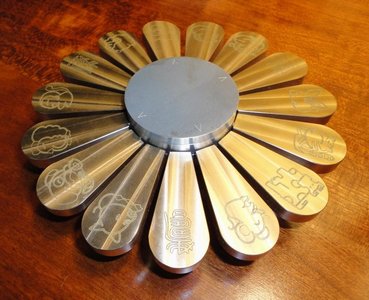

This is the Jugo Flower, made from metal, from William Strijbos. The Jugo Flower (aka Yugo Flower or Game Jugo) is one of the most rare twisty puzzles - I have read that only seven prototypes were made. You can see examples of the original plastic versions at Hendrik Haak's website. Wil has had the puzzle reproduced in metal. The fifteen petals can each be flipped over around the long axis. There are four marks on the top of the aluminum hub, and only those four petals positioned at the marks are able to flip, simultaneously. All the petals can be rotated around the hub, provided they are properly aligned (the mechanism is somewhat "catchy"), and a new set of four petals can be positioned at the marks. The goal is to scramble the petals, then restore them to all face-up. This puzzle is similar in principle to "Lights Out." |
||
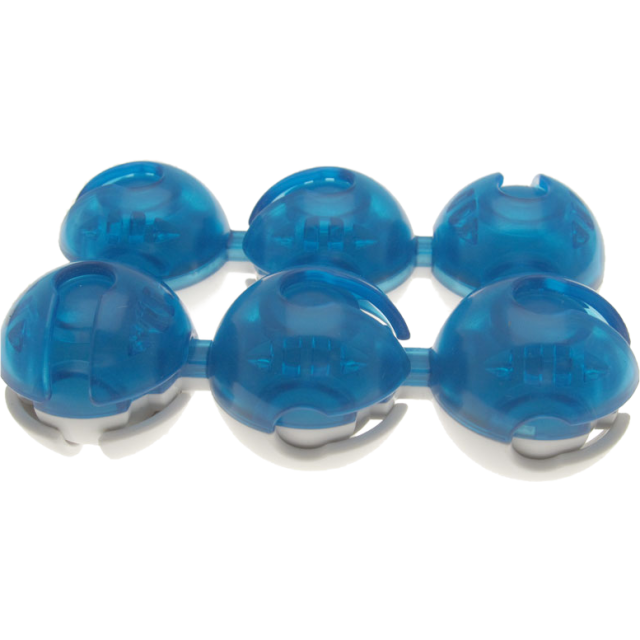
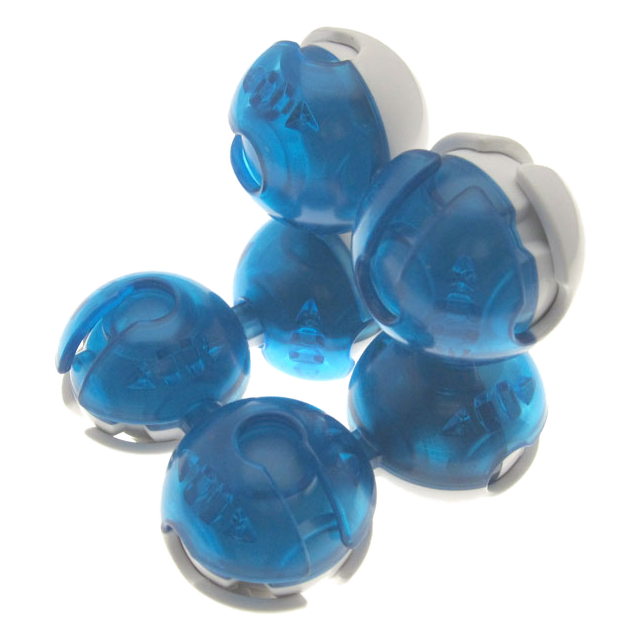
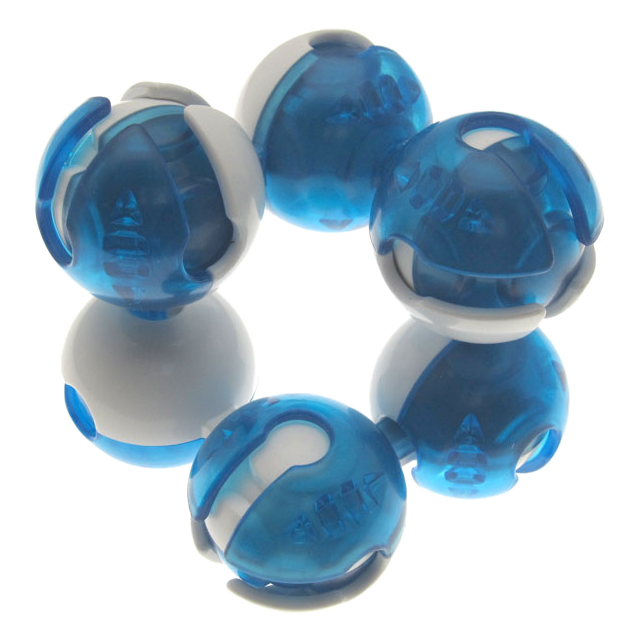
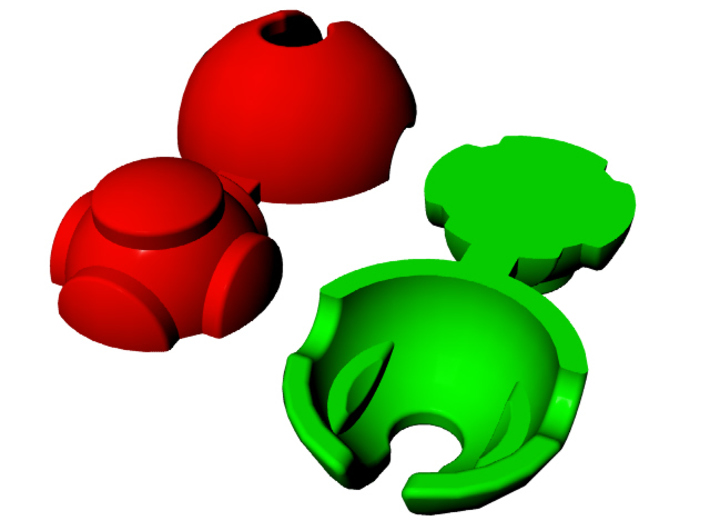
Bram's Magic - designed by Bram Cohen and Oskar van Deventer |
||
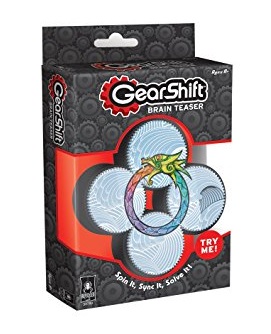
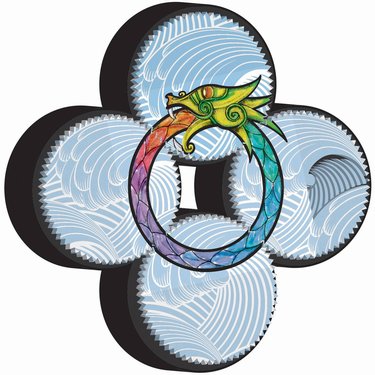
Gear Shift - Bepuzzled Purchased online off Amazon. |
||
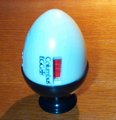
| Slider Position |
Cylinders which move |
|---|---|
| Down | 1, 4, 5 |
| Middle | 3, 5 |
| Up | 2, 4, 5 |
| Movable Gap, Rigid Frame | ||
|---|---|---|
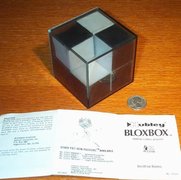
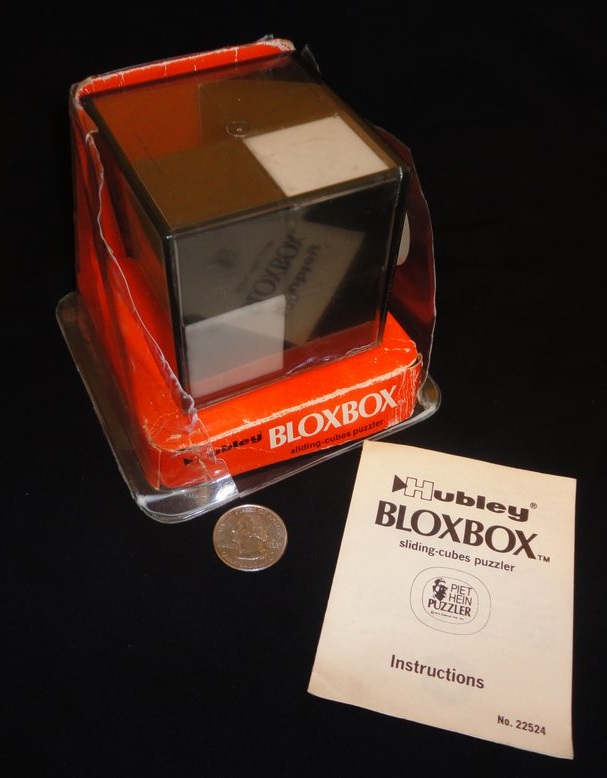
Bloxbox designed by Piet Hein and issued by Hubley in 1972. I found a second clean example, in its original (albeit damaged) package. The Bloxbox is notable since the design by Piet Hein is one of the first examples of sliding cubes in a cube. (The first U.S. patent, 416344, for a puzzle like this was awarded to Charles Rice in 1889.) |
||
 Pepsi Can Start with an idea as simple as mapping a 15-like puzzle onto a cylinder. This puzzle has advertised several popular drinks. |
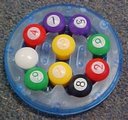 Billiards 9-Ball created by Joshua Frankel 3,628,800 positions Jaap's page |
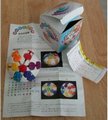 Massage Ball Otto Wu patent on 14 Feb 1995 6.1*1019 positions Jaap's page |
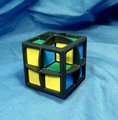
 Vadasz Cube (2x2x2 and 3x3x3 versions) (Also 4^3, which I don't have.) |
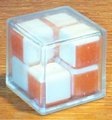 Minus Cube (Russian) |
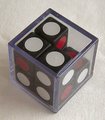 Varikon black |
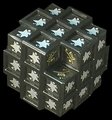 Peter's Black Hole 5.4*1027 positions Jaap's page Twistypuzzles.com has an article by Ad van der Schagt titled "The History of Sliding Block Puzzles Before Peter's Black Hole" (PDF). |
 Clark's Cube |
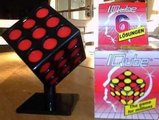 I-Qube |
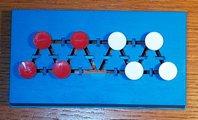 This is called the "Switch" or the "Knox Transposition Puzzle." It was issued by Mag-Nif in 1970 and also appears in their "Game Chest" set. The pegs slide in channels in the base. The object of the game is to exchange the sets of colored pegs in 24 moves or less. This actually borders on a non-jumping (exchange-only) type of Peg Solitaire. |
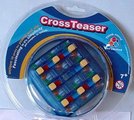 Crossteaser 2.7*1011 positions [Crossteaser home page] |
|
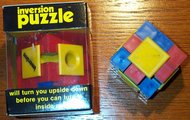 Inversion |

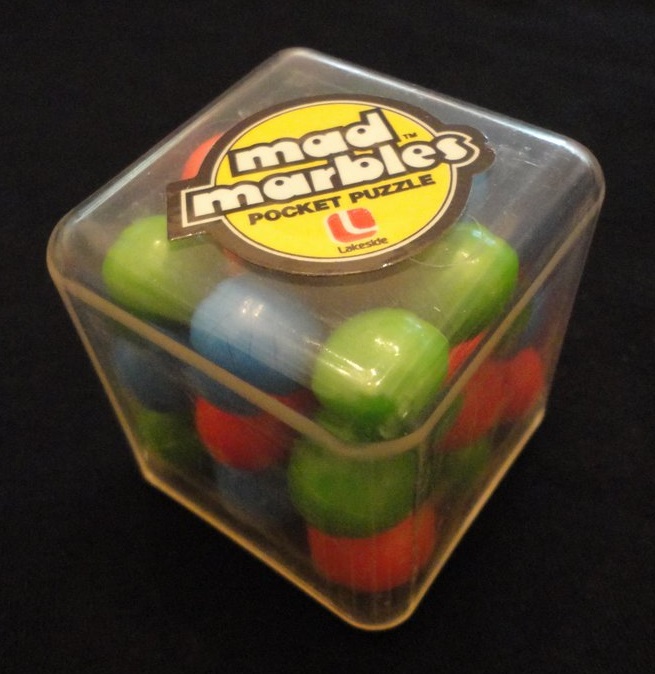
Mad Marbles by Lakeside (2 instances) |
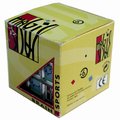
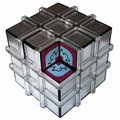 Magic Jack |
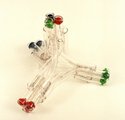 Tumbler - van Deventer |
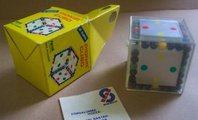 Pionir Cube |
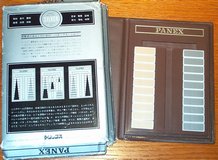 Panex Panex Puzzle resources page at Baxterweb Play a level-4 version online at cheesygames.com. |

A cross between the Pionir Cube and Munroe's Marbles, from China. |
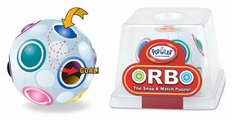
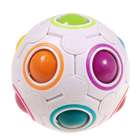
Orbo, by Popular Playthings; and an Asian clone - the Magic Rainbow Ball by Yong Jun |

Rainbow Black Hole |
 ? (Hungarian barrel) |


Diamond Bob's Billiards Eight Ball, and Diamond Bob's Diamond 8 |
 Rubik's Brain Racker |
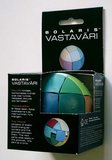
Bolaris Designed by Hannu Hjerppe of Finland - website at www.bolaris.fi. Purchased at IPP28 in Prague. |
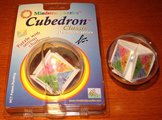
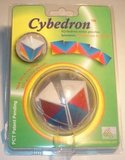
Cubedron and Cybedron Pantazis Houlis at Mindstrat Puzzles has invented a series of what he calls "Gravity Puzzles." These are edge-matching puzzles encloszed in transparent spheres, where the pieces must be tilted into position so that patterns along the edges match, and a piece flips as it moves from one position to another. |
|
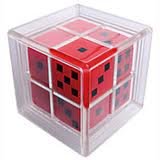
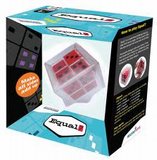
Equal-7 - issued by Recent Toys Invented by Vladimir Krasnoukhov Tilt the cube to slide the dice - four successively harder objectives - make the total on all sides: 10, 11, 12, 7. |
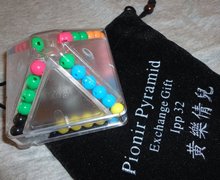
Pionir Pyramid, designed and exchanged at IPP32 by Roxanne Wong; made by Mf8 |

A vintage sliding piece puzzle in the shape of a bottle of Glenlivet Scotch. |
| Movable Gap, Movable Frame | ||
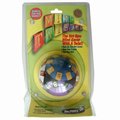 Mind Twister aka Wisdom Ball Yang Ju-Hsun 1 June 1993 1.7*1075 positions Jaap's page |
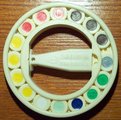
 Saturn - LD Belgium white and black versions |
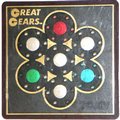 Tomy Great Gears 1.46*1020 positions Jaap's page |
 This is called Entrapment. There are also some newer "clones" available. The clear plastic on the old ones is yellowed with age. |
 Atomic Chaos Christoph Hausammann 2.1*1012 positions Jaap's page |
 Pakovalec aka Xylinder 1.3*1010 positions Jaap's page |
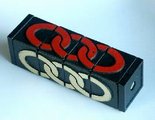
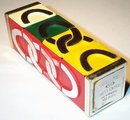 Missing Link and the rarer Limited Edition Marvin Glass & Associates 8.2*1010 positions |
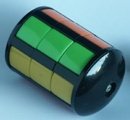

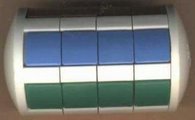 Whip-it 5.7*108 positions (for the 3) Jaap's page |
 Bola RUVI (Whip-it Ball) |
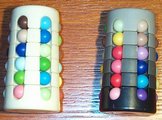 Ivory Tower and Babylon Tower both 6 rows x 6 cols 1.9*1040 positions Jaap's page |



 Varikon 4x4, 5x4 and 7x7 1.4*1014 positions Jaap's page |

 Backspin and a clone by Jaru Ferdinand Lammertink 6.4*1028 positions Jaap's page |

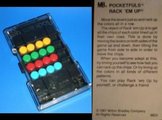
Tomy and Milton Bradley Rack 'Em Up Mizunuma Masanori and Watanabe Hiroyuki 1984 6.3*107 positions |
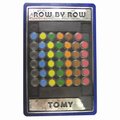

Tomy Row By Row Mizunuma Masanori and Watanabe Hiroyuki 13 Nov 1984 2.8*1031 positions Jaap's page |
 SpongeBob Puzzlepants 10,080 positions |
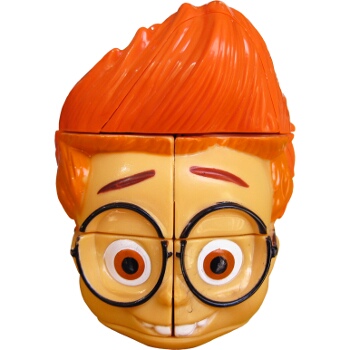
Sherman head - McDonalds premium |
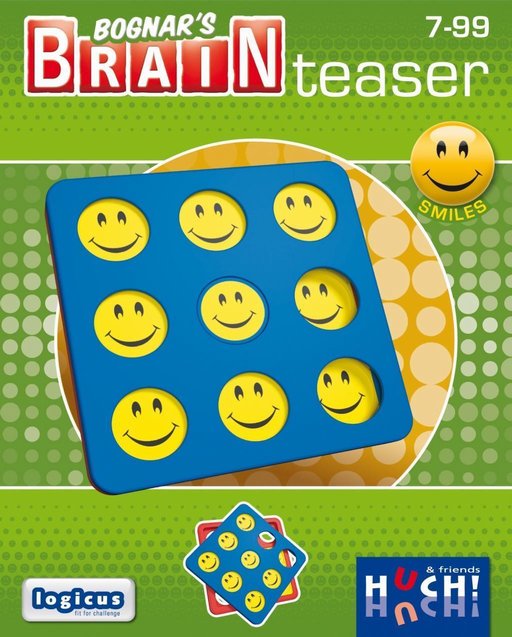
Bognar's Brainteaser Smile produced by Huch! |
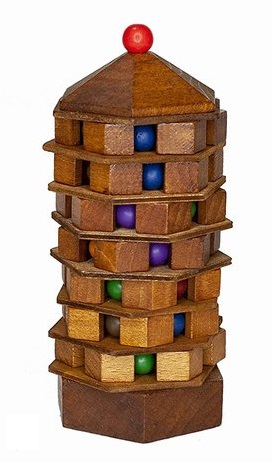
Aztec Ghost Tower - True Genius |
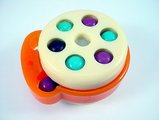
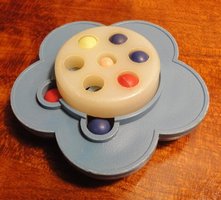
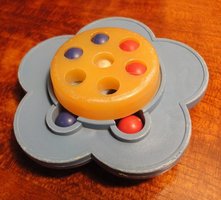
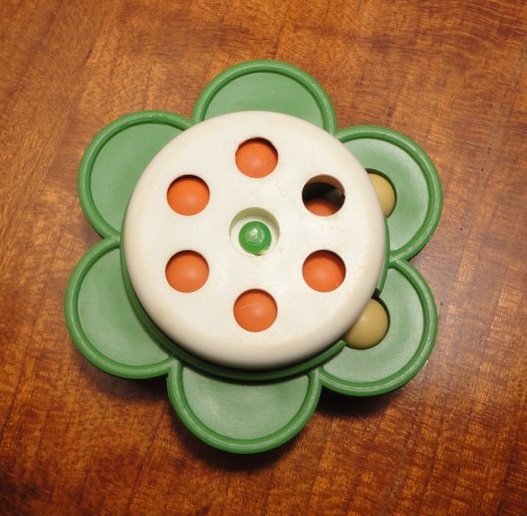
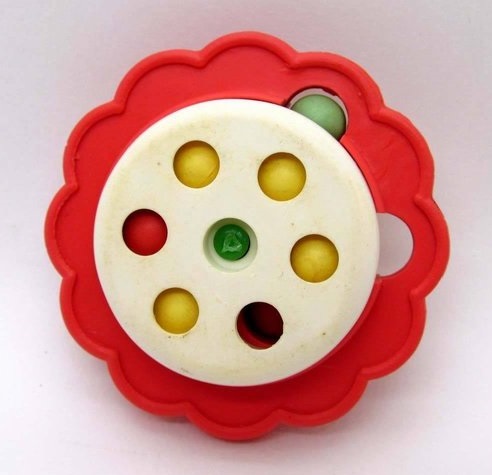
Russian Festival Flower A vintage 3D sliding puzzle I have examples of the 1-petal, 5-petal, 6-petal, and 12-petal versions. |
||
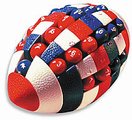 Touchdown |
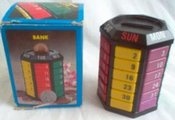 Calendar/Bank |
 Heartache - Kohner |
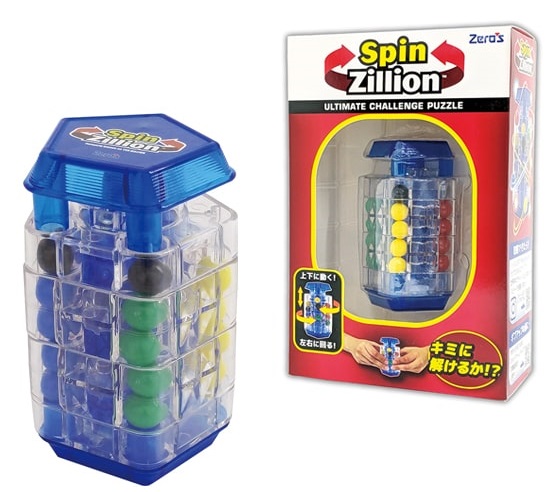
Spinzillion - like the classic Ten Billion Barrel |
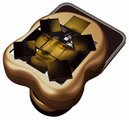

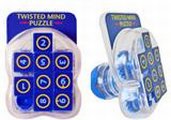
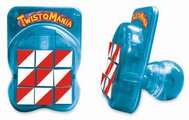
Da Vinci's Mona Lisa Codebreaker, Twisted Mind - another version, using numbers, and with a transparent case, and Twist O Mania |
|
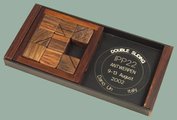 Double Sliding - Dario Uri |
Here are three different 3-D sliding piece puzzles by
Doug Engel:
Blocked Barrel 15, Barrel Slide 121, and Barrel Shuttle 11.
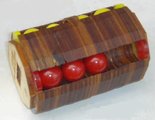
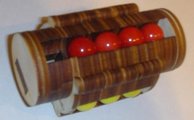

|
|
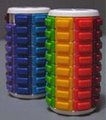

The Mini and Braille Eni Puzzles |
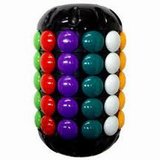
Capzule |
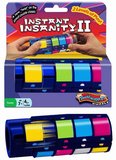
Instant Insanity II - by Winning Moves. This reminds me of the Pakovalec (aka Xylinder). |
| No Gap, Rigid Frame (Interlocking Orbits) | ||
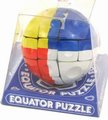
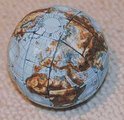 Equator, and Hungarian Globe 1.1*1025 positions Jaap's page |
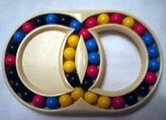
Hungarian Rings Endre Pap 7.5*1019 positions Jaap's page |
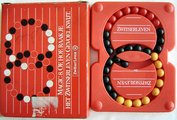 Magic 8 |

Race War Puzzle Between Gold & Silver - a vintage sliding piece puzzle of the "No Gap, Rigid Frame (Interlocking Orbits)" type. See U.S. Patent 507215 - Churchill 1893. The "war between gold and silver" referred to here was a major political issue regarding currency in late 19th-century America. See the Wikipedia article on Free Silver. (Another puzzle named after the same issue is the "16-to-1" shuttle maze.) I found only the board - no pieces (the patent shows 22 pieces in each ring, with two shared between the rings at the crossing points), but I had some time ago saved internet photos showing a cover and some pieces...
|
||
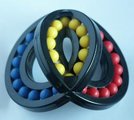 Rubik's Rings 1.9*1014 positions Jaap's page a source |
 Circle Puzzle 369,600 [Jaap's page] |
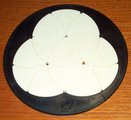 Rotascope Raoul Henrique Raba 1982 9.1*107 positions I obtained this Rotascope which is a souvenir of the sixth IPP at Jerry Slocum's house. The front contains invitation text and Jerry's home address and phone number, which I don't want to display here. This is a picture of the back - not very puzzling without a pattern to scramble. |
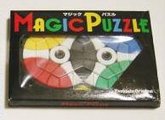
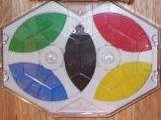
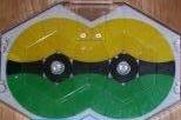
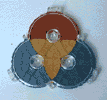


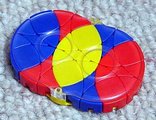
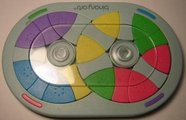
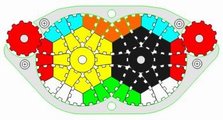
Tsukuda Magic Puzzle (Turnstile) Douglas Engel 6.3*109 positions Jaap's page |
||
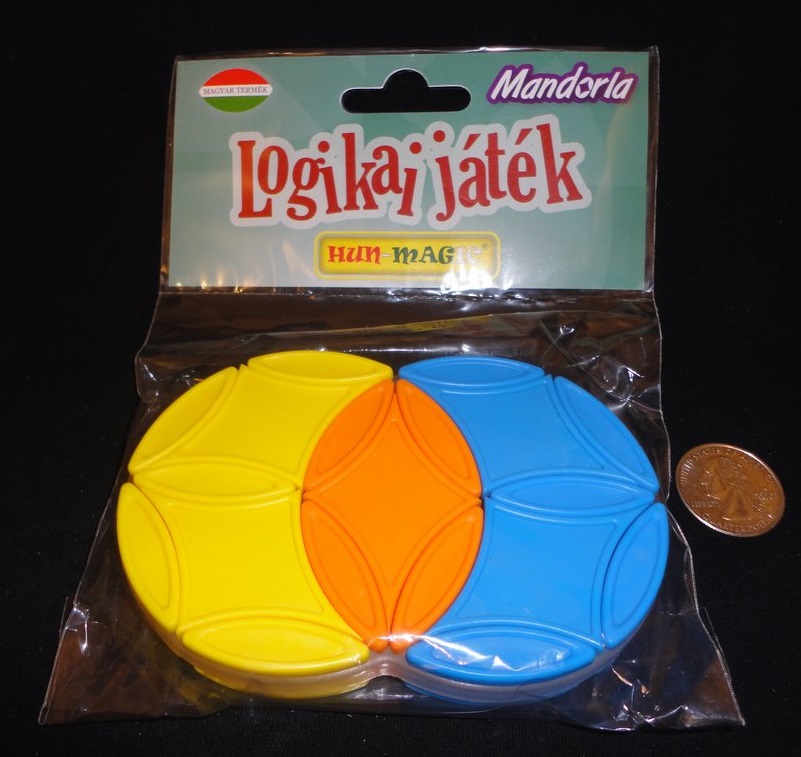
Mandorla |
||
 Lotica |
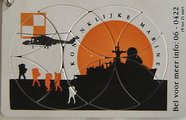 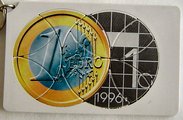 Turn Push |
 Whirligig |
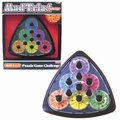 Mad Triad 3.1*1045 (symbols matter) Jaap's Page |
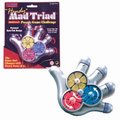 Handy Mad Triad 8.3*1023 positions Jaap's page |
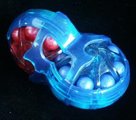 Rubik's Shells 4.7*1014 positions Jaap's page |
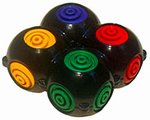 Cmetrick Too There are colored disks riding in "craters" in spheres embedded in the frame. The spheres rotate and can exchange disks. |
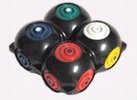 Cmetrick Too Hard In this more difficult version, the centers of the disks are colored, too. |
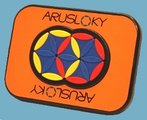
The Arusloky Puzzle |
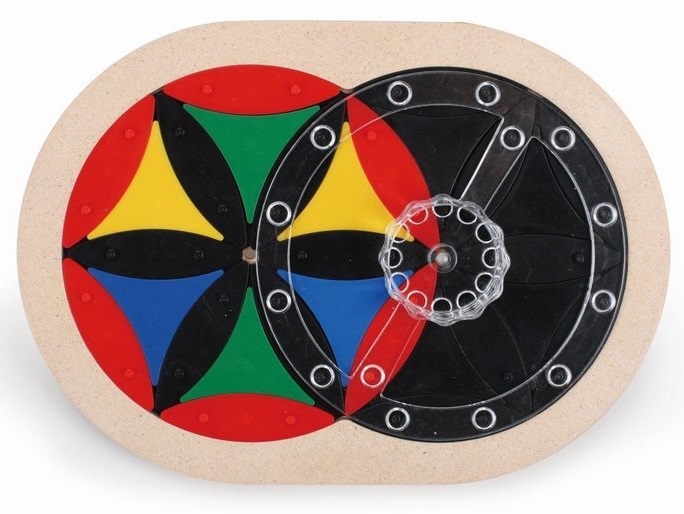

Twiddler Double Dilemma - designed by Wilfried Braun 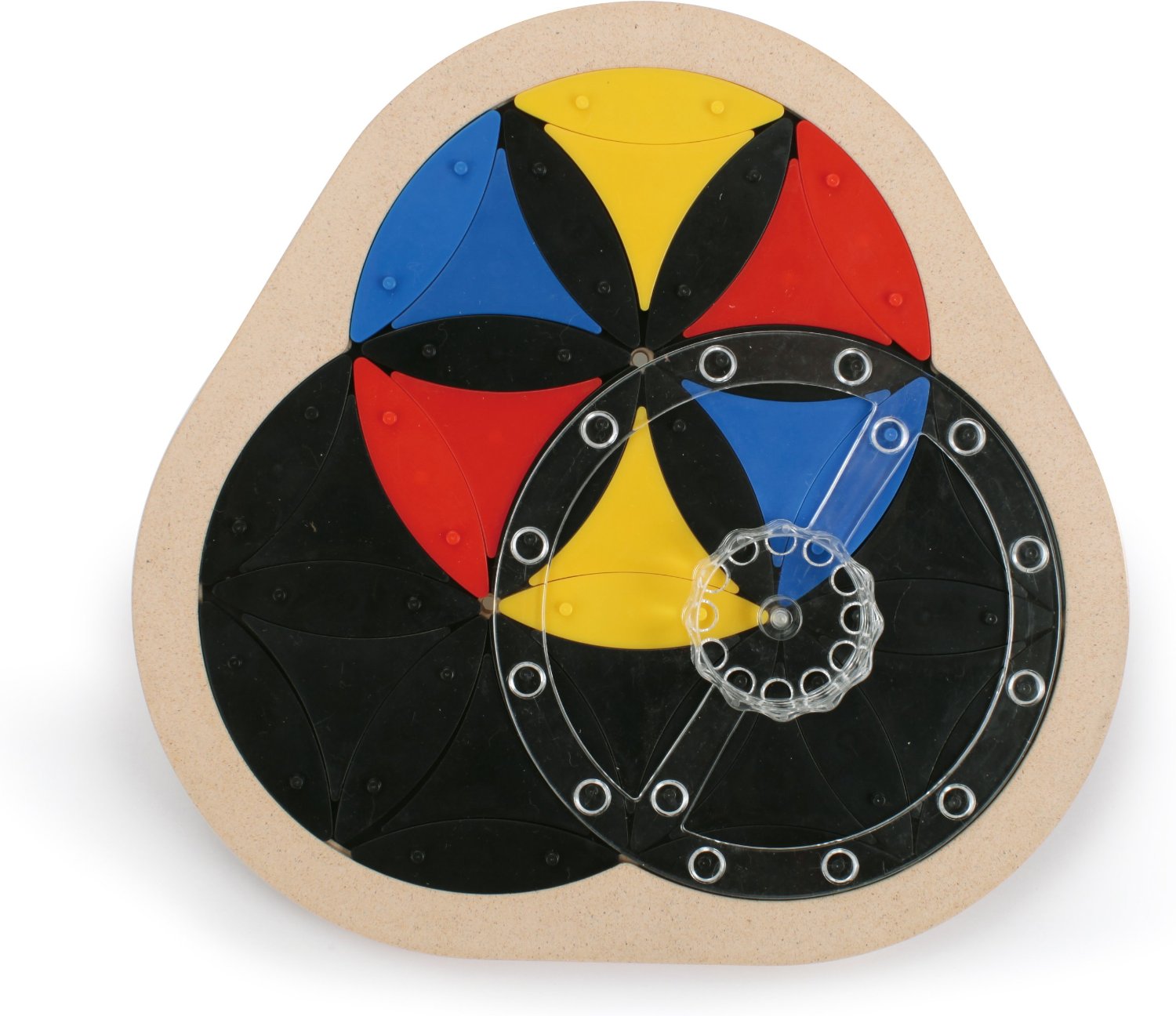
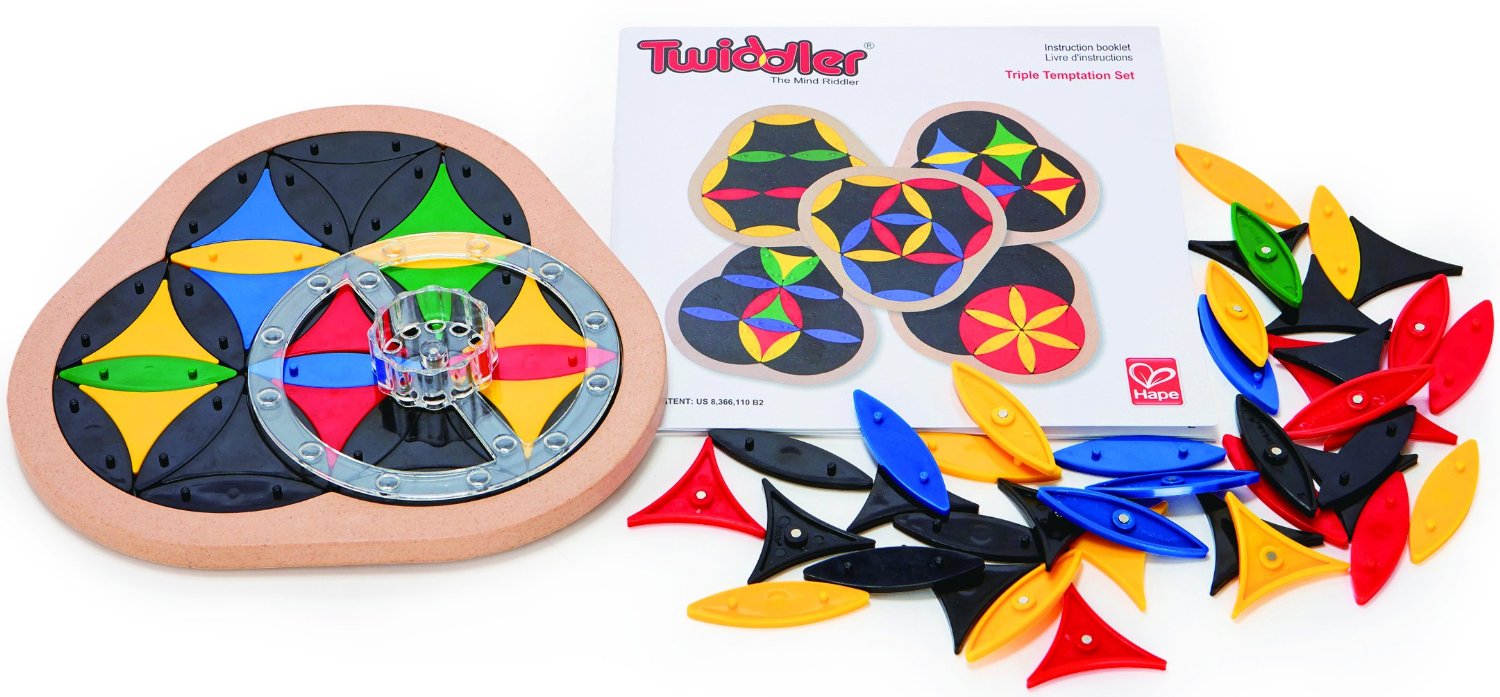
Twiddler Triple Temptation |
||
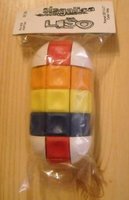
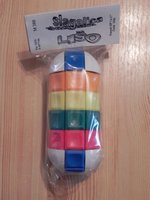
3-layer and 4-layer Leesho (Liso) |

Hungarian Olympic Rings |
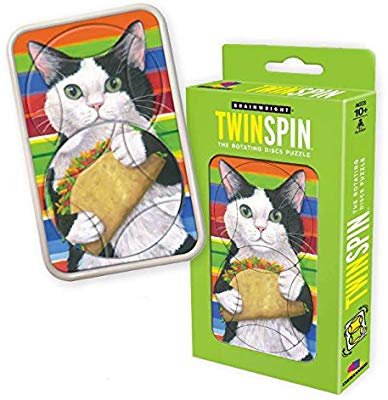
Twinspin - Brainwright Thanks, Alison! |
 This puzzle is called
Moeraki, a name chosen since the shape of its pieces is reminiscent of a formation of
spherical boulders found in New Zealand.
It was designed by Kasimir Landowski and won an IENA gold medal at the 2008 Nuremberg Trade Fair.
You can read about the history of the puzzles and order them online at the
Casland Games website.
Various virtual examples are available at the website and each physical puzzle includes a disk offering some virtual puzzles.
Moeraki is a type of sliding piece puzzle, which I would categorize as of the
No Gap, Rigid Frame (Interlocking Orbits) variety.
Moeraki No. 3, the one I have, has a square tray and two interlocking oval tracks of pieces in five colors.
Moeraki No. 4 has a triangular tray and three interlocking circular tracks of pieces in four colors.
I received my No. 3 as a gift at IPP32, on the condition that I review it.
Normally, I don't blog or review puzzles per se, but I accepted it since I had planned on buying one anyway.
A policy of mine in general is to try not to say anything if I don't have something nice to say (in print, at least).
I don't always succeed in keeping to my policy, but happily I will be in no danger here since I honestly like the Moeraki puzzle.
The concept of a set of markers riding in interlocking
circular or oval tracks, which can be mixed by alternate rotations of the
groups of pieces in the different tracks, is certainly not new.
An example called "Race War Puzzle Between Gold & Silver" designed
by William Churchill
was awarded U.S. patent
507215
in October of 1893.
More recent examples include the Hungarian Rings puzzle by Endre Pap et al
(EP0050755)
, and the Magic 8.
On the Casland website it is mentioned that Ivan Moskovich also received a patent for a similar idea in 1979
(see U.S. patent
4509756),
and is now collaborating with Landowski.
Original concept or not, the Moeraki puzzle stands out as a very nice implementation and is probably among the most user-friendly of
this class of puzzles in my collection.
You can find analysis and solutions of the puzzles at
Jaap's Puzzle Page.
Jaap gives the total number of possible arrangements for No. 3 as
3,969,069,923,590,200, which, surprisingly, is still larger than the U.S. national debt.
Jaap notes that any two diametrically opposed beads will always remain diametrically opposed no matter what moves you make,
which I find non-obvious on initial inspection, and fascinating.
Dieter Gebhardt has also published some analysis about this type of puzzle.
Dieter's article "Rotational Puzzles with Two Tracks and Two Intersections"
can be found in the March 2002 issue #57 of the journal of
Cubism For Fun (CFF).
Dieter's article supplies a notation convention and a general theoretical basis for deducing useful move sequences,
and would be of interest to
one attempting to gain a more than superficial understanding of such puzzles,
although it deals with types of only two intersections.
These puzzles may appear to be intrinsically simpler than puzzles such as Rubik's Cube and its ilk, and in truth it is possible to attack them without extensive knowledge or analysis of solution procedures or "operators."
And, as with twisty puzzles in general, the large number of possible states is not a reliable indicator of difficulty.
However, it should be noted that some piece swaps may require upwards of 100 moves to solve,
so patience and perseverance will definitely be assets to the recipient of these puzzles.
At his website,
Diniar Namdarian gives instructions for accomplishing a last swap of two pieces.
When I played with mine, I found the very first challenge to be simply opening the package!
The puzzle ships in a cardboard box, which contains a clear plastic case for the puzzle, secured by four clips.
A clip can be removed by prying its rounded end away from the case, but the force required makes one leery of breaking something.
The puzzle is 135mm square and about 15mm thick.
Production values are high - the plastic is good quality and brightly colored.
A thoughtful touch is a removable block on the perimeter of the base, which will allow you to extract the sliding pieces from the puzzle in order to effect a brute-force restoration of the solved state, should you deem that necessary.
The case also holds a CD-ROM containing additional puzzle software.
For me, assuming one enjoys this class of puzzle, two criteria determine whether a puzzle of this type succeeds or
fails as a mechanical puzzle worth playing.
First, do the pieces remain securely in their tracks?
I have had copies of Hungarian-Rings style puzzles where the beads just fell out.
I can report that the puzzle is well-engineered and well-built, and the Moeraki beads will not come out by accident.
Second, is it easy to rotate the pieces along their tracks, preferably while holding the puzzle in two
hands and using only one's thumbs to slide the pieces?
Here I can also give the Moeraki a good grade.
As with all interlocking-orbit type puzzles, the orbits must be properly aligned so that the pieces do not catch and impede movement.
Out of the box, the movement of the Moeraki beads is somewhat stiff, but a benefit is that the tracks of beads do not tend to
overshoot on a move, and a simple tilt of the puzzle will not cause unwanted movement.
I gave it a shot of CRC Industrial Food-Grade Silicone spray and now the action is silky smooth!
I think the Moeraki would make good Christmas presents for the puzzler in your life (or for yourself).
See what other puzzlers have had to say about the Moeraki puzzles
here,
here,
and
here.
This puzzle is called
Moeraki, a name chosen since the shape of its pieces is reminiscent of a formation of
spherical boulders found in New Zealand.
It was designed by Kasimir Landowski and won an IENA gold medal at the 2008 Nuremberg Trade Fair.
You can read about the history of the puzzles and order them online at the
Casland Games website.
Various virtual examples are available at the website and each physical puzzle includes a disk offering some virtual puzzles.
Moeraki is a type of sliding piece puzzle, which I would categorize as of the
No Gap, Rigid Frame (Interlocking Orbits) variety.
Moeraki No. 3, the one I have, has a square tray and two interlocking oval tracks of pieces in five colors.
Moeraki No. 4 has a triangular tray and three interlocking circular tracks of pieces in four colors.
I received my No. 3 as a gift at IPP32, on the condition that I review it.
Normally, I don't blog or review puzzles per se, but I accepted it since I had planned on buying one anyway.
A policy of mine in general is to try not to say anything if I don't have something nice to say (in print, at least).
I don't always succeed in keeping to my policy, but happily I will be in no danger here since I honestly like the Moeraki puzzle.
The concept of a set of markers riding in interlocking
circular or oval tracks, which can be mixed by alternate rotations of the
groups of pieces in the different tracks, is certainly not new.
An example called "Race War Puzzle Between Gold & Silver" designed
by William Churchill
was awarded U.S. patent
507215
in October of 1893.
More recent examples include the Hungarian Rings puzzle by Endre Pap et al
(EP0050755)
, and the Magic 8.
On the Casland website it is mentioned that Ivan Moskovich also received a patent for a similar idea in 1979
(see U.S. patent
4509756),
and is now collaborating with Landowski.
Original concept or not, the Moeraki puzzle stands out as a very nice implementation and is probably among the most user-friendly of
this class of puzzles in my collection.
You can find analysis and solutions of the puzzles at
Jaap's Puzzle Page.
Jaap gives the total number of possible arrangements for No. 3 as
3,969,069,923,590,200, which, surprisingly, is still larger than the U.S. national debt.
Jaap notes that any two diametrically opposed beads will always remain diametrically opposed no matter what moves you make,
which I find non-obvious on initial inspection, and fascinating.
Dieter Gebhardt has also published some analysis about this type of puzzle.
Dieter's article "Rotational Puzzles with Two Tracks and Two Intersections"
can be found in the March 2002 issue #57 of the journal of
Cubism For Fun (CFF).
Dieter's article supplies a notation convention and a general theoretical basis for deducing useful move sequences,
and would be of interest to
one attempting to gain a more than superficial understanding of such puzzles,
although it deals with types of only two intersections.
These puzzles may appear to be intrinsically simpler than puzzles such as Rubik's Cube and its ilk, and in truth it is possible to attack them without extensive knowledge or analysis of solution procedures or "operators."
And, as with twisty puzzles in general, the large number of possible states is not a reliable indicator of difficulty.
However, it should be noted that some piece swaps may require upwards of 100 moves to solve,
so patience and perseverance will definitely be assets to the recipient of these puzzles.
At his website,
Diniar Namdarian gives instructions for accomplishing a last swap of two pieces.
When I played with mine, I found the very first challenge to be simply opening the package!
The puzzle ships in a cardboard box, which contains a clear plastic case for the puzzle, secured by four clips.
A clip can be removed by prying its rounded end away from the case, but the force required makes one leery of breaking something.
The puzzle is 135mm square and about 15mm thick.
Production values are high - the plastic is good quality and brightly colored.
A thoughtful touch is a removable block on the perimeter of the base, which will allow you to extract the sliding pieces from the puzzle in order to effect a brute-force restoration of the solved state, should you deem that necessary.
The case also holds a CD-ROM containing additional puzzle software.
For me, assuming one enjoys this class of puzzle, two criteria determine whether a puzzle of this type succeeds or
fails as a mechanical puzzle worth playing.
First, do the pieces remain securely in their tracks?
I have had copies of Hungarian-Rings style puzzles where the beads just fell out.
I can report that the puzzle is well-engineered and well-built, and the Moeraki beads will not come out by accident.
Second, is it easy to rotate the pieces along their tracks, preferably while holding the puzzle in two
hands and using only one's thumbs to slide the pieces?
Here I can also give the Moeraki a good grade.
As with all interlocking-orbit type puzzles, the orbits must be properly aligned so that the pieces do not catch and impede movement.
Out of the box, the movement of the Moeraki beads is somewhat stiff, but a benefit is that the tracks of beads do not tend to
overshoot on a move, and a simple tilt of the puzzle will not cause unwanted movement.
I gave it a shot of CRC Industrial Food-Grade Silicone spray and now the action is silky smooth!
I think the Moeraki would make good Christmas presents for the puzzler in your life (or for yourself).
See what other puzzlers have had to say about the Moeraki puzzles
here,
here,
and
here.
|
||
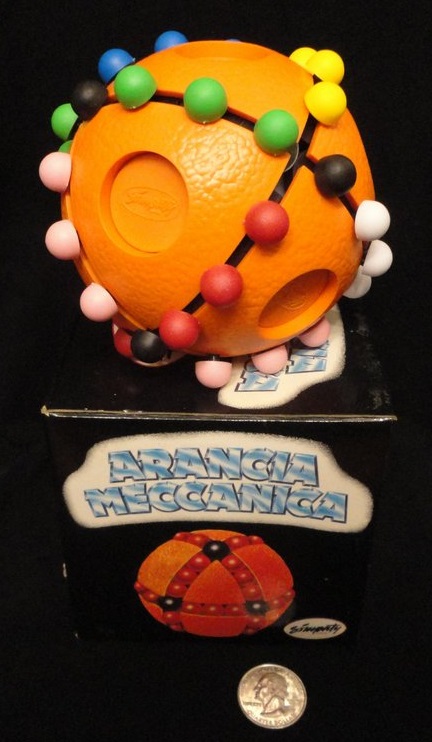
Arancia Meccanica - a vintage 3D sliding piece puzzle [T] |
||
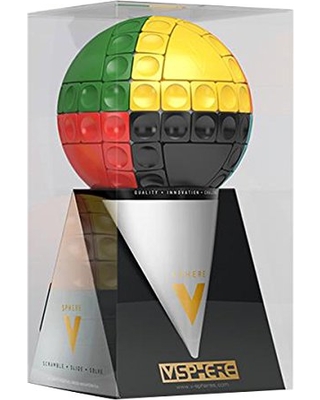
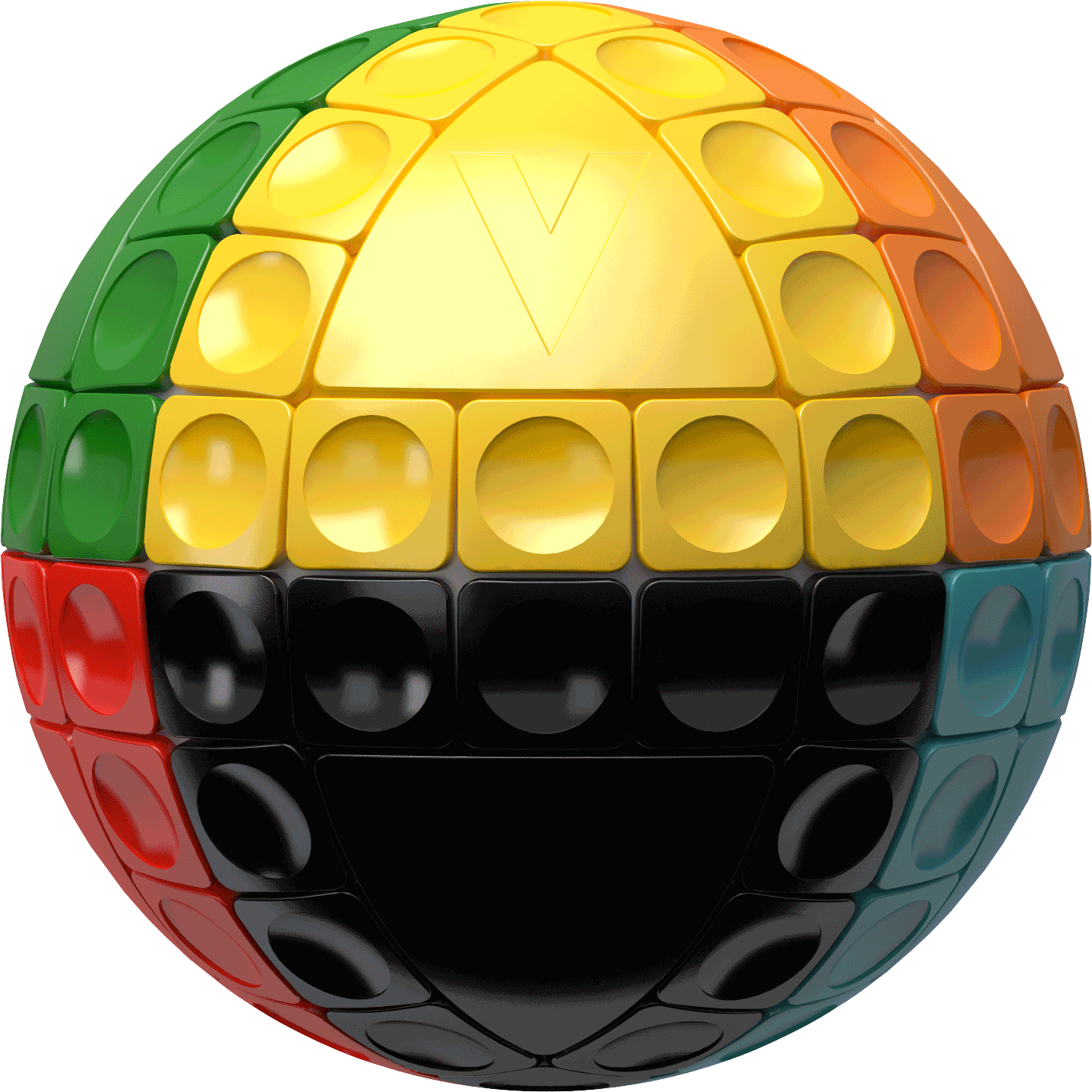
The V-Sphere was invented by George Xronopoulos and released in mid 2017. It is a sliding piece type puzzle encircled by three mutually orthogonal pairs of rings in which square sliding tiles ride, fitting the surface of the sphere. There are eight colors - each tile is molded of one color, and there are eight triangular sections fixed around the sphere between the rings. The colors of these triangular regions define the goal state - move the tiles so they surround their correspondingly colored triangle. In its default configuration the puzzle contains a single empty space - it is a member of the class I call "moving gap, rigid frame" or MGRF. However, one can obtain an extra (dark blue) tile and fill in this space - the puzzle then becomes a "no gap, rigid frame (interlocking orbits)" NGRF type - and most puzzlers agree this is the preferred configuration as it increases the difficulty. This latter category contains the spherical forebears the Equator, the Hungarian Globe, and the Arancia Meccanica - but each has only a single row of tiles in each orthogonal direction. Perhaps the earliest example of an interlocking orbits type puzzle - albeit non-spherical - is the "Race War Between Gold & Silver" puzzle of 1893. The V-Sphere is a nicely packaged, well-made and colorful example of an established puzzle category, and ups the complexity ante with its side-by-side rows of tiles. (This innovation is not unique, however, as a Russian puzzle dating from 1986 or earlier implemented dual rows of tiles - see this entry at the TwistyPuzzles Museum.) I find the selection of colors attractive, and the size and weight fit my hands well. The sliding action of the tiles is smooth, and the "clickiness" serves to prevent overshoots. The ability to easily convert it from a relatively easy MGRF to a more difficult NGRF type is an added bonus. According to sources, the puzzle was originally designed without the gap, but was released with the gap in order to reduce the difficulty level. Inserting the missing tile is simple, and the rotations of full rings of tiles works well. |
||
| No Gap, Movable Frame | ||
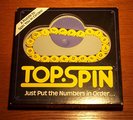 Topspin Ferdinand Lammertink 2.4*1018 positions Jaap's page |
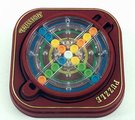
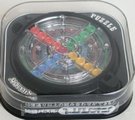 Trillion - red, black Gunpei Yokoi 1.0*109 positions Jaap's page |

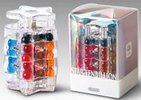 Nintendo Ten Billion Barrel and Club Nintendo Star Barrel Gunpei Yokoi 2.7*1014 positions Solution site here. |
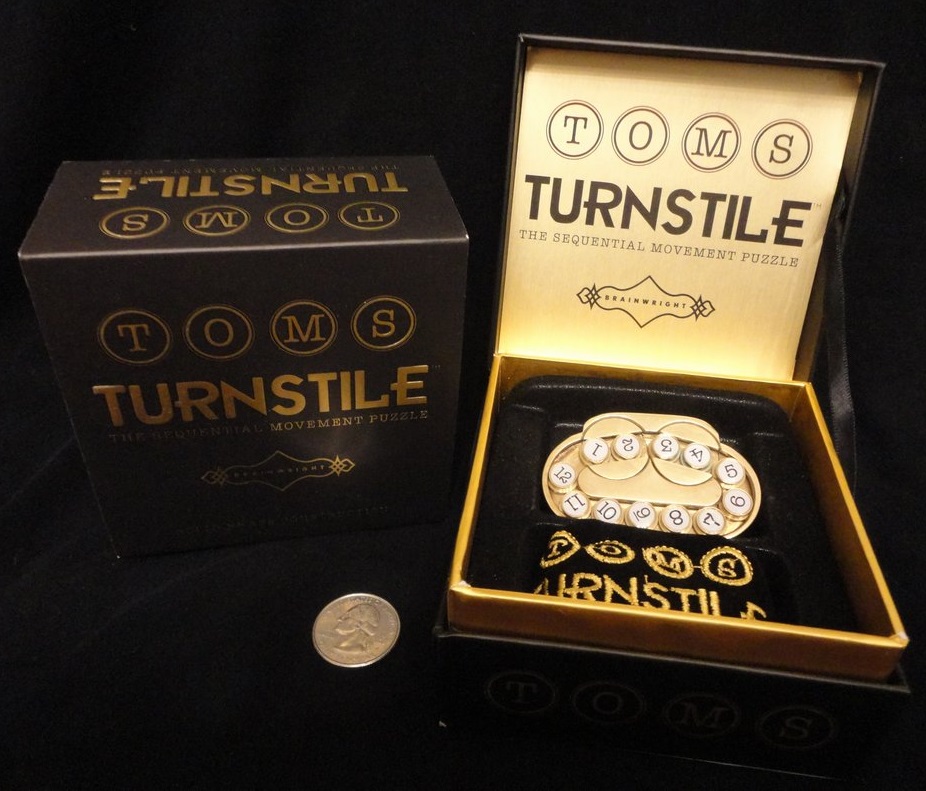
Tom's Turnstile - designed by Tom Cutrofello, issued by Brainwright A nice, substantial brass sliding-piece puzzle - I categorize as of the "No Gap, Movable Frame" type. Thanks, Alison! |
||
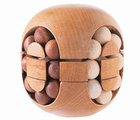 I have seen this design from several places. I believe it has been called "Sortospherical." |
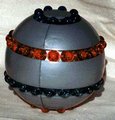 The Orb[-it] Christopher C. Wiggs and Christopher J. Taylor 7.4*1028 positions Jaap's page |
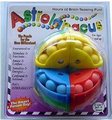 Astrolabacus John D. Harris Pat. 8 Jul 1997 3.6*1016 positions Jaap's page |
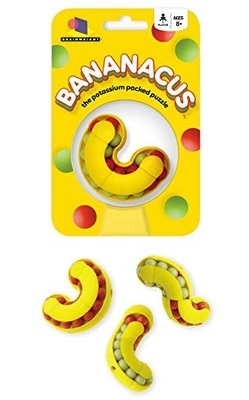
Bananacus - Brainwright Thanks, Alison! |
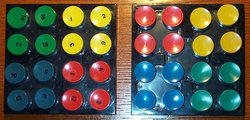
 Gripple Murray J. Gould, patented 5 April 1988 2.0*1013 positions Jaap's page |
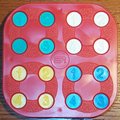 Russian Gripple |
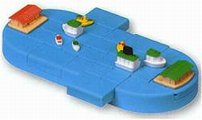 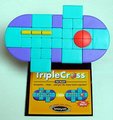
Port to Port Triple Cross Ferdinand Lammertink Pat. Aug 6 1996 5.9*109 positions Jaap's page |
||
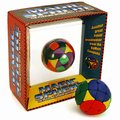 Magic Sphere |
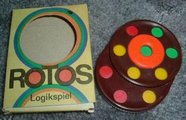 Rotos Jaap's page |
 Magic Cross (Zauberkreuz) |
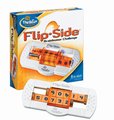 Flip Side - Thinkfun |
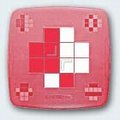 Swissmad 369,600 [Jaap's page] |
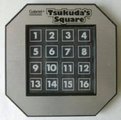

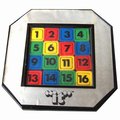
Tsukuda's Square / "it" |
 Rubik's Fifteen |

Binary Bisect 5 - Doug Engel |

Palette 7 - Doug Engel |
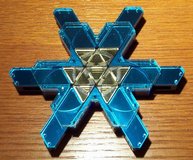
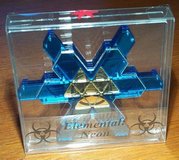
Elemental: Neon (aka Biohazard) #051, designed and made by David Litwin |
||
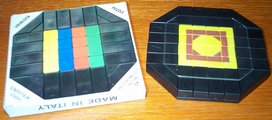
Uriblock aka Mixbox The above is a custom version purchased at IPP28 in Prague.
|
||
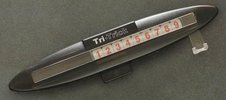
Tri-Trick |
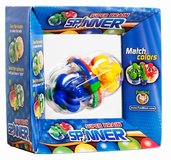
Super Brain Spinner, from FoxMind DieN Logical Toys |
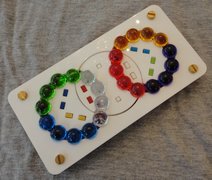 One Circle Two Circles, designed, made, and exchanged at IPP32 by Diniar Namdarian |
| Overlapping Plates | ||
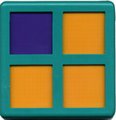 Mind Lock |
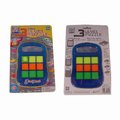 3-Level Puzzle Dollar Tree |
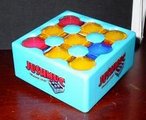 Jushbox |